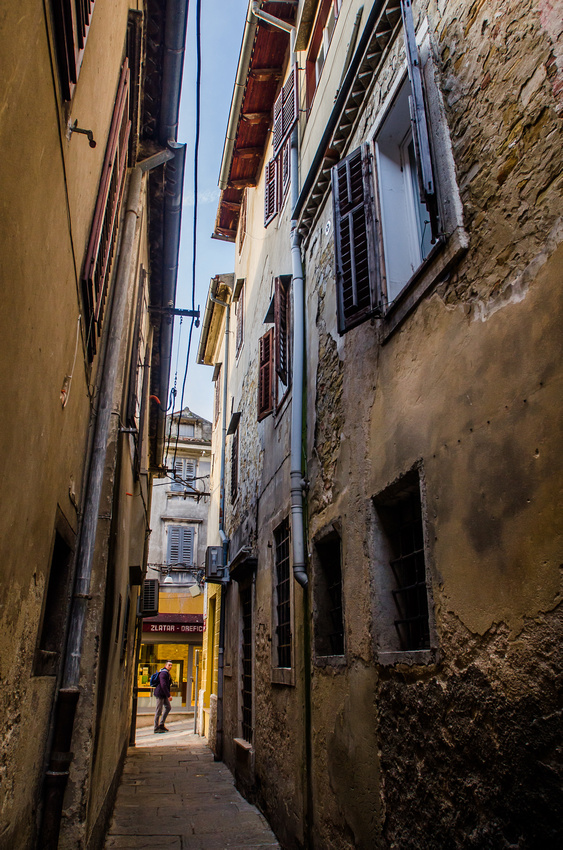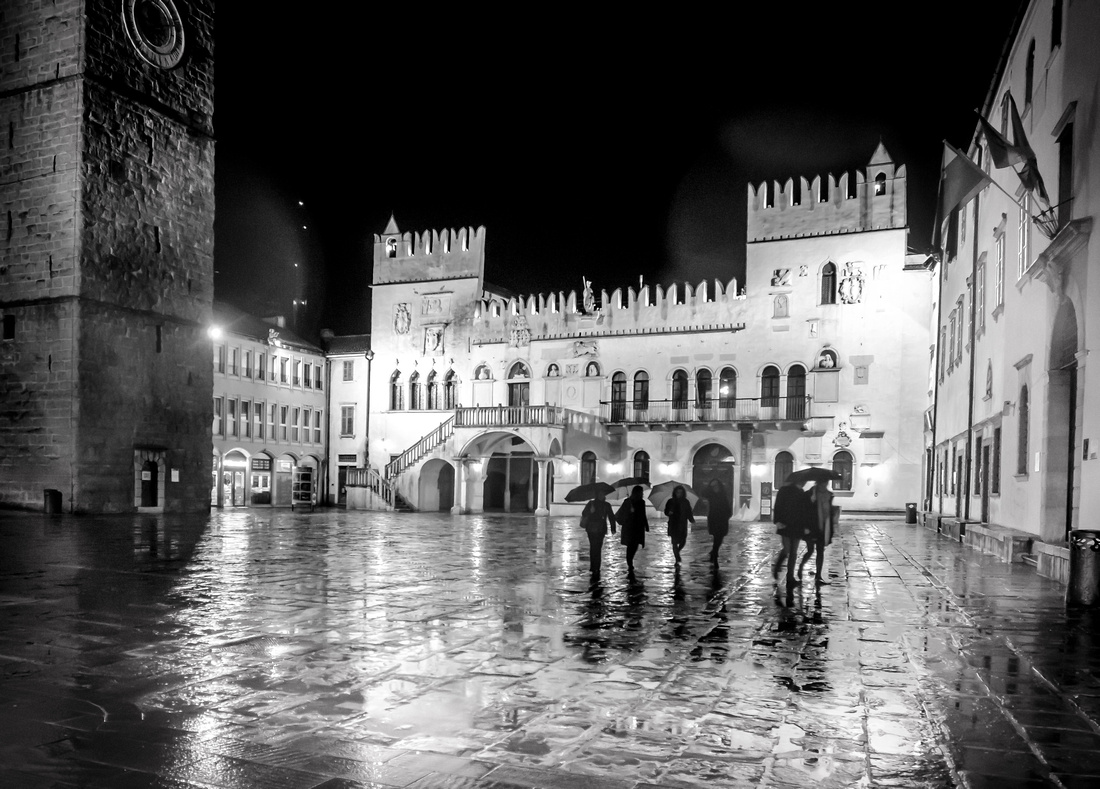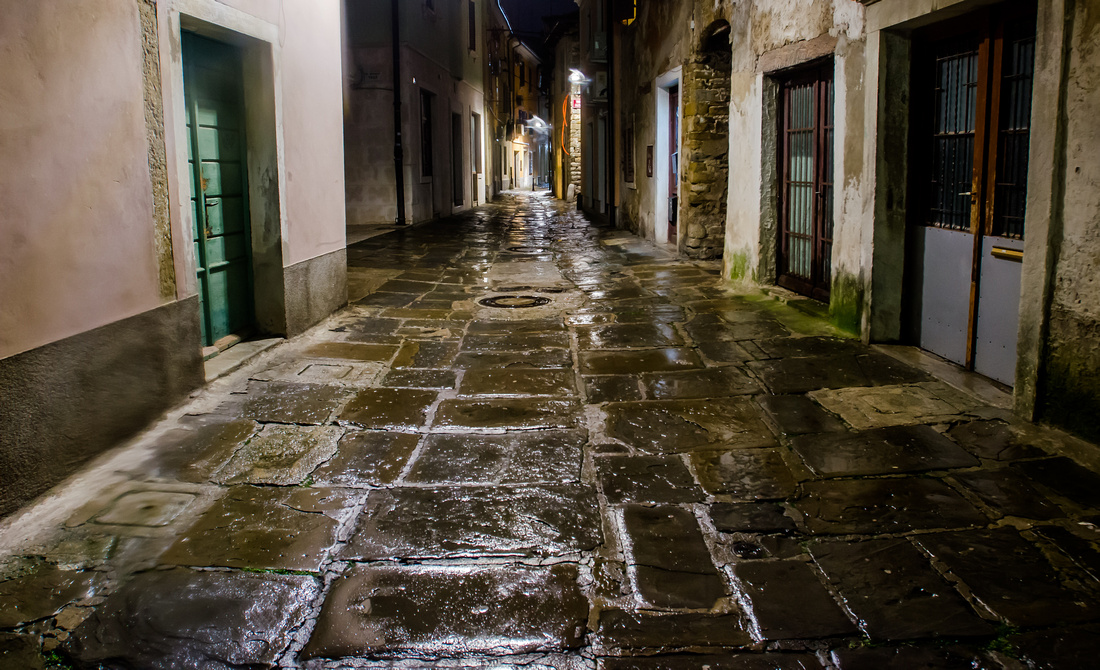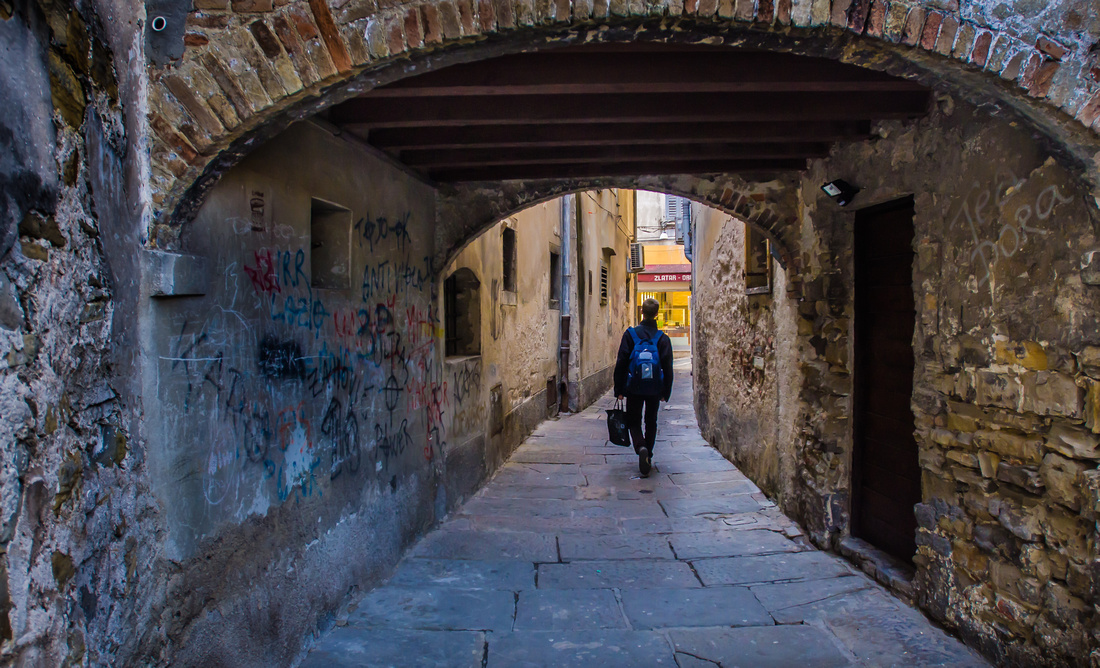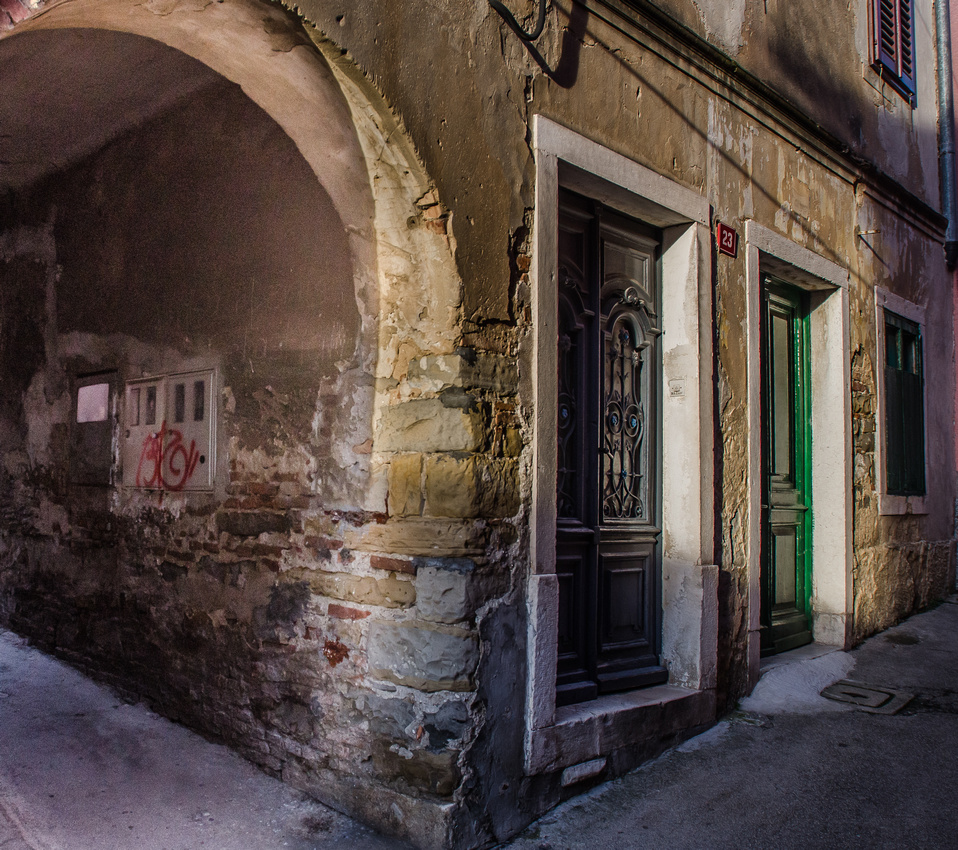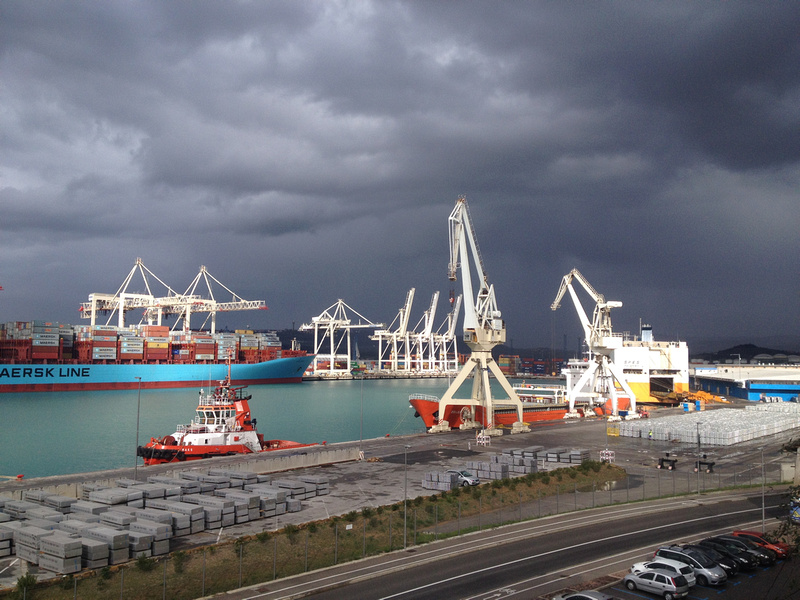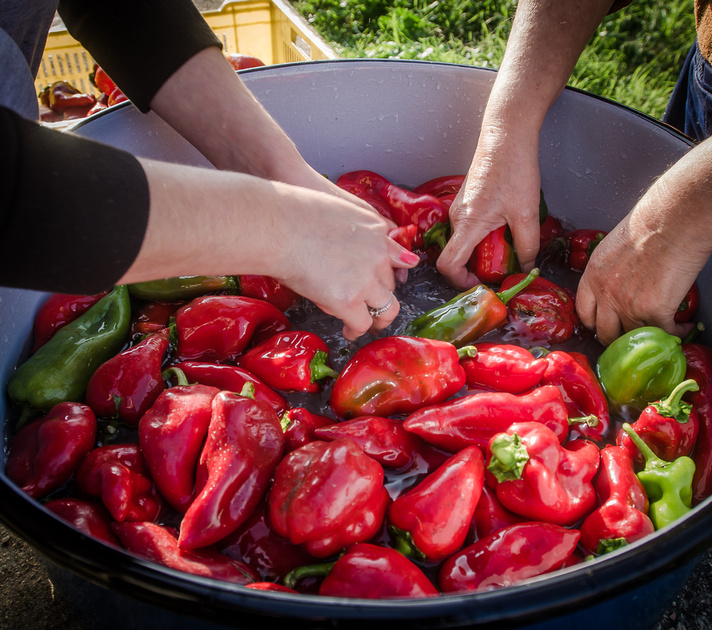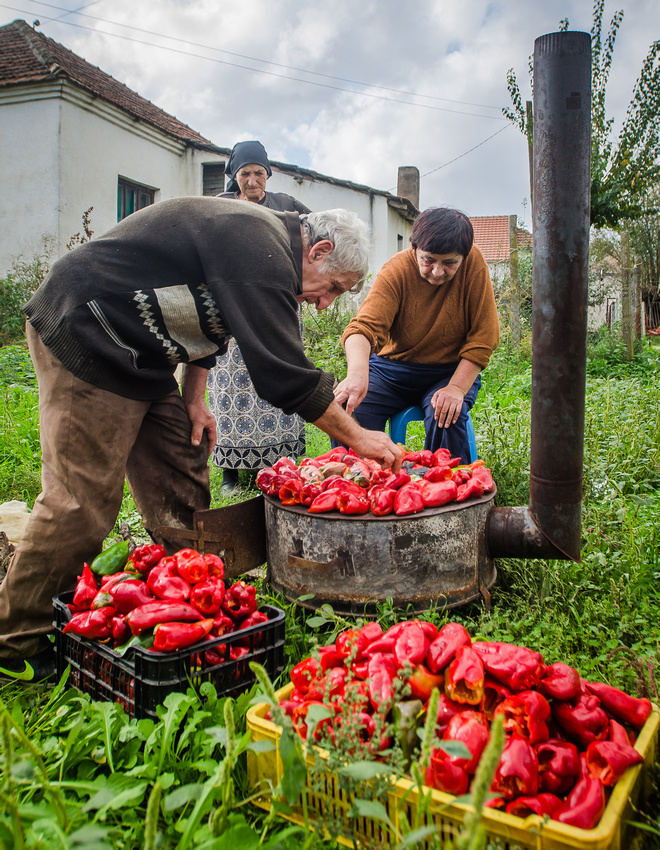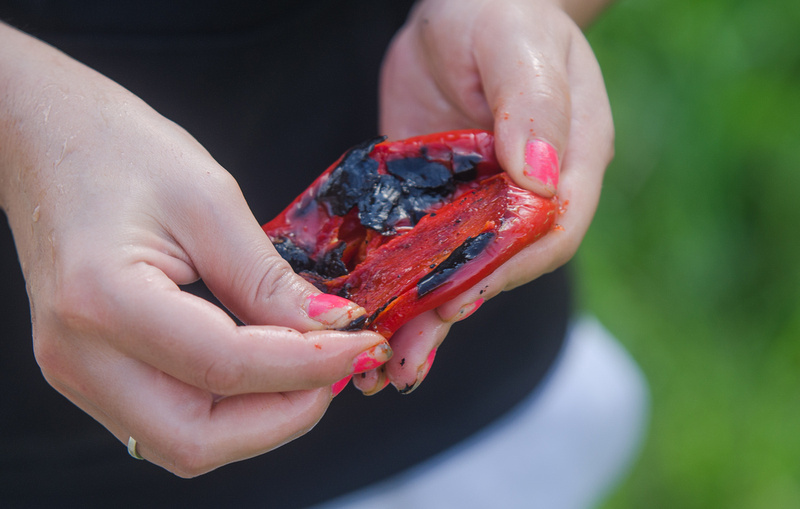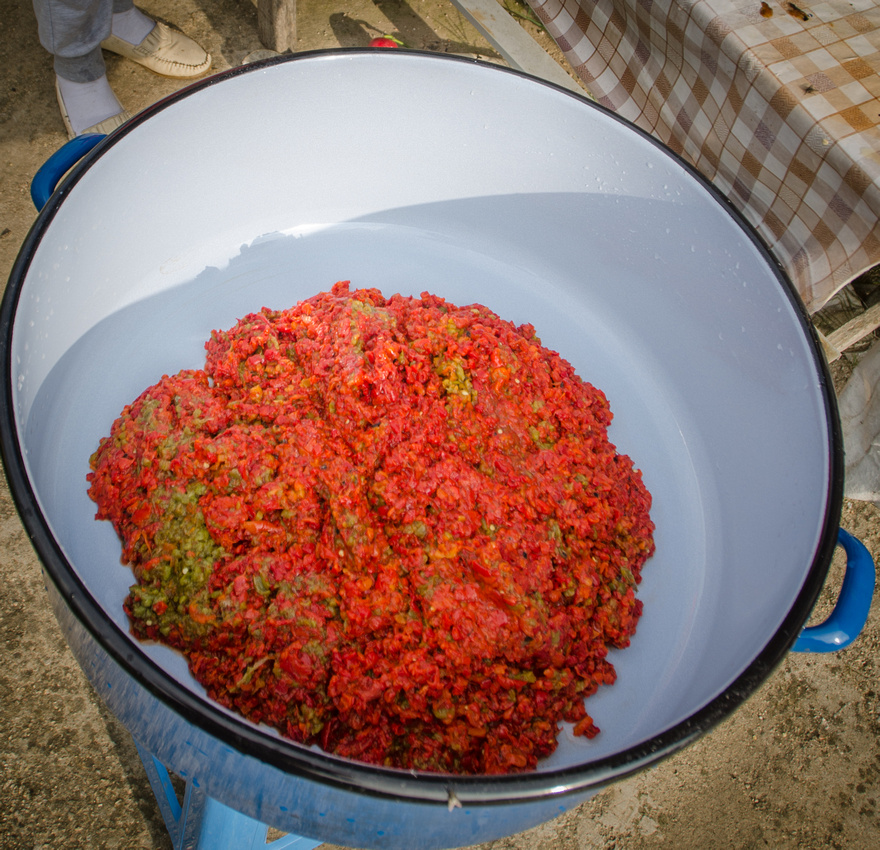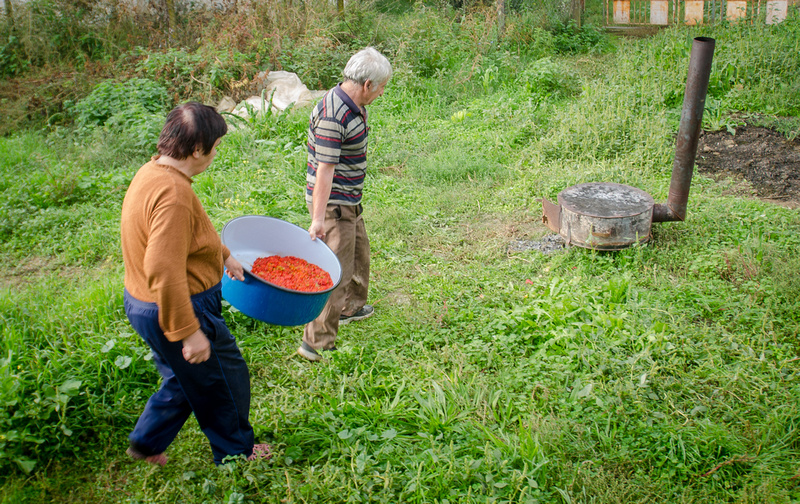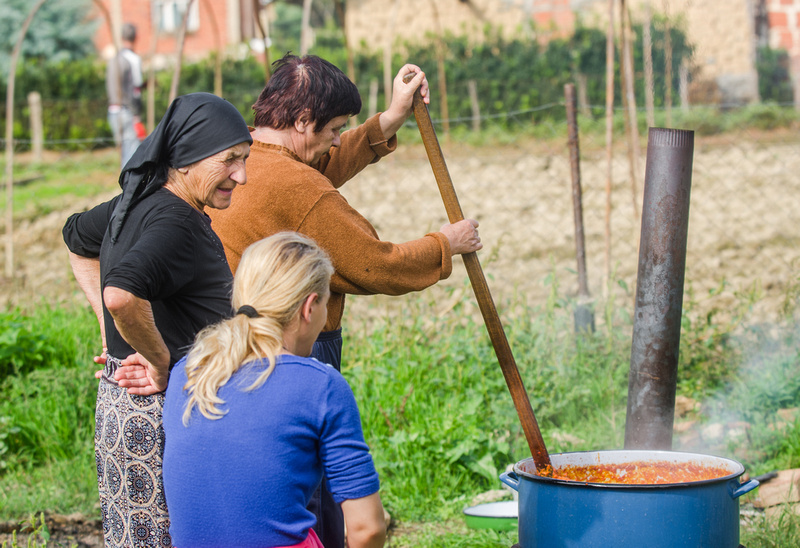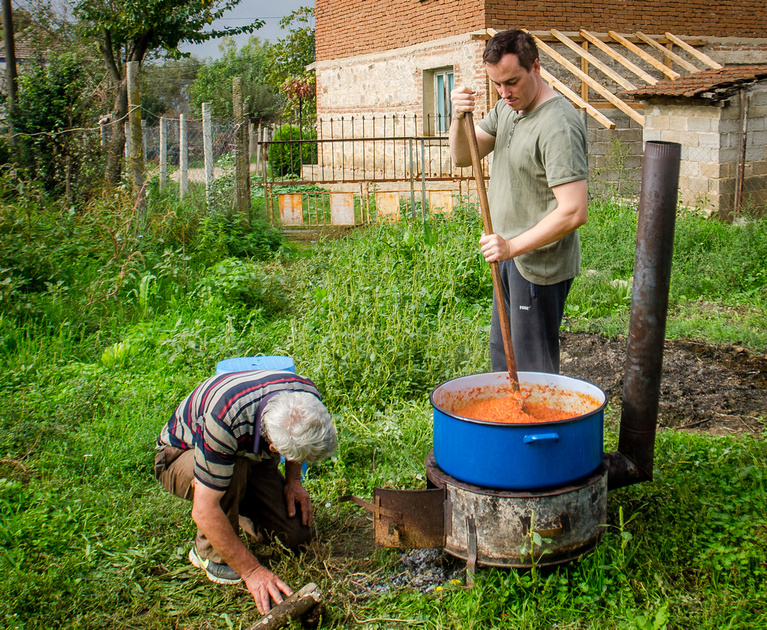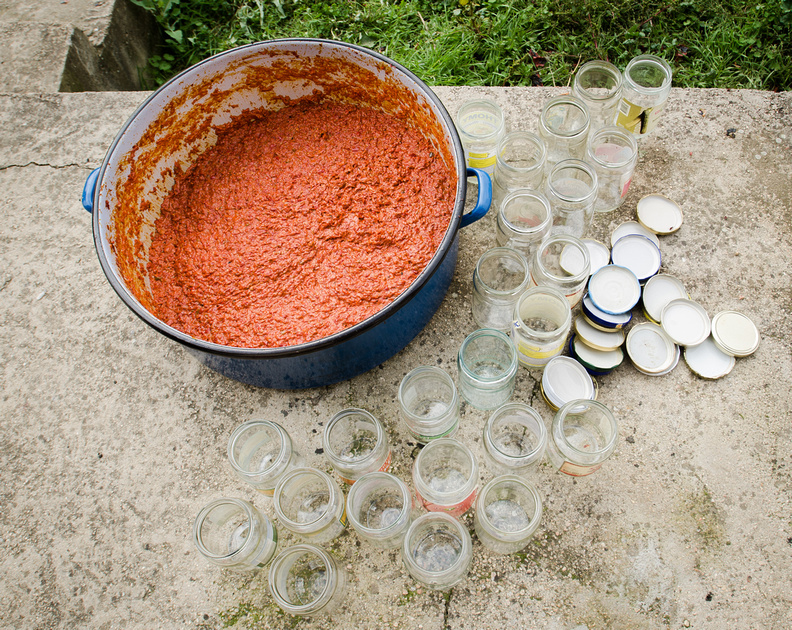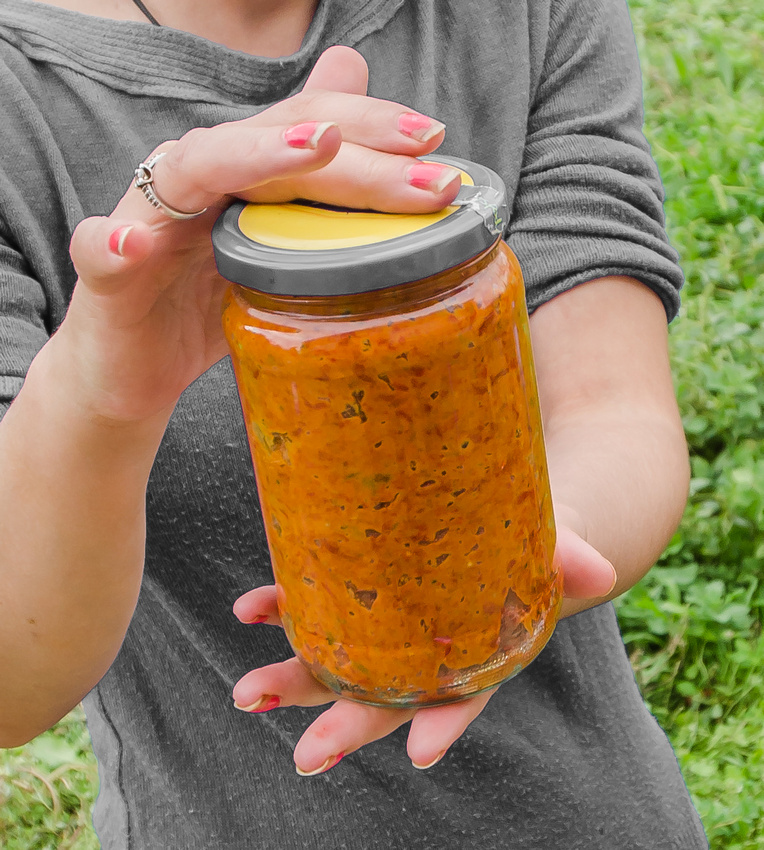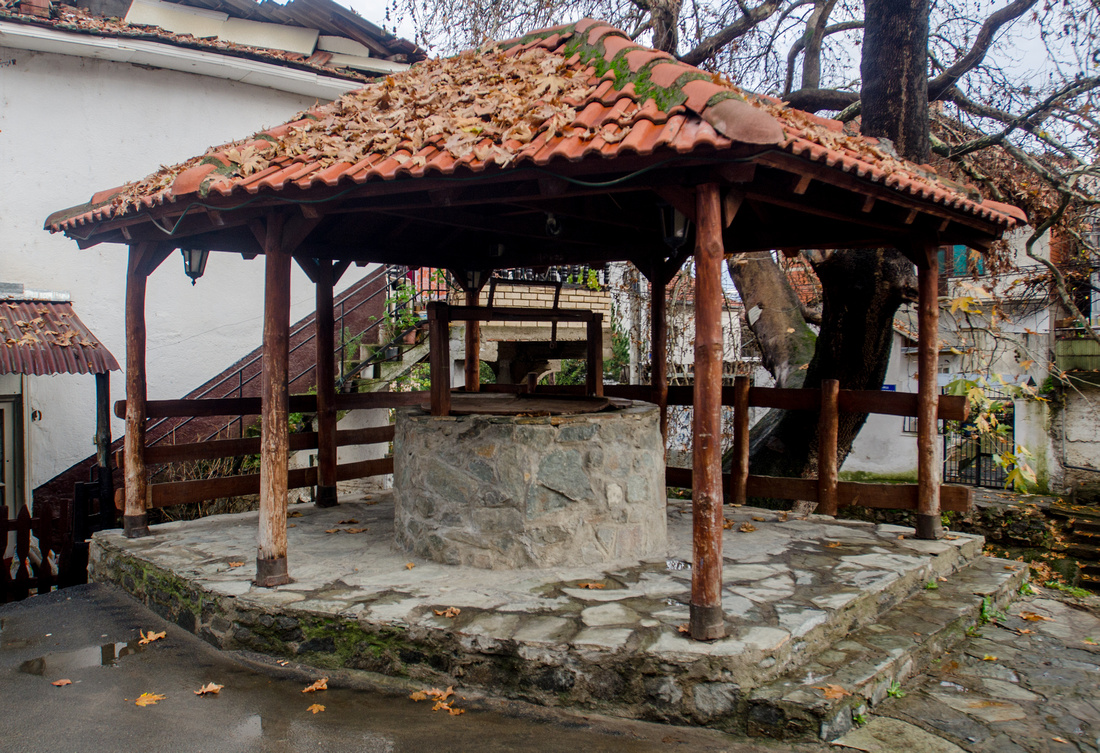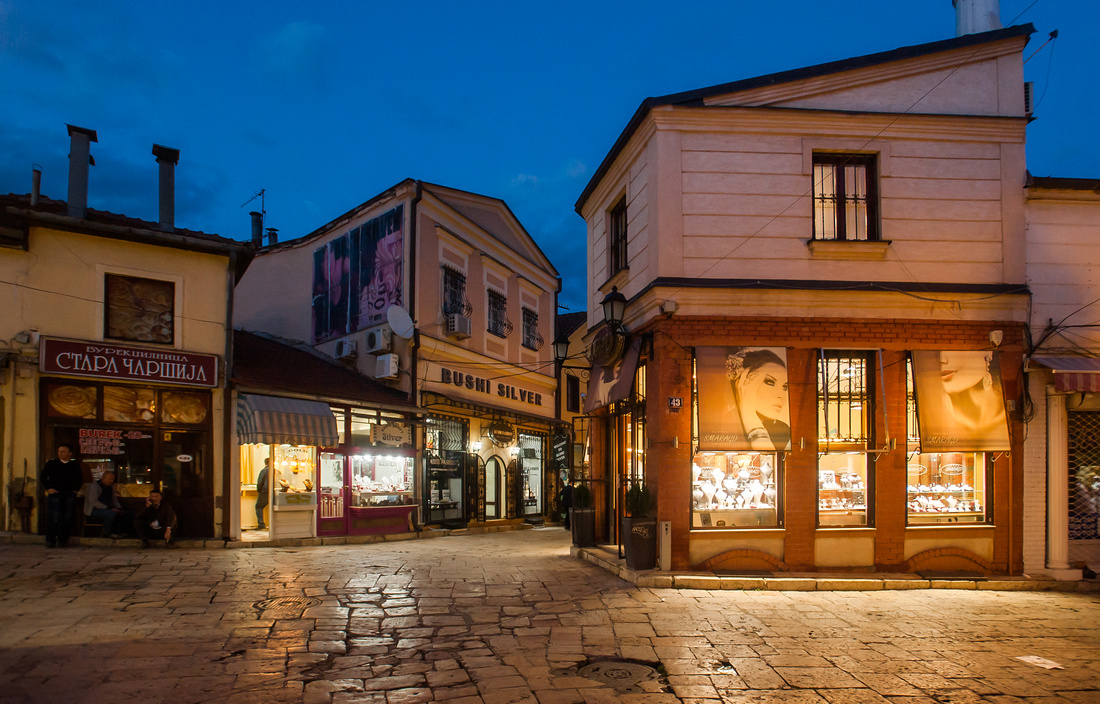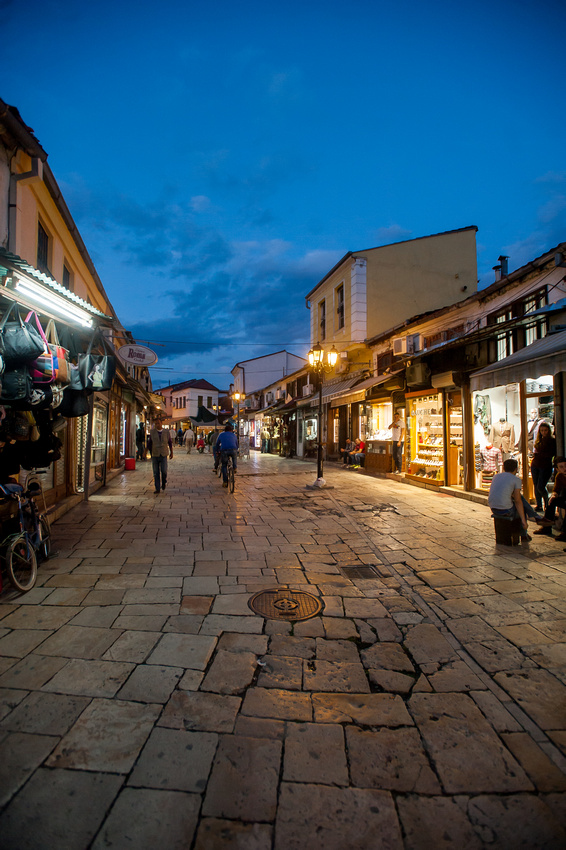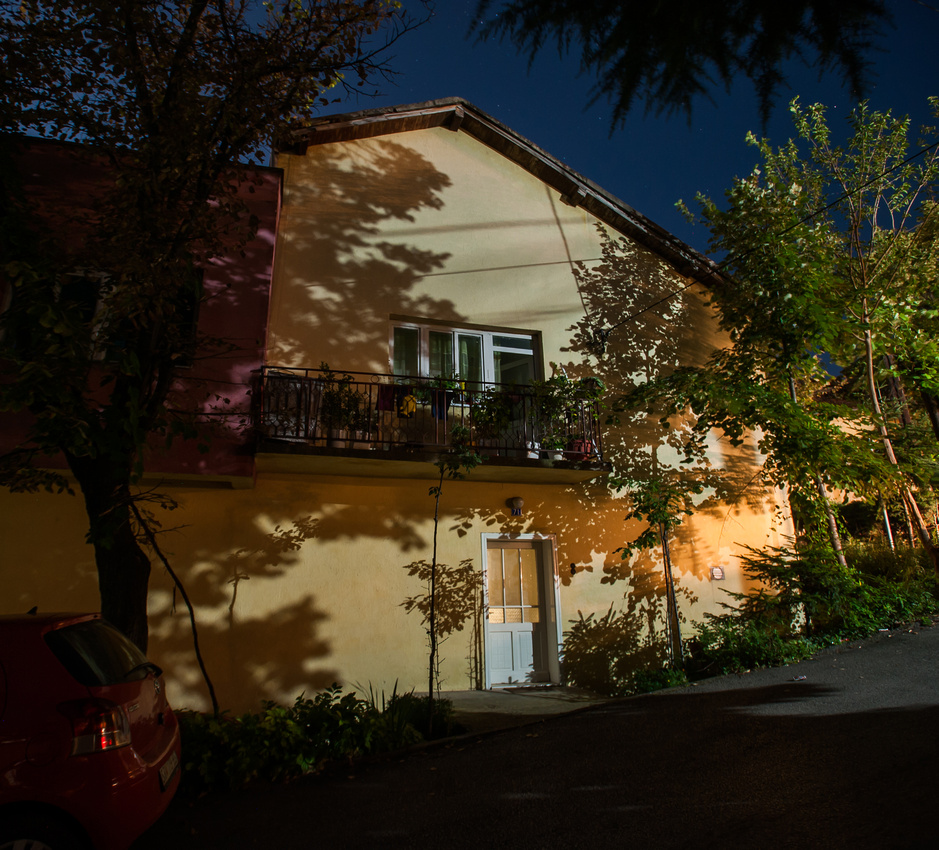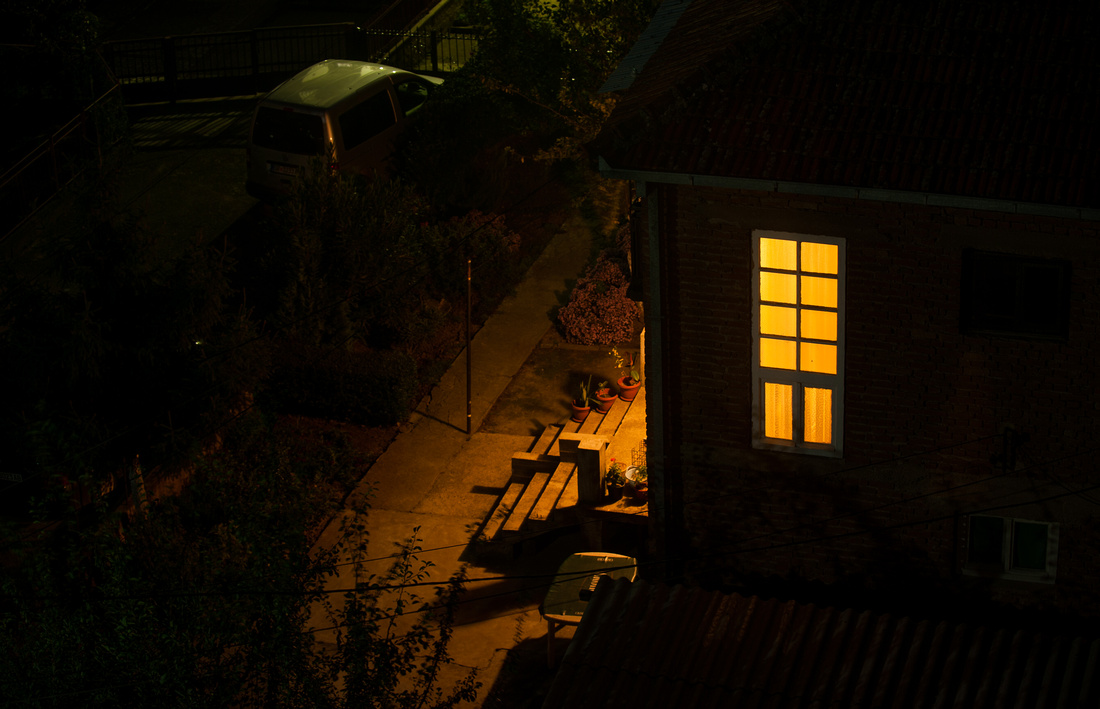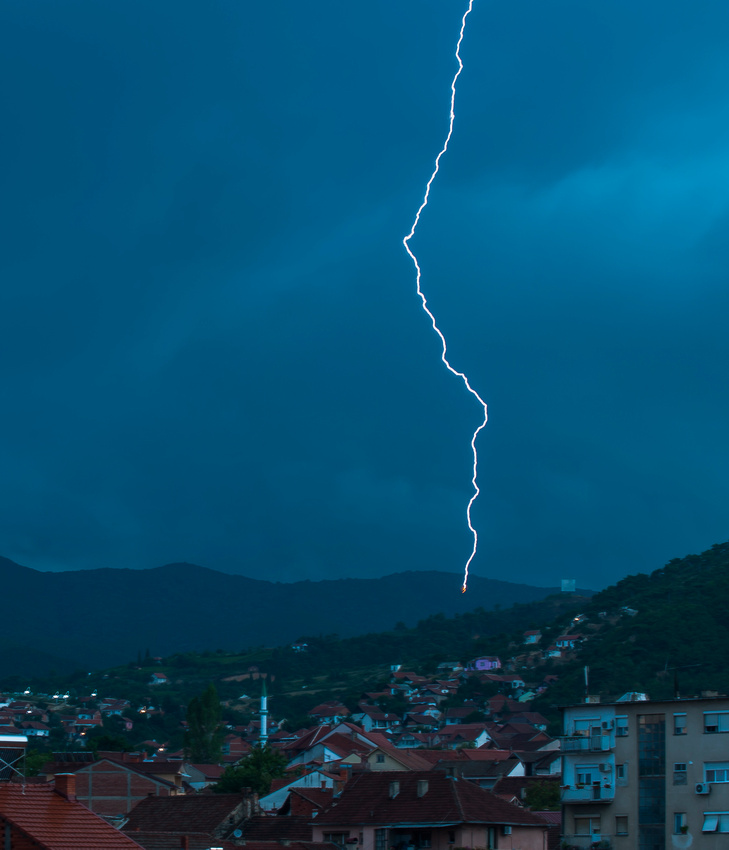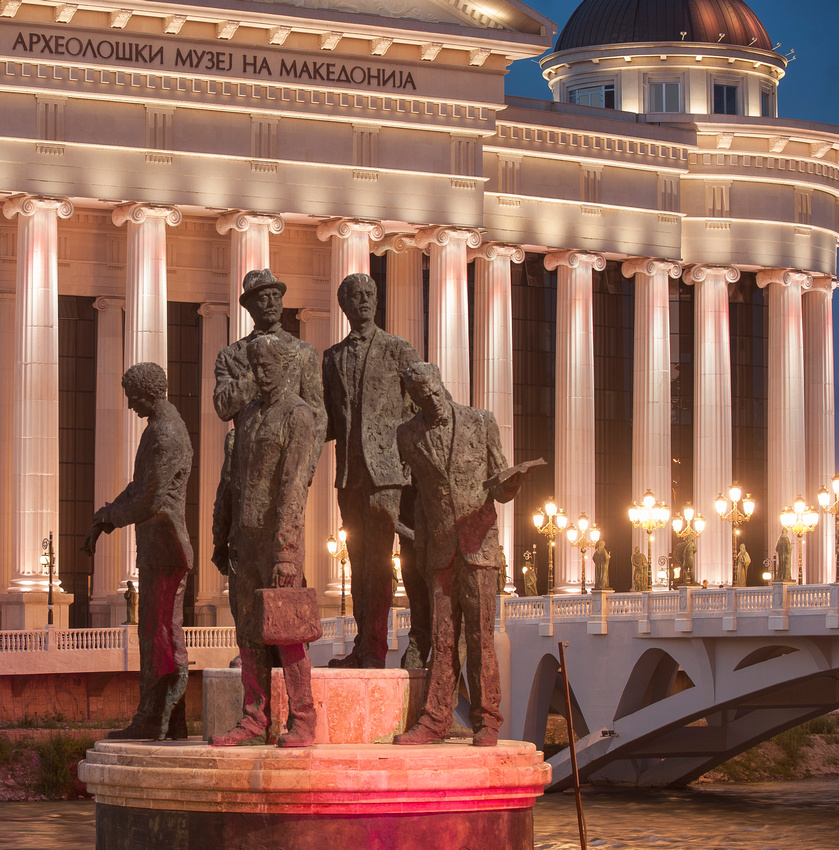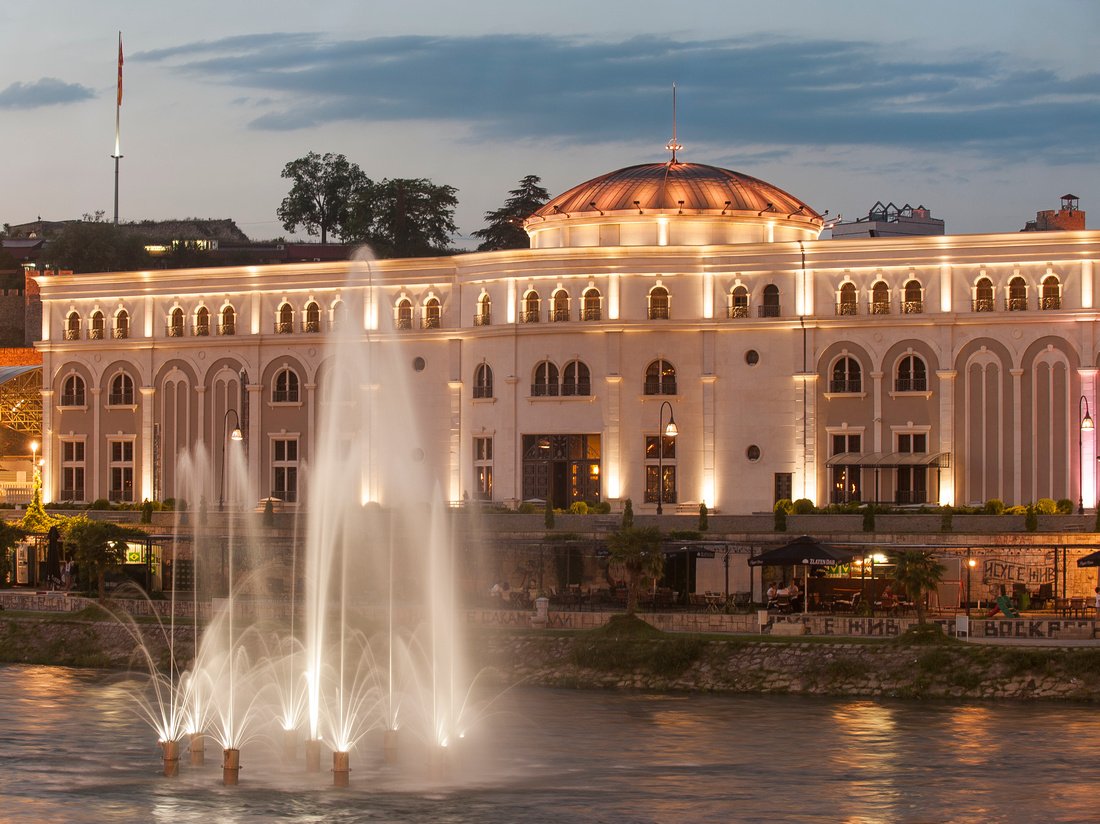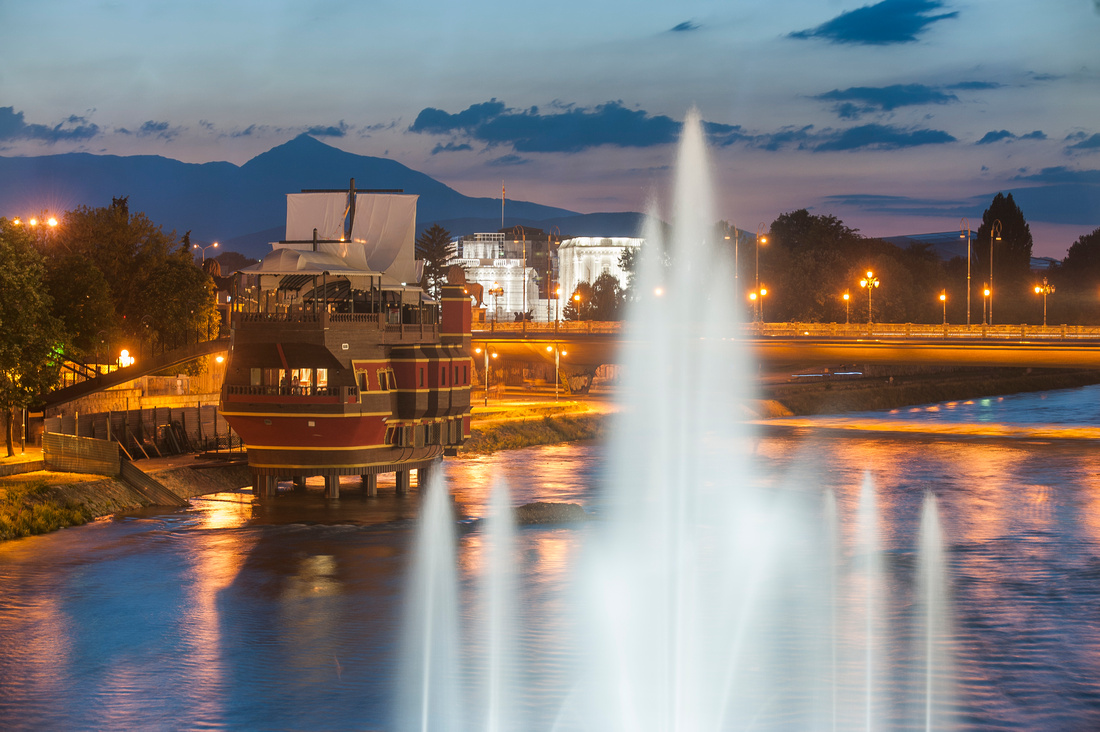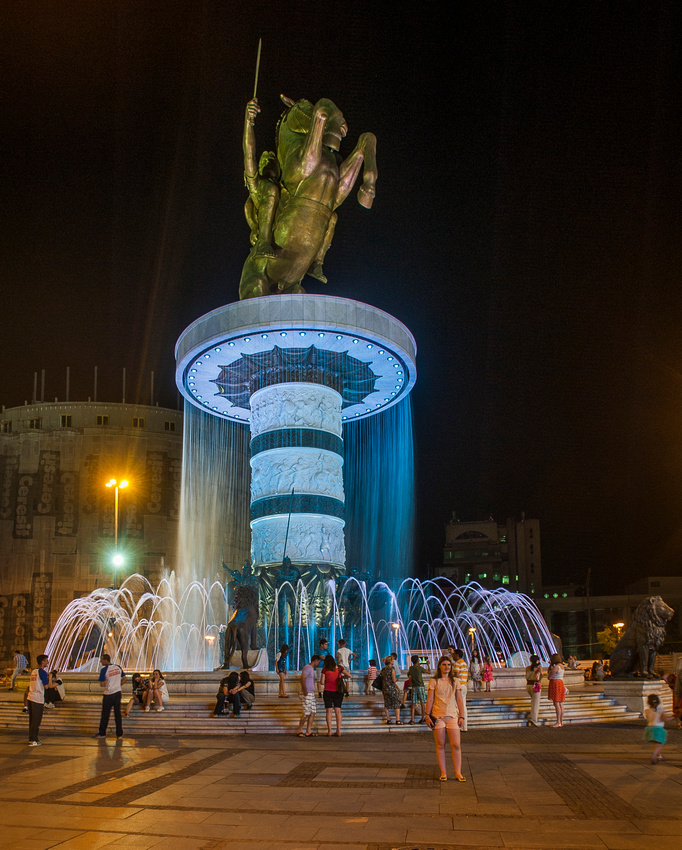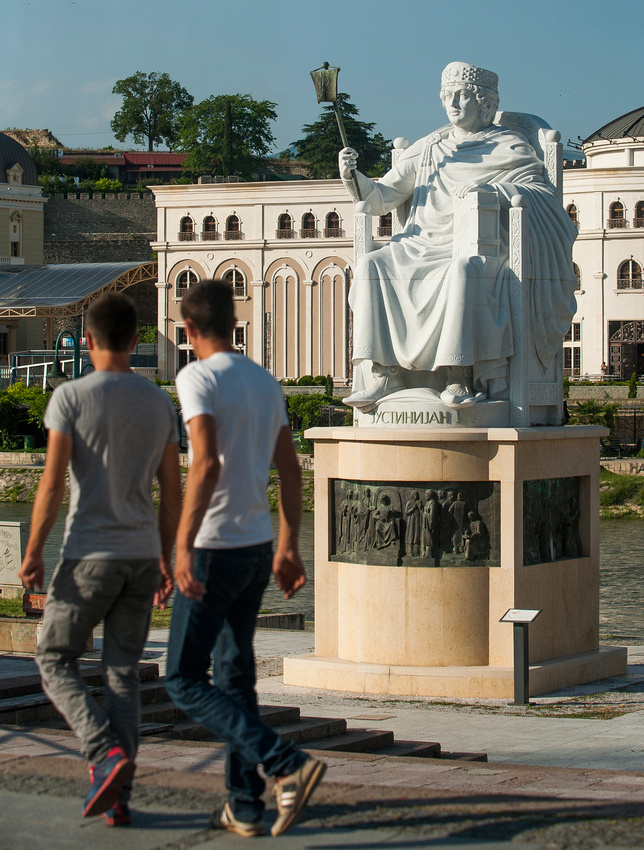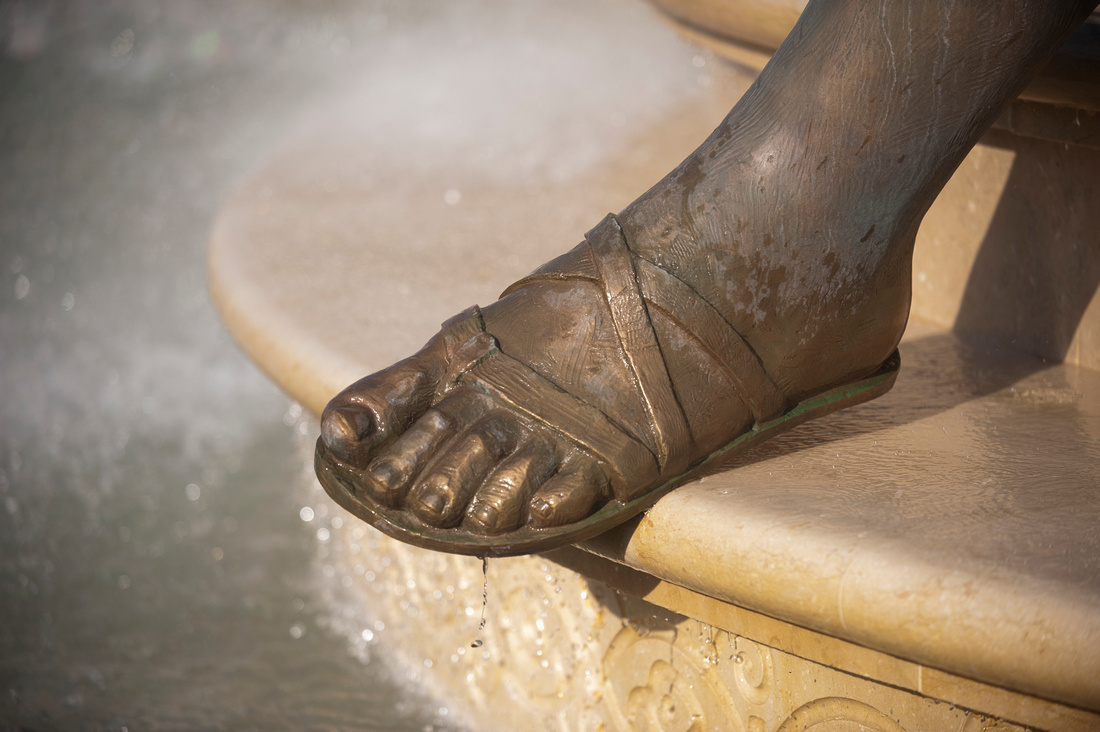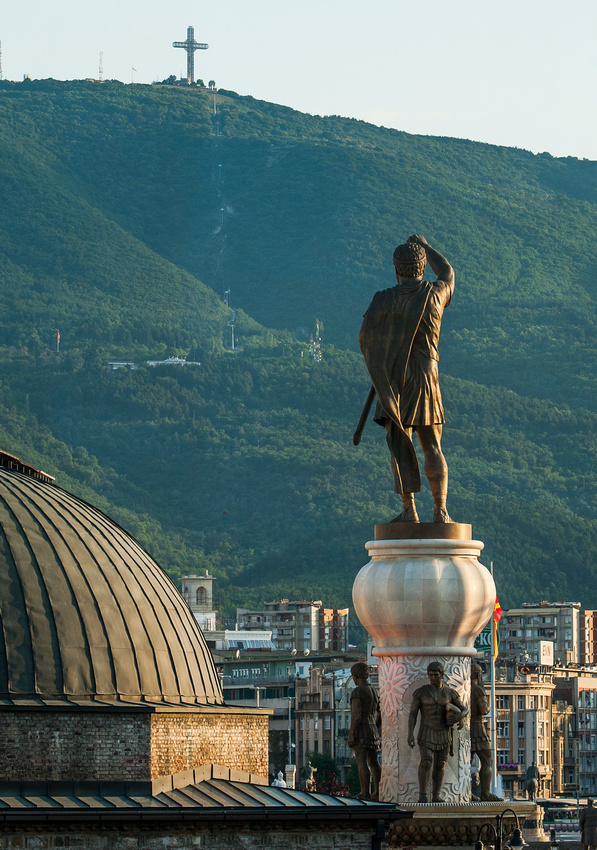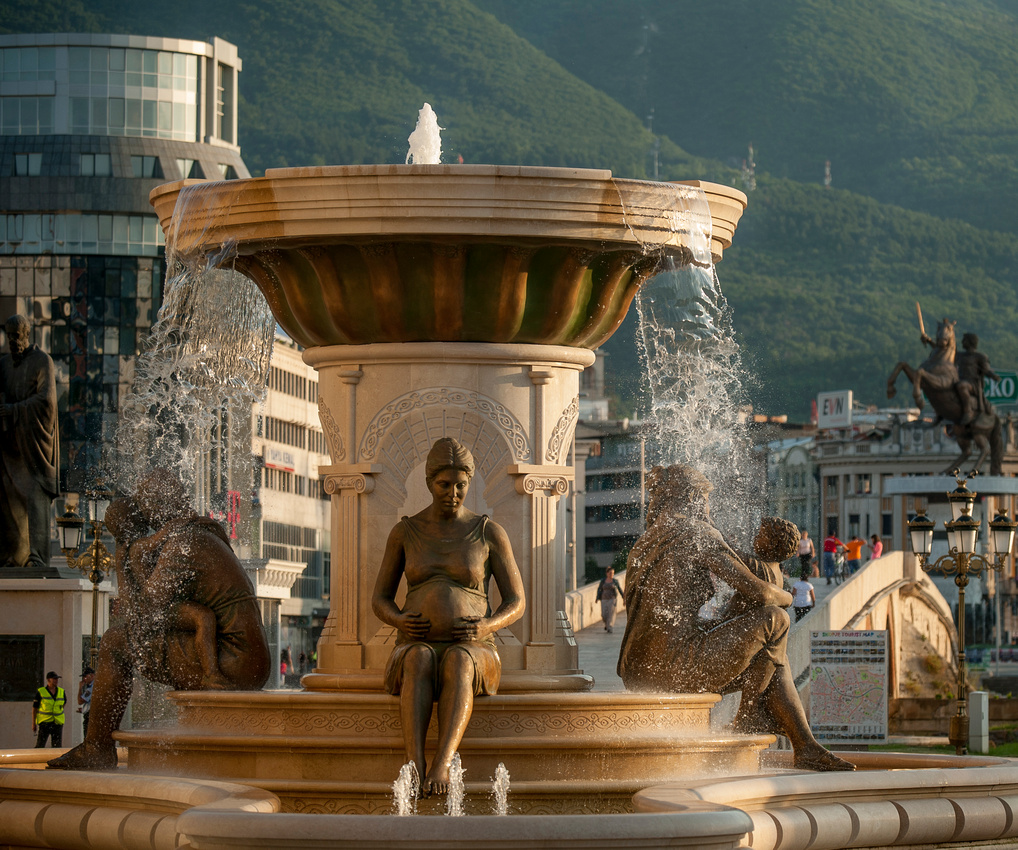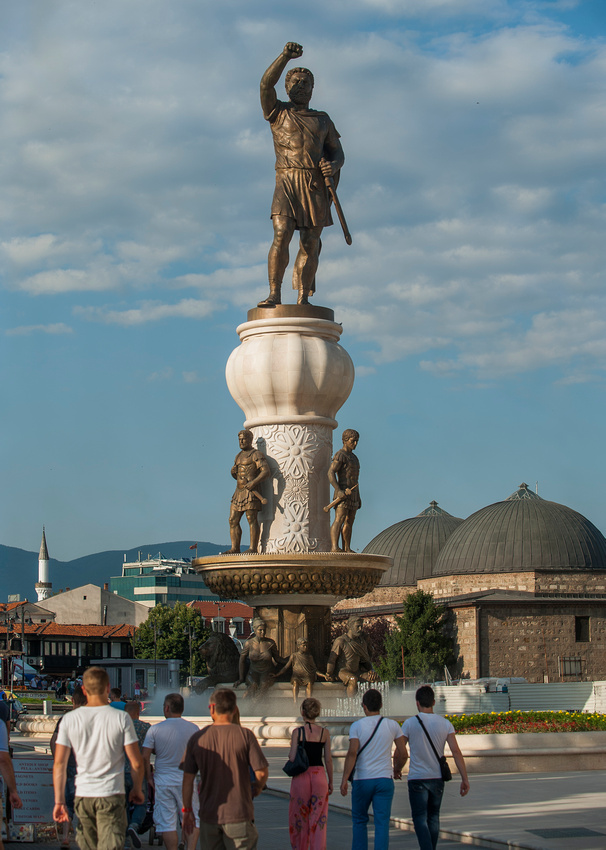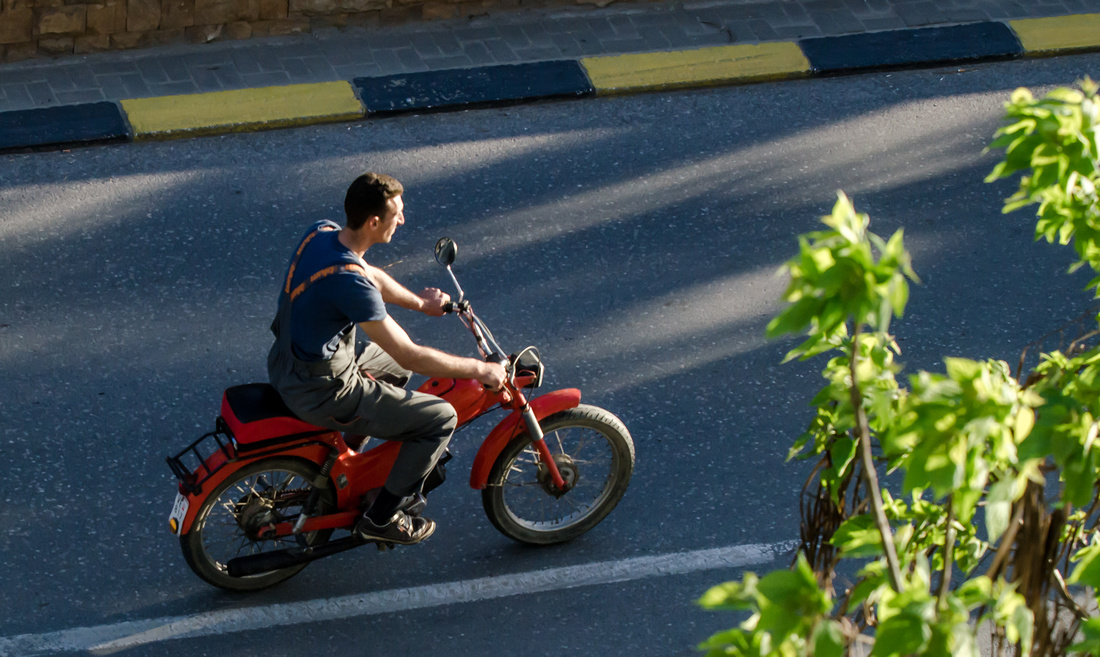
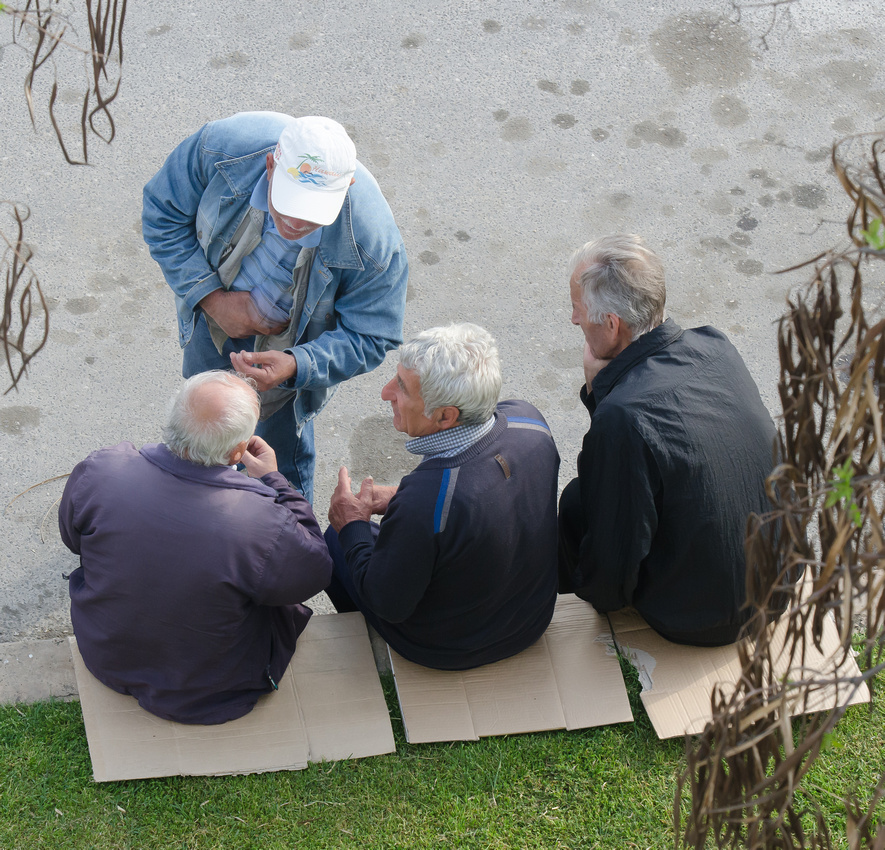
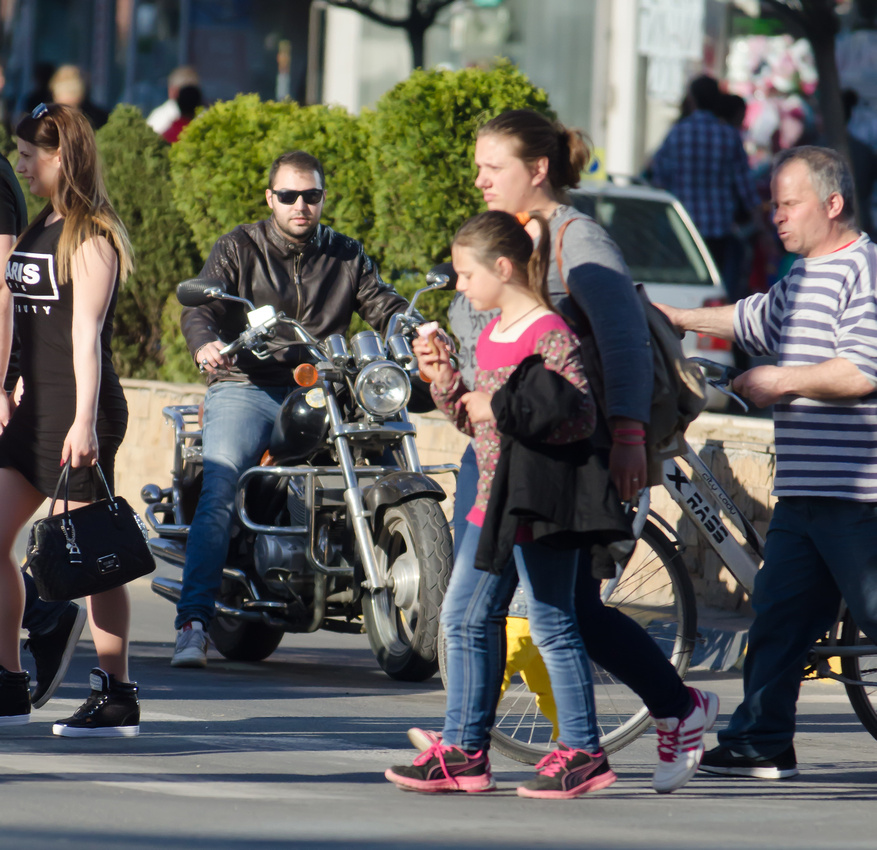
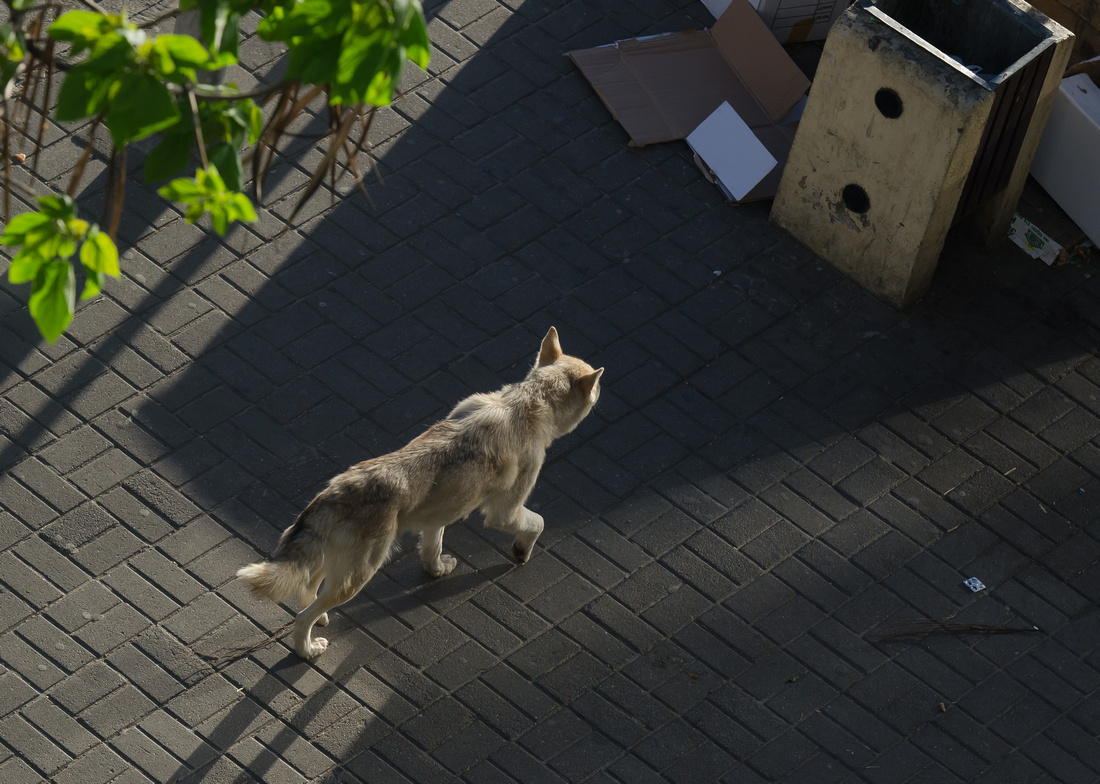

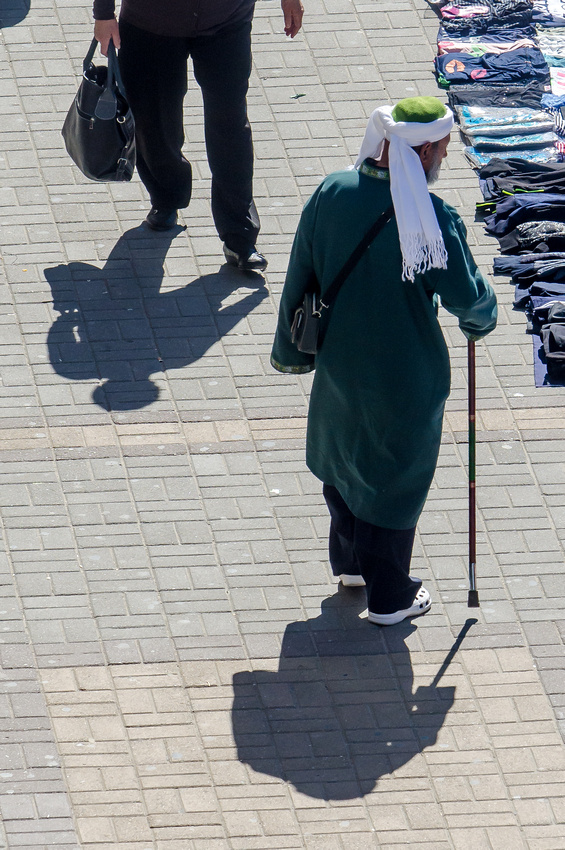
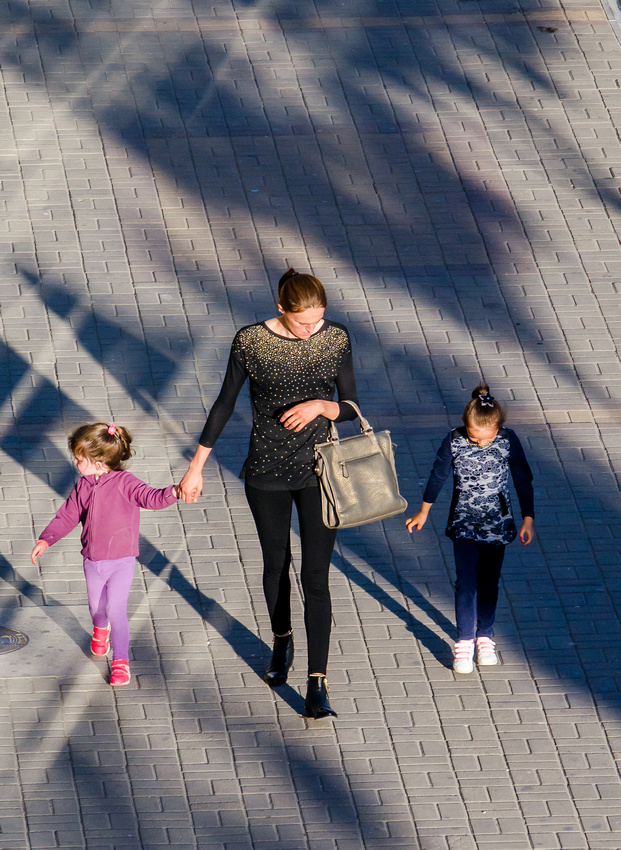
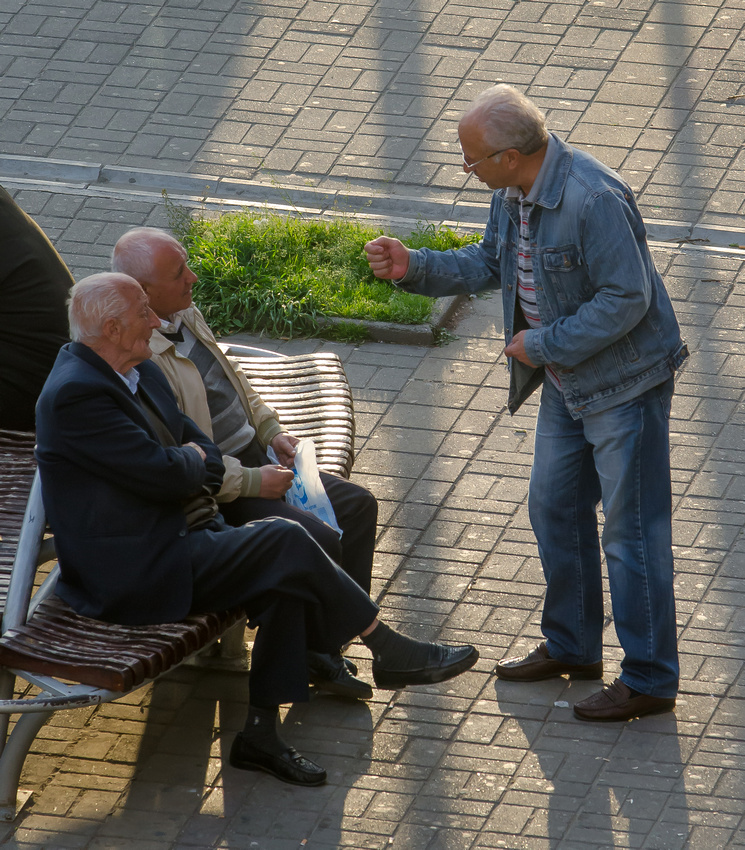

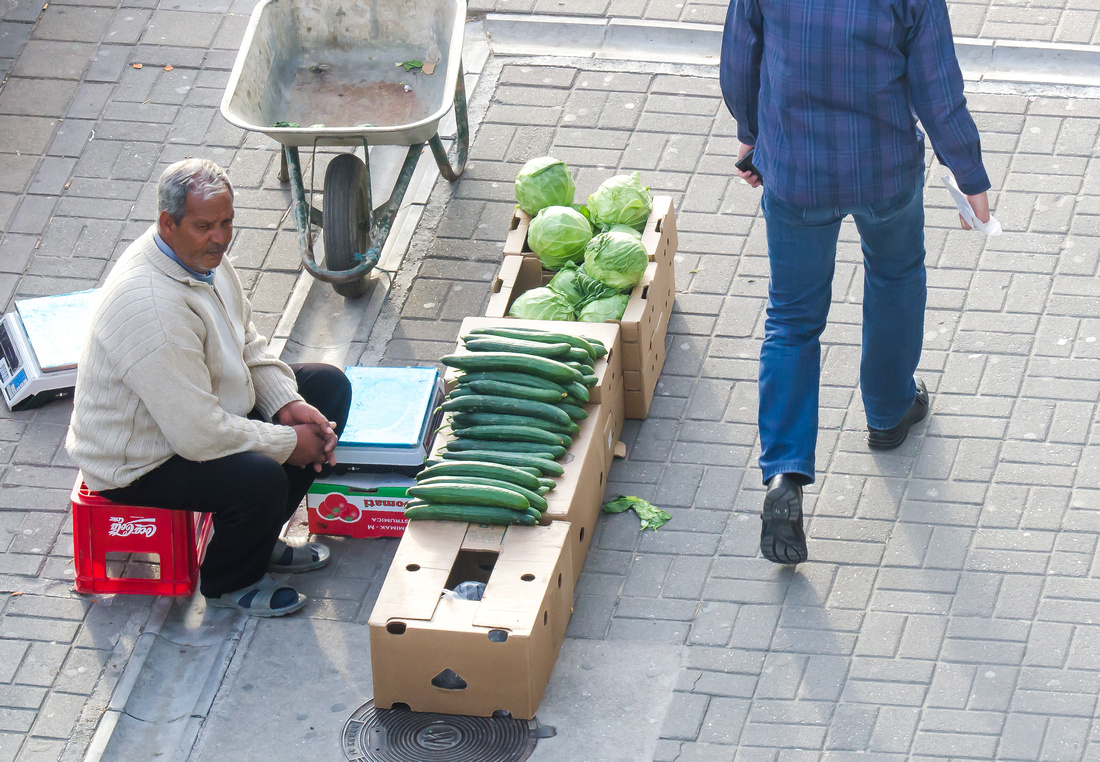
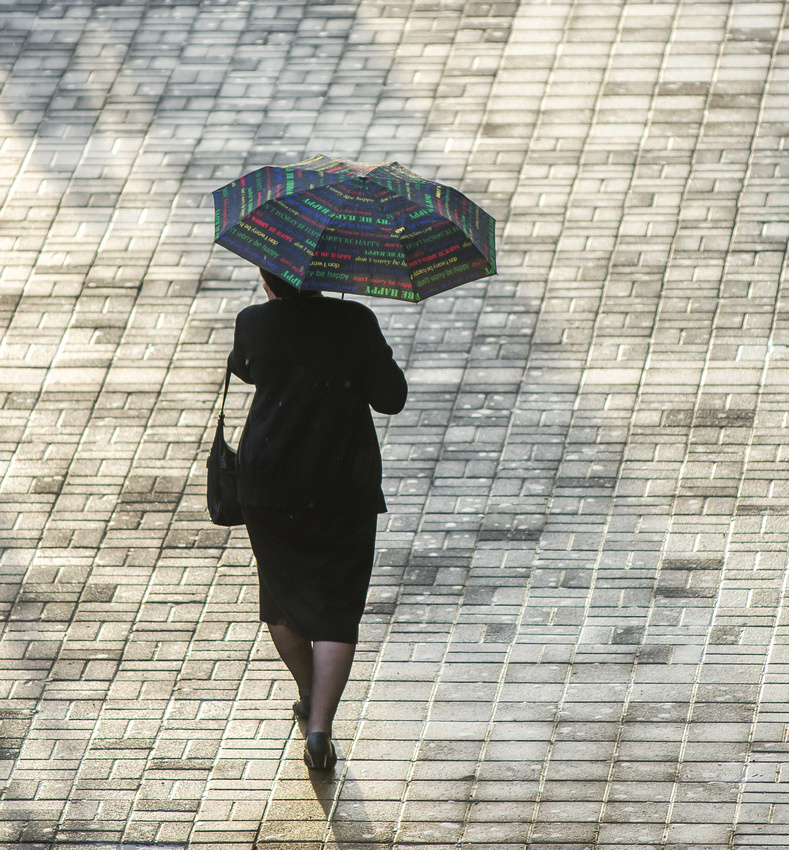
The city turns out to be a strange mixture of contradictory elements. Locals use the name Koper only about the historic center. It is circular and surrounded by about half of the sea. On the opposite side of the circle starts the modern parts of the city. Many residents, often of foreign origin, however, live on a mountain side which is overcrowded with apartment house. These three parts are today Koper.
The modern part is orderly, but characterless, like Swedish shopping area found outside the cities. Because it is cheaper for Italians to buy food in Slovenia has many large supermarkets opened its doors here. (Italian border is 20 min away) In Sweden they prefere placing these areas outside the cities. But here arises an abrupt and dull contrast difference because it starts directly where the old town ends. But for shopping, it is of course an interesting location.
The atmosphere in the town is sleepy and many people seem just as in Sweden, to have forgotten the art of walking - the streets are often deserted especially in the evenings, exept for cars. Not even during Saturday nights it live up. On the plus side is the well-ordered and disciplined vehicular traffic and that it is clean and tidy everywhere.
Our stay here get a bad start when the host people who promised us accommodation, until further notice, are angry because we refused to smuggle cigarettes from Macedonia. We are not allowed to rest after the 18 hours long bus trip and will later in the day be locked out, and more or less driven out the next day. Since we planned a longer stay, we end up in a real leghold traps, but fortunately we find a nice room through an ad - in addition to the old town.
Slovenia is a beautiful small country but economic growth is stunted since the financial crisis in 2008 - as unfinished concrete skeletons and significantly depressed salaries, tells about. The city has interestingly, several art galleries, but during our week here we never see any visitors in them. Perhaps also it is a consequence of the economic situation or art and art museums simply are low esteem here.
As summer destinations are Koper old inhabited center city with its surrounding marine - and the nearby small historic towns - like Izola and Portoroz - real pearls. Koper as well as the other mentioned old towns has narrow streets with great architecture from different eras, and alleys - stuffed with cafes, restaurants and interesting little craft and delis, etc. Every second Saturday is it also a big garage/antique sale on the streets. In the shops you will find - unlike many places in the Balkans - a developed service mind and a friendly helpful attitude, prices are generally low for visitors from Western Europe on contrary to what we have heard, it is easy to communicate in English.
The following series of images depicting the essence of the old town.
Svenska
Några intryck från Koper, vid den slovenska Medelhavskusten.
Efter en lång bussresa över Balkan en dag i februari, anländer vi till vårt mål: den lilla kuststaden Koper i Slovenien. Förväntningarna är rätt höga då vi hört att platsen skall vara något alldeles extra – unik i sitt slag.
Staden visar sig vara en märklig blandning av motstridiga element. Ortsborna använder namnet Koper endast om den historiska stadskärnan. Den är cirkelformad och omges till ungefär hälften av havet . På motsatta sidan av cirkel tar den moderna staden vid. Många innevånare, ofta av utländskt ursprung, bor dock på en bergsida som är överbelamrad med hyreshus. Dessa tre huvuddelar utgör dagens Koper.
Den moderna delen är välordnad men karaktärslös, ungefär som en av alla de där svenska köpområdena som återfinns utanför svenska städer. Eftersom det är billigare för Italienarna att handla mat i Slovenien har många stora matvaruaffärer slagit upp portarna här. (Italienska gränsen är endast 20 min bort) I Sverige vill man som sagt gärna förlägga dessa områden utanför städerna. Men här uppstår en abrupt och tråkig kontrastskillnad då denna tar vid direkt var den gamla stan slutar. Men för den shoppingsugne är det förstås ett intressant läge.
Stämningen är sömnig och folk verkar, precis som i Sverige, att ha glömt bort konsten att gå - gatorna är ofta folktomma särskilt om kvällarna. Inte ens under lördagskvällar lever gatorna upp. På pluskontot ligger den välordnade och disiplinerad biltrafiken samt att det är rent och städat överallt.
Vår vistelse här får en dålig start då värdfolket som lovat oss logi, tills vidare, är arga för att vi vägrat att smuggla cigaretter från Makedonien. Vi tillåts inte att vila efter den 18 timmar långa bussresan och blir senare under dagen utelåsta och mer eller mindre utkörda den andra dagen. Eftersom vi planerat en lite längre vistelse hamnar vi i en riktig rävsax men som tur är hittar vi ett fint rum via en annons - dessutom i den gamla stan.
Slovenien är ett vackert litet land men den ekonomiska tillväxten är avstannad sedan finanskrisen 2008 vilket bl.a. ofärdiga betongskellet och rejält nerpressade löner, skvallrar om. Staden har intressant nog flera små konstgallerier men under våra veckor här ser vi aldrig några besökare i dem. Kanske också det en konsekvens av det ekonomiska läget eller så står konst och konstmuseer helt enkelt lågt i kurs här.
Som sommarresemål är Kopers gamla bebodda stadskärna med sin omgivande marina - och närliggande små historiska städer – Izola, Portoroz och riktiga "höjdare". Koper såväl som de andra nämnda gamla stadskärnorna har smala gränder och prång – välfyllda med kafeér, resturanger och intressanta små hantverks- och delikatessbutiker m.m. Varannan lördag håller man också en stor loppmarknad ute på gatorna. I butikerna finner man - till skillnad från många platser på balkan – en väl utvecklad servicemind och ett vänligt hjälpsamt bemötande, priserna är överlag låga för besökare från Västeuropa och tvärtemot vad vi har hört är det enkelt att kommunicera på engelska.
Följande bildserie skildrar i huvudsak den gamla stan. För muspekaren över bilderna för bildtext.
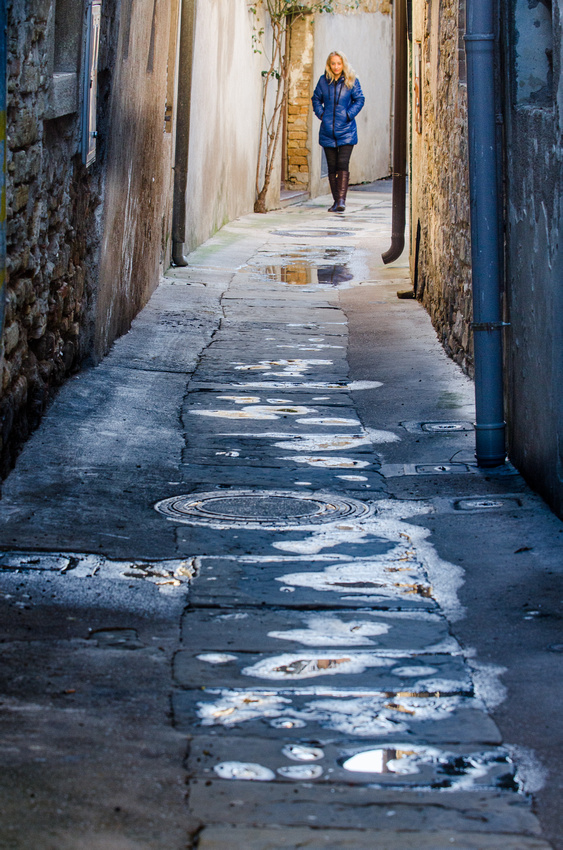 "Blue" alleyKoper has many irresistible old streets and alleys
"Blue" alleyKoper has many irresistible old streets and alleys
 The wellAn old citywell from 1485
The wellAn old citywell from 1485
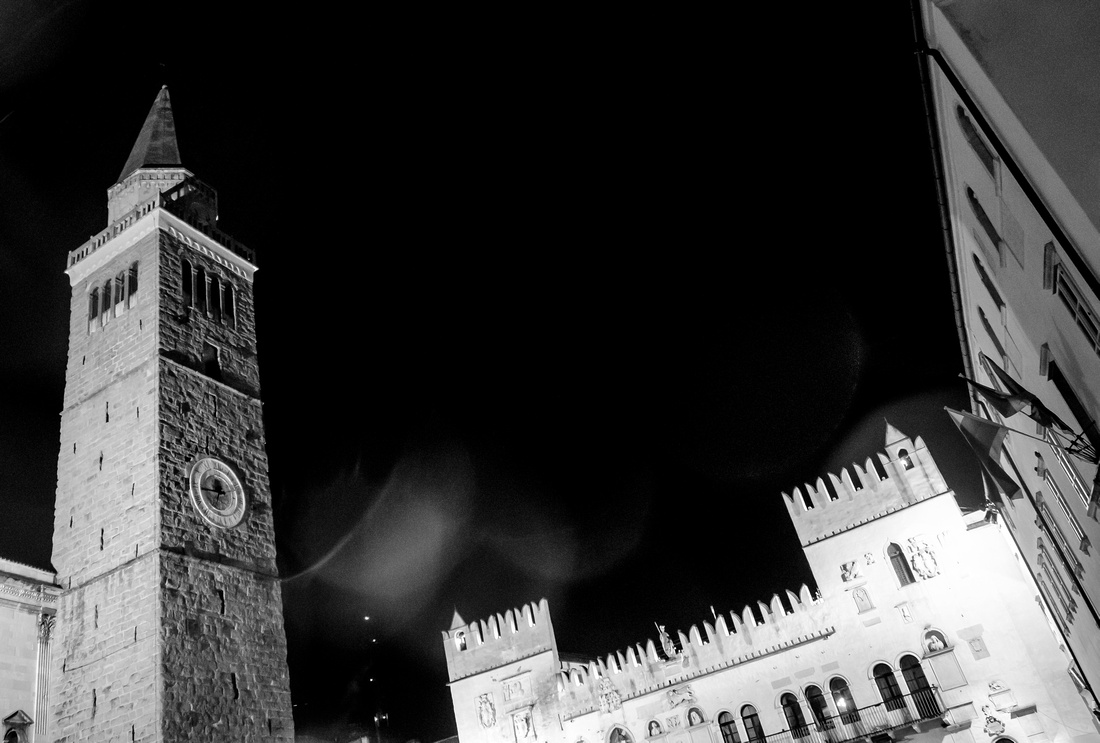 CatedralThe square also houses the cathedral St. Nazarius from 1100th-centurie.
CatedralThe square also houses the cathedral St. Nazarius from 1100th-centurie.
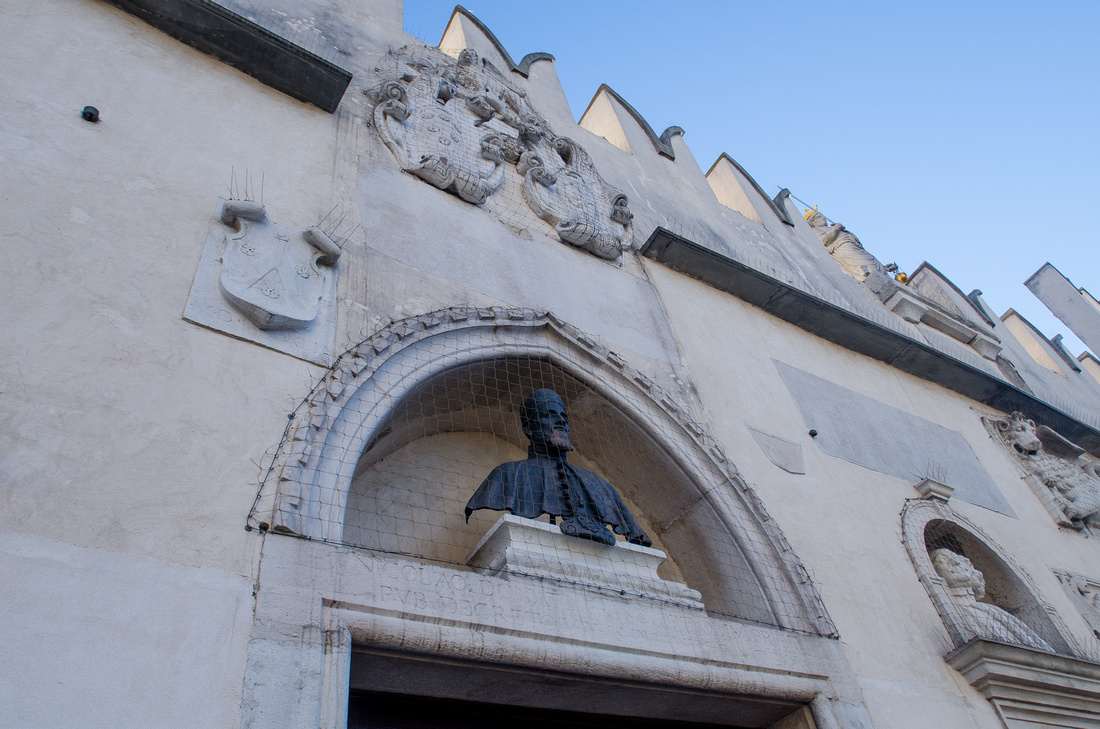 Palace facadeDetailj of the the Venetian governors palace.
Palace facadeDetailj of the the Venetian governors palace.
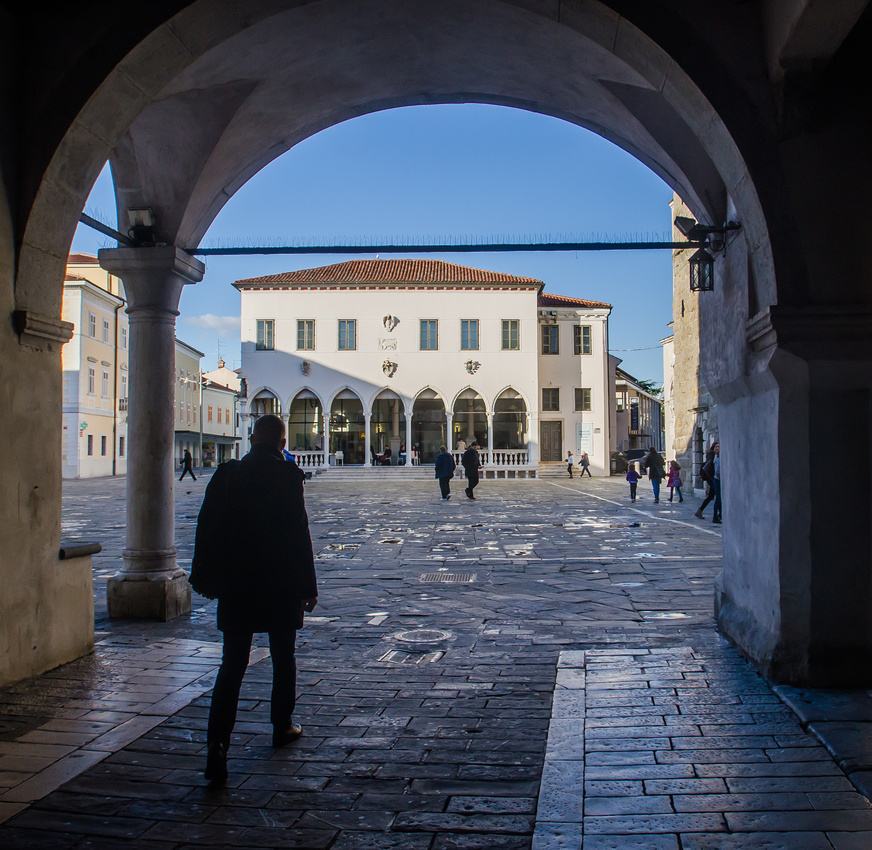 Gate to the the Tito square.
Gate to the the Tito square.
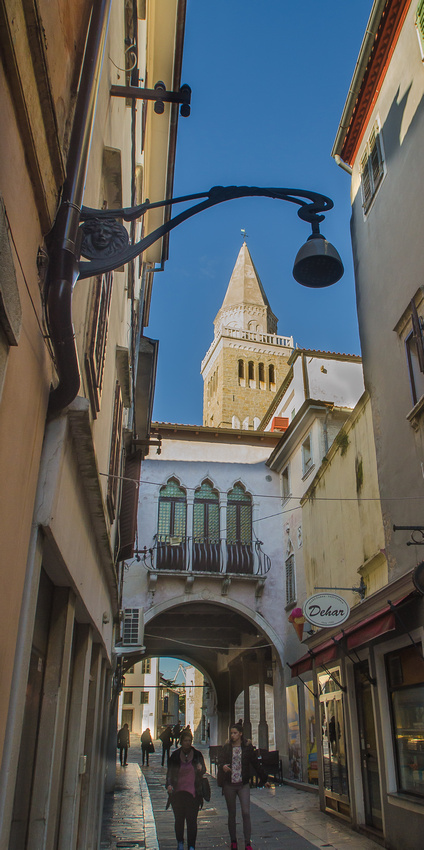
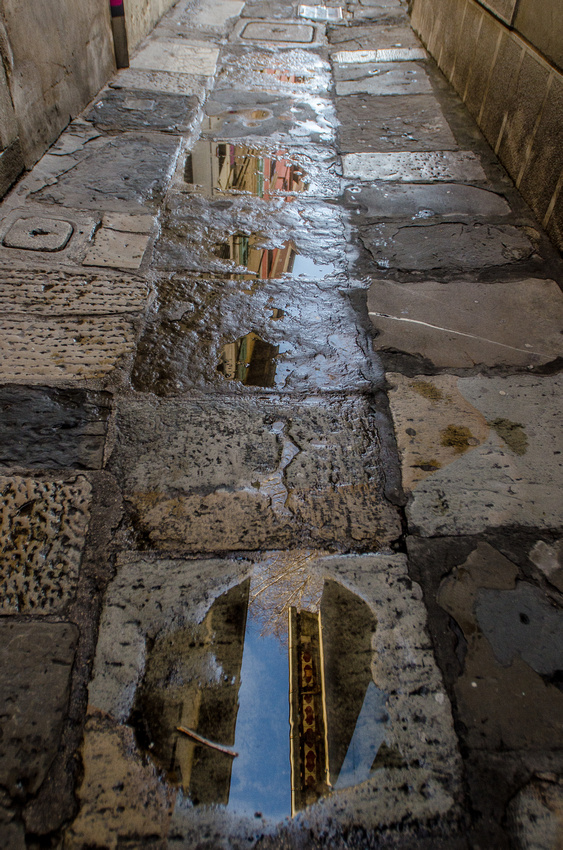
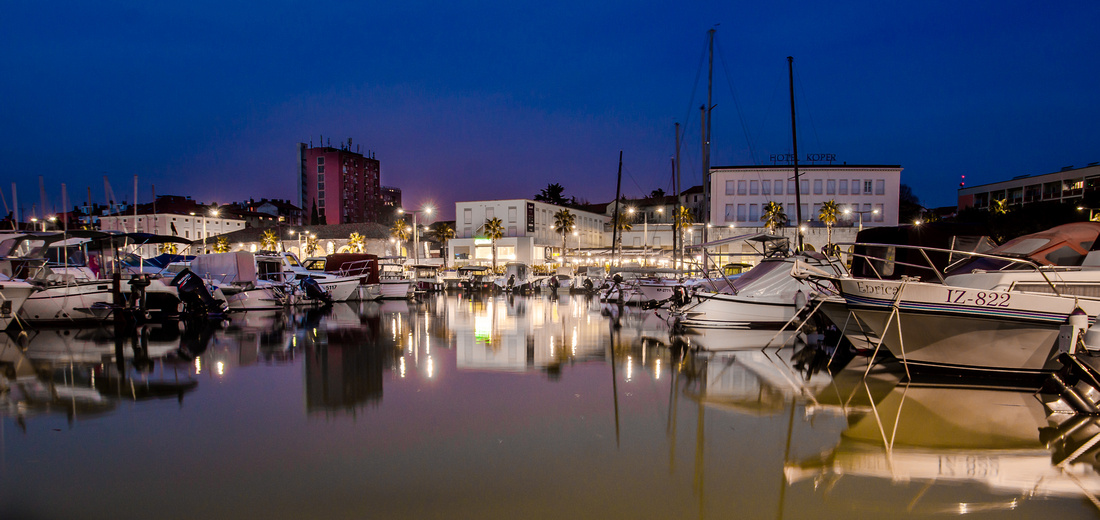 The marinaThe marina in connection to the old town.
The marinaThe marina in connection to the old town.
]]>
Last autumn, I tried on this tradition by helping my wife and her parents in a day of Ajvar cooking. Join in, the steps in the photos below and hover over the image for additional texts!
Svenska
Ajvar är en omåttligt populär paprikaröra i Balkanländer som Makedonien, Serbien, Albanien och Bosnien. Men även i ett nordligt land som Sverige känner nog de flesta till den vid det här laget - efter att ha slagit igenom i matvaruaffärerna - i och med 90-talets flyktingvåg från de forna Jugoslavien. Den används som smörgåspålägg, smaksättning i grytor och som tillbehör på bordet. Vid tillverkningen samlas ofta hela familjen och ibland även grannar, enligt traditionen i oktober då paprikorna är som mest mogna.
Förra hösten fick jag möjlighet att prova på denna tradition då jag och min fru hjälpte hennes föräldrar i byn Sacevo. För muspekaren över bilderna för bildtexter.
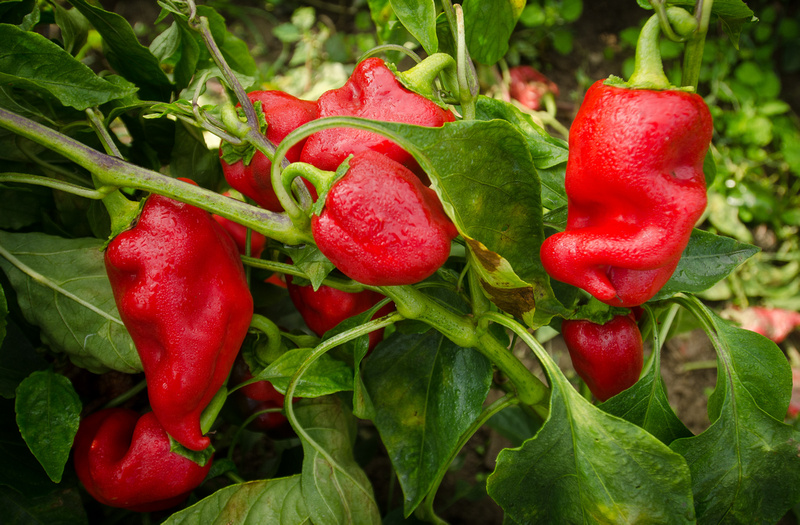 Red sweet peppersRed sweet peppers - growing in the garden and are ready for the picking
Red sweet peppersRed sweet peppers - growing in the garden and are ready for the picking
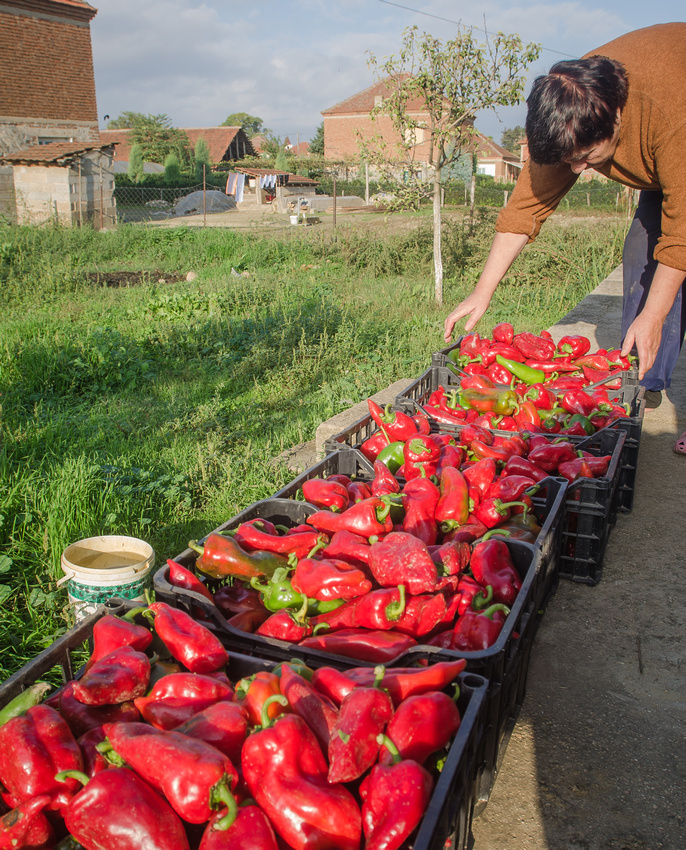 After picking and sorting these around 35 kilo peppers ...
After picking and sorting these around 35 kilo peppers ...
 ...and set to be roasted on the stove.
...and set to be roasted on the stove.
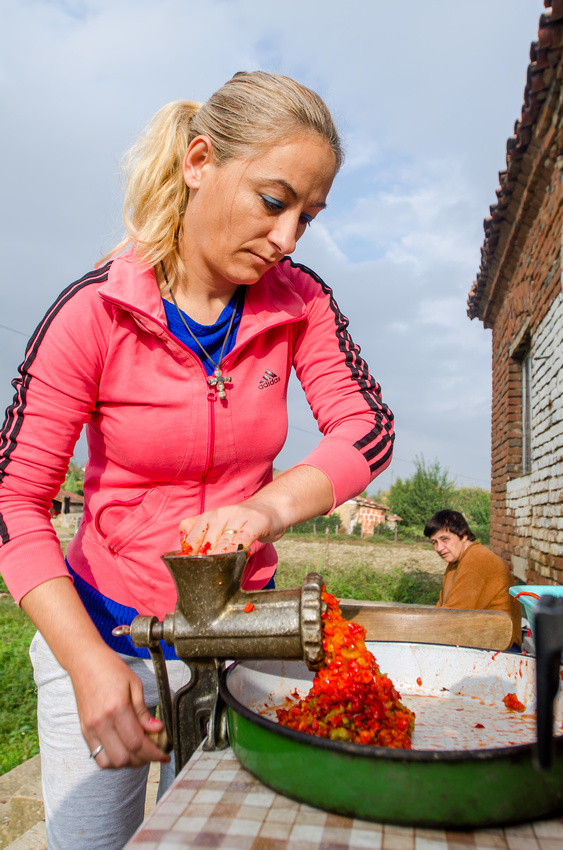 Next step - this hand-powered mincer has ground countless of generations peppers, in the autumns.
Next step - this hand-powered mincer has ground countless of generations peppers, in the autumns.
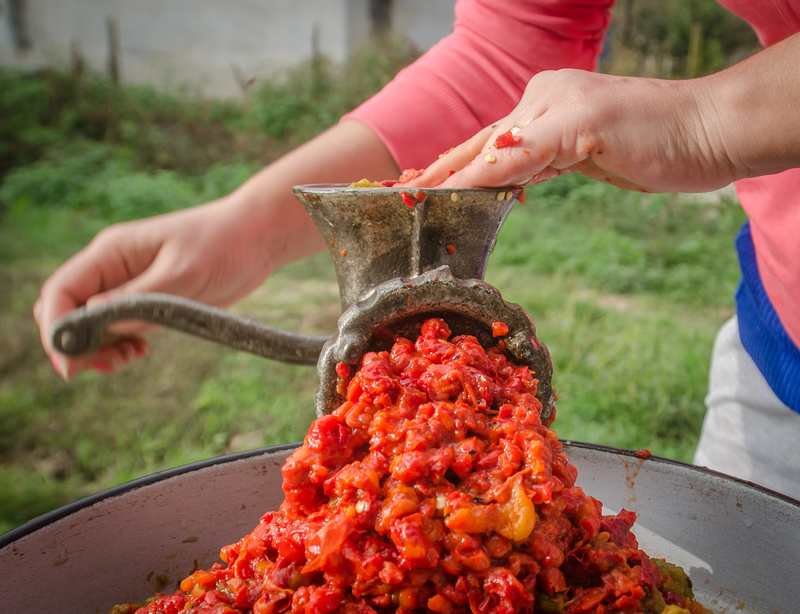 But this step is actually faster than it looks.
But this step is actually faster than it looks.
It is a time consuming but almost a little meditative process to stir the Ajvar.
After about 3-4 hours the ajvar has boiled down to a considerably thicker and very tasty relish.
]]>Svenska
Det blev paraplyernas karneval. Regnet vräkte ner men Strumica trummade på med sin sekelsgamla karnevalstradition i lördags. Ortsborna tillsammans med en internationell besökarskara stod redo med paraplyer, kameror, och förväntan över att få se årets masker, danser och kretioner framföras av karnevalsdeltagare från runt om i Europa och världen.
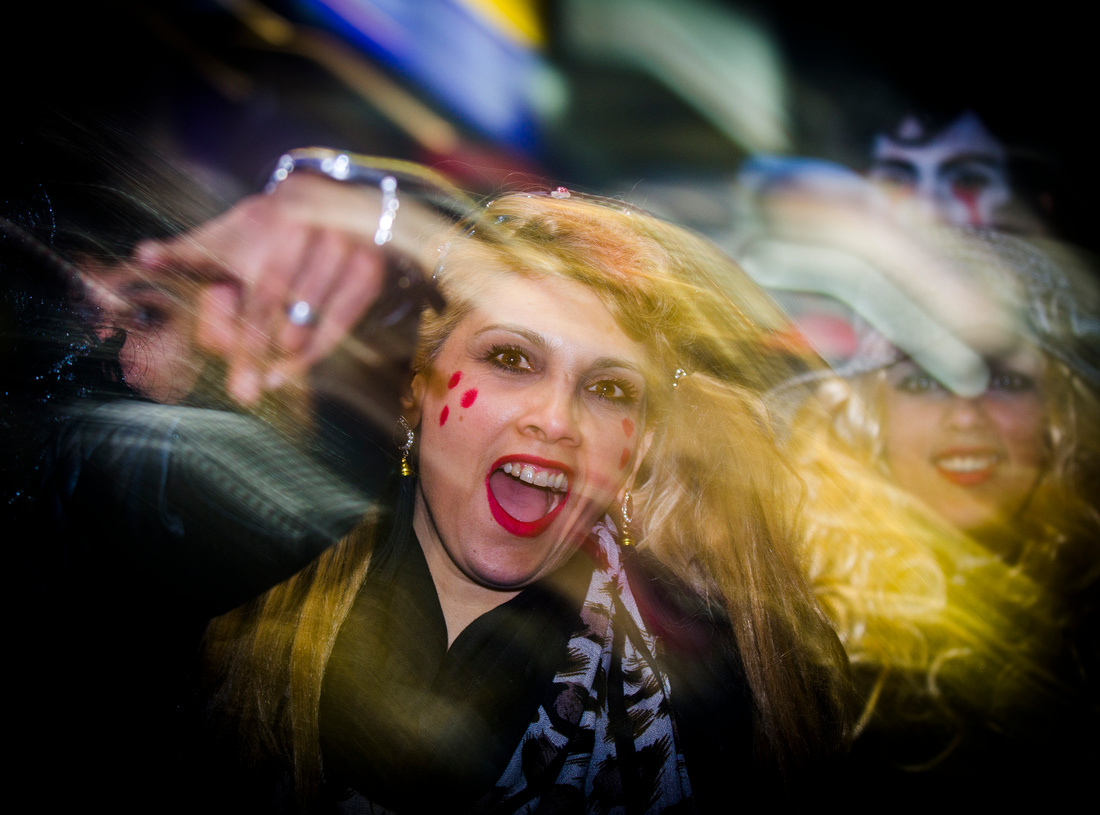
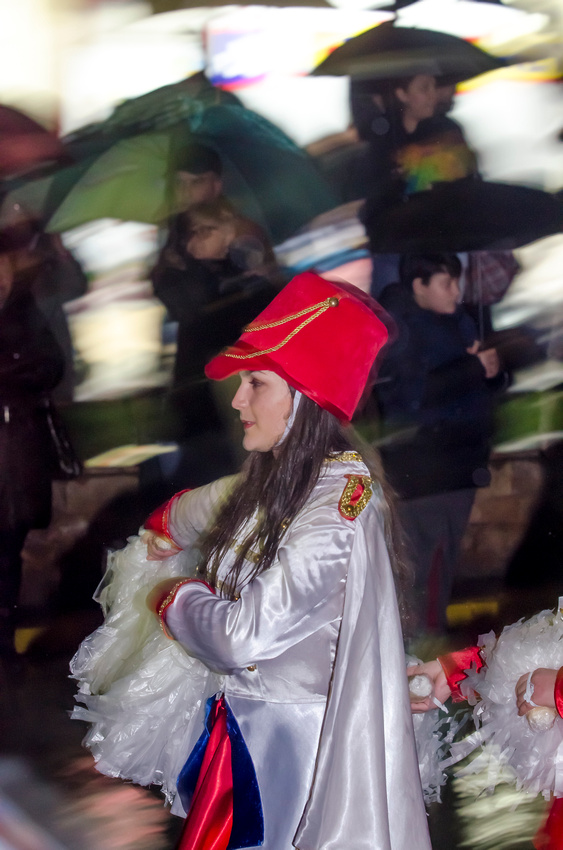
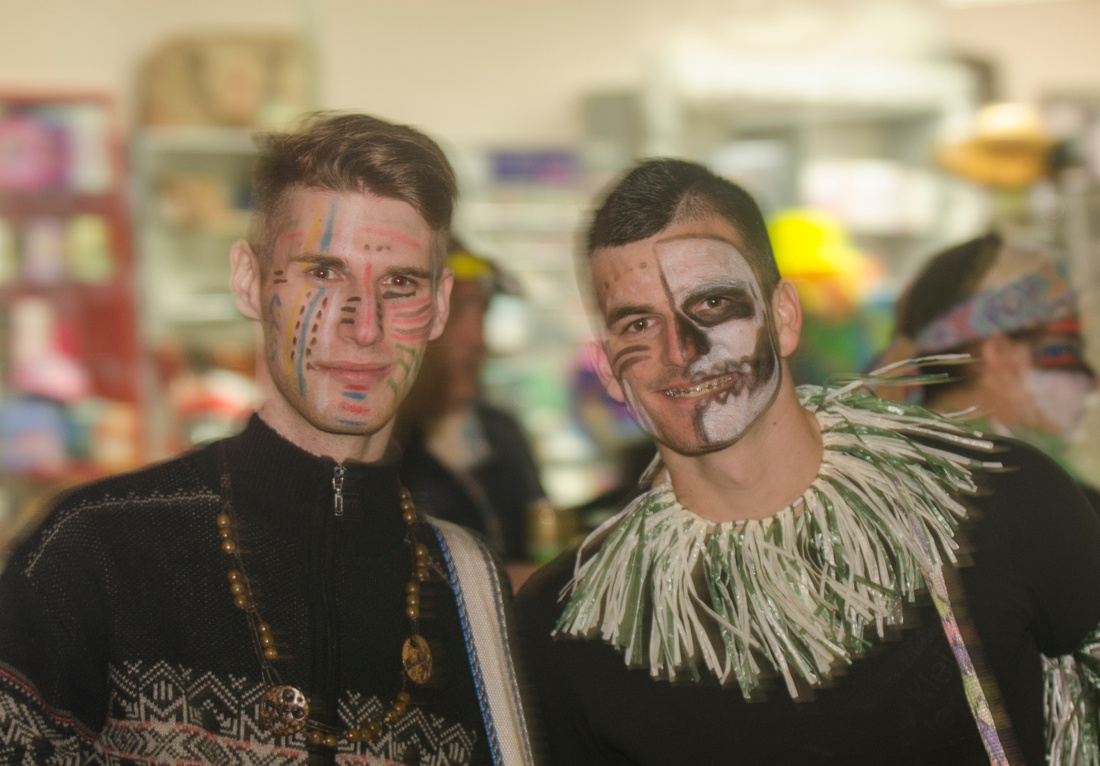
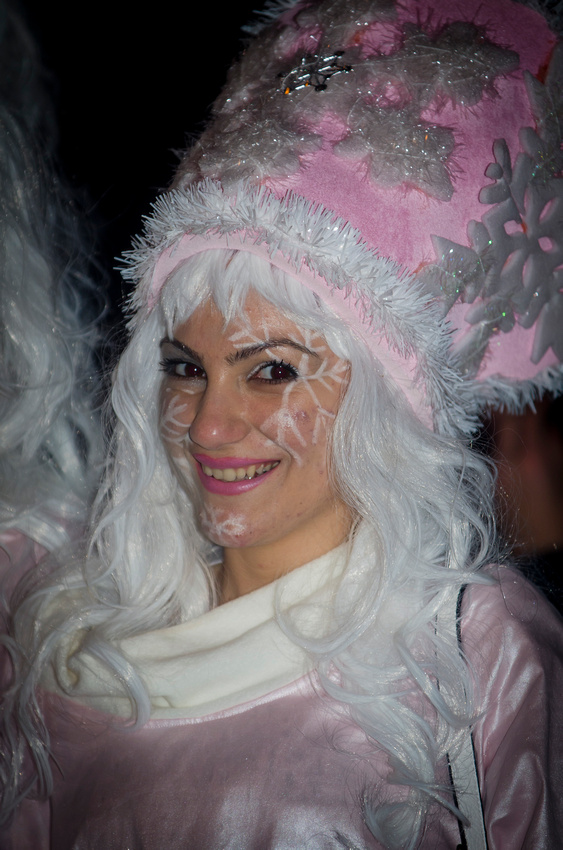
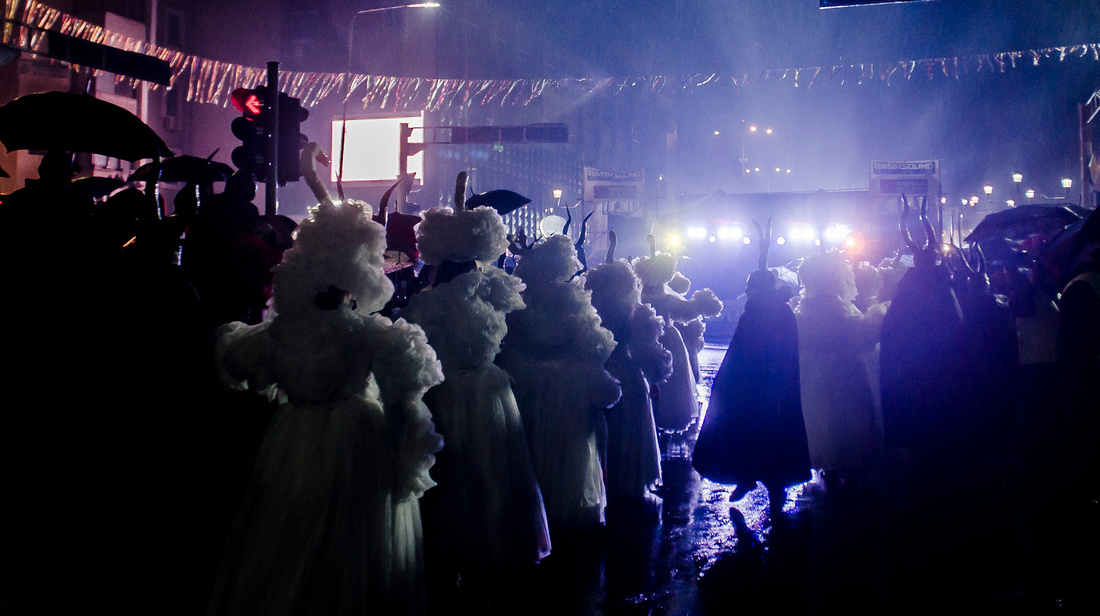


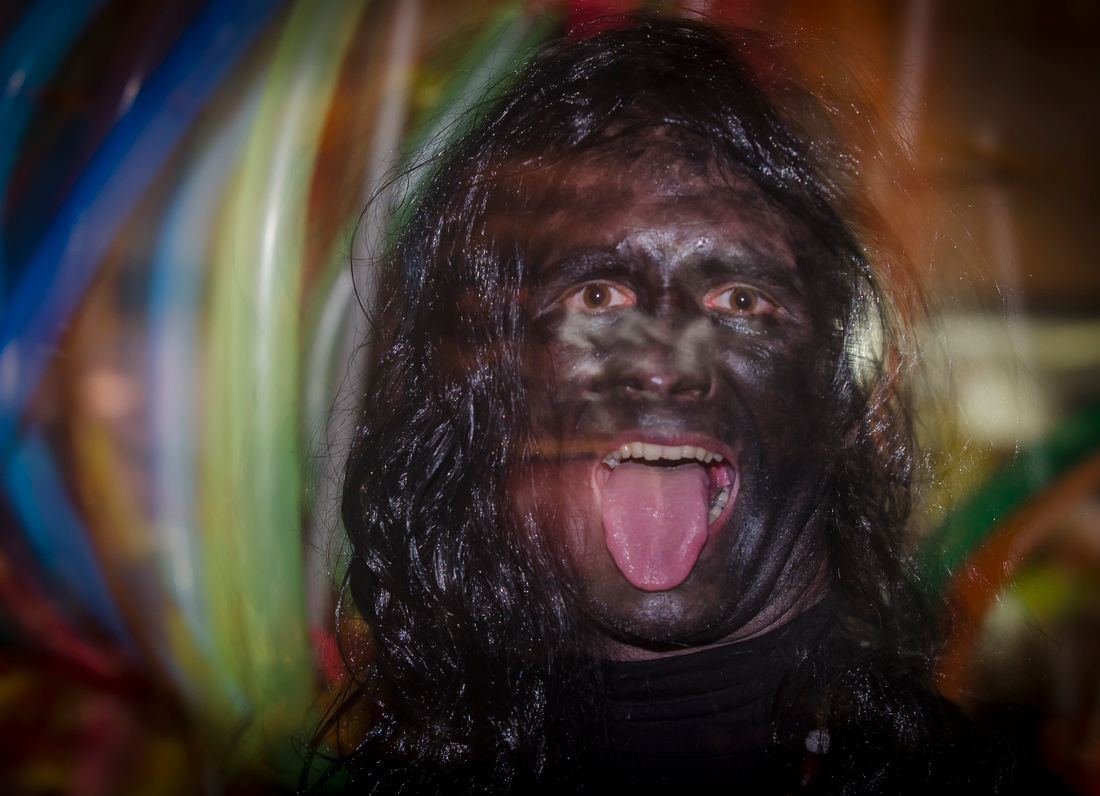

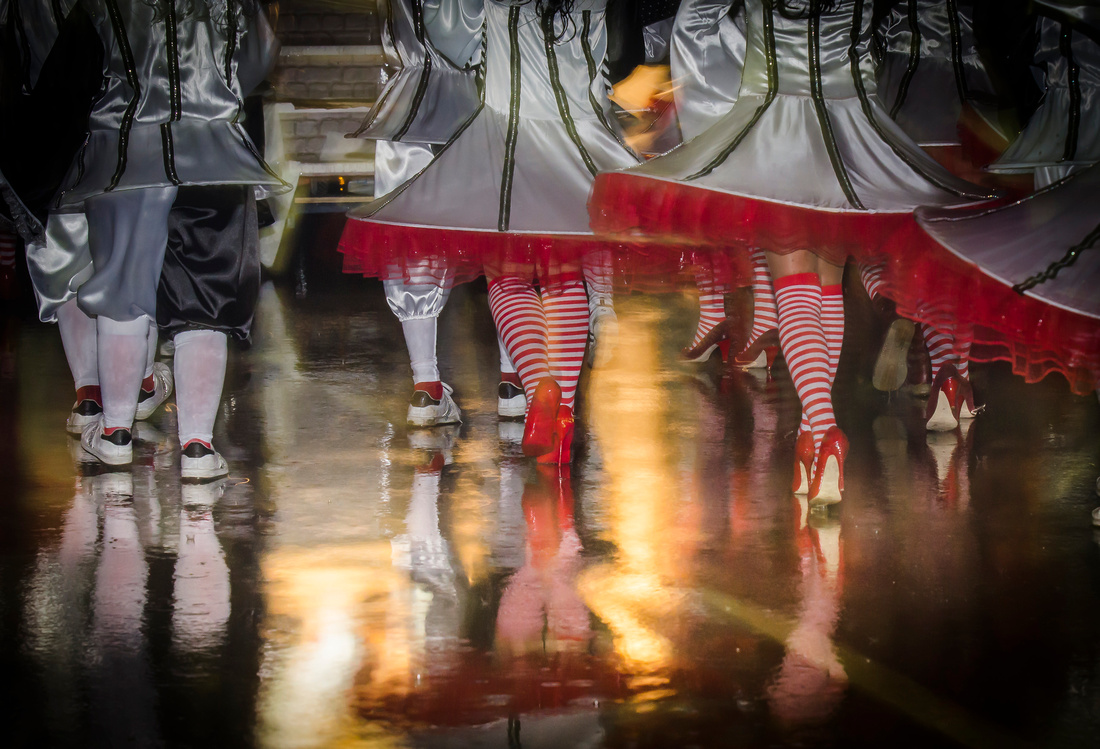
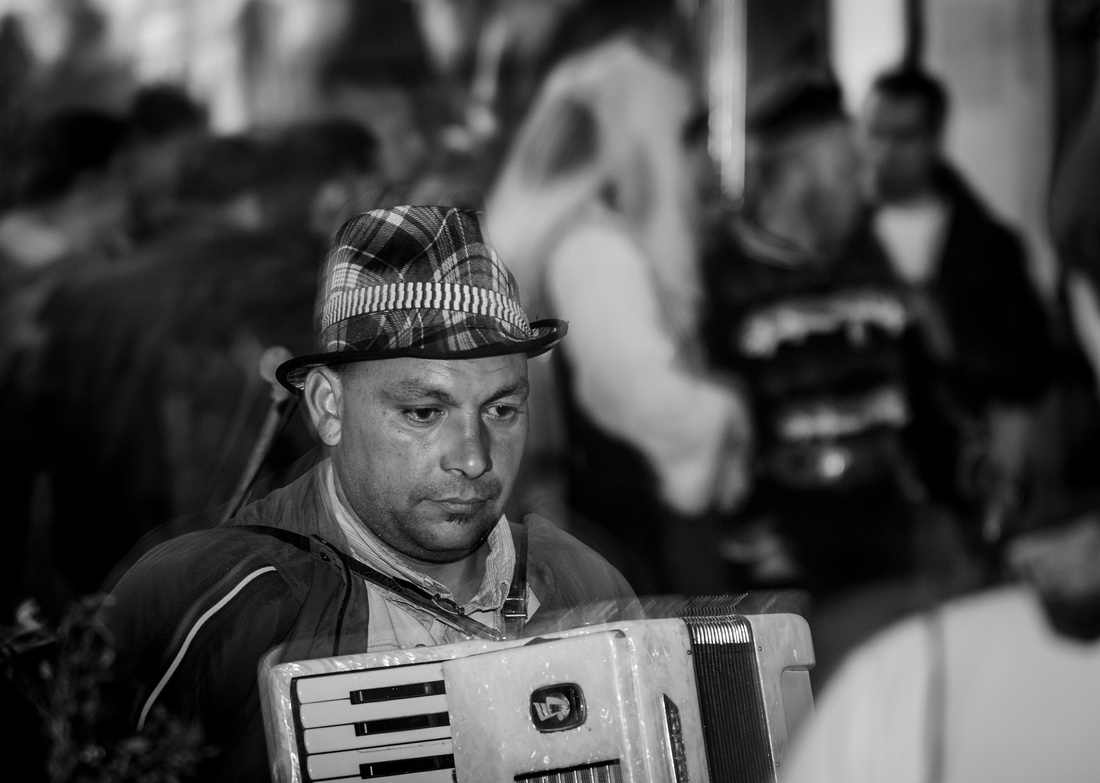
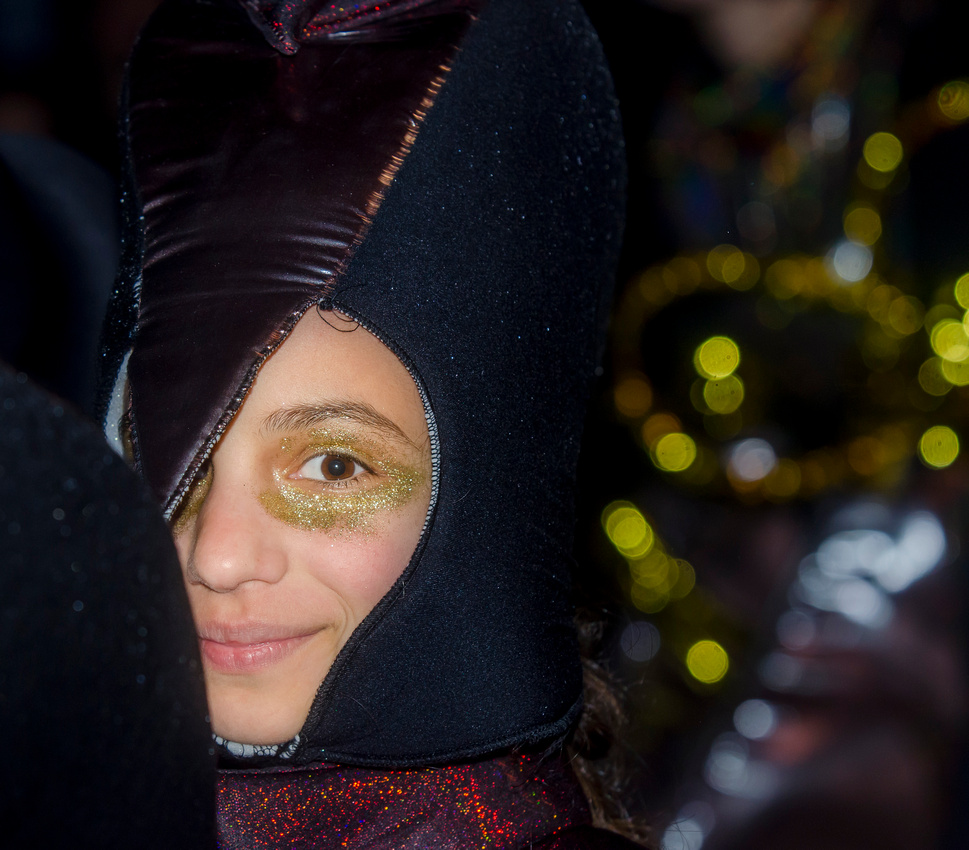
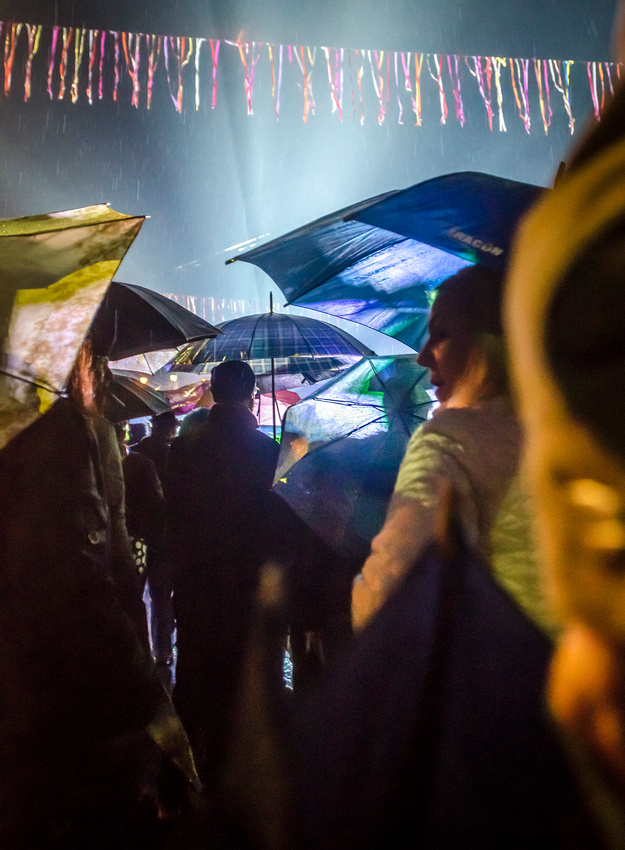

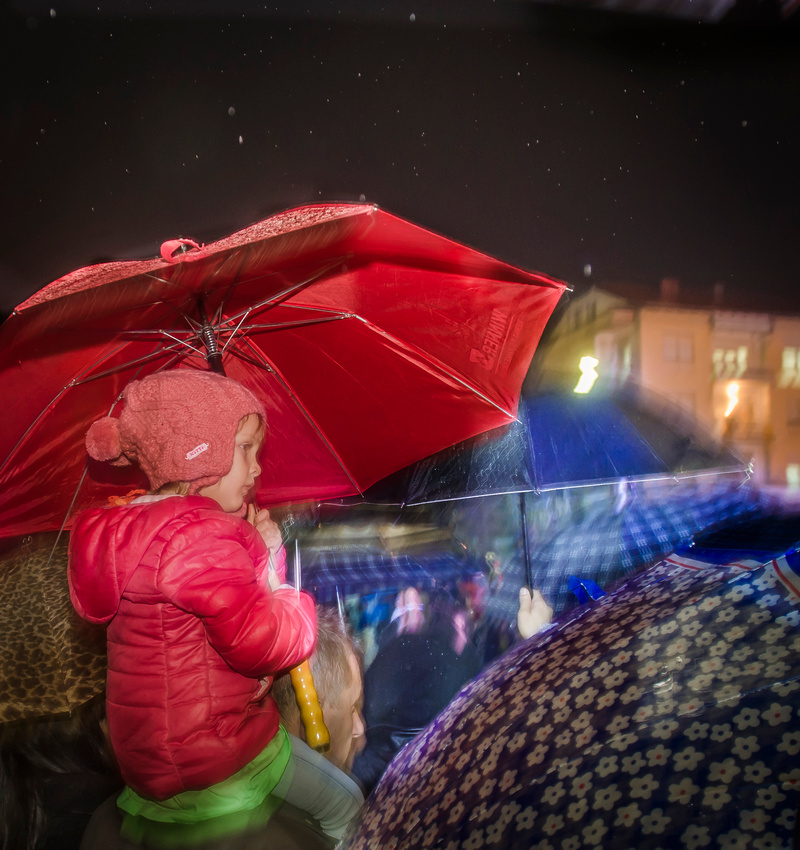


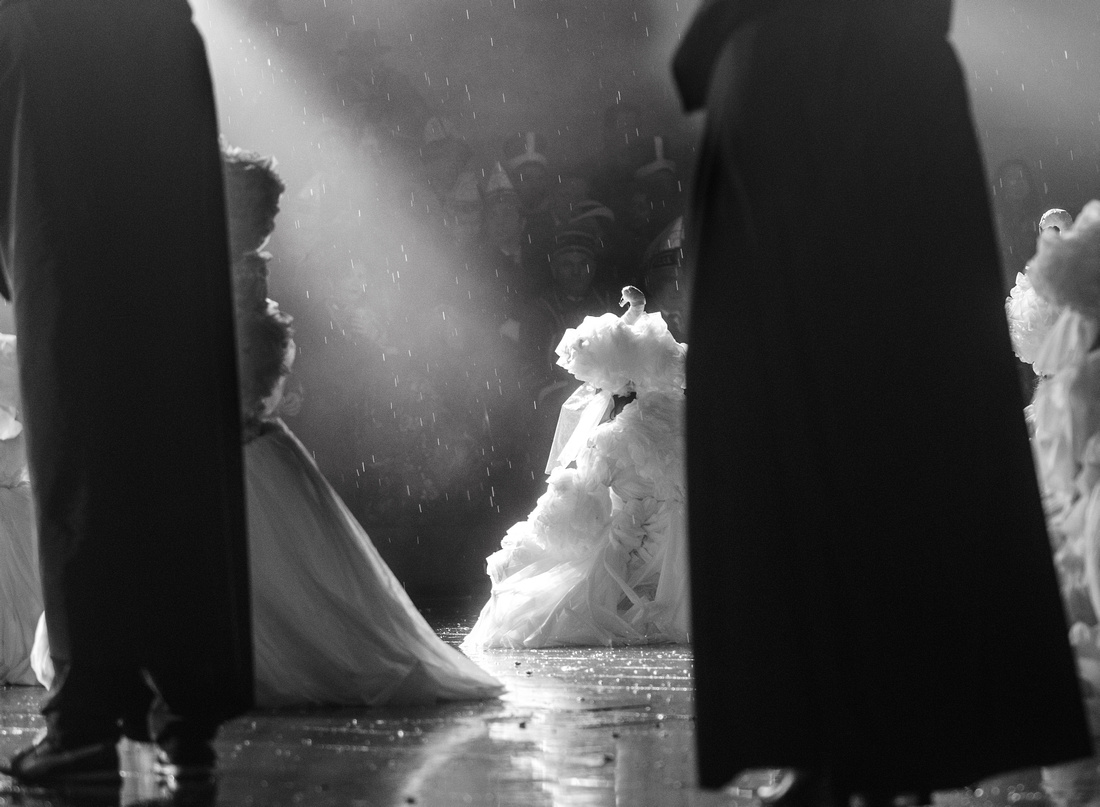
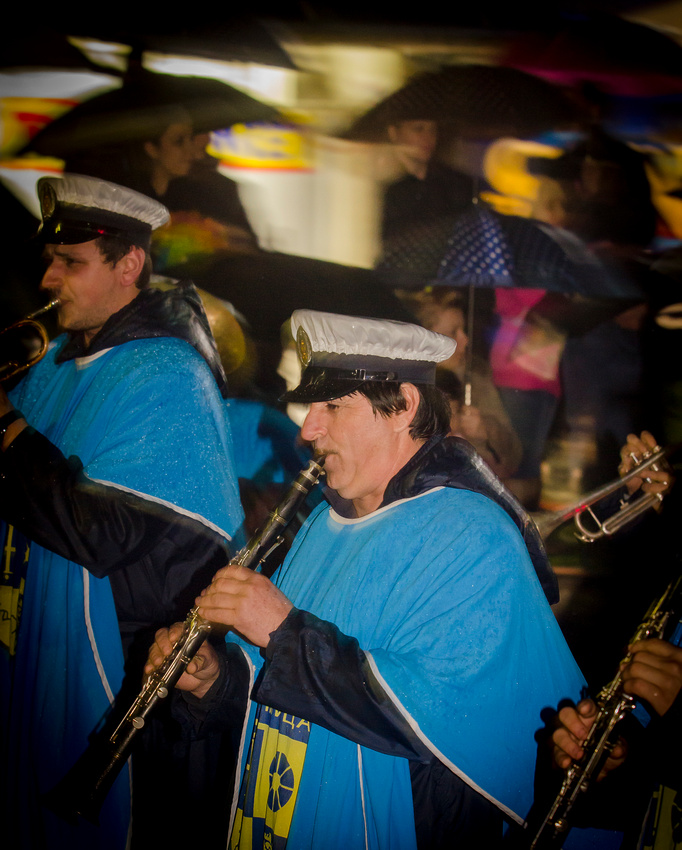
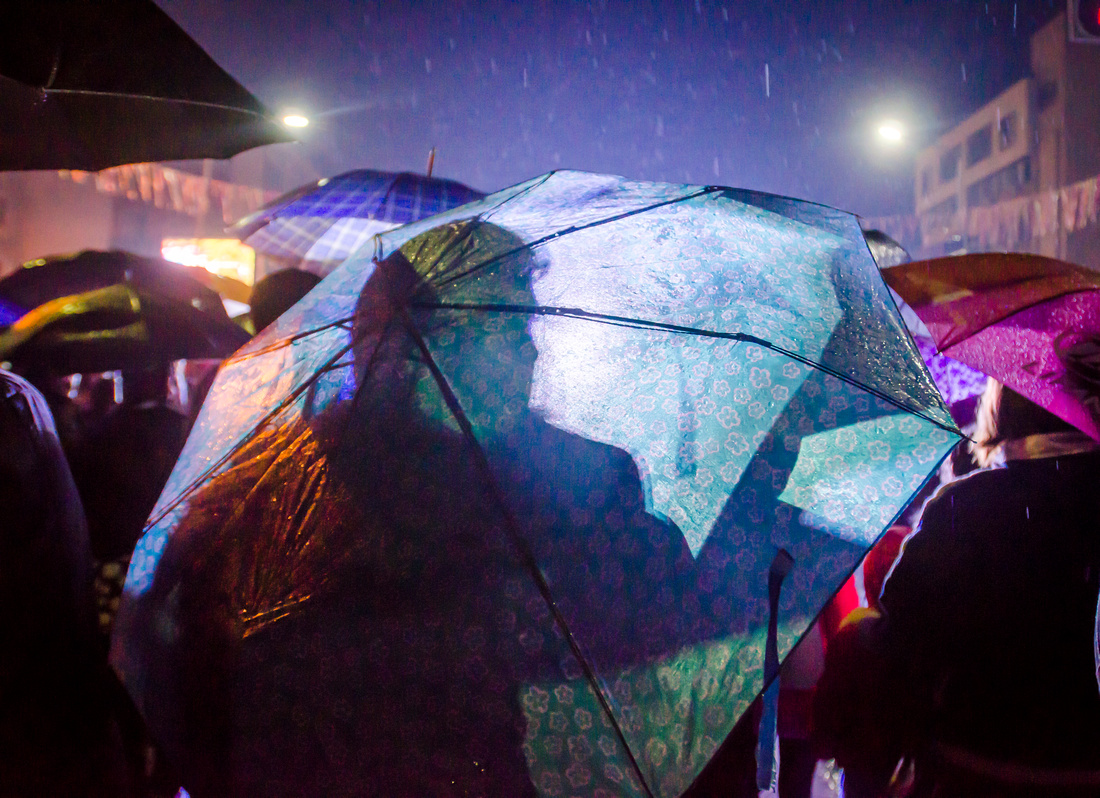
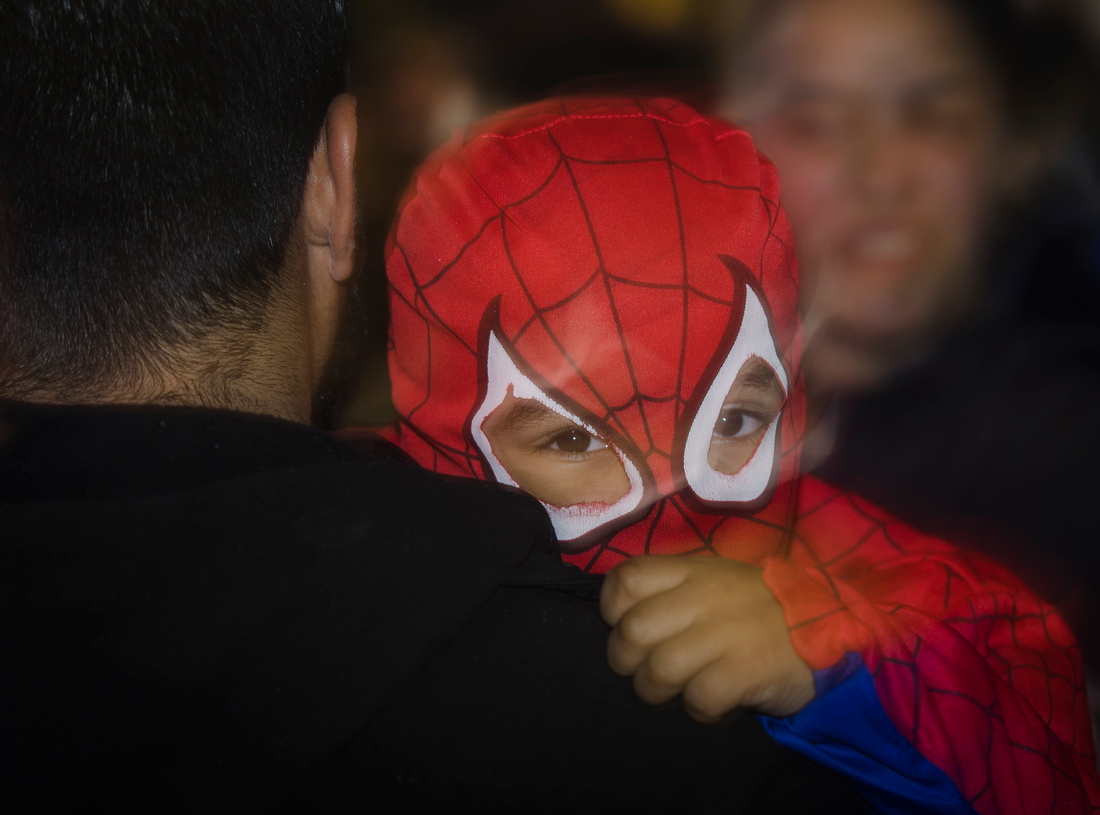
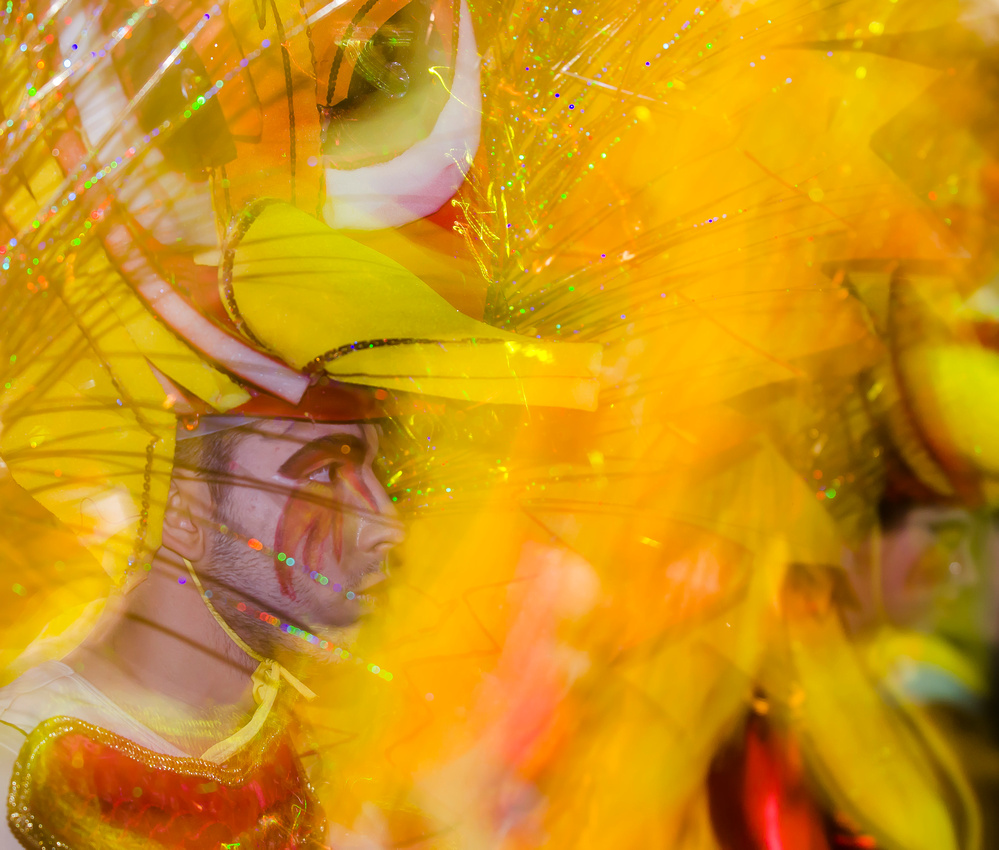
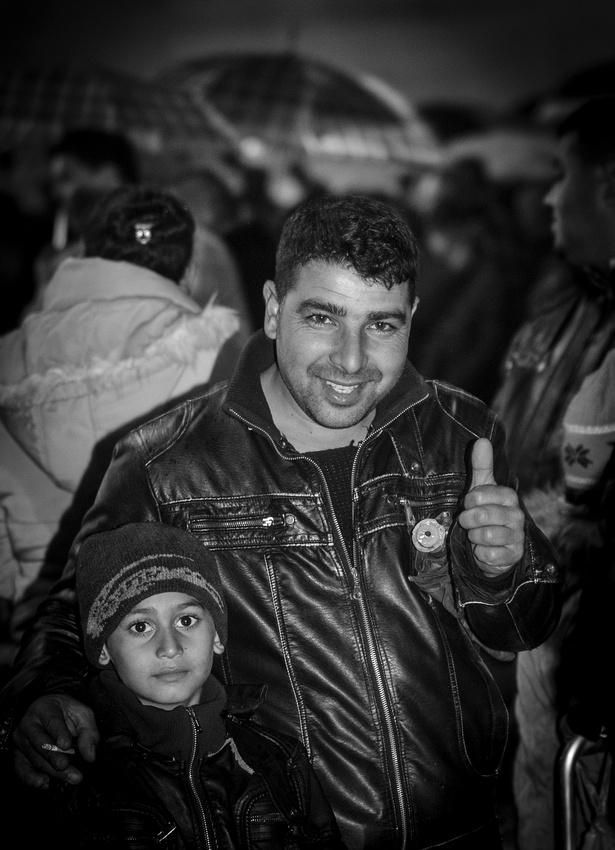
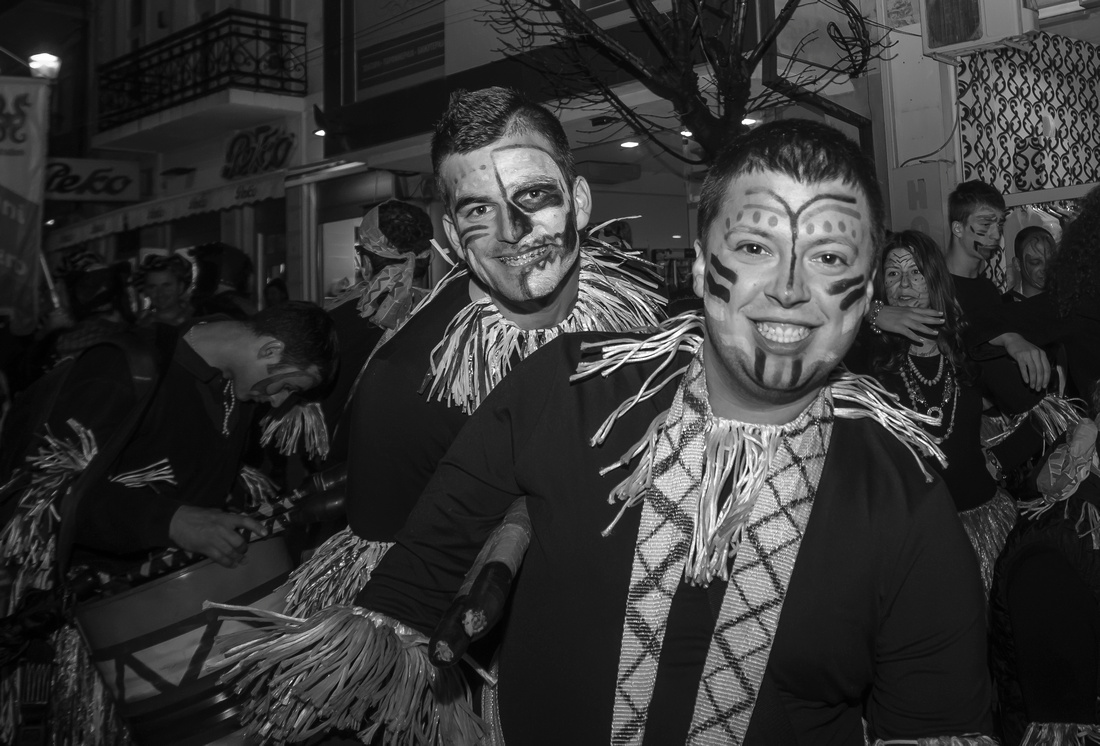

The long procession of participants in creative and often colorful costumes, made by the participants themselves, drag through the streets to finally reach the main square for a performance, often with dancing. The whole town, along with the media follow all its stages.
Below: some of my carnival pictures from last year.
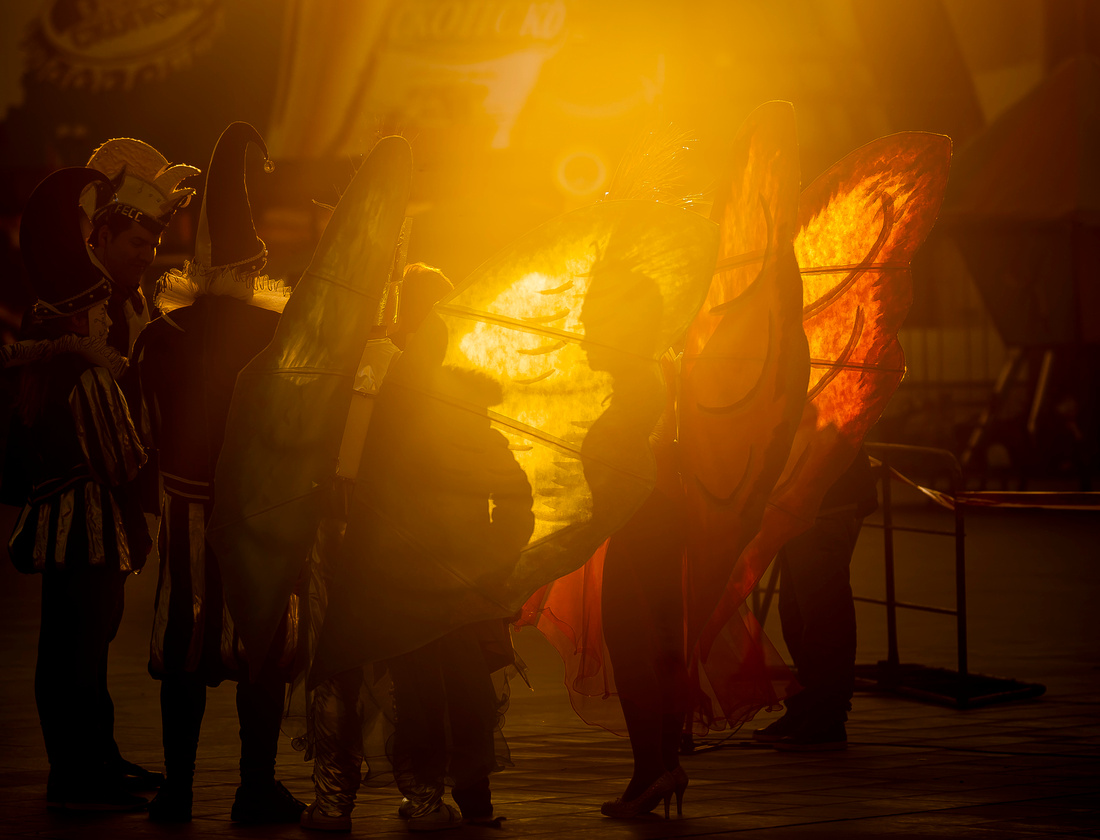
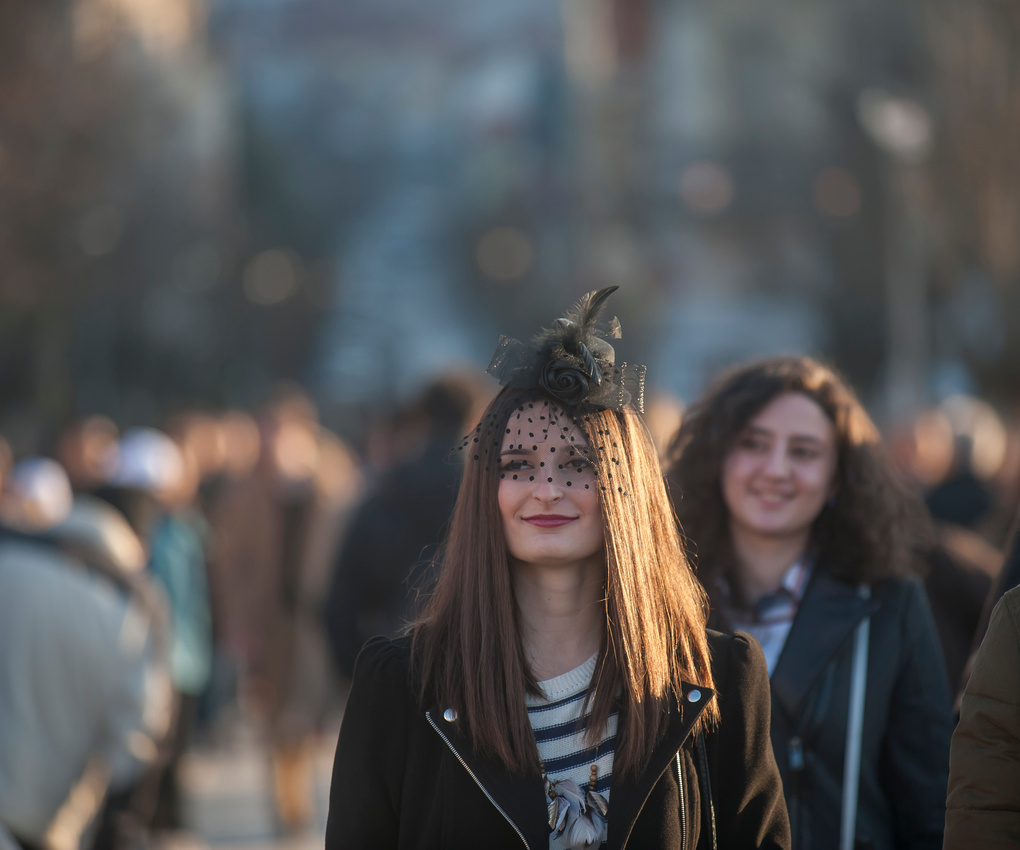
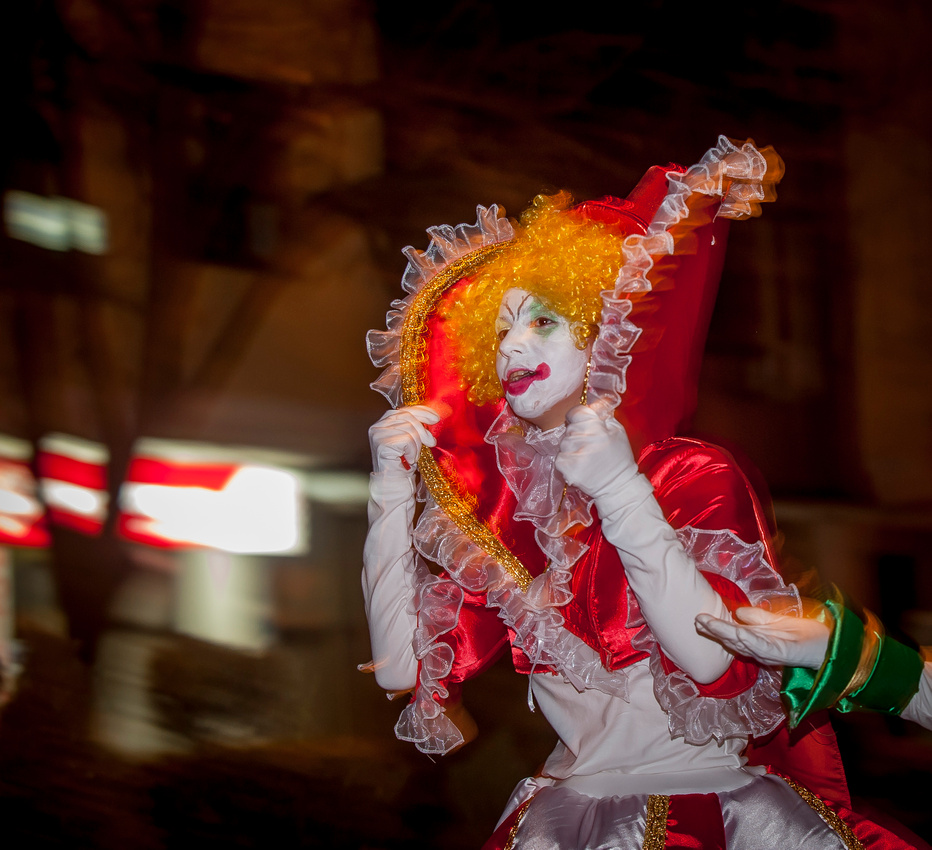
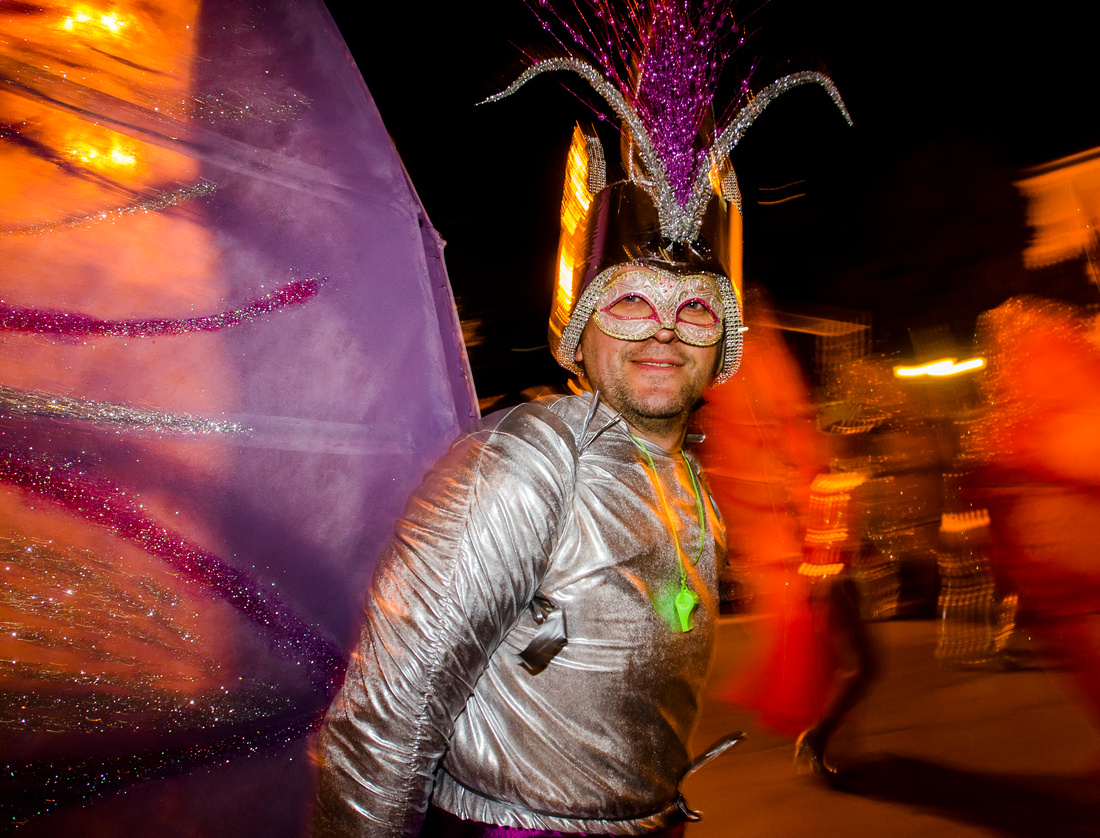

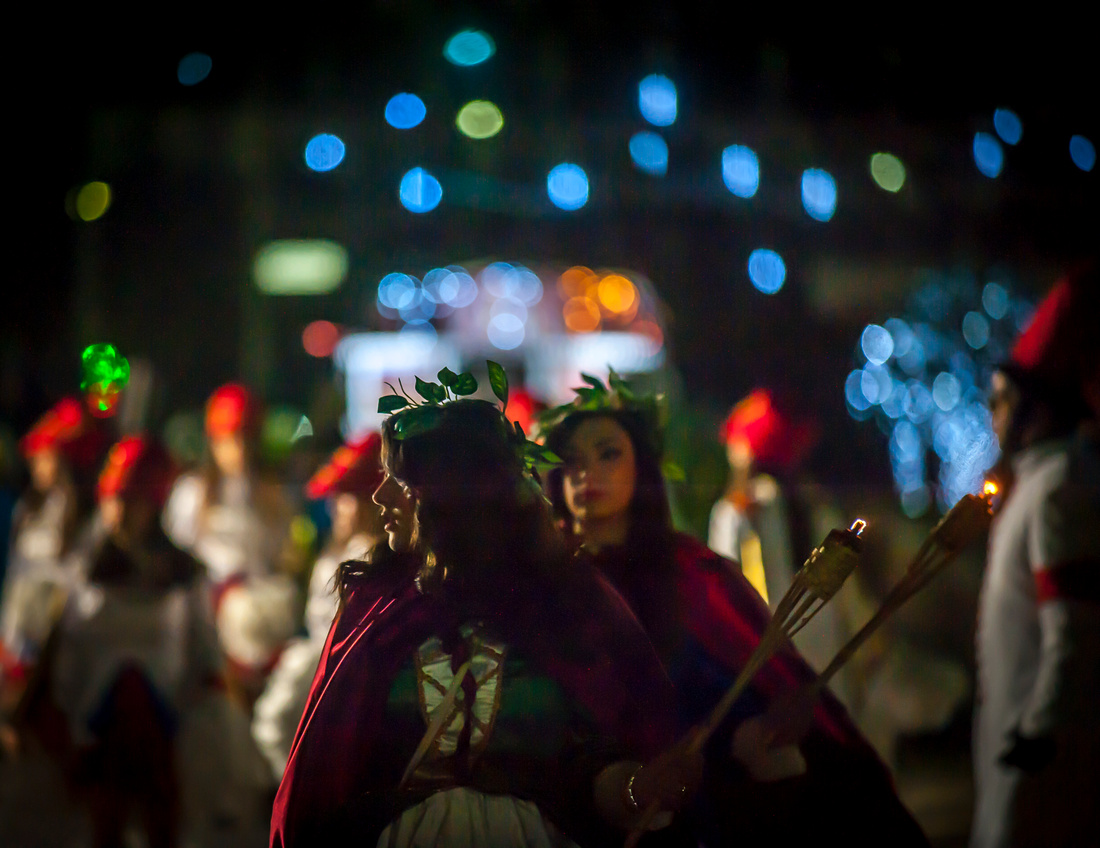
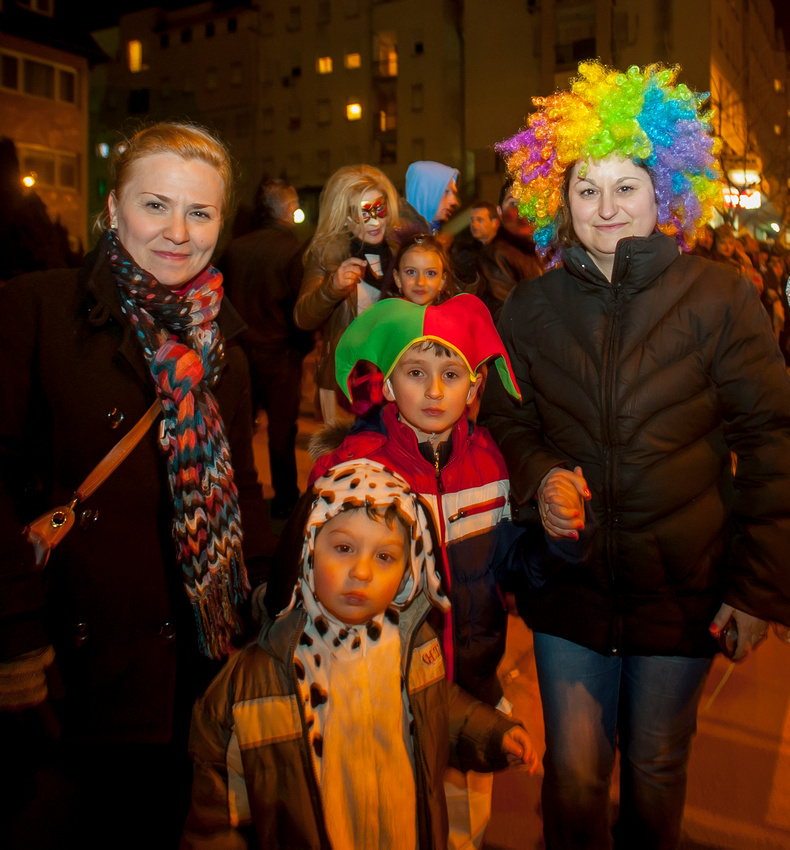
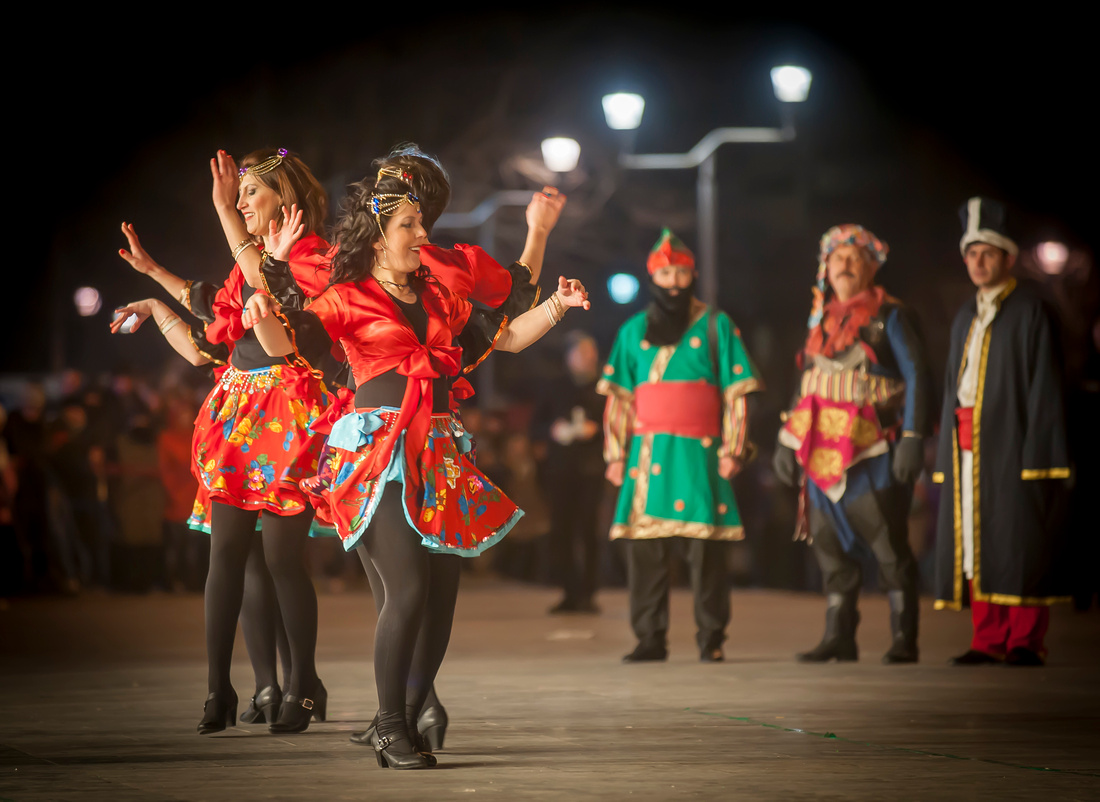
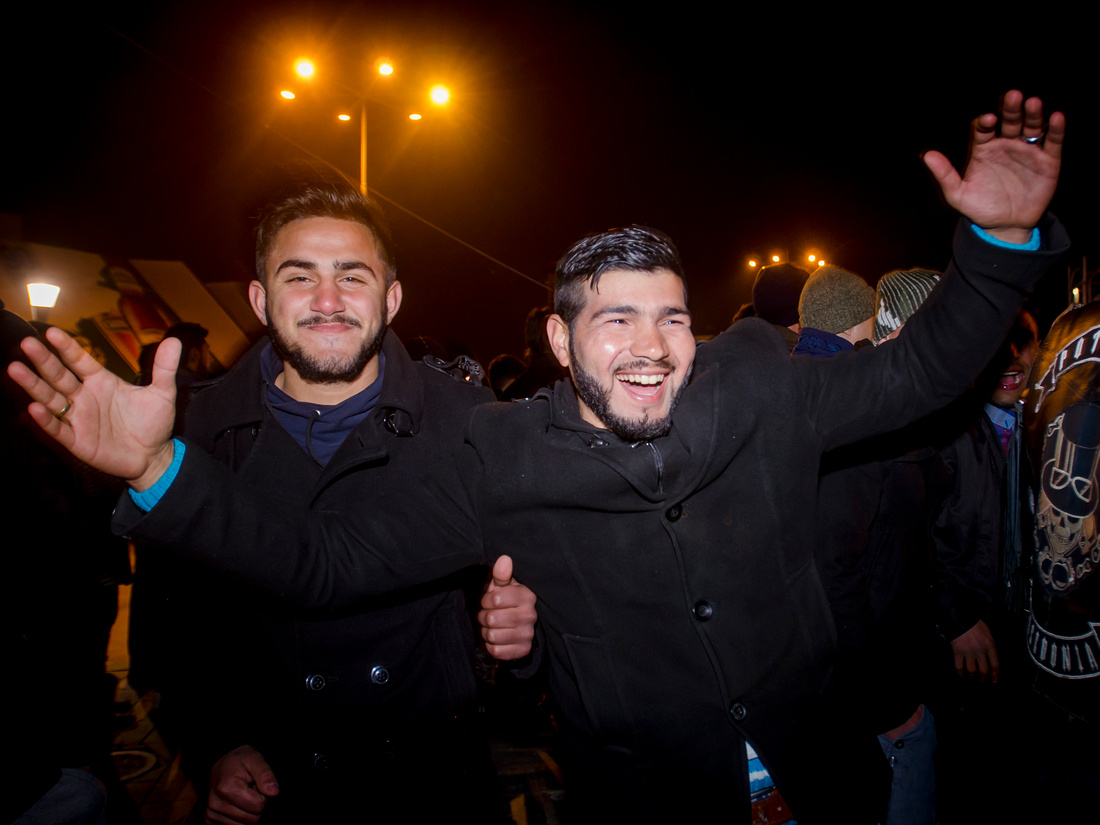
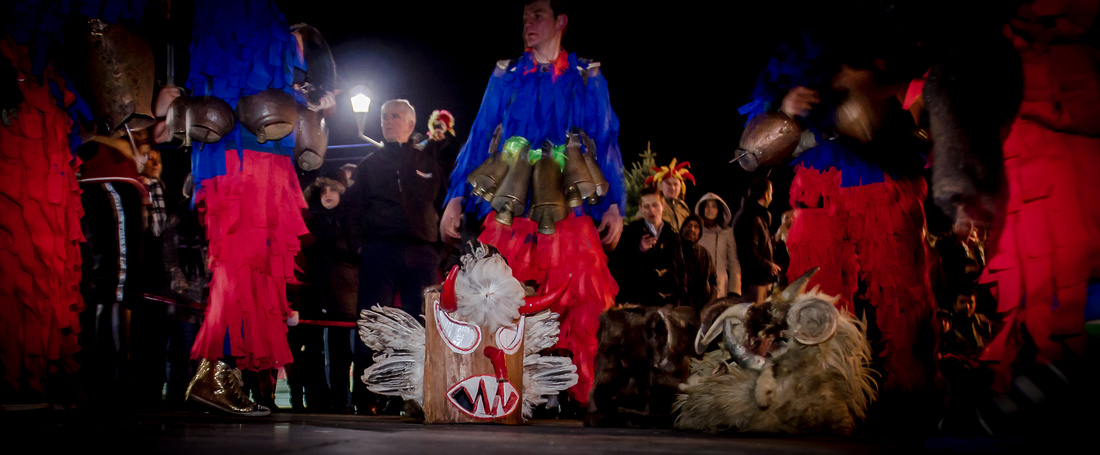
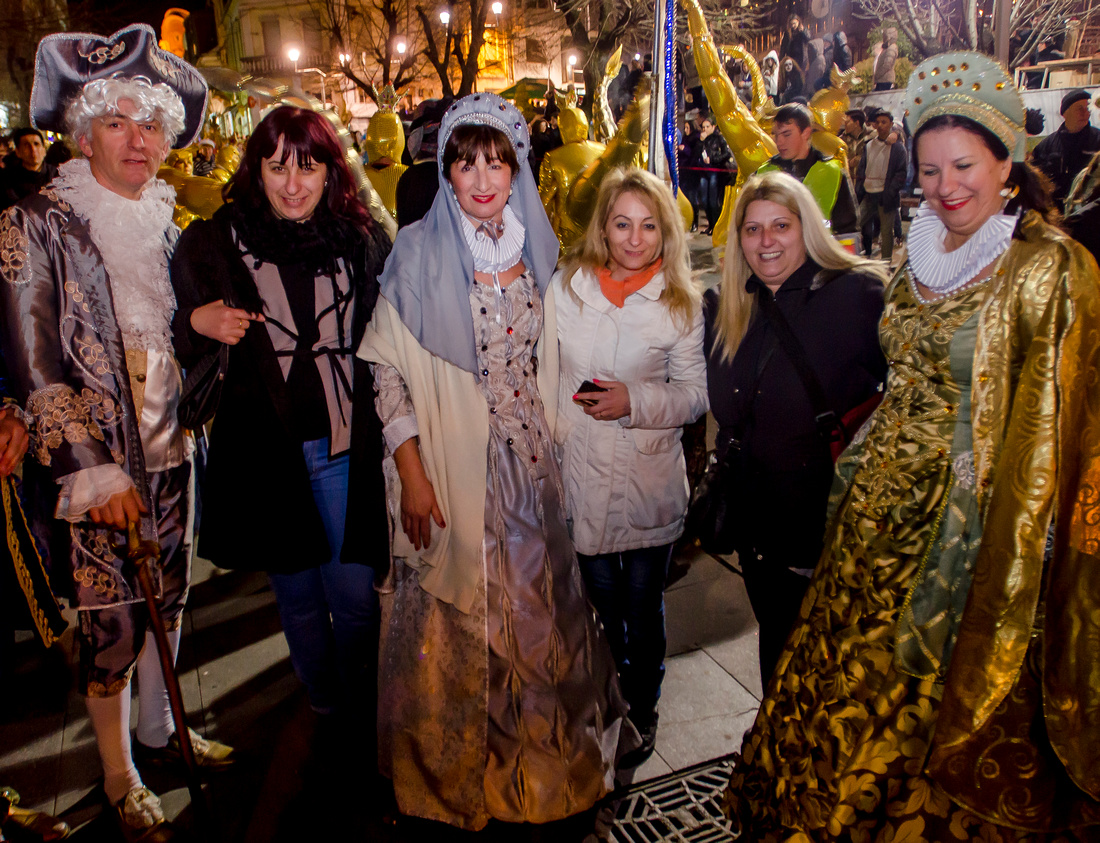
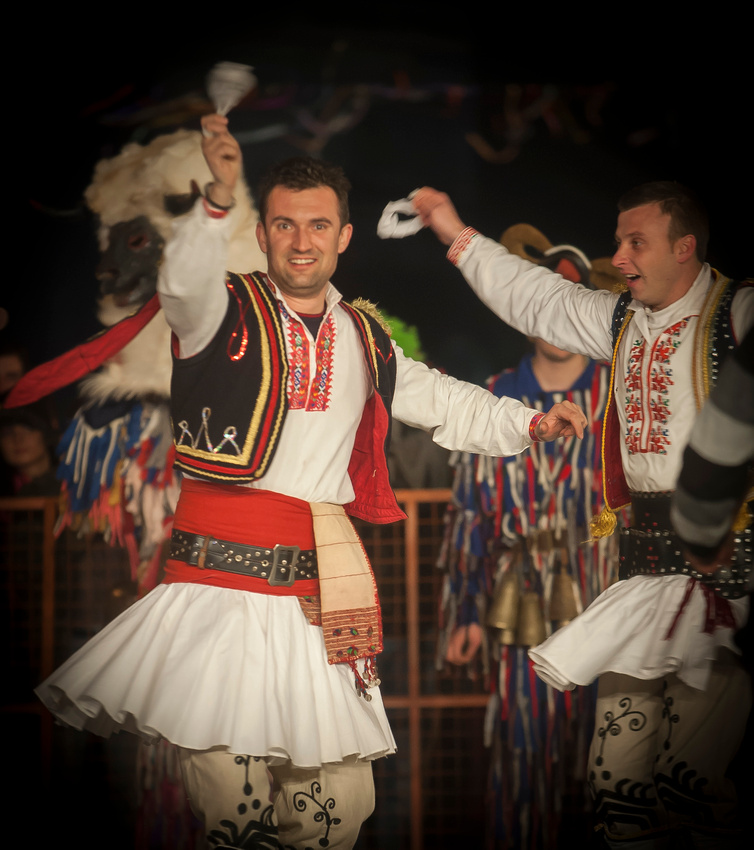
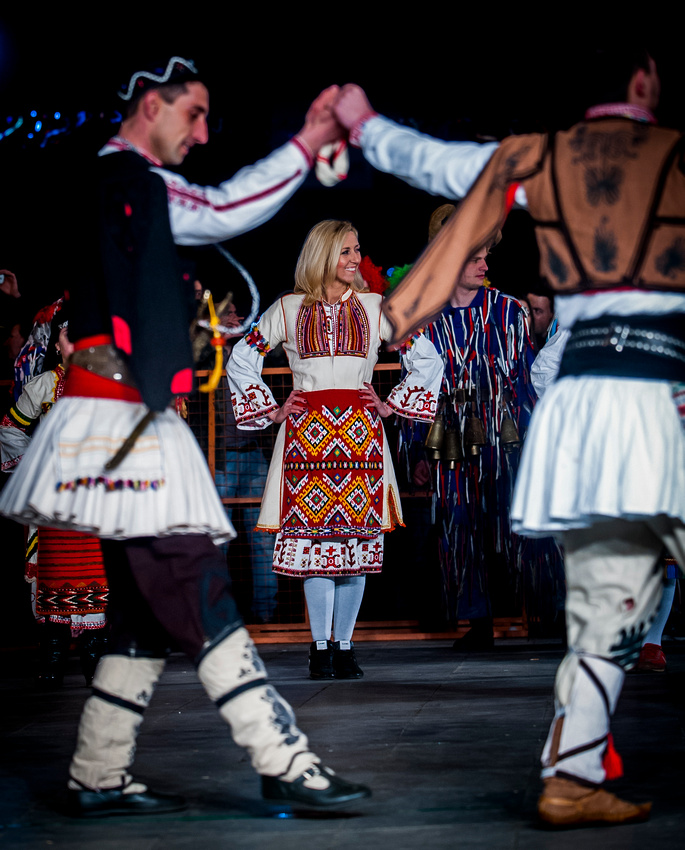
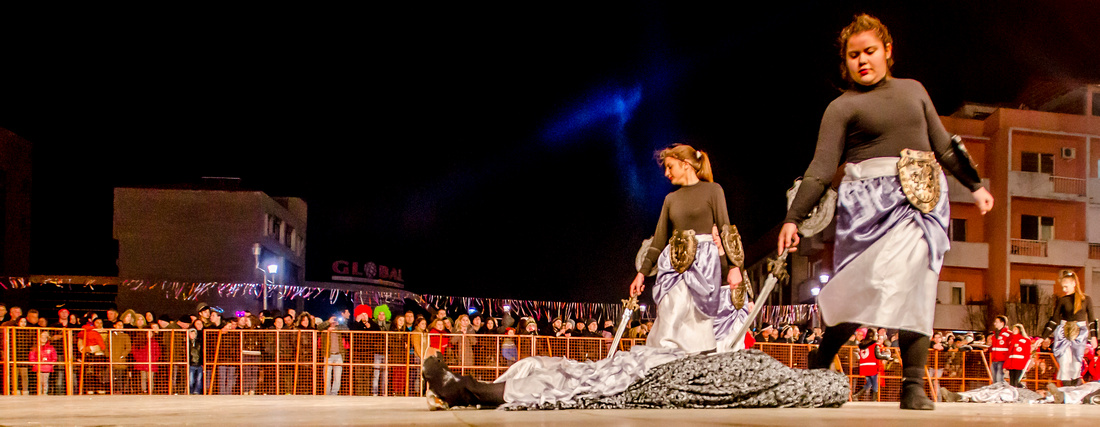
We are nevertheless not satisfied with the number of visitors and the selling - unfortunately it was below expectations - in view of which great artistic picture material we were displaying. But now however we are looking forward to new projects and exhibitions - also exploring the opportunities to relocate to another, more culturally awake place, with the healthy curiosity.
Heartfelt thanks from me and Viki to visitors and, above all, to the participating photographers who made this possible!
]]>While the gallery is a business, we also want to strike a blow for expressive photography, here in the town. We hoped from the beginning to find a number of people - both professionals and amateurs - around the globe who love to make such images, which were eager to participate in this inspiring project. It succeeded and we are proud to introduce the 24 participating, below. (1 were added during the week)
If you are in Strumica - do not miss this unique exhibition that is ongoing throughout May. All pictures are also for sale in the gallery.
The texts below are written by different persons, therefore the various style and length. ( If you are one of the photographer, you can still send us your biography, if you have not already done so. Also send us links to your pictures somewhere online, if you wish so.

 Mathieu Degrotte - France Is a french fine-art photographer living in the North-East of France. Passionate about photography since childhood, he came to be more involved into it by meeting fantastic people. The true beginning of his photographic journey came with the accomplishment of a photojournalism project in Nepal. After this life-changing experience he never ceased looking for new people with whom he could share and broaden his artistic vision. He is a lover of all kinds of art, and had the opportunity to follow several workshops in the Art School of Nancy. He likes to consider art as a whole, and not as several different fields. Being a completely self-taught photographer, he makes artwork conveying the fresh creativity he wants to hold on to. Having graduated from a top engineering school, he has the rigorous background needed to master all the technical aspects of photography. Today, his goal is to create unique pictures; pictures depicting an emotion, a reality, a brief moment. Even more than that, his pictures make the viewer think about themselves and the world they live in by escaping to another world. Beyond the visual aspect, Mathieu Degrotte wants to convey a poetic and oneiric message through photography. A call to introspection and to the acceptance of everyone's differences.
Mathieu Degrotte - France Is a french fine-art photographer living in the North-East of France. Passionate about photography since childhood, he came to be more involved into it by meeting fantastic people. The true beginning of his photographic journey came with the accomplishment of a photojournalism project in Nepal. After this life-changing experience he never ceased looking for new people with whom he could share and broaden his artistic vision. He is a lover of all kinds of art, and had the opportunity to follow several workshops in the Art School of Nancy. He likes to consider art as a whole, and not as several different fields. Being a completely self-taught photographer, he makes artwork conveying the fresh creativity he wants to hold on to. Having graduated from a top engineering school, he has the rigorous background needed to master all the technical aspects of photography. Today, his goal is to create unique pictures; pictures depicting an emotion, a reality, a brief moment. Even more than that, his pictures make the viewer think about themselves and the world they live in by escaping to another world. Beyond the visual aspect, Mathieu Degrotte wants to convey a poetic and oneiric message through photography. A call to introspection and to the acceptance of everyone's differences.
https://www.facebook.com/Mathieu.D.Art
http://www.m-d-art.com/home.html

 Casey Mithell - USA I was born and raised in Lincoln, Nebraska. Although I have always had an interest in photography I never truly pursued it until 2012 when my stepfather, an amazing photographer, encouraged me to buy my first DSLR. Since that time I have studied, learned and been lucky enough to meet so many great artists and photographers from all over the country. I truly consider myself an amateur and continue to learn everyday. As a photographer my passion is the outdoors and landscapes. I am in complete awe when I am looking at the varying clouds in the sky, watching the sunrise, or am out capturing a sunset. I find the most inspiration when driving around the country roads looking for that perfect viewpoint. When I’m exploring to capture it, this is as good at it gets and brings me real relaxation. I enjoy using HDR to capture the true essence of nature’s color. In conclusion the biggest reward in my work has been the idea that many of my favorite photos bring happiness to people and when they are displayed in their homes, it brings them memories of the good life of Nebraska. See casey's webpage for more of his work:
Casey Mithell - USA I was born and raised in Lincoln, Nebraska. Although I have always had an interest in photography I never truly pursued it until 2012 when my stepfather, an amazing photographer, encouraged me to buy my first DSLR. Since that time I have studied, learned and been lucky enough to meet so many great artists and photographers from all over the country. I truly consider myself an amateur and continue to learn everyday. As a photographer my passion is the outdoors and landscapes. I am in complete awe when I am looking at the varying clouds in the sky, watching the sunrise, or am out capturing a sunset. I find the most inspiration when driving around the country roads looking for that perfect viewpoint. When I’m exploring to capture it, this is as good at it gets and brings me real relaxation. I enjoy using HDR to capture the true essence of nature’s color. In conclusion the biggest reward in my work has been the idea that many of my favorite photos bring happiness to people and when they are displayed in their homes, it brings them memories of the good life of Nebraska. See casey's webpage for more of his work:
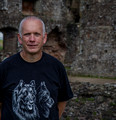
 Colin Roberts - U.K. Hi I’m Colin Roberts, I'm a photographer, living in the beautiful Forest of Dean in Gloucestershire, I have recently rediscovering my love of photography after a break for many years, but have been back doing this as a full time hobby for the last two years. Most of my photos which are landscape shots are shot in the Forest of Dean and surrounding areas. From a young age I always loved taking photos and still have one of my very first cameras which was a Kodak Brownie 127 and I am now using a Nikon D7000
Colin Roberts - U.K. Hi I’m Colin Roberts, I'm a photographer, living in the beautiful Forest of Dean in Gloucestershire, I have recently rediscovering my love of photography after a break for many years, but have been back doing this as a full time hobby for the last two years. Most of my photos which are landscape shots are shot in the Forest of Dean and surrounding areas. From a young age I always loved taking photos and still have one of my very first cameras which was a Kodak Brownie 127 and I am now using a Nikon D7000

 Selcuk Gulen - Turkey I am Selcuk Gulen , I was born in 1982 in Sakarya - Turkey still living at the same place. Actually my main professional is sailor. I met DSLR camera the first time 3 years ago. I saw a lot of places in the World , I love photograpy especially long exposure and strobist photograpy.
Selcuk Gulen - Turkey I am Selcuk Gulen , I was born in 1982 in Sakarya - Turkey still living at the same place. Actually my main professional is sailor. I met DSLR camera the first time 3 years ago. I saw a lot of places in the World , I love photograpy especially long exposure and strobist photograpy.
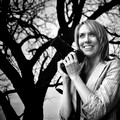
 Michelle Garcia - USA
Michelle Garcia - USA
Michelle is a self-employed photographer in Capac, Michigan where she currently resides and owns her business of eight years, Country Rose Designs. In 2011 she was chosen by Kodak to be displayed in Times Square, NYC, NY on their marquee. She has placed in the Top 10 Photographers in Michigan in 2011, 2012 and 2014 and won several awards for her images. Michelle photographs weddings, families, senior students celebrating their graduation from high school, newborns and children. She is currently trying to build her landscape portfolio and break into the commercial side of selling her photography to local businesses. Her work can be seen currently at local printing labs, advertisements and websites. When she is not behind the camera photographing or in front of a computer screen retouching images, she is busy taking care of her three young children. She enjoys traveling, hiking, being in nature and spending time with her family and friends. To see more of her work or contact her please visit:
Website: www.CountryRoseDesigns.com
Facebook: www.facebook.com/CountryRoseDesigns
Instagram: https://instagram.com/michelle_crd/

 Stole Angelov - Macedonia
Stole Angelov - Macedonia
Stole Angelov from Strumica, Makedonien who has worked with photography since 2005, and now works as a photo journalist at the webbportal www.strumicadenes.mk, and more with private photo projects.
http://freexel.deviantart.com/
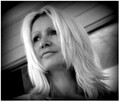
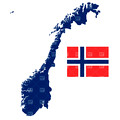 Lillian Molstad Andresen - Norway. I was born in Oslo, but while the years passed, I've moved around a bit and thereby gained experience of many diverse landscapes and towns. At present I live in Drammen city. I come from a creative family where arts and crafts has hosted dominant. This I have taken with me , and then I about 5 years ago got my first Digital SLR camera, and got "bitten by the bug". I have since that been "high and low" with the camera, travelled on photo tours nationally and internationally. I have through the years been highly credited for my photos. At international "PhotoExtract.com" has my photos lying on the first page of their Magazin whopping, 18 times from 2013 until today. I also won 1st place on various internet media for photography and has also repeatedly been at 1 page at 500px - the world's largest photo community. On 23 May 2015 I have been offered to hold a summer exhibition at the gallery "Stunning Pictures" at Square West in Drammen city in Norway. The exhibition will run through August 2015. I also got the honor of hanging up pictures in, all rental units in Nordskot Brygge in Steigenberger, where images can be purchased / ordered if desired. I've also got a big exhibition in "Saga Games" in Steigen. Saga Games celebrates 30 years's anniversary year. The exhibition is held in Feskbruke in Nordskot in Steigen from July 26 - August 2, 2015.
Lillian Molstad Andresen - Norway. I was born in Oslo, but while the years passed, I've moved around a bit and thereby gained experience of many diverse landscapes and towns. At present I live in Drammen city. I come from a creative family where arts and crafts has hosted dominant. This I have taken with me , and then I about 5 years ago got my first Digital SLR camera, and got "bitten by the bug". I have since that been "high and low" with the camera, travelled on photo tours nationally and internationally. I have through the years been highly credited for my photos. At international "PhotoExtract.com" has my photos lying on the first page of their Magazin whopping, 18 times from 2013 until today. I also won 1st place on various internet media for photography and has also repeatedly been at 1 page at 500px - the world's largest photo community. On 23 May 2015 I have been offered to hold a summer exhibition at the gallery "Stunning Pictures" at Square West in Drammen city in Norway. The exhibition will run through August 2015. I also got the honor of hanging up pictures in, all rental units in Nordskot Brygge in Steigenberger, where images can be purchased / ordered if desired. I've also got a big exhibition in "Saga Games" in Steigen. Saga Games celebrates 30 years's anniversary year. The exhibition is held in Feskbruke in Nordskot in Steigen from July 26 - August 2, 2015.
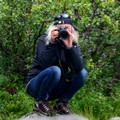
 Eva Kristiansen - Norway. I am a hobby photographer from Tromsø, North of Norway. My passion is the light and the colors of nature and the sky; The Sun and Northern Lights.
Eva Kristiansen - Norway. I am a hobby photographer from Tromsø, North of Norway. My passion is the light and the colors of nature and the sky; The Sun and Northern Lights.

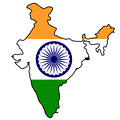 Mohammad Rustam Azmi - India I am Indian based in Dubai, United Arab Emirates. I have spend the last 25 years in Dubai where I saw building high rise tower in sand. It always fascinated me to take Photos of Beautiful Dubai. So in 2013 I started learning about photography and started practicing as well. I am among the finalist of HIPA 2014 and got published in many magazines and in Airline in-flight magazine.
Mohammad Rustam Azmi - India I am Indian based in Dubai, United Arab Emirates. I have spend the last 25 years in Dubai where I saw building high rise tower in sand. It always fascinated me to take Photos of Beautiful Dubai. So in 2013 I started learning about photography and started practicing as well. I am among the finalist of HIPA 2014 and got published in many magazines and in Airline in-flight magazine.

 Donna Phillips USA. I have had the privilege to live in two beautiful coastal areas of the USA, New England during the first half of my life and South Florida since my late twenties. Hence my love of the water, colorful landscapes and dramatic changes in light. Although my passion for photography is still at an amateur level, it has become a wonderful distraction from the many hats I wear in my professional and personal life. There is a natural high that comes with chasing an amazing sunset at the end of a long day or capturing a beautiful vista during my travels. Being able to share that passion with friends and acquaintances around the globe is truly a gratifying experience.
Donna Phillips USA. I have had the privilege to live in two beautiful coastal areas of the USA, New England during the first half of my life and South Florida since my late twenties. Hence my love of the water, colorful landscapes and dramatic changes in light. Although my passion for photography is still at an amateur level, it has become a wonderful distraction from the many hats I wear in my professional and personal life. There is a natural high that comes with chasing an amazing sunset at the end of a long day or capturing a beautiful vista during my travels. Being able to share that passion with friends and acquaintances around the globe is truly a gratifying experience.

 Alexandria Lopez - USA is a street photography enthusiast. from New York City. Despite being shy by nature, people are her favorite subject. - A photo without a face is missing a main ingredient.
Alexandria Lopez - USA is a street photography enthusiast. from New York City. Despite being shy by nature, people are her favorite subject. - A photo without a face is missing a main ingredient.
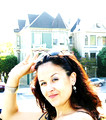
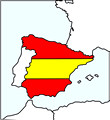 Monica Rodriguez - Spain. Monica was born in 1977 in Gijón, Asturias, a coastal city in the northwest of Spain. Mónica is passionate about anything creative. When she was a child she studied in the conservatory of music and she started to sing in a local rock band at the age of 18. She has always been fascinated by poetry and art. Mónica has a Hispanic philology degree and she is currently working as a Spanish language and literature teacher in a secondary school in Barcelona She loves traveling and taking photographs. "I think it's really amazing to see the world through another person's eye and if I can make this happen, then photography makes me fell alive"
Monica Rodriguez - Spain. Monica was born in 1977 in Gijón, Asturias, a coastal city in the northwest of Spain. Mónica is passionate about anything creative. When she was a child she studied in the conservatory of music and she started to sing in a local rock band at the age of 18. She has always been fascinated by poetry and art. Mónica has a Hispanic philology degree and she is currently working as a Spanish language and literature teacher in a secondary school in Barcelona She loves traveling and taking photographs. "I think it's really amazing to see the world through another person's eye and if I can make this happen, then photography makes me fell alive"

 Göran Landström - Sweden. Göran who comes from the northern Swedish town of Kiruna, has in more than 15 years been working with the most fun thing he knows - moving images. He says: "There is nothing more satisfying than when a film is completed after hours in editing - and the movie is appreciated by the audience, whether in news reports, trailers, training films or commercials. The most important ingredient a film must have, is that it must touch the viewer, in some way. "Göran also works with assignments, as a still photographer, at for an example weddings and events.
Göran Landström - Sweden. Göran who comes from the northern Swedish town of Kiruna, has in more than 15 years been working with the most fun thing he knows - moving images. He says: "There is nothing more satisfying than when a film is completed after hours in editing - and the movie is appreciated by the audience, whether in news reports, trailers, training films or commercials. The most important ingredient a film must have, is that it must touch the viewer, in some way. "Göran also works with assignments, as a still photographer, at for an example weddings and events.

 Magdalena Näsström - Sweden. I live in Umeå, a coastal town in northern Sweden. I am originally from a small town in the Swedish inland called Dorotea. Where I grew up with nature outside my house. I have two wonderful children that I love above all. I have always liked to be in / near nature, It gives me the creative power & energy. I make mostly nature photos and I am fascinated by the constant change in our landscape. My photography is a hobby and a relaxation. On weekdays, I work as a counselor and therapist.
Magdalena Näsström - Sweden. I live in Umeå, a coastal town in northern Sweden. I am originally from a small town in the Swedish inland called Dorotea. Where I grew up with nature outside my house. I have two wonderful children that I love above all. I have always liked to be in / near nature, It gives me the creative power & energy. I make mostly nature photos and I am fascinated by the constant change in our landscape. My photography is a hobby and a relaxation. On weekdays, I work as a counselor and therapist.

 Göran Backman - Sweden. My name is Göran and I am 44 years young, and my nickname is Paparazzi. Almost everywhere I go I have my Nikon with me. In my profession as a project engineer I have the privilege to document the projects I'm in. I love to take pictures of the nature, portraits and street photo is a bigger part of my shooting. To see more of my work visit:
Göran Backman - Sweden. My name is Göran and I am 44 years young, and my nickname is Paparazzi. Almost everywhere I go I have my Nikon with me. In my profession as a project engineer I have the privilege to document the projects I'm in. I love to take pictures of the nature, portraits and street photo is a bigger part of my shooting. To see more of my work visit:

 Annika Lood - Sweden. My name is Annika Lood and I live in the south of Sweden with my family and dog. I work as a nurse, help and learn patients to perform their dialysis at home. I participated in a photo course in the spring of 2013, since then I have been hooked. I am constantly developing my skills and learning the art of photography. I like the whole process of capturing a picture, planning the scene, trying to capture the beautiful moment, edit the pictures and looking at photos.
Annika Lood - Sweden. My name is Annika Lood and I live in the south of Sweden with my family and dog. I work as a nurse, help and learn patients to perform their dialysis at home. I participated in a photo course in the spring of 2013, since then I have been hooked. I am constantly developing my skills and learning the art of photography. I like the whole process of capturing a picture, planning the scene, trying to capture the beautiful moment, edit the pictures and looking at photos.

 Carl-Johan Utsi Sweden. Photographer and reindeer herders from Jokkmokk in northern Sweden. He was born in Porjus and has managed to stay elsewhere in Sweden, including in education in engineering physics, but the reindeer herding has always been part of his life. For nearly fifteen years, he also had a DSLR-camera in any form by his side. A very talented photographer once said that one should start with what you think is the most fun to shoot, and become the best at it, then take it to other areas, and develop further. I started to take pictures of reindeer and reindeer herding and always brought my camera. Today I have come so far that I can support myself as a photographer.
Carl-Johan Utsi Sweden. Photographer and reindeer herders from Jokkmokk in northern Sweden. He was born in Porjus and has managed to stay elsewhere in Sweden, including in education in engineering physics, but the reindeer herding has always been part of his life. For nearly fifteen years, he also had a DSLR-camera in any form by his side. A very talented photographer once said that one should start with what you think is the most fun to shoot, and become the best at it, then take it to other areas, and develop further. I started to take pictures of reindeer and reindeer herding and always brought my camera. Today I have come so far that I can support myself as a photographer.
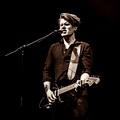
 Janne Pihlaja - Sweden
Janne Pihlaja - Sweden
Janne is a musician interested in photography, from Kiruna in northern Sweden but currently lives in Stockholm. On Instagram many people follow his updates with interesting photos.
https://instagram.com/berlinsthlmkiruna/
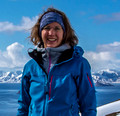
 Annika Öhman - Sweden I live in the town Skellefteå, and has always photographed with film camera when I was small, and now digital, since over 10 years. I have a Nikon SLR and a small Sony pocket camera, which I think takes surprisingly good pictures. I photograph the most nature, because I love being out in nature. I make a lot of pictures from the Skellefteå River, and from the Gulf of Bothnia, where we have a cottage. But I always bring a camera, if I go somewhere. I work with images, but in a completely different form. Those at work are mostly black and white, because I'm working on x-ray. Even if I love working with color in pictures, I'm weak for a monochrome image with a good grayscale ( Occupation Damage) I wish that I could eventually work less with my regular job, and devote myself more to take pictures. My job takes a little too much time ....
Annika Öhman - Sweden I live in the town Skellefteå, and has always photographed with film camera when I was small, and now digital, since over 10 years. I have a Nikon SLR and a small Sony pocket camera, which I think takes surprisingly good pictures. I photograph the most nature, because I love being out in nature. I make a lot of pictures from the Skellefteå River, and from the Gulf of Bothnia, where we have a cottage. But I always bring a camera, if I go somewhere. I work with images, but in a completely different form. Those at work are mostly black and white, because I'm working on x-ray. Even if I love working with color in pictures, I'm weak for a monochrome image with a good grayscale ( Occupation Damage) I wish that I could eventually work less with my regular job, and devote myself more to take pictures. My job takes a little too much time ....

 Jonas Sundberg - Sweden I, who along with my wife Viki, operates the gallery that host the exhibition, moved to Strumica in 2014, and has before that worked as a reportage- and art photographer for 11 years in my home town of Kiruna, in northern Sweden. For me art photo is not just a question of to right off "tell the truth", but a way to express myself. Its a language with a rich grammar, full of nuances, which can tell much about a person's inner as well as environments and events around her. Anyone who has once begun to speak it, sees small and big things with fresh eyes, always ready for new discoveries and insights. As one of my favorite quote says: "Always seeing something, never seeing nothing - beeing a photographer" by Walter de Mulder. Another one that I fully agree with is "When people look at my pictures, I want them to feel the way they do when they want to read a line of a poem twice" - by Robert Frank
Jonas Sundberg - Sweden I, who along with my wife Viki, operates the gallery that host the exhibition, moved to Strumica in 2014, and has before that worked as a reportage- and art photographer for 11 years in my home town of Kiruna, in northern Sweden. For me art photo is not just a question of to right off "tell the truth", but a way to express myself. Its a language with a rich grammar, full of nuances, which can tell much about a person's inner as well as environments and events around her. Anyone who has once begun to speak it, sees small and big things with fresh eyes, always ready for new discoveries and insights. As one of my favorite quote says: "Always seeing something, never seeing nothing - beeing a photographer" by Walter de Mulder. Another one that I fully agree with is "When people look at my pictures, I want them to feel the way they do when they want to read a line of a poem twice" - by Robert Frank
More about me and my work,here at the website you are visiting right now

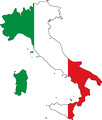 Fabrizio Pescali - Italy I am 42 years old. I was born in Milan and still live there, my passion for photography emerged relatively late, to be precise in 2009 when I bought my first digital reflex. With my shots I don’t try to copy the reality, but I try to show what perception I have of it, the feelings that overcome me when I look at the world through the lens of the camera. What I try to do is frame a particular moment so that it will stay as it is forever even when all that I framed changes. I try to touch the heart of the observer and make him feel what I feel. Every shot I take, a landscape, portrait or else, is just the crazy vision of a dreamer who tries to get across to the others, through the photography, the turmoil of feelings and emotions that make his head spin, the whirlwind of bright colors that get mixed up in his head. I don’t take pictures for the ones who will check my technical skills, I take pictures for the curious people who will ask themselves “why” I took that shot.
Fabrizio Pescali - Italy I am 42 years old. I was born in Milan and still live there, my passion for photography emerged relatively late, to be precise in 2009 when I bought my first digital reflex. With my shots I don’t try to copy the reality, but I try to show what perception I have of it, the feelings that overcome me when I look at the world through the lens of the camera. What I try to do is frame a particular moment so that it will stay as it is forever even when all that I framed changes. I try to touch the heart of the observer and make him feel what I feel. Every shot I take, a landscape, portrait or else, is just the crazy vision of a dreamer who tries to get across to the others, through the photography, the turmoil of feelings and emotions that make his head spin, the whirlwind of bright colors that get mixed up in his head. I don’t take pictures for the ones who will check my technical skills, I take pictures for the curious people who will ask themselves “why” I took that shot.
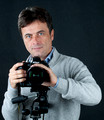
 Stefano Caporali - Italy I am born in Arezzo, Tuscany, Italy on 28 April 1965. Photography is my life and my job. I love photography since I was 20.
Stefano Caporali - Italy I am born in Arezzo, Tuscany, Italy on 28 April 1965. Photography is my life and my job. I love photography since I was 20.
And I love my county Tuscany, one of the most beautiful countryside of the world, good for landscape photographers. At beginning I was just an enthusiast photographer, but I turned as professional on 1992. My main jobs as photographer: Landscape, architecture, interior, still life and food. Some of my landscape photos won some international photography contest and more photos have been published on books, calendars, magazine in Italy and abroad.

 Alain Licari - France I live in Lyon, Franc I am inspirated by the traditional humanist photography, I especially like to photograph cities and streets; people in their everyday life, in the most common of places: time going by, life. With my camera, I like to stroll here and there, and I try to catch the decisive moment: a face, a look, an attitude, and then to tell an (extra)-ordinary story. One of a kind. I believe black and white is the best means to show these stolen emotions. The contrasts and the play of lights allow, in my opinion, to get to the essential: get modestly closer to the human soul. I mainly work with a full frame camera and most, exclusively with a fixed focal lens of 50mm. I like this lens a lot, because for me it allows the human contact, the encounter. It’s also an exacting lens though; it forces photographers to work their shooting, to get the closest to their subject, to show much audacity.
Alain Licari - France I live in Lyon, Franc I am inspirated by the traditional humanist photography, I especially like to photograph cities and streets; people in their everyday life, in the most common of places: time going by, life. With my camera, I like to stroll here and there, and I try to catch the decisive moment: a face, a look, an attitude, and then to tell an (extra)-ordinary story. One of a kind. I believe black and white is the best means to show these stolen emotions. The contrasts and the play of lights allow, in my opinion, to get to the essential: get modestly closer to the human soul. I mainly work with a full frame camera and most, exclusively with a fixed focal lens of 50mm. I like this lens a lot, because for me it allows the human contact, the encounter. It’s also an exacting lens though; it forces photographers to work their shooting, to get the closest to their subject, to show much audacity.
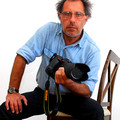
 Ruben Donato - Argentina. Living in Buenos Aires - Argentina but has been living in Brazil the last 15 years. Photographing dance and theater.
Ruben Donato - Argentina. Living in Buenos Aires - Argentina but has been living in Brazil the last 15 years. Photographing dance and theater.






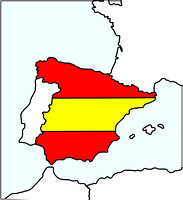
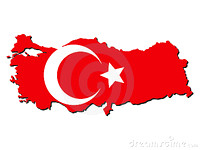
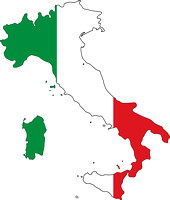
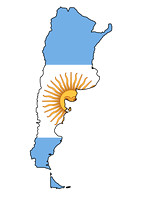
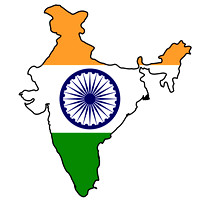
]]>
Big thanks to Intel Televizia!
List of the participating photographers
Mathieu Degrotte - France
Stole Angelov - Macedonia
Lillian Molstad Andresen - Norway
Eva Kristiansen - Norway
Rustam Ma - India
Michelle Garcia - USA
Alexandria Lopez - USA
Janne Pihlaja - Sweden
Annika Öhman - Sweden
Göran Backman - Sweden
Annika Lood - Sweden
Carl- Johan Utsi Sweden
Jonas Sundberg - Sweden
Göran Landström - Sweden
Magdalena Näsström - Sweden
Casey Mitchell - USA
Colin Roberts - U.K
Selçuk Gülen - Turkey
Fabrizio Pescali - Italy
Stefano Caporali - Italy
Alain Licari - France
Ruben Donato - Argentina
Monica Rodriguez - Spain
]]>The exhibition will last the month of May and we are open Monday to Friday 10-18. If you are nearby and want to see it another time, do not hesitate to contact us. If you are in another city / country, you also has the possibility to purchase and get the image sent to you. More details will follow in coming posts.
The 23 participating photographers are:
Mathieu Degrotte - France
Stole Angelov - Macedonia
Lillian Molstad Andresen - Norway
Eva Kristiansen - Norway
Rustam Ma - India
Michelle Garcia - USA
Alexandria Lopez - USA
Janne Pihlaja - Sweden
Annika Öhman - Sweden
Göran Backman - Sweden
Annika Lood - Sweden
Carl- Johan Utsi Sweden
Jonas Sundberg - Sweden
Göran Landström - Sweden
Magdalena Näsström - Sweden
Casey Mitchell - USA
Colin Roberts - U.K
Selçuk Gülen - Turkey
Fabrizio Pescali - Italy
Stefano Caporali - Italy
Alain Licari - France
Ruben Donato - Argentina
Monica Rodriguez - Spain
More posts and further presentation of the photographers will follow the nearest days.
]]>
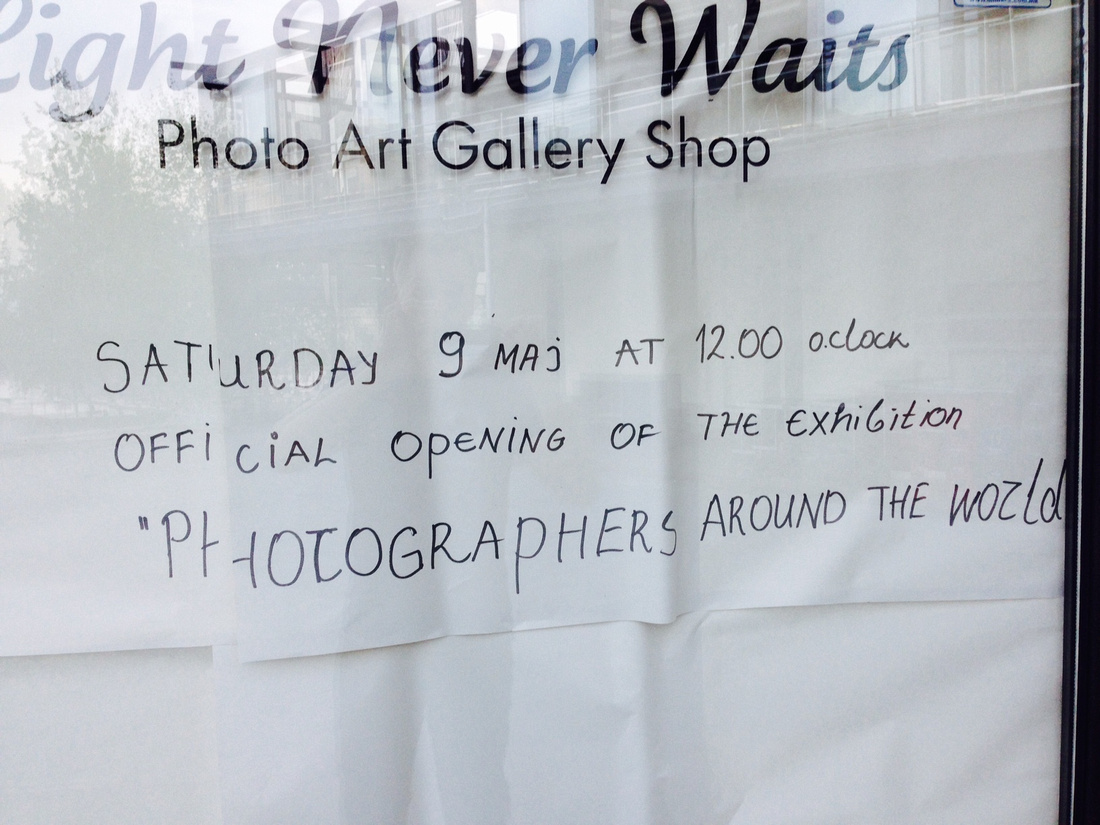
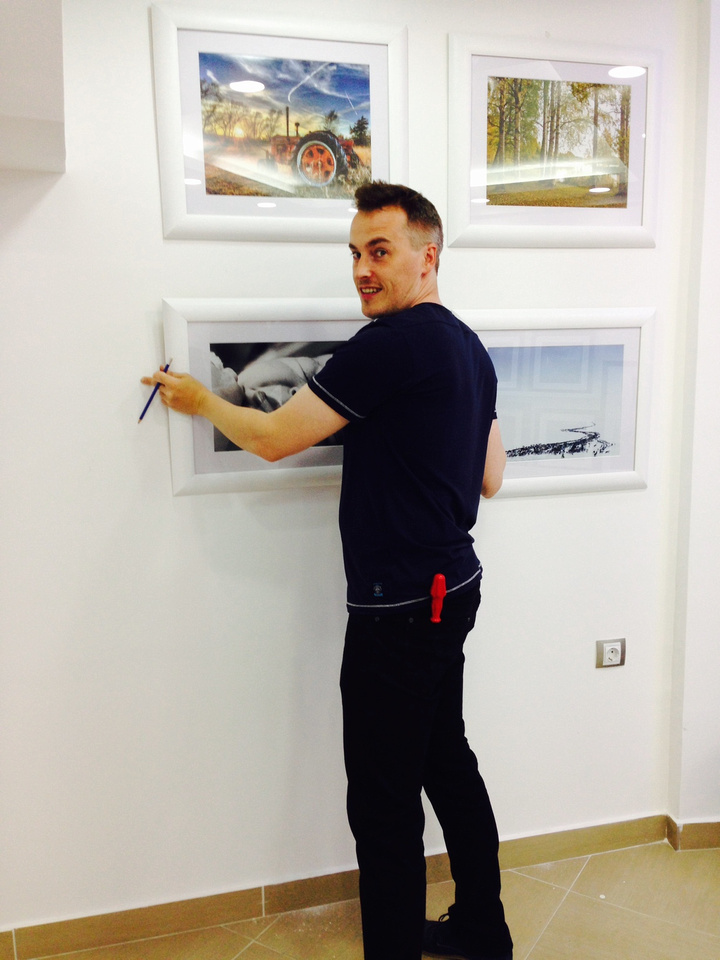
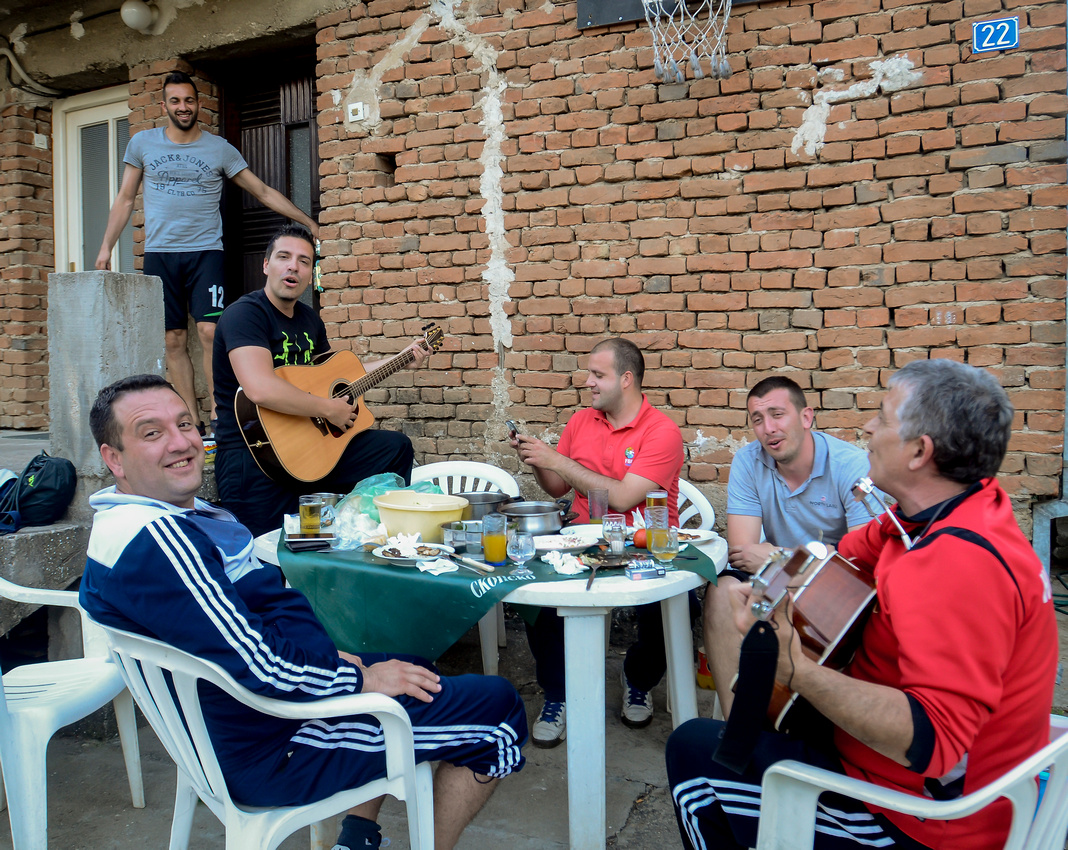 At closer look proved the concert come from these musicians. Macedonians are a social people, and on warm spring- and summer evenings, the balconies, porches and yards are the obvious place to stay, for hours on end. It is easy to start a conversation with strangers, and it is not unusual that they ask the stranger to sit down and join them, and to drink something good.
At closer look proved the concert come from these musicians. Macedonians are a social people, and on warm spring- and summer evenings, the balconies, porches and yards are the obvious place to stay, for hours on end. It is easy to start a conversation with strangers, and it is not unusual that they ask the stranger to sit down and join them, and to drink something good.
]]>
Warmly welcome to the blog part, for good photo and reading from a small, scenic, multicultural country - with many surprises up her sleeves. By a newlywed Swedish gallery owner and photographer living there since 2014. Your correspondent in Macedonia, if you like.
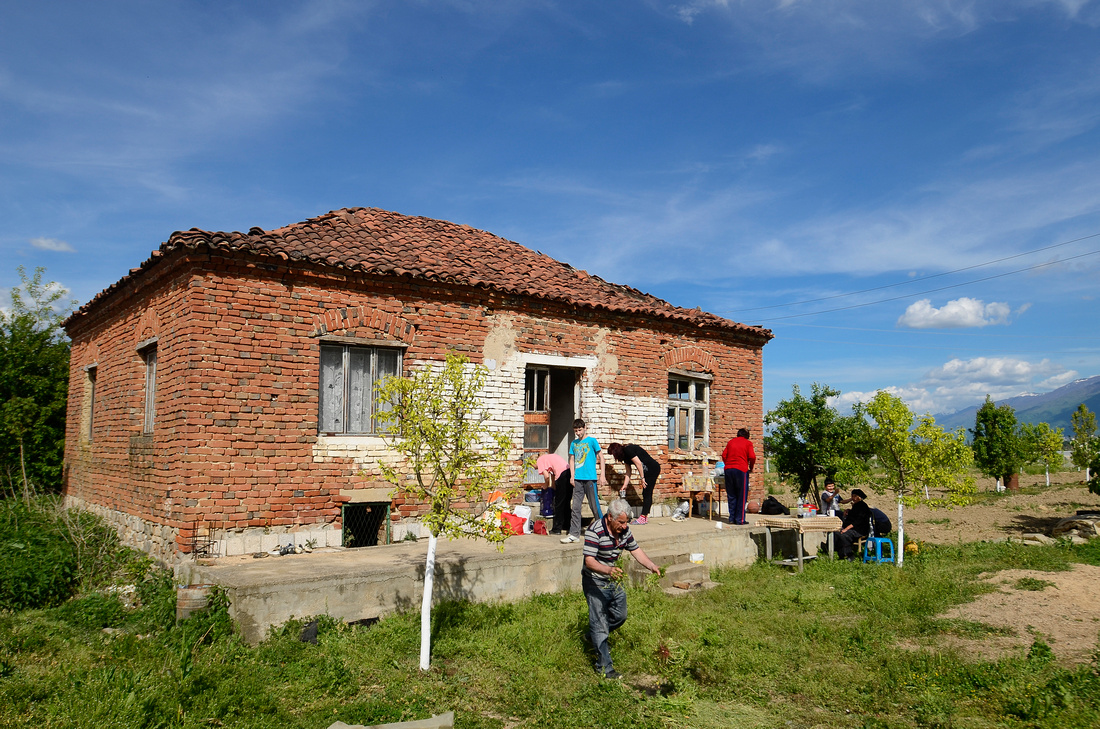 With family and friends at my Father in laws childhood home, in the village Sacevo - located 6 km outside the town.
With family and friends at my Father in laws childhood home, in the village Sacevo - located 6 km outside the town.
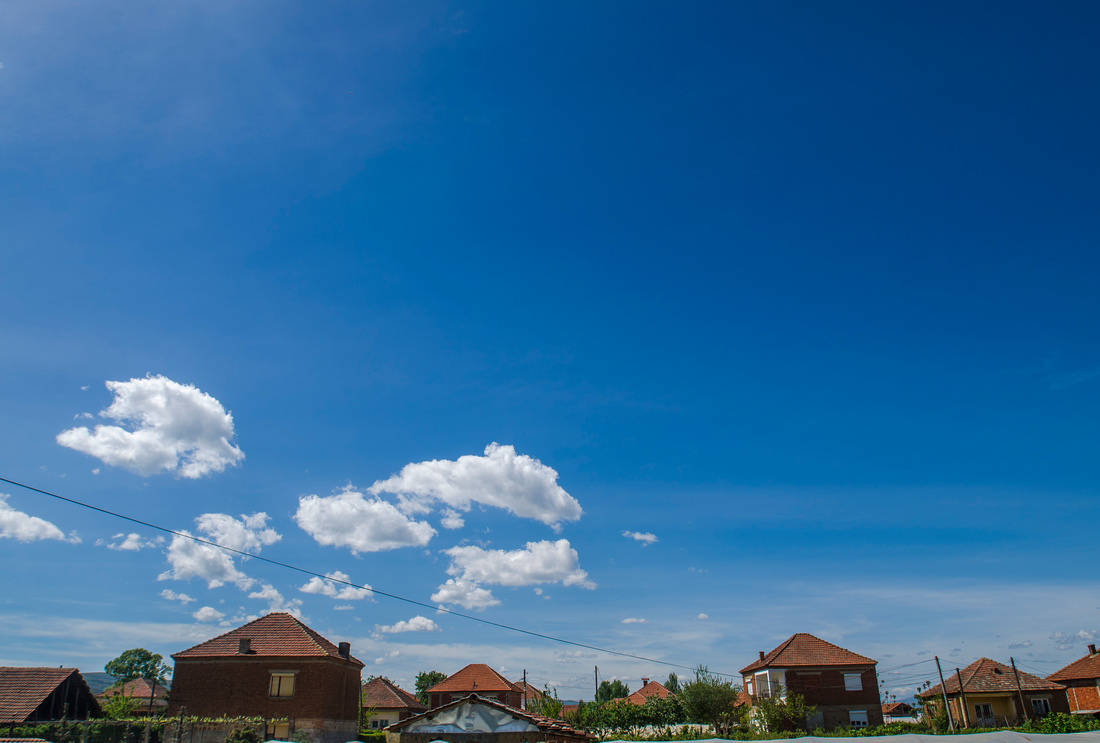
 The flower of the Dunya fruit tree. It is now, and perhaps in November that the climatic differences are most noticeable, between here and north Sweden. April and May is exceptional months down here. At home in Kiruna may is by far the year's worst month, with slow snow melting causing dirty streets everywhere - here it is the best month of the year. The temperatures are higher than the peak summer temperatures at home, there is greenery and flowering trees everywhere - and life feels fantastic again after a grumpy and rainy winter.
The flower of the Dunya fruit tree. It is now, and perhaps in November that the climatic differences are most noticeable, between here and north Sweden. April and May is exceptional months down here. At home in Kiruna may is by far the year's worst month, with slow snow melting causing dirty streets everywhere - here it is the best month of the year. The temperatures are higher than the peak summer temperatures at home, there is greenery and flowering trees everywhere - and life feels fantastic again after a grumpy and rainy winter.
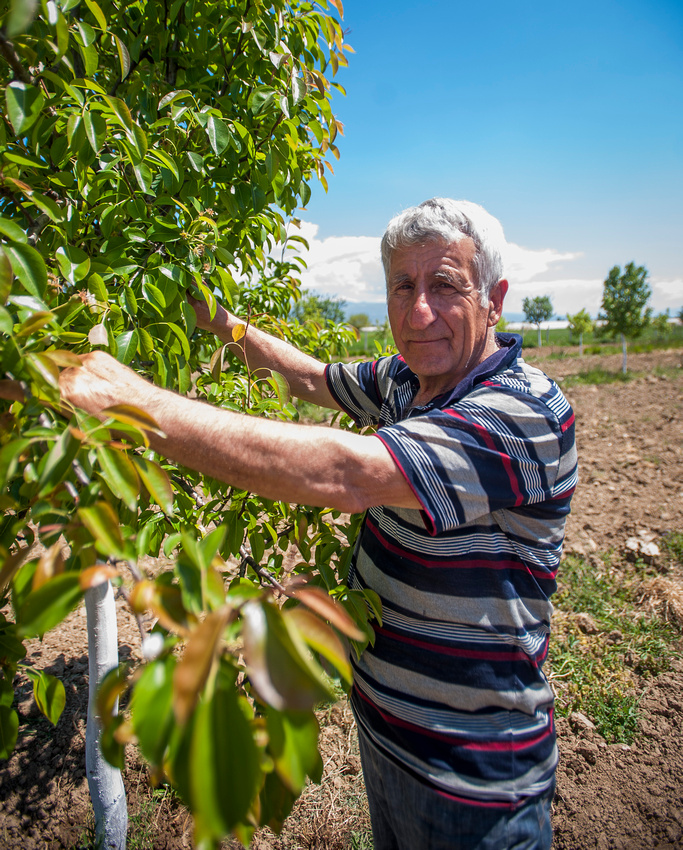
Father in law "Dedo Dine" in action - inspects his pear trees...
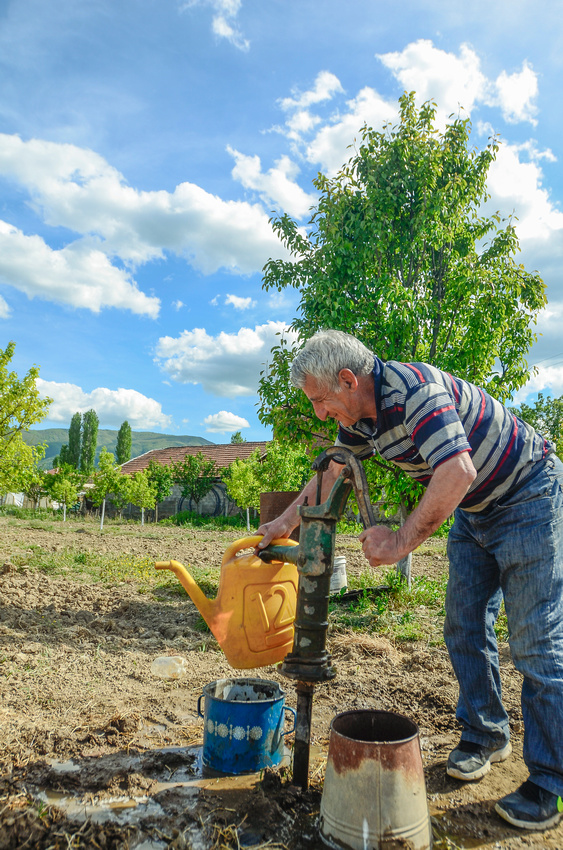
...and fixing the water supply, like his father and grandfather before him...
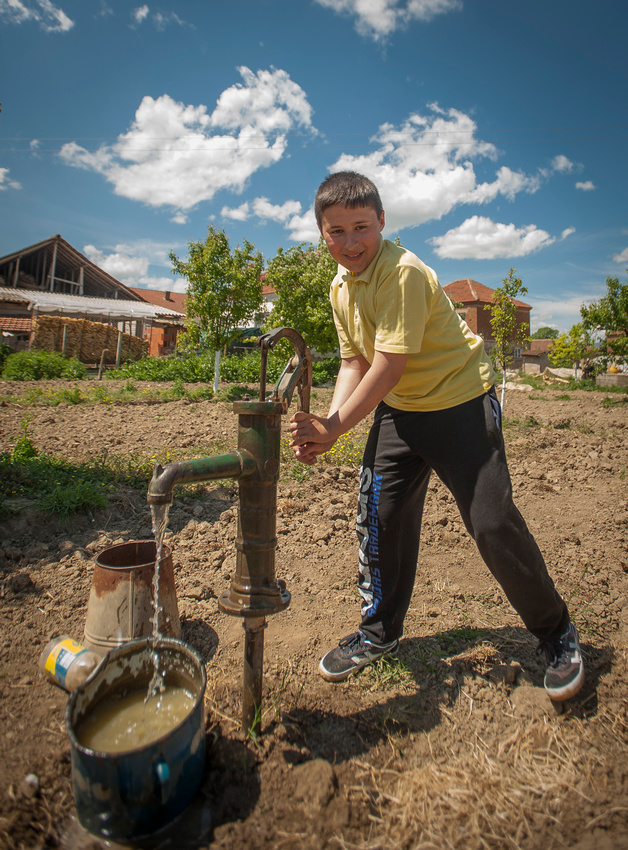
.. and his grandchildren will after him. Well Filip is at least testing the ancestral method.
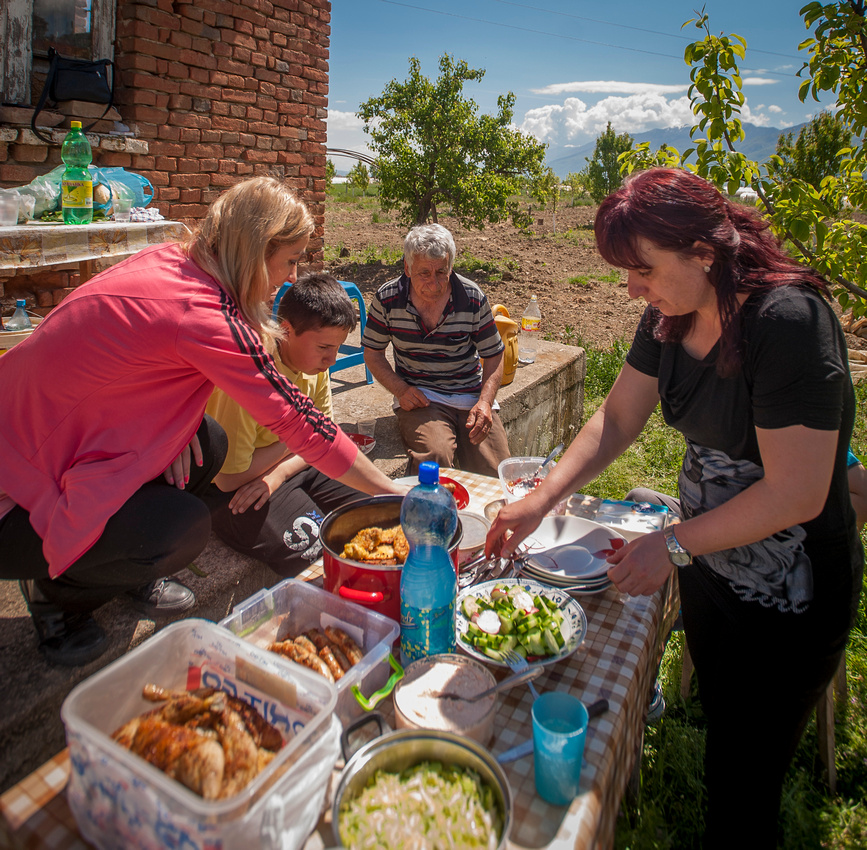 Some poor sandwiches, which are often fixed at home, when going out in the nature, do not work in Macedonia, and fortunately Swedish crappy sausage "Falukorv" does not exist here. Instead it is all or nothing. Everybody contributed to various dishes. Grilled chicken legs, breaded chicken fillet, pork chops,cucumber salad, coleslaw,Shopska sallad, urnubez (a sort of cottage cheese, with garlic and chilli) Homemade chicken Sausages. Mastika, beer, soft drinks, etc.
Some poor sandwiches, which are often fixed at home, when going out in the nature, do not work in Macedonia, and fortunately Swedish crappy sausage "Falukorv" does not exist here. Instead it is all or nothing. Everybody contributed to various dishes. Grilled chicken legs, breaded chicken fillet, pork chops,cucumber salad, coleslaw,Shopska sallad, urnubez (a sort of cottage cheese, with garlic and chilli) Homemade chicken Sausages. Mastika, beer, soft drinks, etc.
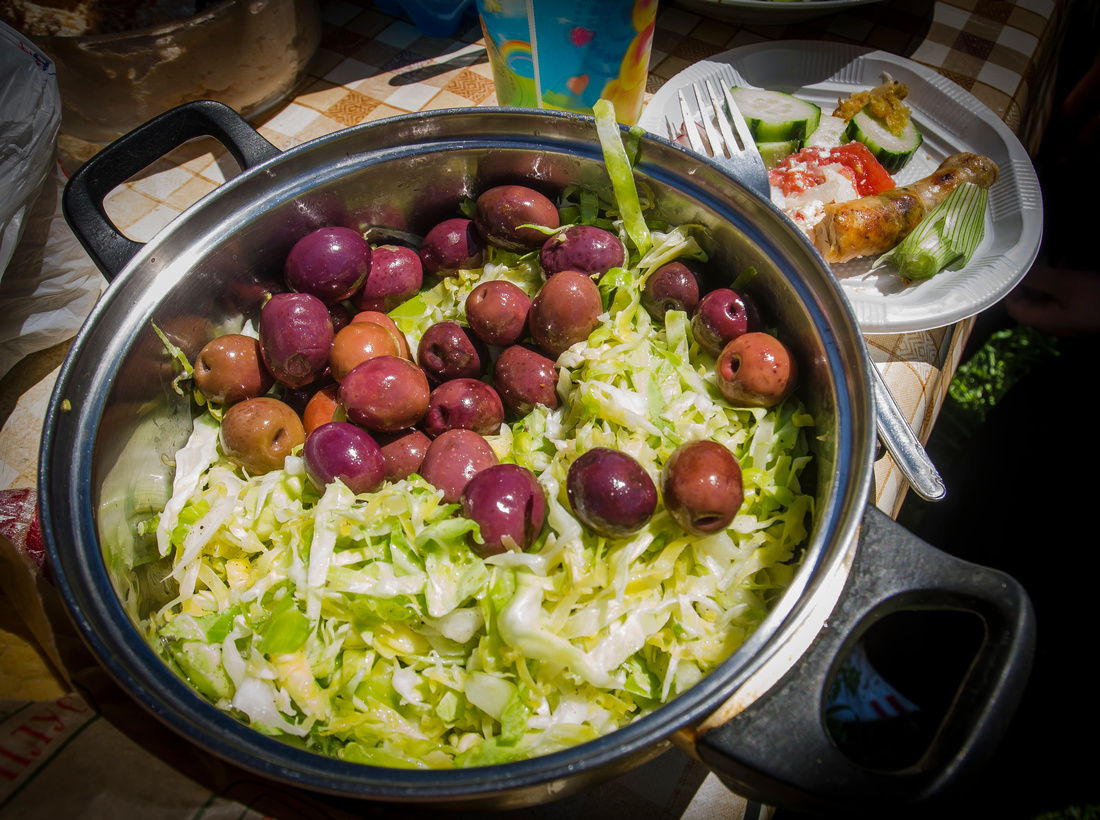
I have learn from Dine the difference between summer and winter cabbage. At the same time it explains why I never liked the cabbage rolls, "Kåldolmar", at home. There we usually use wintercabbage, which is much thicker and stickier, for that dish. Even in salad is the difference noticeable, when using this brittle and smoother summer cabbage
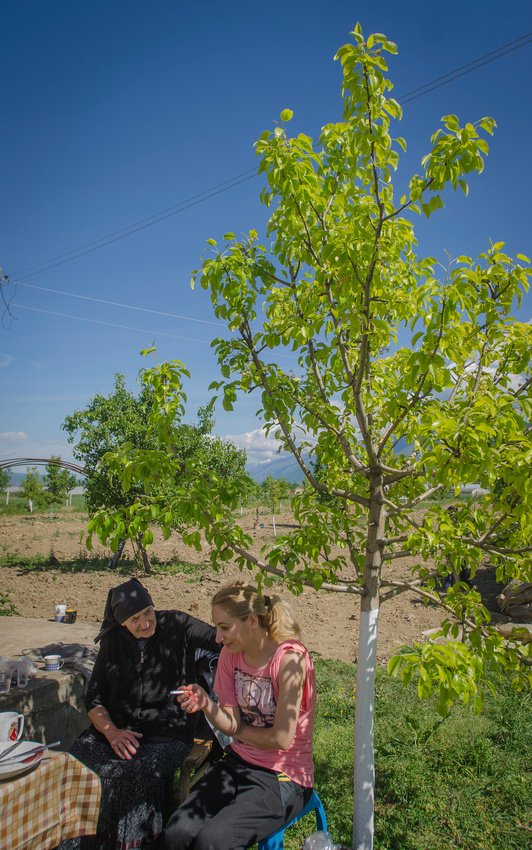
Neighbor comes for a chat (or two)
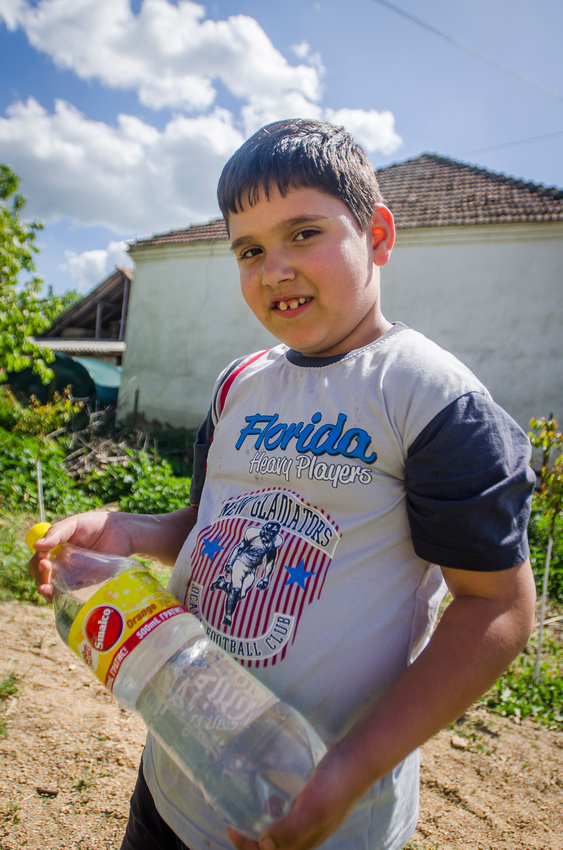
Christian is also a brilliant member of the water supply team.

 The screaming colour of the plastic ball, contrast strongly, with the Macedonian soil..
The screaming colour of the plastic ball, contrast strongly, with the Macedonian soil..
 ...but thats is not what is the fun.
...but thats is not what is the fun.
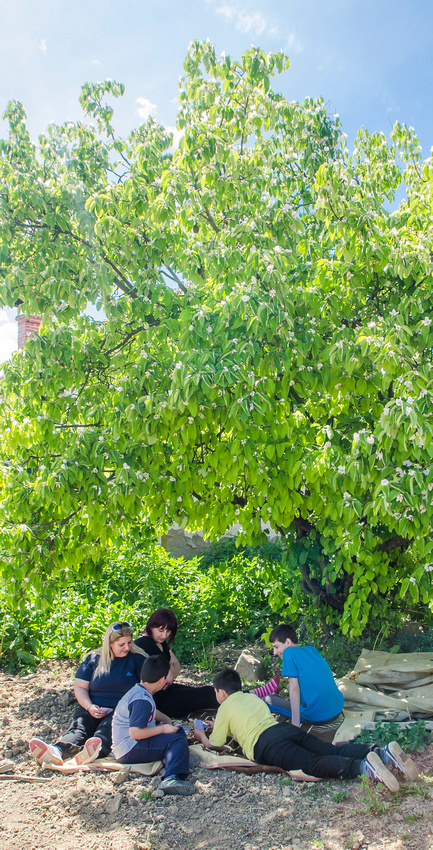
In southern countries like this, you learn quickly what a shady tree means to you, at midday

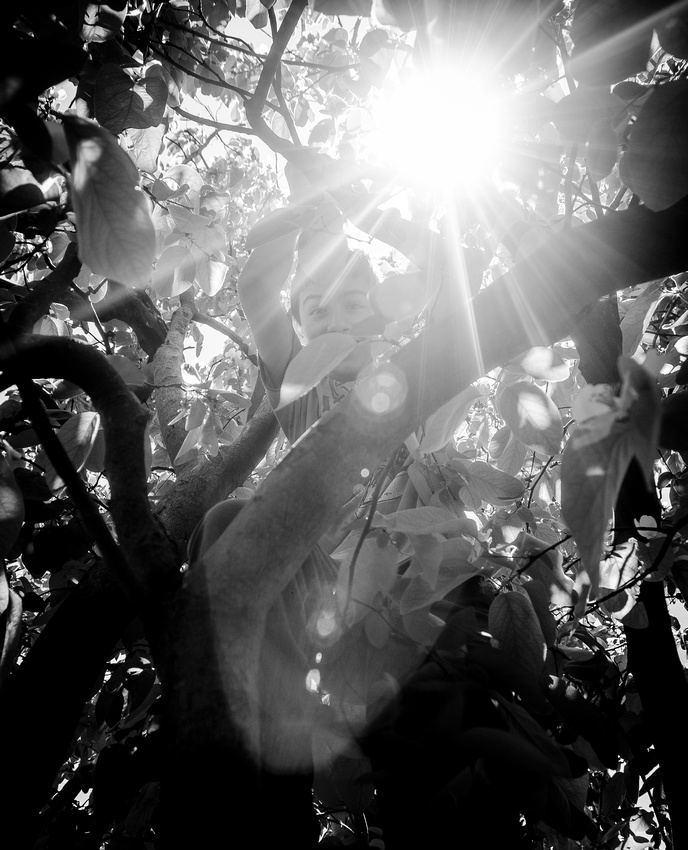
Kiko notes that the branches of the Dunya tree, works good for the good old tree climbing also.
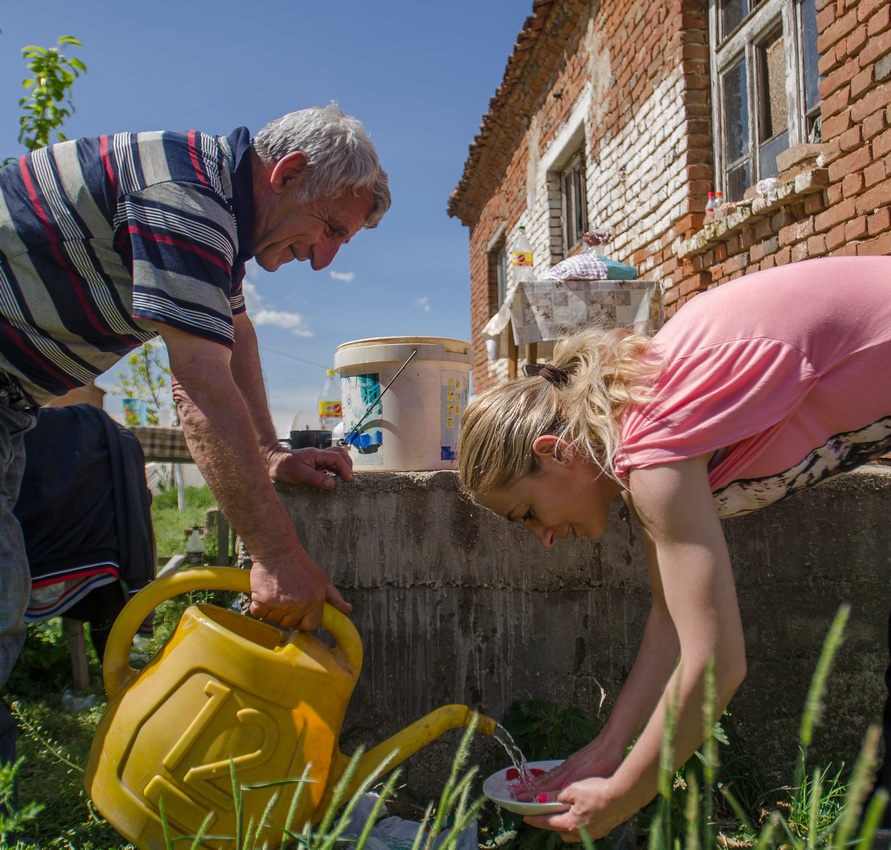 Preparing for food round two
Preparing for food round two

Kebab in Macedonia is always this sort of oblong, fairly tasty, grilled meatballs.
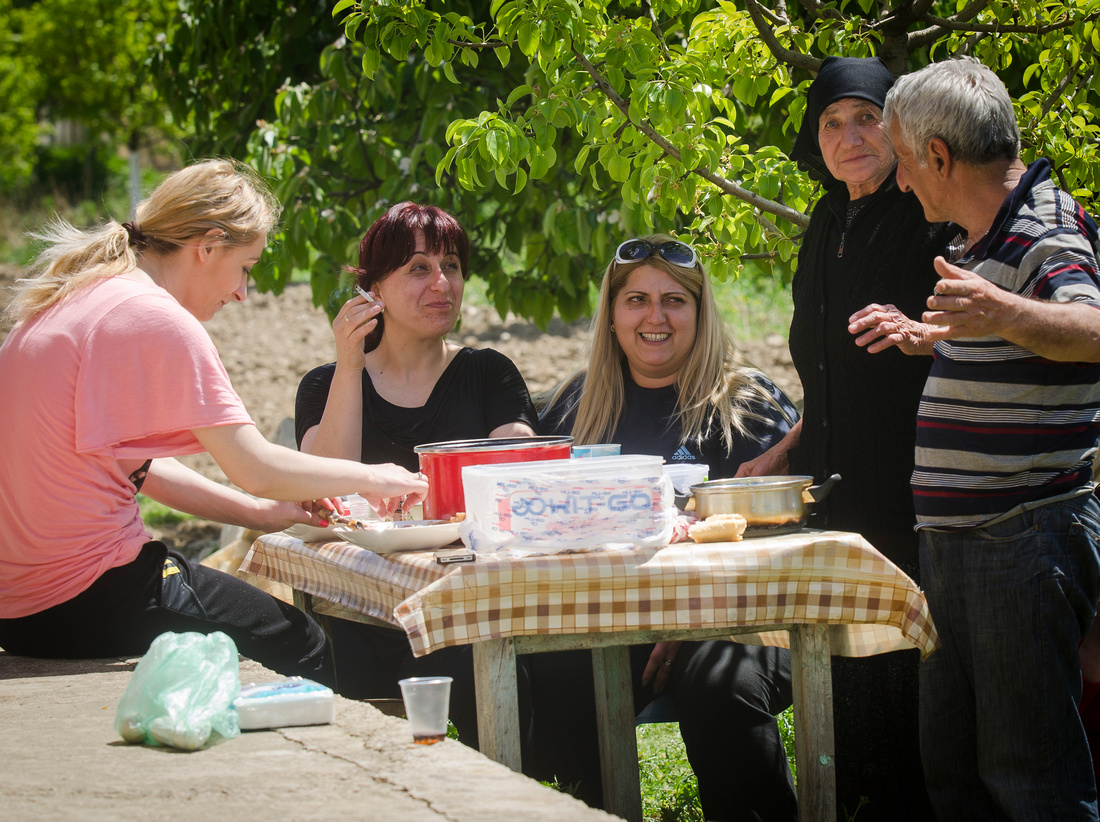
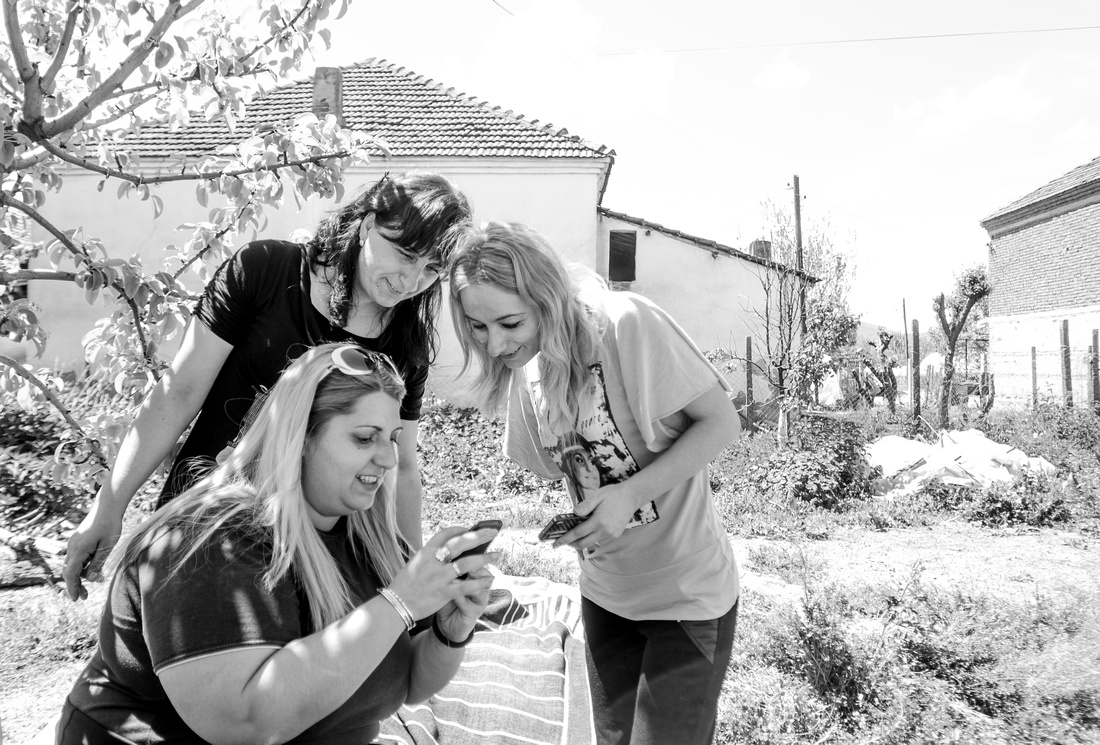 During this, almost, internet free excursion, it was not the children who surfed.
During this, almost, internet free excursion, it was not the children who surfed.
 Mother in Law, Boca is contented, when family and friends are gathered.
Mother in Law, Boca is contented, when family and friends are gathered.
The pictures in the post are made in "reportage style". You can benefit from hiring me for similar job in the events or anniversaries or magazine story. Link below for more info.
More interesting blogposts here
Fine art - Buy a great photo for your wall
Hire me for a wedding photoshoots
Hire me for a company photoshoot
Hire me for an event- or magazine photoshoot
More about me and my works here
Happening now: If you live/are in Strumica: Warmly welcome to visit us in our gallery, in the center. Behind the Goce Delcev Statue on the square, near to Hotel Esperanto. We are now planning for next exhibition - "Photographers around the world", starting 8/5-2015 - we still have room for more. photographers: feel free to apply with your best photo!
]]>
A small biography from every photographer will be posted here on the blog, and in accession to the image in the gallery. We still have room for more. Both professionals and amateurs who create expressive images are welcome to apply with one of his/her best pictures. The idea is partly to develop interest here on the spot, for expressive photographic image, and partly to promote the photographers and partly to sell pictures.
If you are interested: please contact us here, as soon as possible
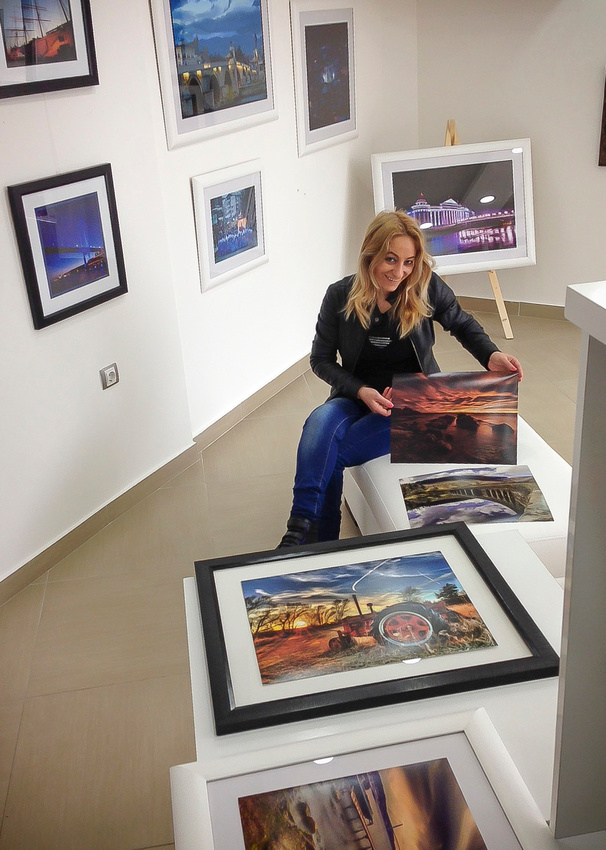
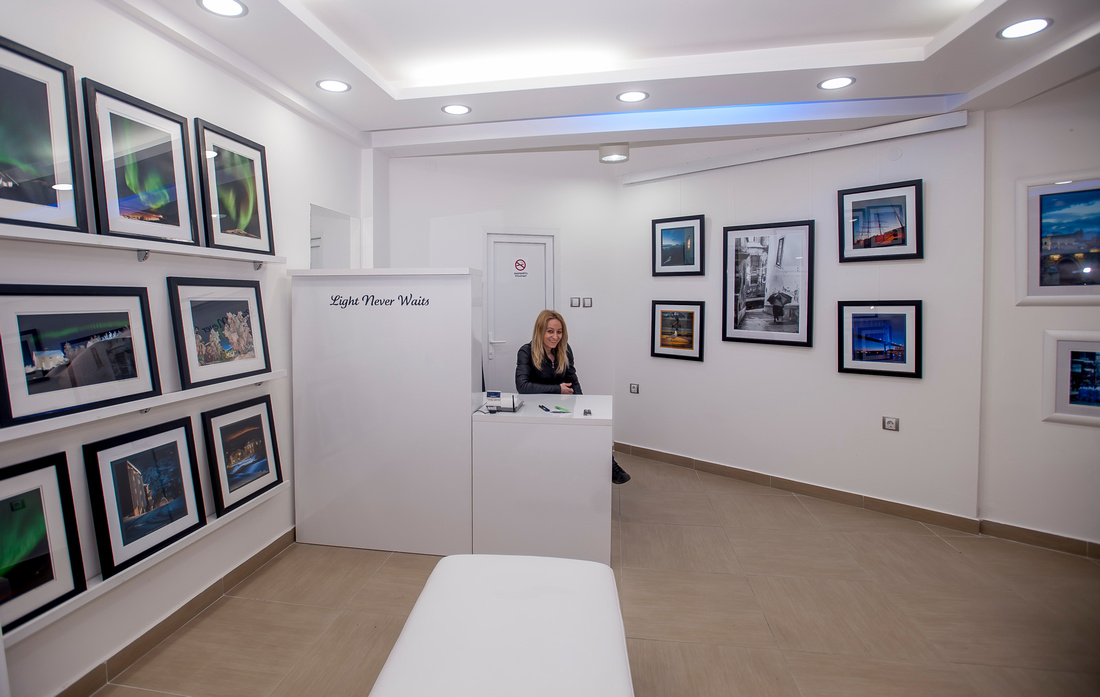 My wife Viki, in our art photo gallery, which we started together, in February this year. The gallery is located in the very center of the Macedonian city Strumica.
My wife Viki, in our art photo gallery, which we started together, in February this year. The gallery is located in the very center of the Macedonian city Strumica.
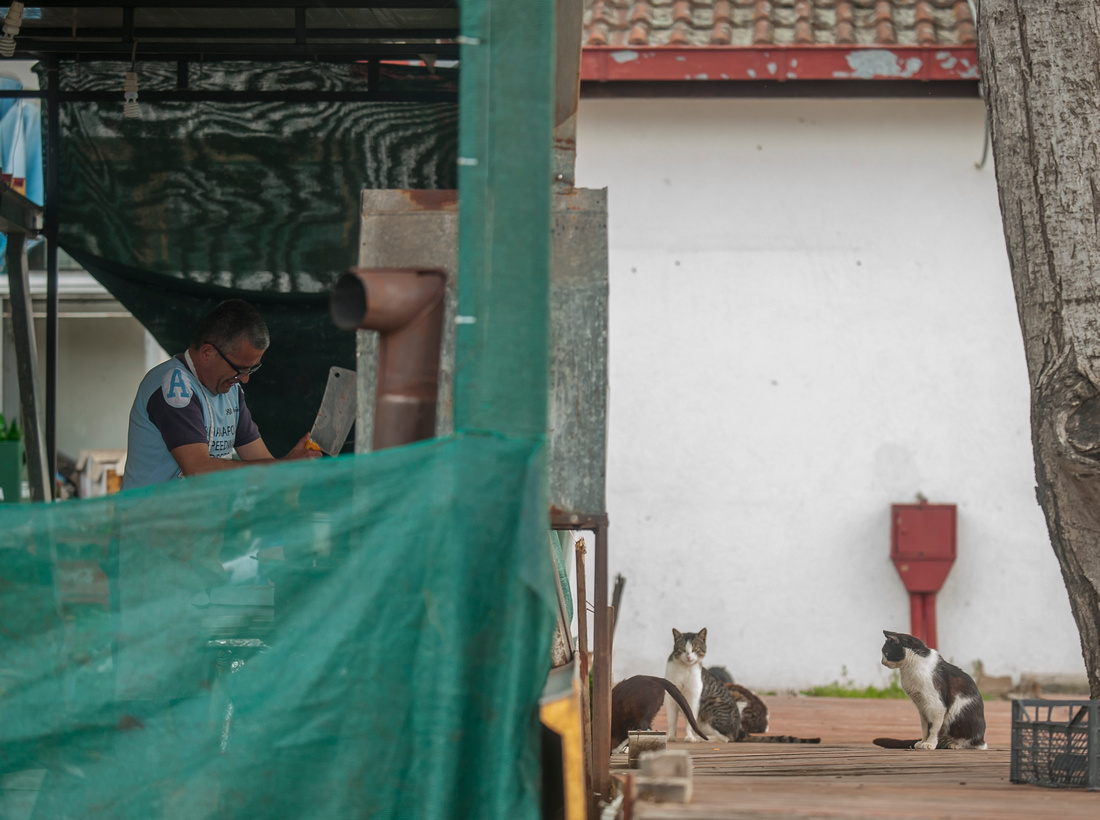 A cook cut up meat in the town of Dojran in april, while his "non paying guests" gather outside, hoping that something will be left to them.
A cook cut up meat in the town of Dojran in april, while his "non paying guests" gather outside, hoping that something will be left to them.

This one, also captured in Dojran in April, is a tribute to the concept of "just being".
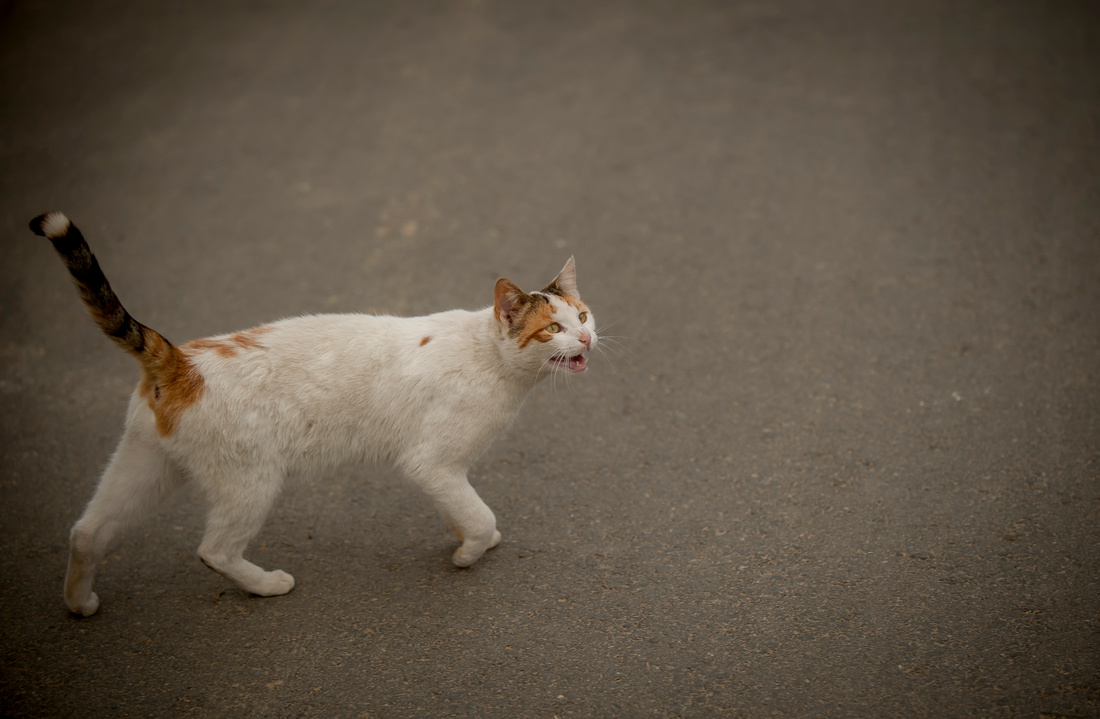 In Macedonia there is, like in many other southern European countries, many homeless dogs and cats. Semi-feral and vigilant fearful eyes, always ready to run. But every once in a while you meet someone like this. Who simply walk up to one, and loudly requires to be served food.
In Macedonia there is, like in many other southern European countries, many homeless dogs and cats. Semi-feral and vigilant fearful eyes, always ready to run. But every once in a while you meet someone like this. Who simply walk up to one, and loudly requires to be served food.
Two guys with maybe a tad too much haste to put up the new spring advertising posters. Maybe not the best decision during the week. Well, well this is the Balkans ... Hope it went well and as they say here: "Za mnogu godini Zivi i zdravi" - Wish you happiness and life for many years!
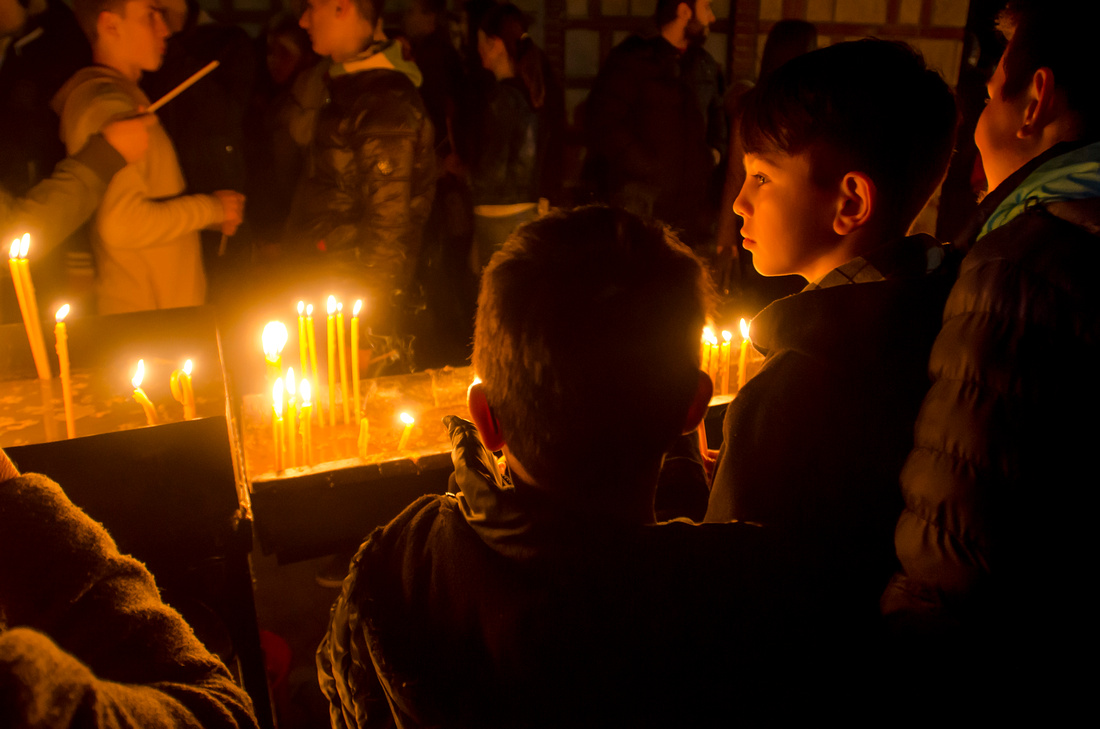
People light candles during the Holy Saturday night in and around the Macedonian churches

Short stop for greeting - in the river of people of central Strumica.
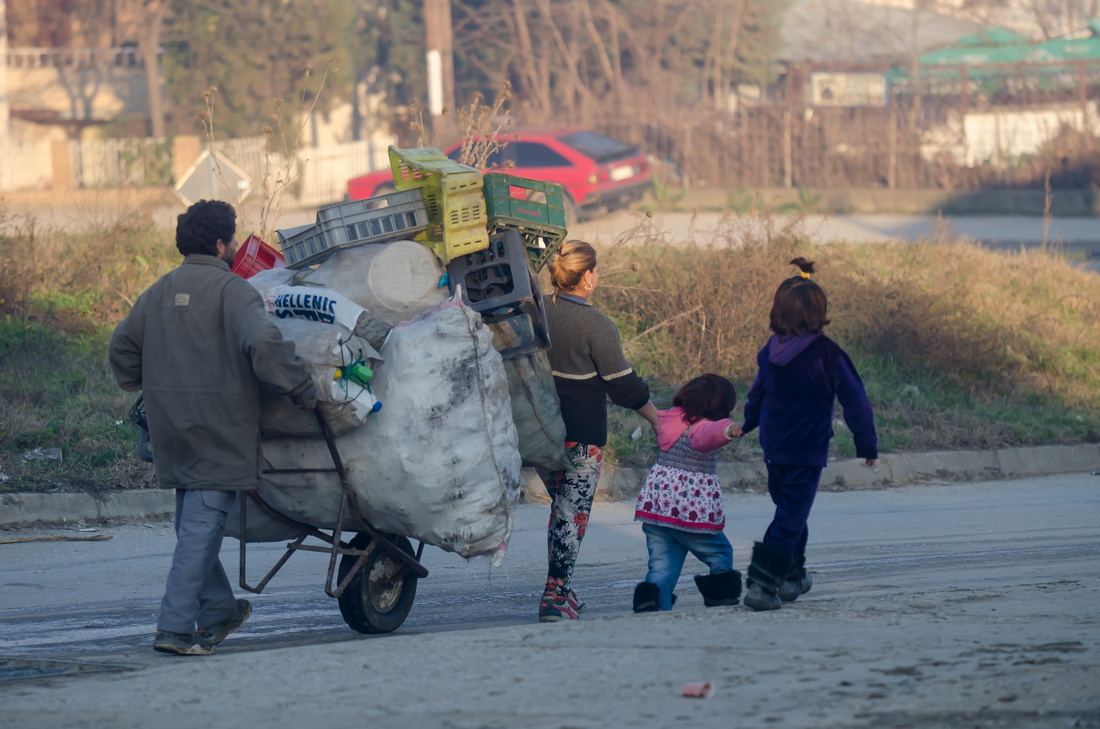 A family on the move in the Roma district. Against what?
A family on the move in the Roma district. Against what?
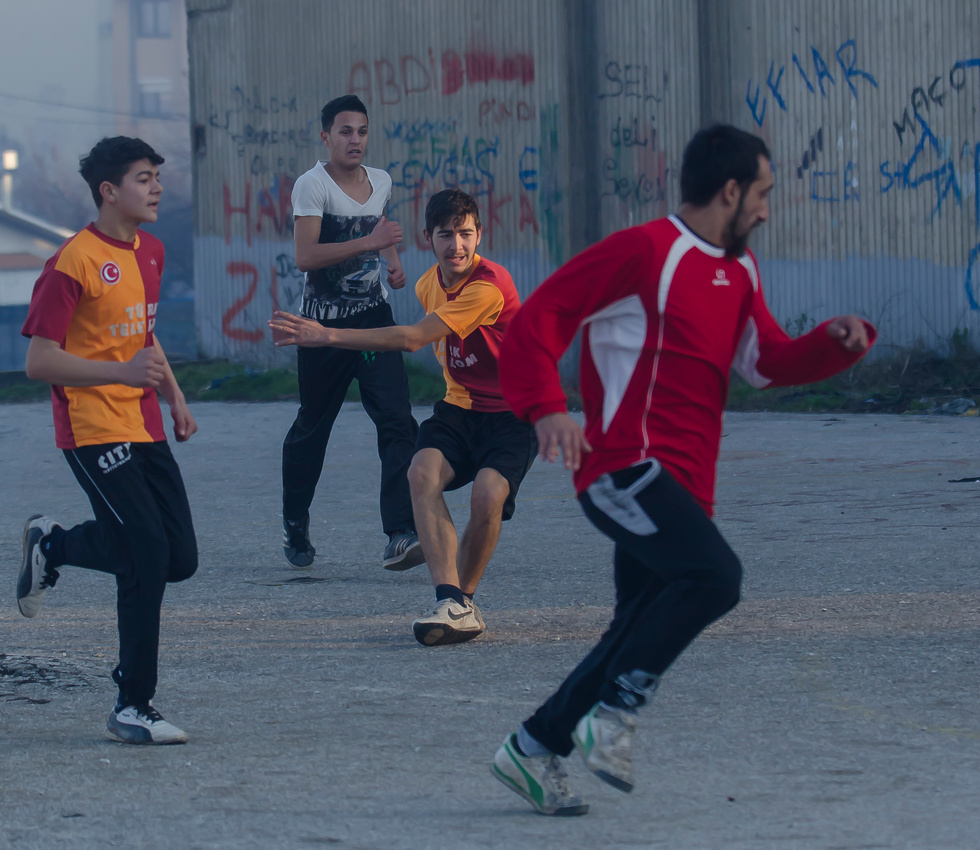 Football - this multinational strong language - is also spoken here, of course. Also from the Roma district.
Football - this multinational strong language - is also spoken here, of course. Also from the Roma district.
 The city Hall is one of the most imposing building in town, perhaps most felt in twilight. The lighting accentuates all the details and get the house to the more stand out from the surroundings.
The city Hall is one of the most imposing building in town, perhaps most felt in twilight. The lighting accentuates all the details and get the house to the more stand out from the surroundings.
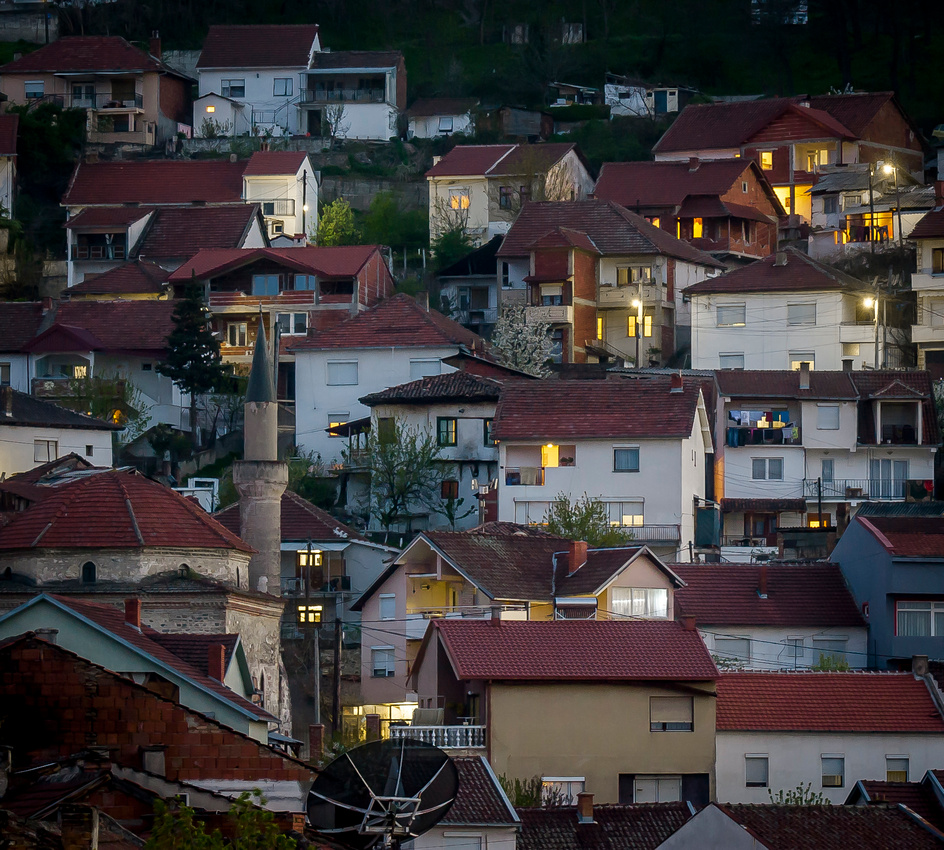 The lack of structure in the street network, plus the fact that it climbs the mountain side, giving the Old town of Strumica it´s charm. In the middle of all this there is an attraction of rang: The Orta Mosque, from the 1600s. A relic of the Ottoman domination of the country.
The lack of structure in the street network, plus the fact that it climbs the mountain side, giving the Old town of Strumica it´s charm. In the middle of all this there is an attraction of rang: The Orta Mosque, from the 1600s. A relic of the Ottoman domination of the country.
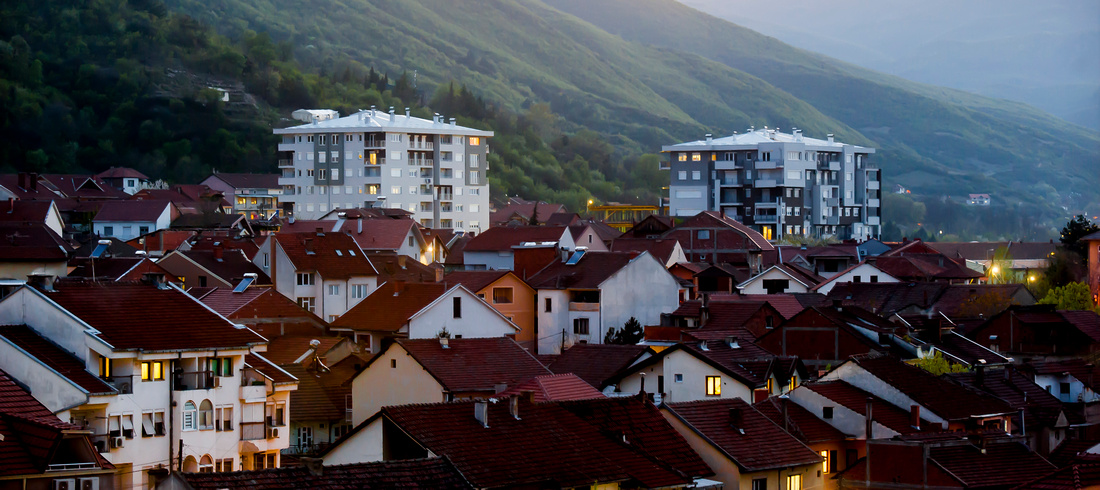 It has been used as a cliché in many places, but Macedonia is truly a "land of contrasts". As two modern giants, towering new apartment buildings where the old town motley collection of houses and streets, runs out.
It has been used as a cliché in many places, but Macedonia is truly a "land of contrasts". As two modern giants, towering new apartment buildings where the old town motley collection of houses and streets, runs out.
 Even in the city center are old architectural finds, in the midst of newer
Even in the city center are old architectural finds, in the midst of newer
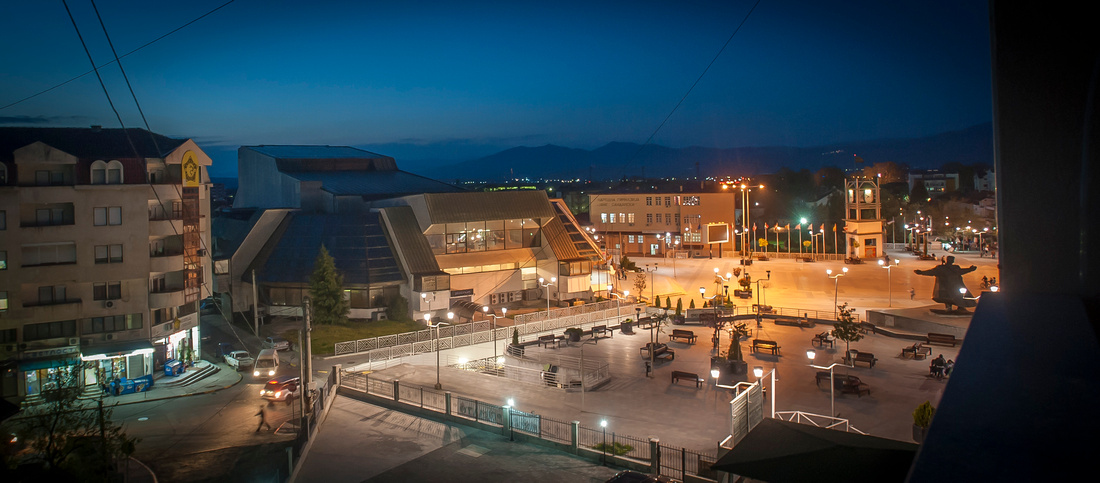 The calm has pitched over the city's most central point: The Goce Delcev Square.
The calm has pitched over the city's most central point: The Goce Delcev Square.
 Another angle of the Old town, shows how the houses float like a wave over Strumicas rolling hills, with its thousands of lights and colors - into the night
Another angle of the Old town, shows how the houses float like a wave over Strumicas rolling hills, with its thousands of lights and colors - into the night
]]>
Warmly welcome to the blog part, for good photo and reading from a small, scenic, multicultural country - with many surprises up her sleeves. By a newlywed Swedish gallery owner and photographer living there since 2014. Your correspondent in Macedonia, if you like.
During the Orthodox Eastern, which takes place a week after the western one, around 12 o´clock the Makedonians gathering in and around the churches. Among other things they lightning candles, unleash pigeons and congratulating each other with the phrase "Hristos voskrese" (Christ is risen), whereupon one replies "Navistina voskrese" (approx. "He really did"). After the ceremonie people are bringing the burning candles to their homes.


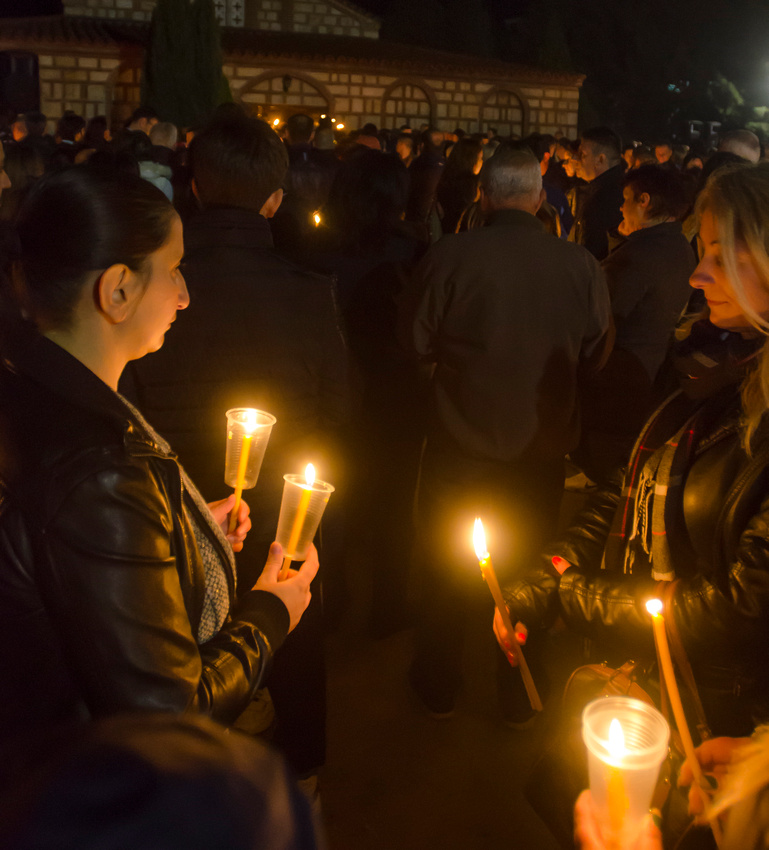
The pictures in the post are made in "reportage style". You can benefit from hiring me for similar job in the events or anniversaries or magazine story. Choose link below for more info.
Happening now: If you live/are in Strumica: Warmly welcome to visit us in our gallery, in the center. Behind the Goce Delcev Statue on the square, near to Hotel Esperanto. We are now planning for next exhibition - "Photographers around the world" - feel free to apply with your best photo!
]]>
Dojran is located 45 km from Strumica and 100 km from Thessaloniki, is egg formed, around 9 km long and shared by Greece and Macedonia. Before the second world war here existed the city Dojran. After the war, the two small towns New Dojran and Old Dojran came to exist. Today they are popular tourist destinations. We visited Lake Dojran on a free day earlier this month.
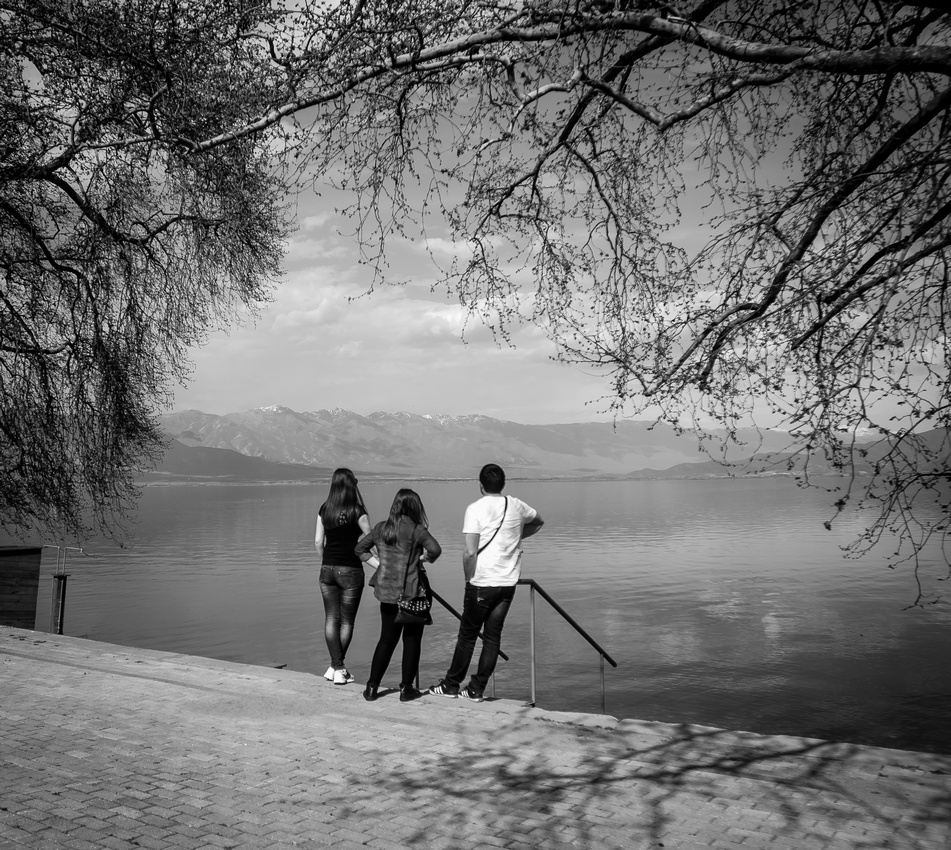 The promenade offers a lots of grandiose landscape views. This picture: Photo Violeta Sundberg
The promenade offers a lots of grandiose landscape views. This picture: Photo Violeta Sundberg
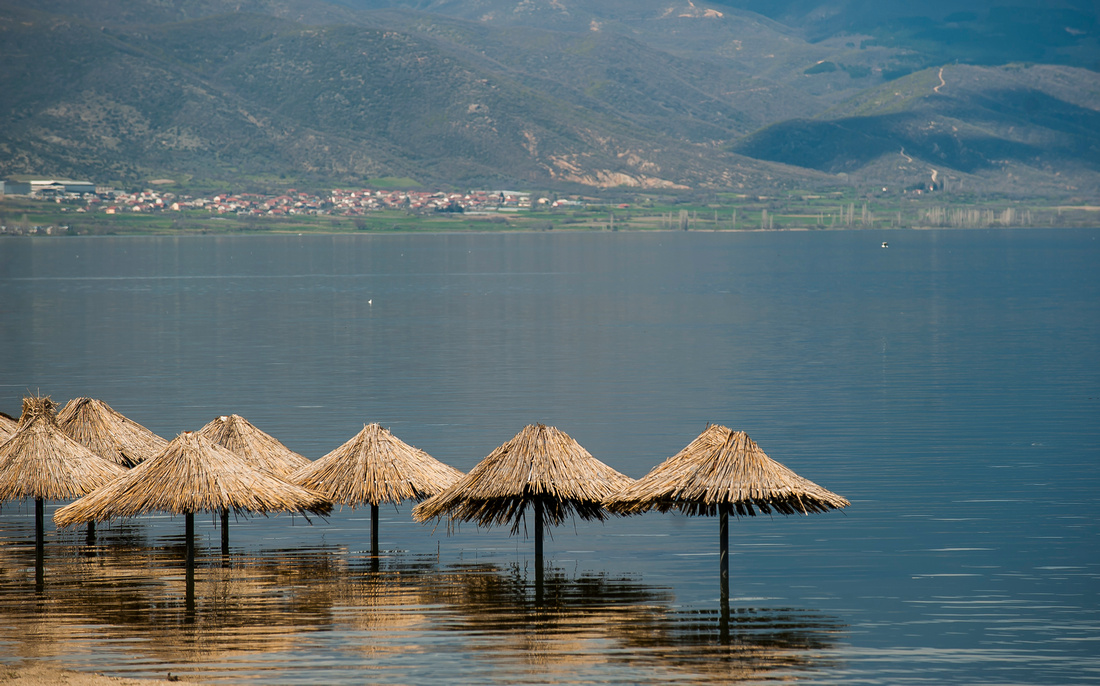 The waterline is high after the big amount of rain this winter. But don´t worry, it will be a summer season this year to :-)
The waterline is high after the big amount of rain this winter. But don´t worry, it will be a summer season this year to :-)
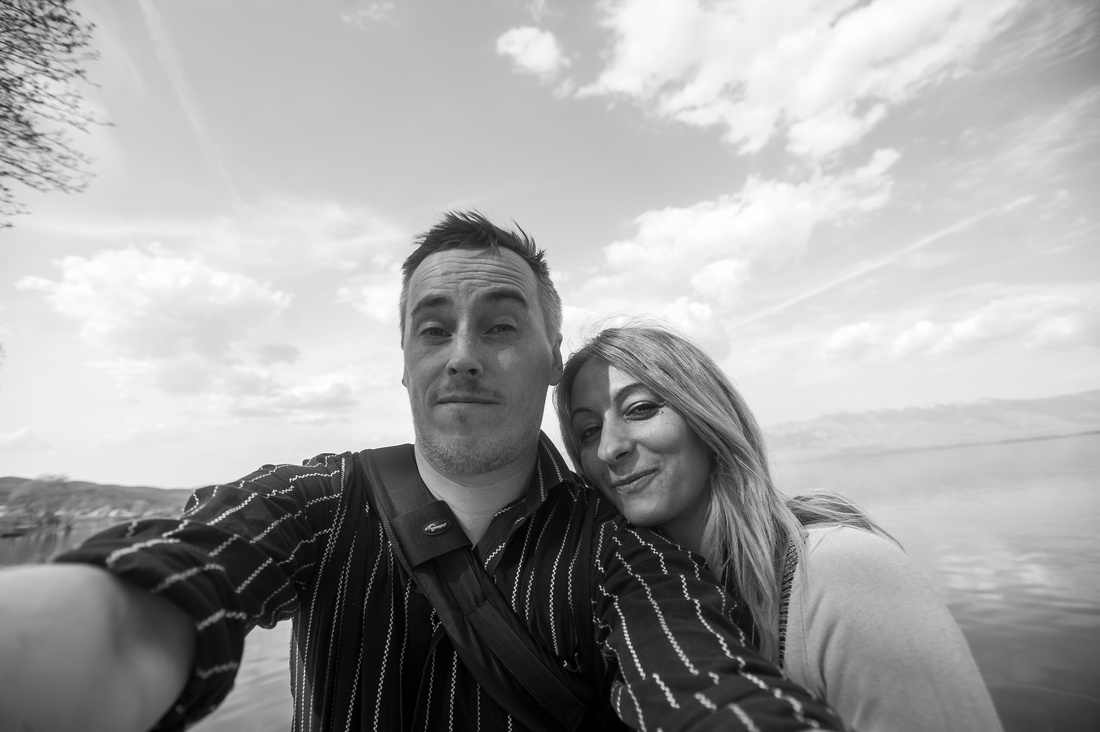
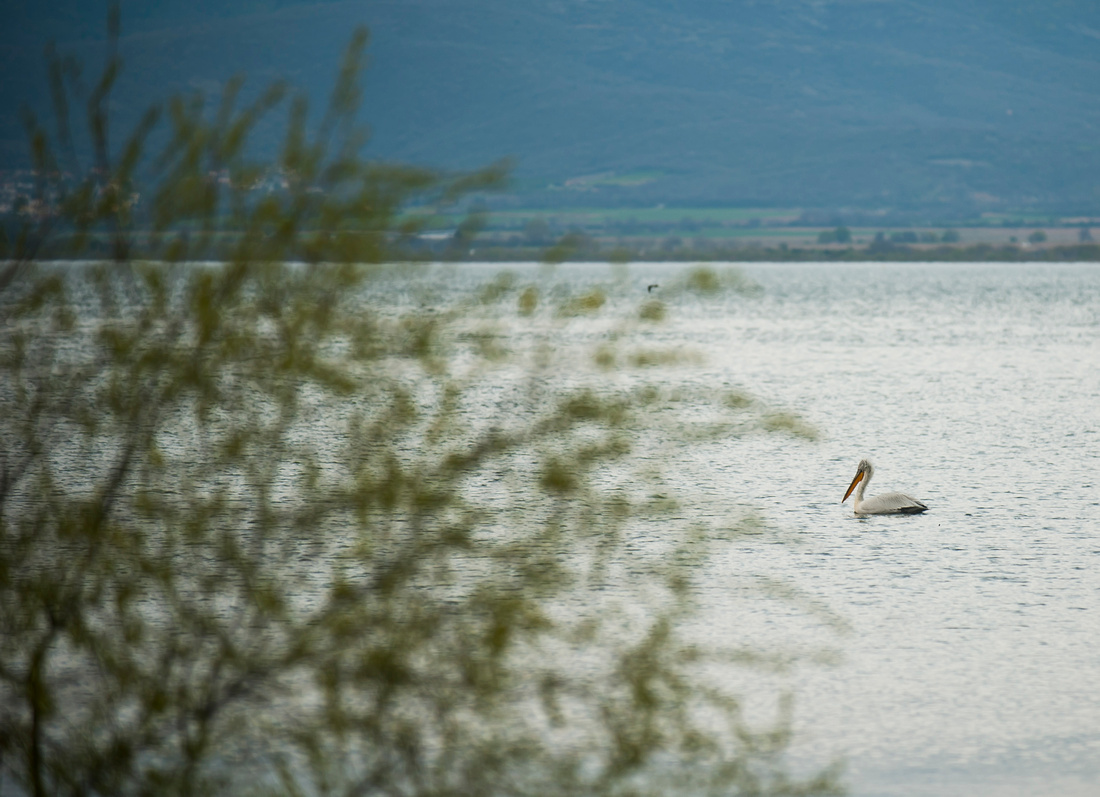
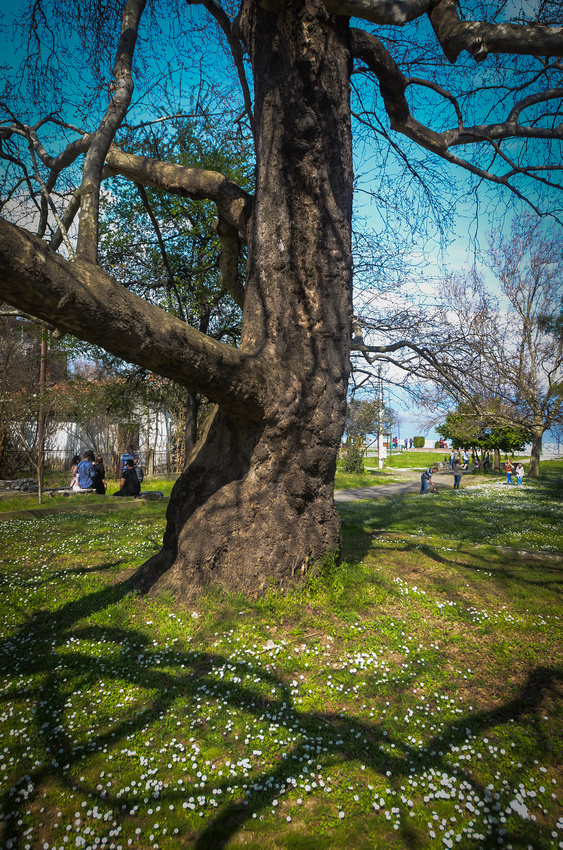

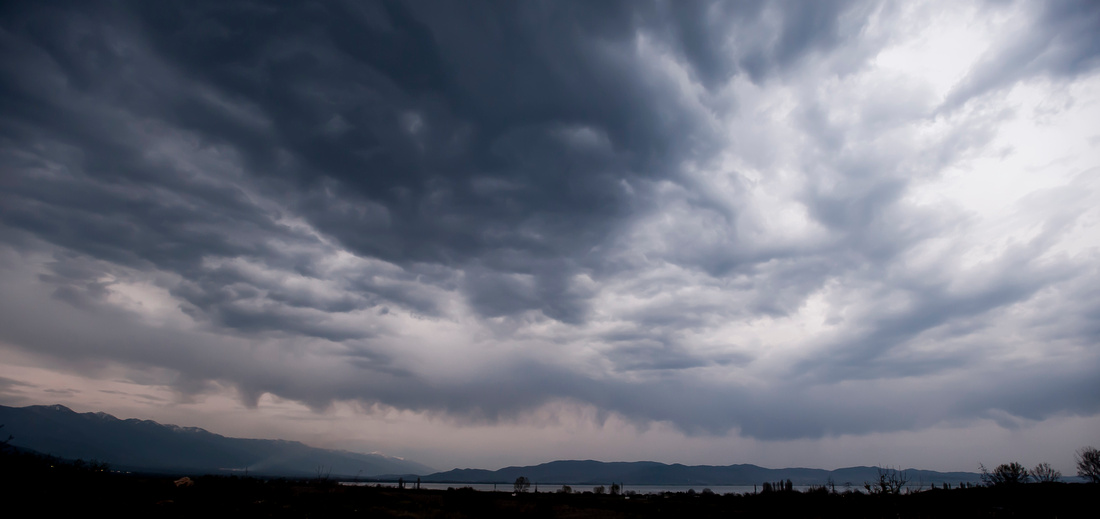 A last glimpse of the lake, for now, at the journey home.
A last glimpse of the lake, for now, at the journey home.
More interesting blogposts Fine art photo Wedding photoshoots Company photoshoots Events&magazines photoshoots
Happening now: If you live/are in Strumica: Warmly welcome to visit us in our gallery, in the center. Behind the Goce Delcev Statue on the square, near to Hotel Esperanto. We are now (april/may 2014) planning for the next exhibition - "Photographers around the world" - feel free to apply with your best photo!
]]>
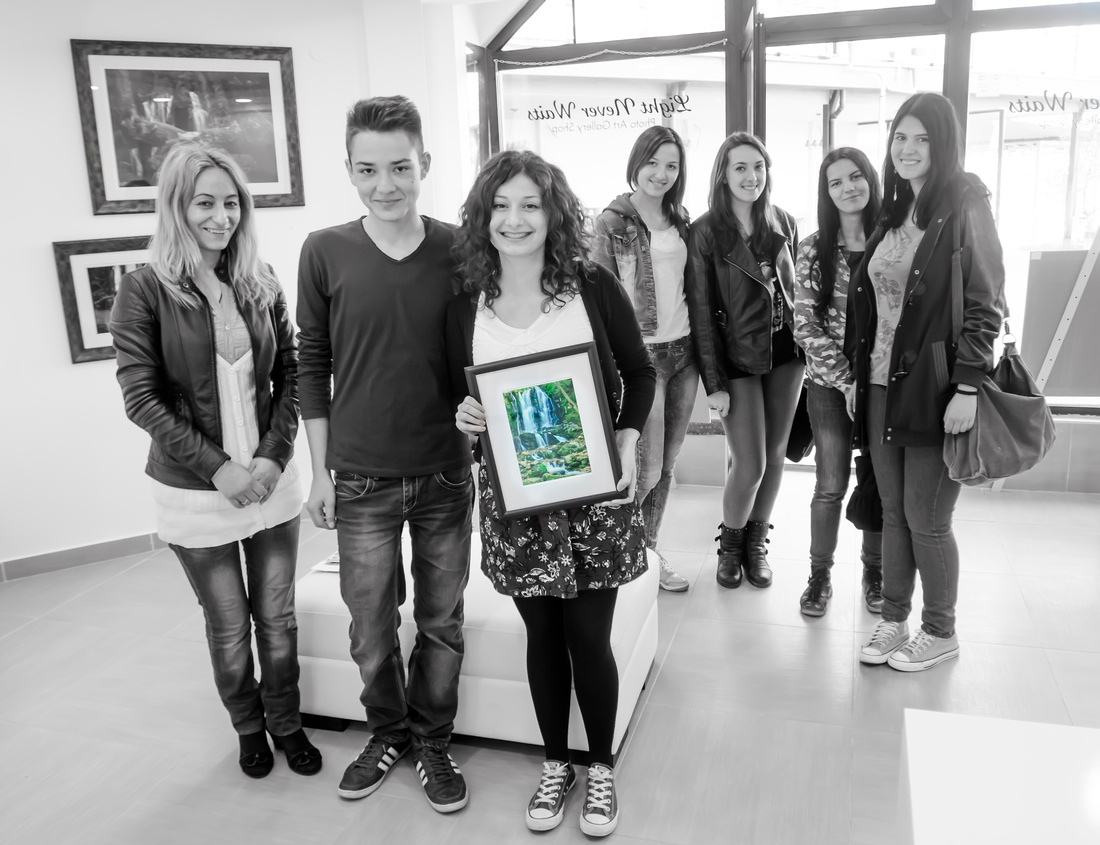
Back to the blog startpage Fine art photo Wedding photoshoots Company photoshoots Events&magazines photoshoots
If you live/are in Strumica: Warmly welcome to visit us in our gallery, in the center. Behind the Goce Delcev Statue on the square, near to Hotel Esperanto. We are also planning for an other exhibition for young talents, so feel free to come an show us your pictures.
]]>
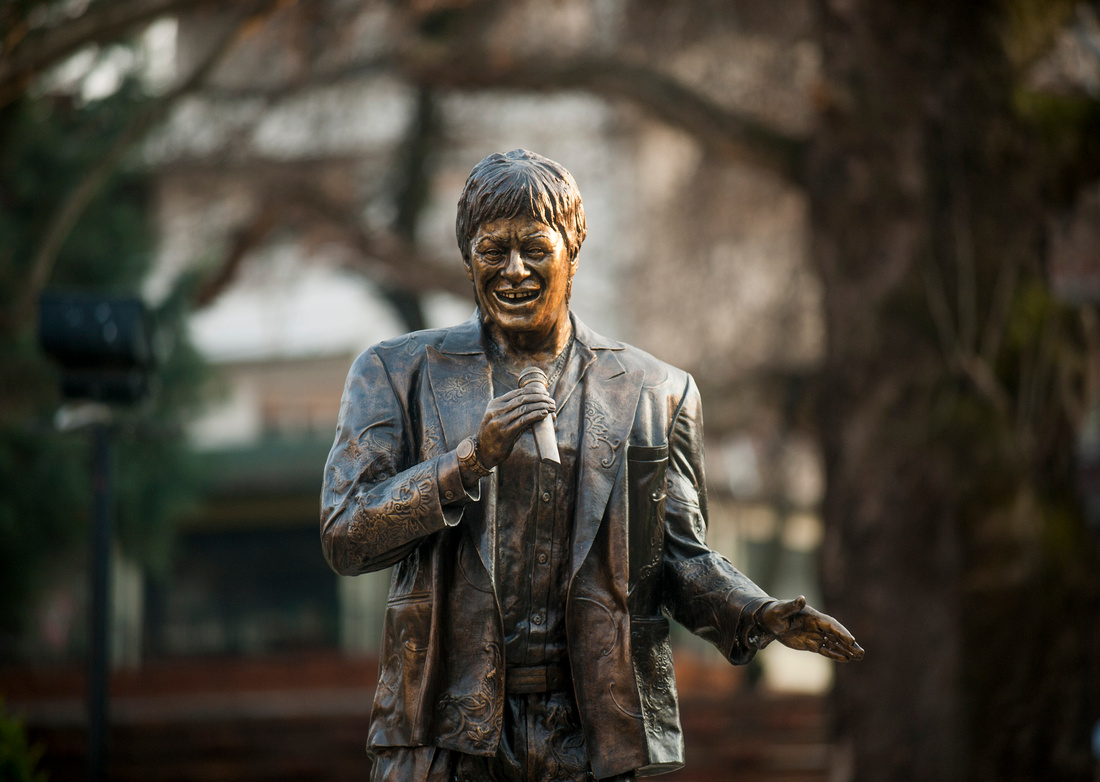
 Koki Kosev 14 and Zule Miteva 18 with their artistic pictures.
Koki Kosev 14 and Zule Miteva 18 with their artistic pictures.

]]>
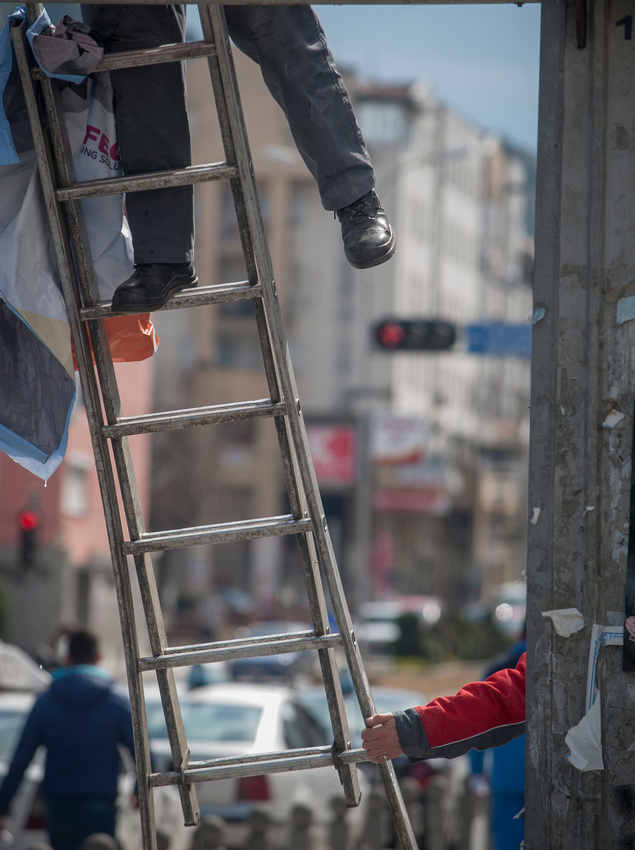 ]]>
]]>Svenska
Vi kör väl ett vintrigt inlägg till, medan det fortfarande är "kallt" i Macedonien. (8 grader, enligt prognoserna blir det varmt och sol från och med imorgon. Temperaturer på upp till 22 grader förutspås under de närmaste 10 dagarna.) Bilderna i inlägget är från det "gamla nyåret". Hur kan ett nyår vara gammalt? När Europa fortfarande följde den Julianska kalendern, inföll den 1 januari på den dag som är 14:e januari numera, när vi följer den Gregorianska kalendern. Runt om i det Orthodoxa Östeuropa lever traditionen kvar att att samlas ute på gatan eller på gården för att elda, äta och dricka, på det gamla datumet. Små orkestrar drar runt stan och spelar traditionell musik till de grillande sällskapen som inte sällan spontant sätter igång att dansa. Själv drog jag runt med kameran, som synes, blev bjuden på Rakija, en och annan bit mat, pratade bort en stund innan jag likt en insekt drogs till nästa ljuspunkt i natten
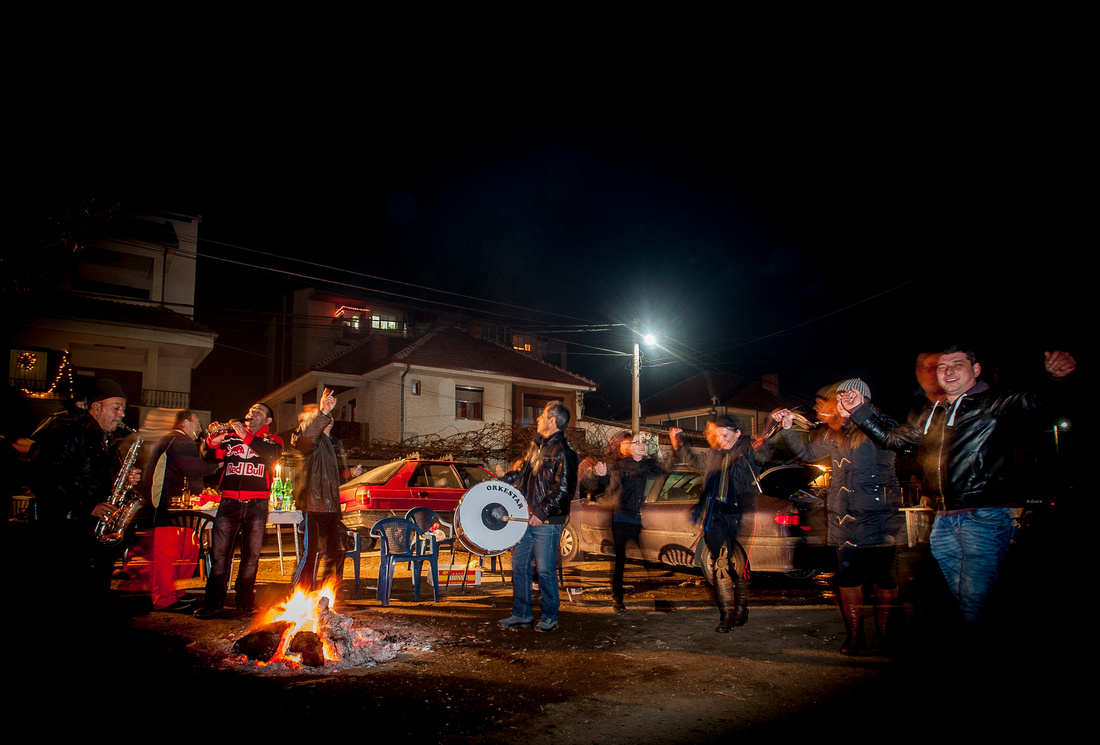

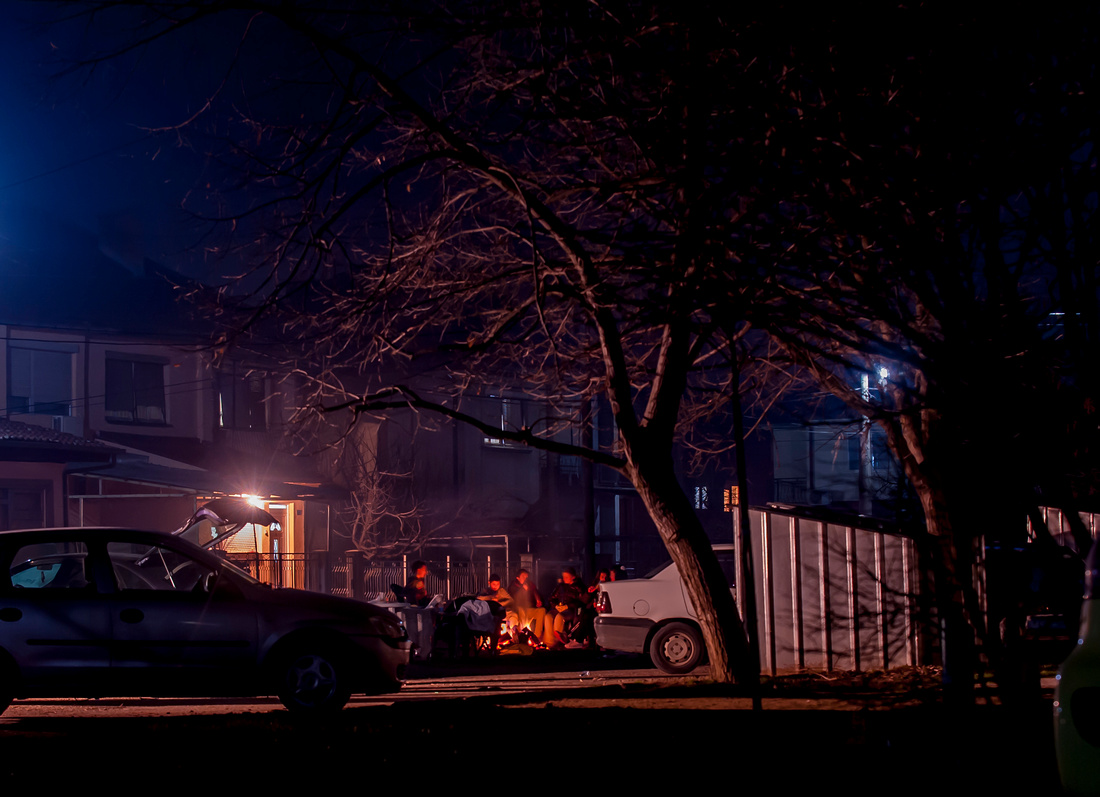
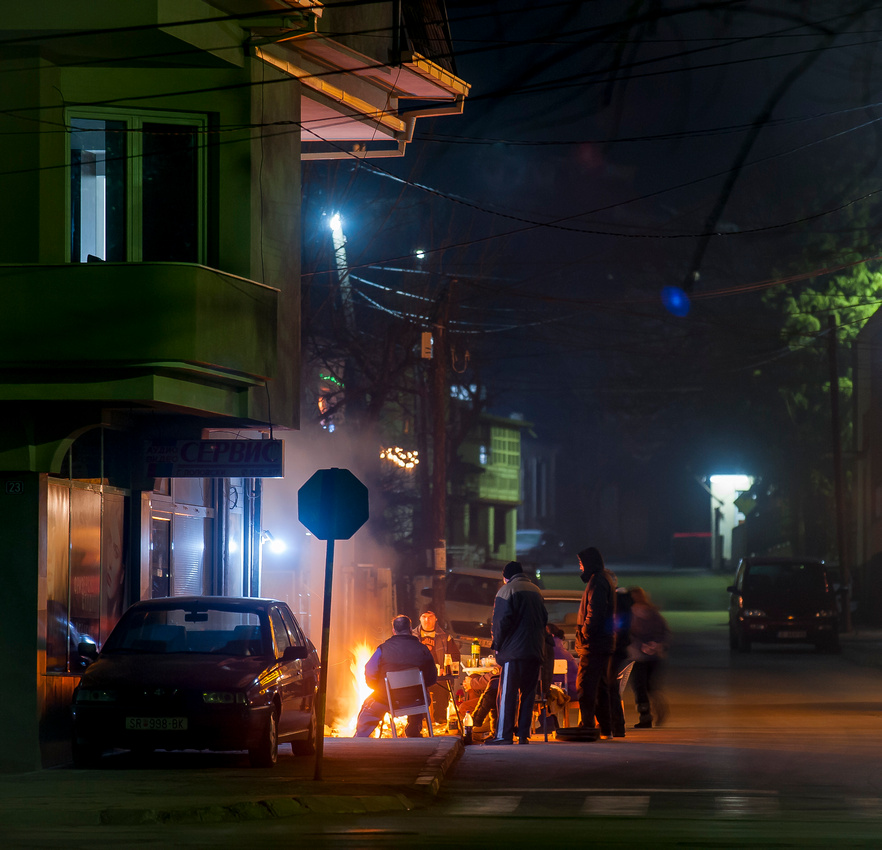
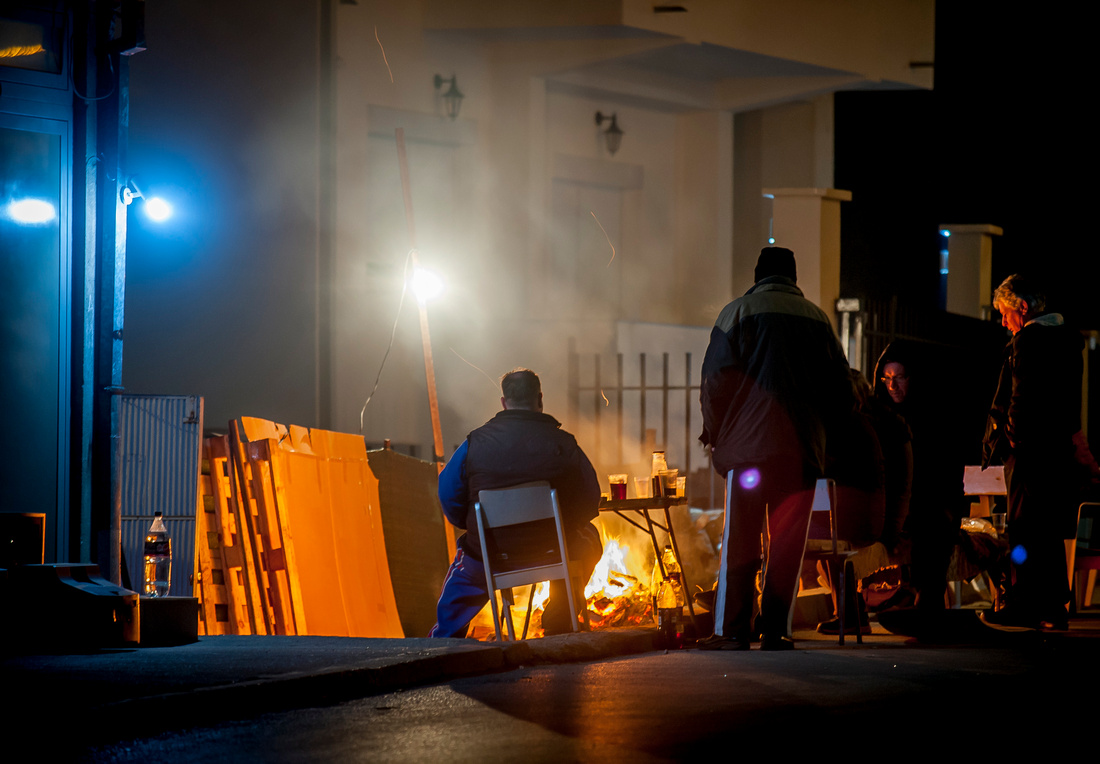
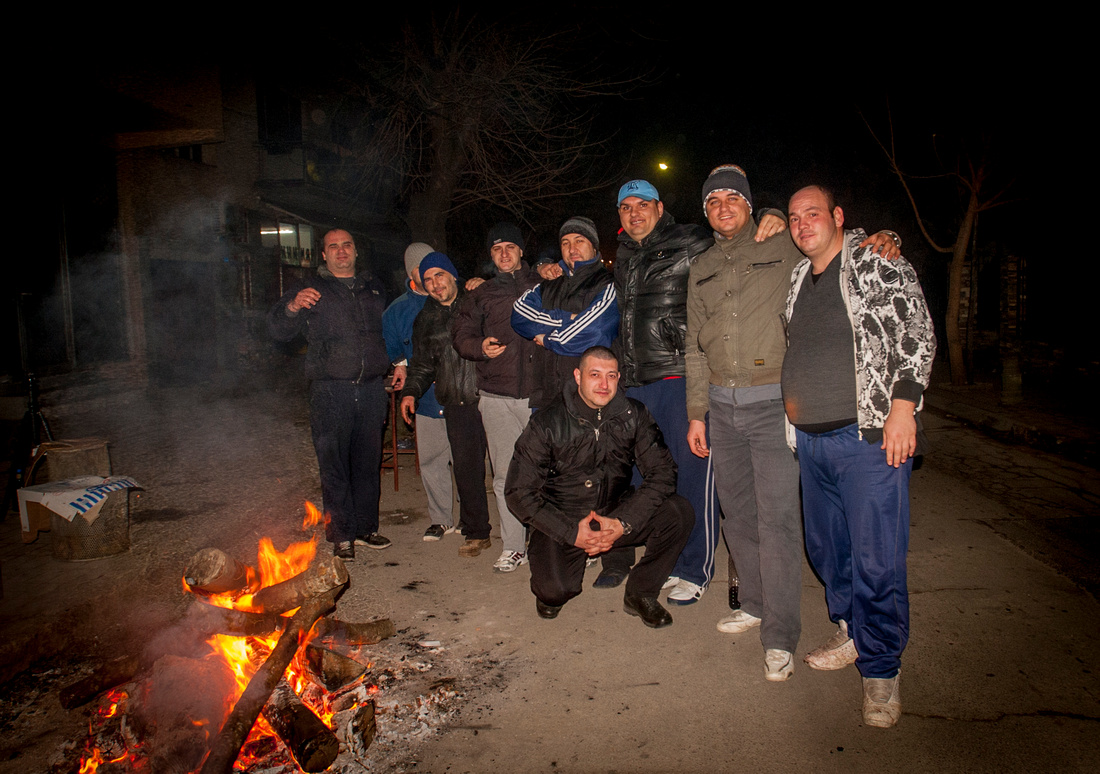
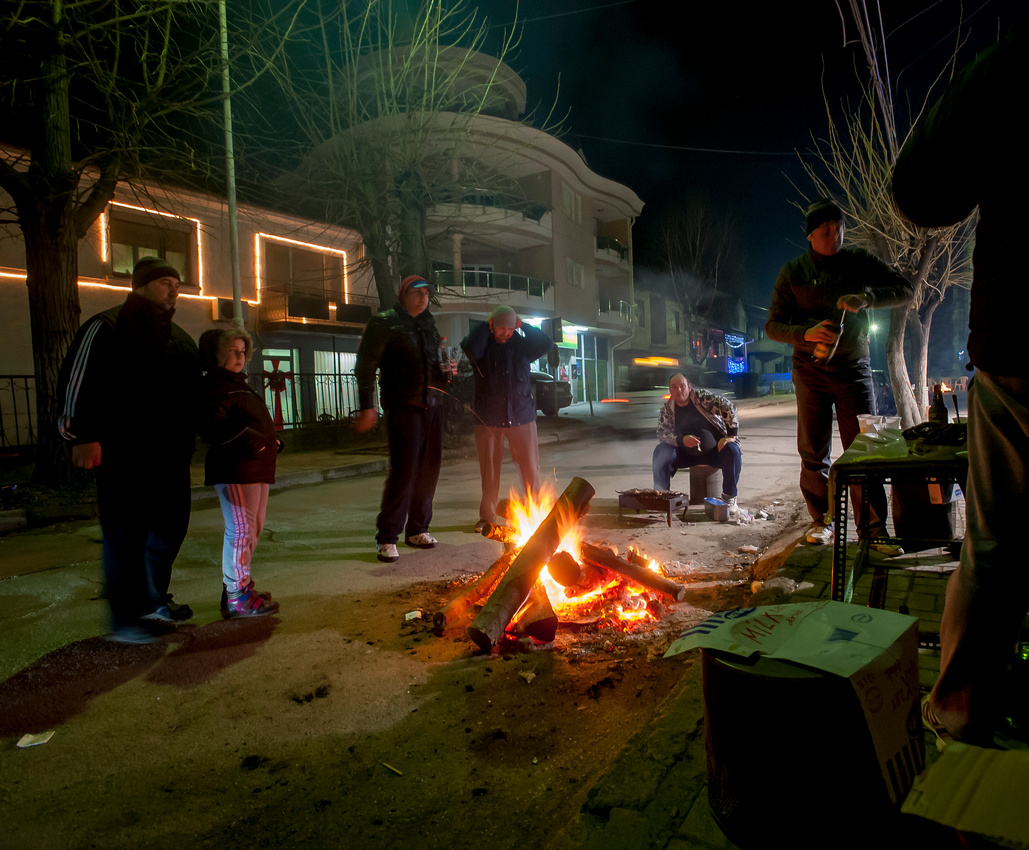
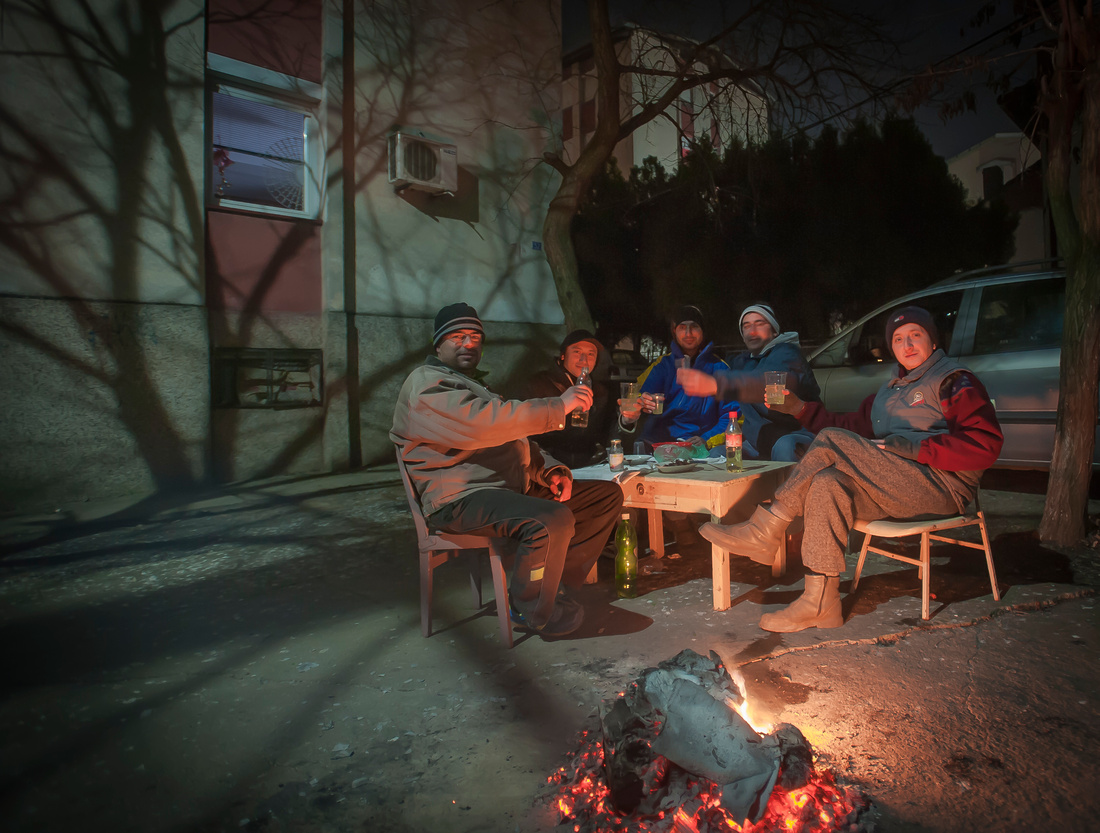 If you want to know more about this tradition, wikipedia has an good article here
If you want to know more about this tradition, wikipedia has an good article here
If you are in Strumica, feel free to visit us, talk a little and see framed pictures at our gallery/shop, near to Hotel Esperanto, below old bar Scala, we have photo art from Macedonia and Sweden.
Are you an artist or photographer, maybe we can cooperate in some interesting project. Contact us!
Do you want to by a print from the post? Contact us here
]]>

 One evening in february, fire smoke entered in our apartment, and we discovered this burning chimney from the balcony. We dressed and went there to warn the residents of the house, but on arrival the fire department and neighbors, had already gotten there. So I could in good conscience set up the camera at our balcony. After about 15 minutes the fire department apparently won the battle, and the soot fire was extinguished, as well as everyones main concern.
One evening in february, fire smoke entered in our apartment, and we discovered this burning chimney from the balcony. We dressed and went there to warn the residents of the house, but on arrival the fire department and neighbors, had already gotten there. So I could in good conscience set up the camera at our balcony. After about 15 minutes the fire department apparently won the battle, and the soot fire was extinguished, as well as everyones main concern.
Carevi kuli (Tzars tower) can be seen from many parts of the town , as it sits on a high hills. In about 1000 years it has done so, since the Bulgarian king Samuel had it built (area belonged to Bulgaria at the time). Today only ruins remains but it is about to change now, because through an EU project currently is restoring the fortress. The view of the city and surroundings are, as you can see magnificent. We used a fine spring day in March to make the short hike up to the fortress, (about 20-30 minutes) and found a for us, new path down the front of the hill. The hike down was a little bit of adventurous with some small falls and wounds - but everybody survived.
Read more about the fortress at the exelent Strumica information page "Come to Strumica" http://come2strumica.mk/welcome/historical-sites/tzars-towers-fortress/
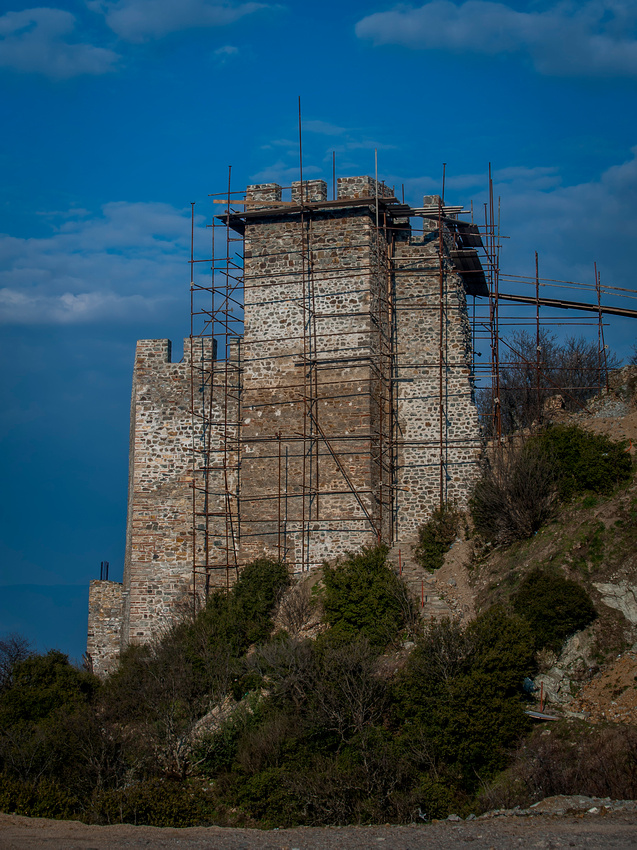
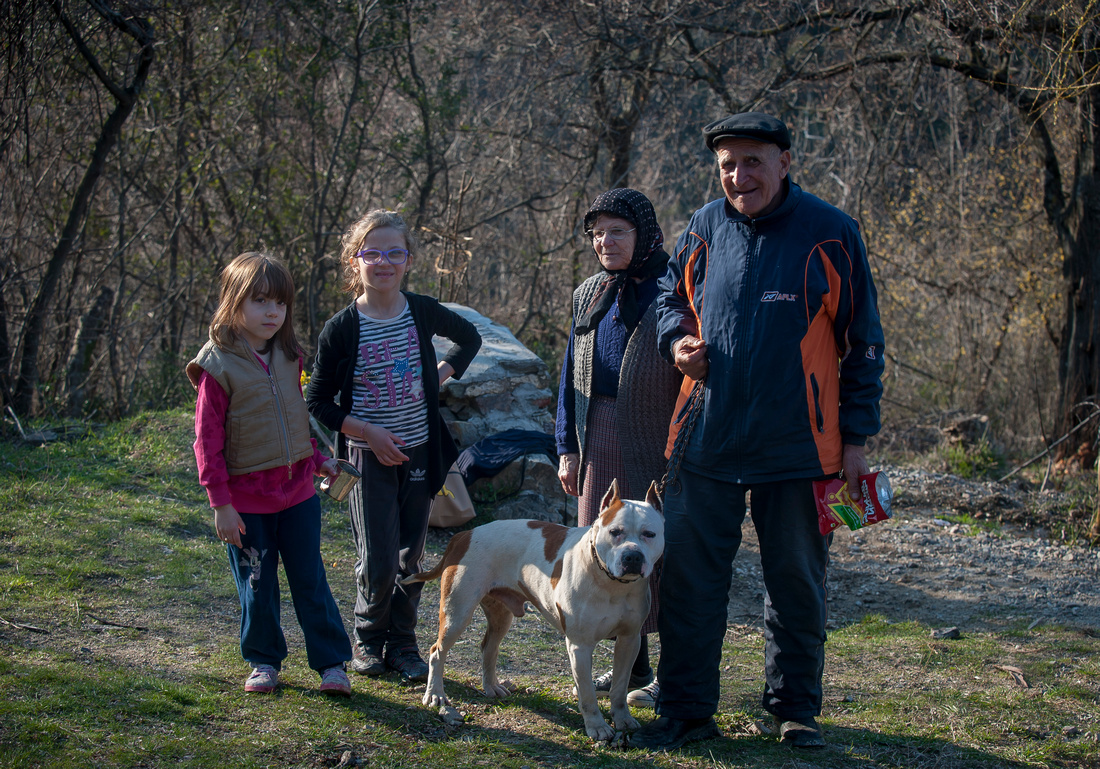 Fellow hikers.
Fellow hikers.
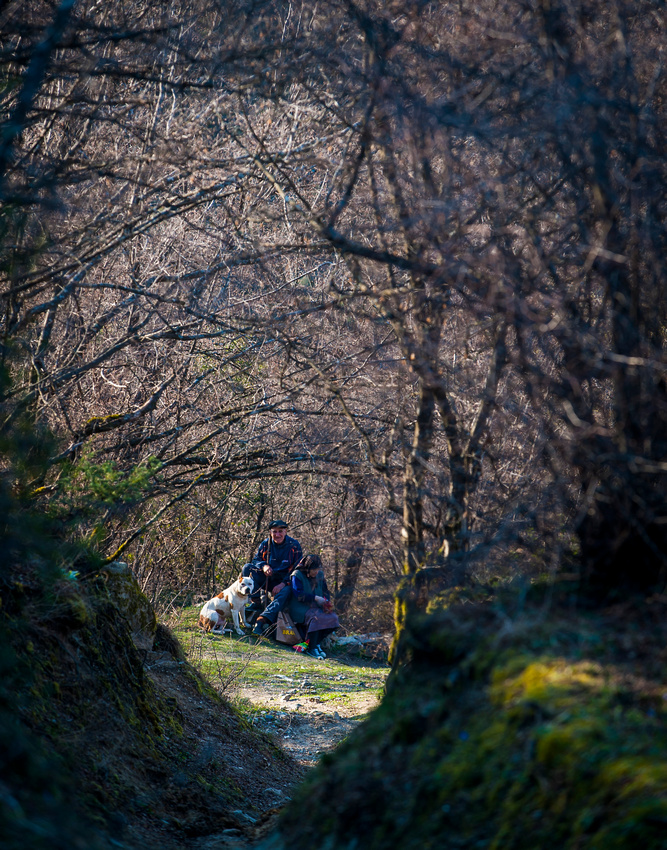
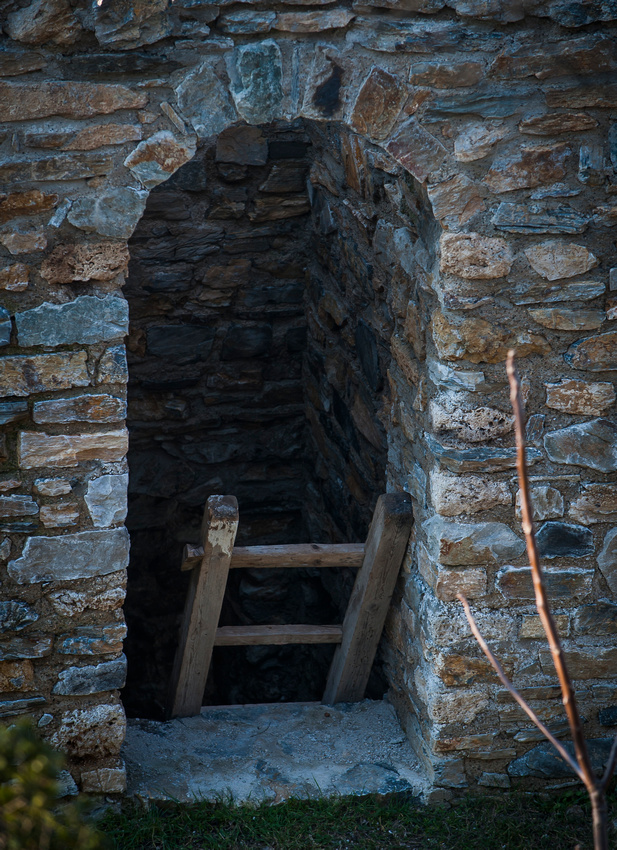


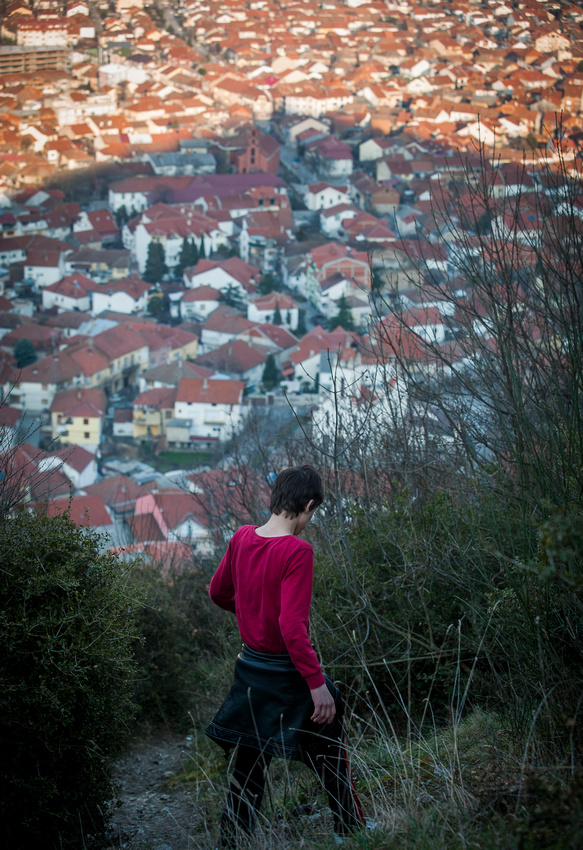
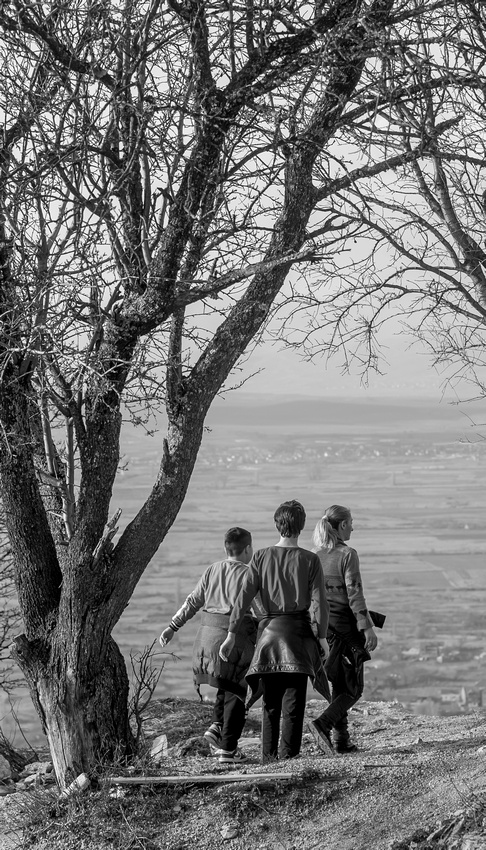

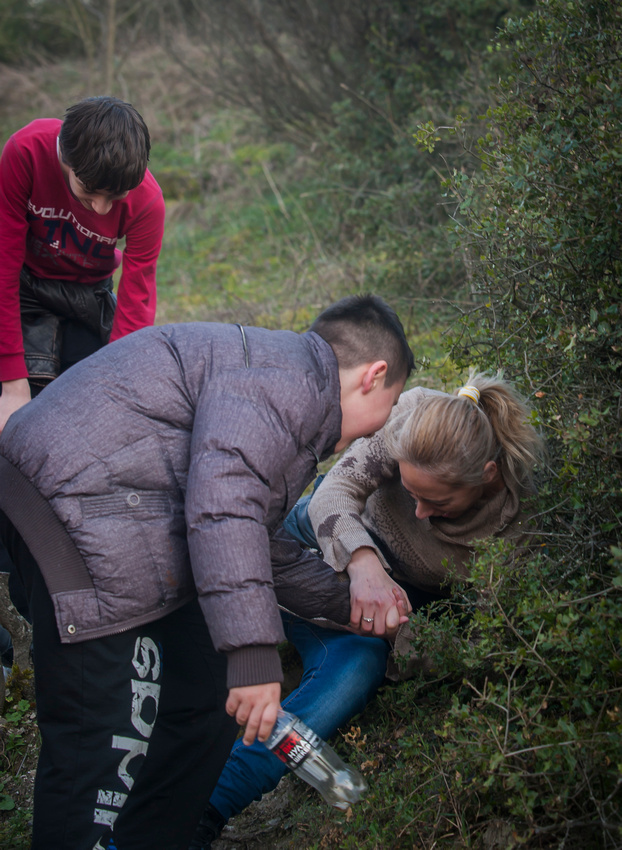
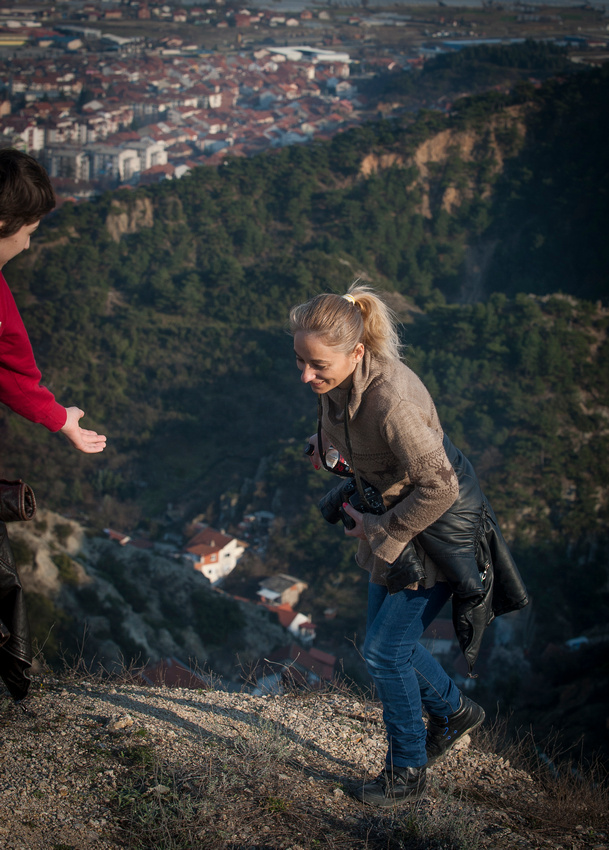
Happening now: If you live/are in Strumica: Warmly welcome to visit us in our gallery, in the center. Behind the Goce Delcev Statue on the square, near to Hotel Esperanto. We are now planning for next exhibition - "Photographers around the world" - feel free to apply with your best photo!
]]>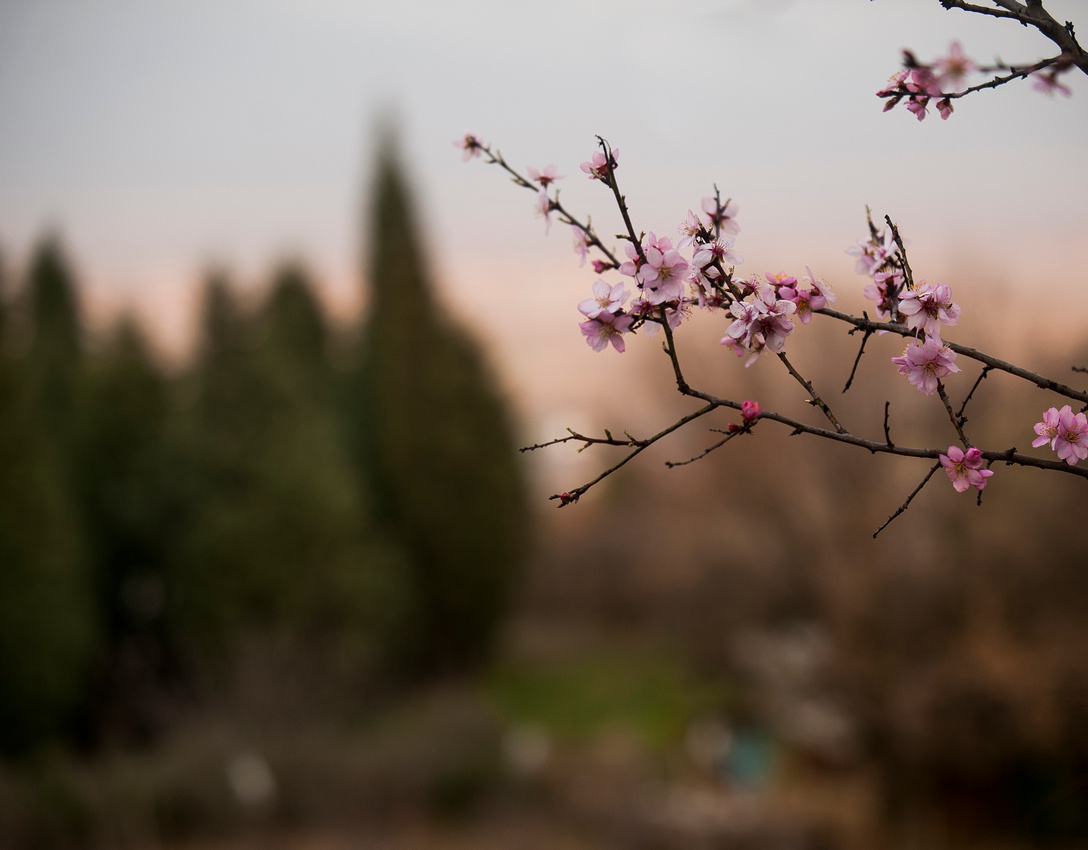
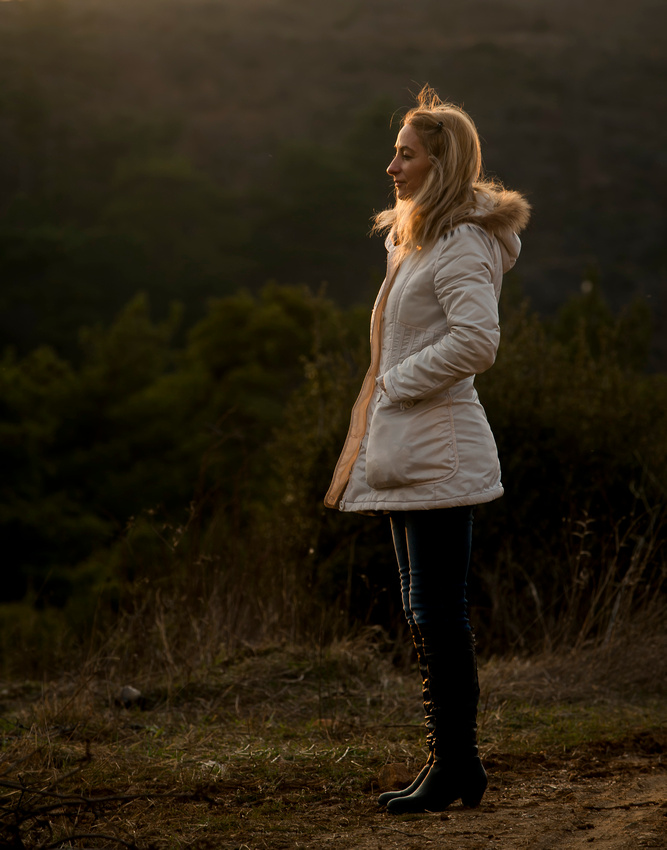
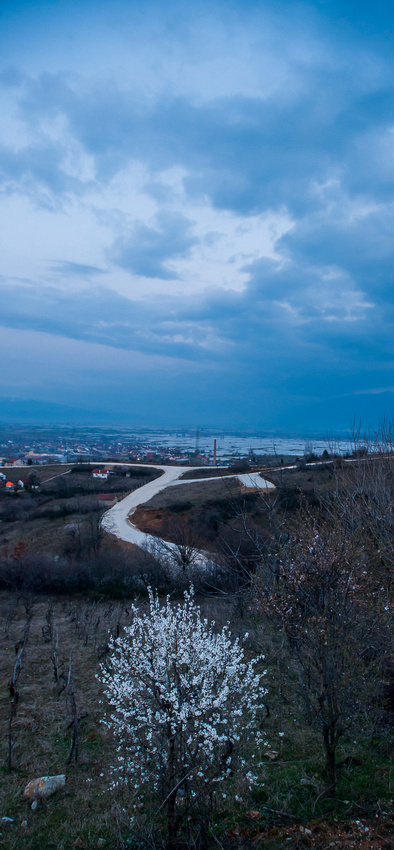
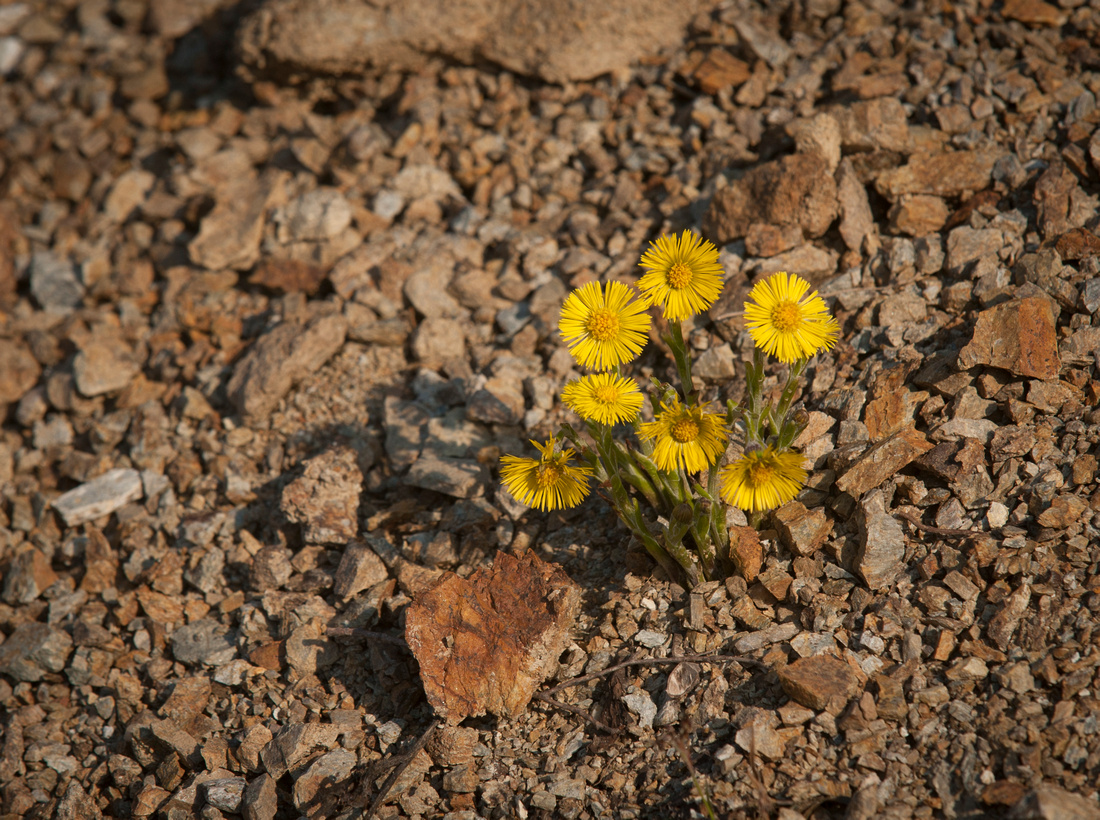
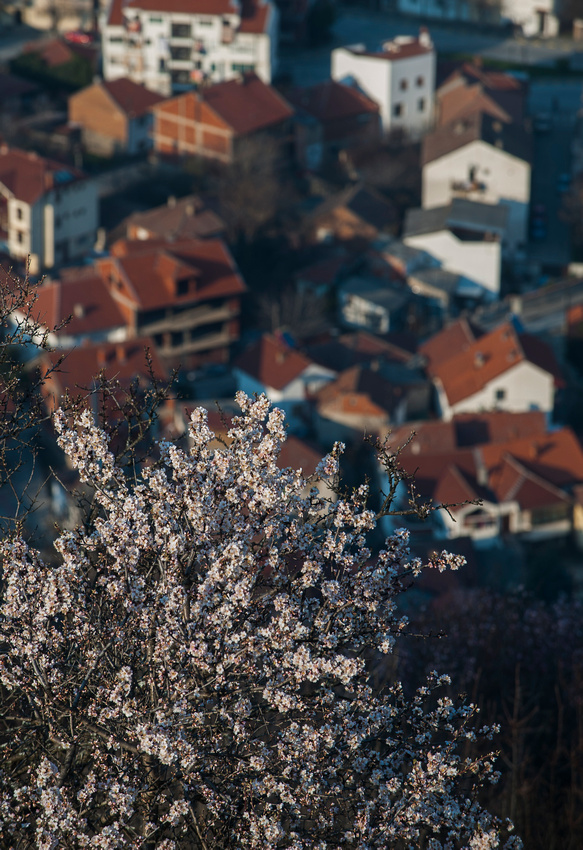 ]]>
]]>

Svenska
Fredag! Galleriets andra vecka i livet är snart till ända. På agendan denna vecka har stått att ta fram marknadsföringsmaterial såsom logga, visitkort, flyers mm. Lokal tv-reklam står på tur.
Vädret i Strumica kunde varit bättre, vi har visserligen lite vårtecken såsom att pilträden har börjat grönska, men temperaturen har åter fallit ner kring 5-10 grader, hemma hade det känts som sommar med sådana marstemperaturer men inte här - man anpassar sig :-)
Trots vädret har många intresserade/intressanta människor har hittat in till oss. Om du bor/är i Strumica - även om du inte tänkt köpa något, var inte blyg, så är du såklart välkommen in och titta och t.ex prata foto och konst eller bara "surra en stund" som vi säger hemma.

]]>
Contact me here for buying pictures or for a photojob - weddings, magazines or events.
Or if you are in Strumica - welcome to visit me and Viki at our new fine art photo gallery near to hotel Esperanto and Arc plaza café, behind the main square.
]]>
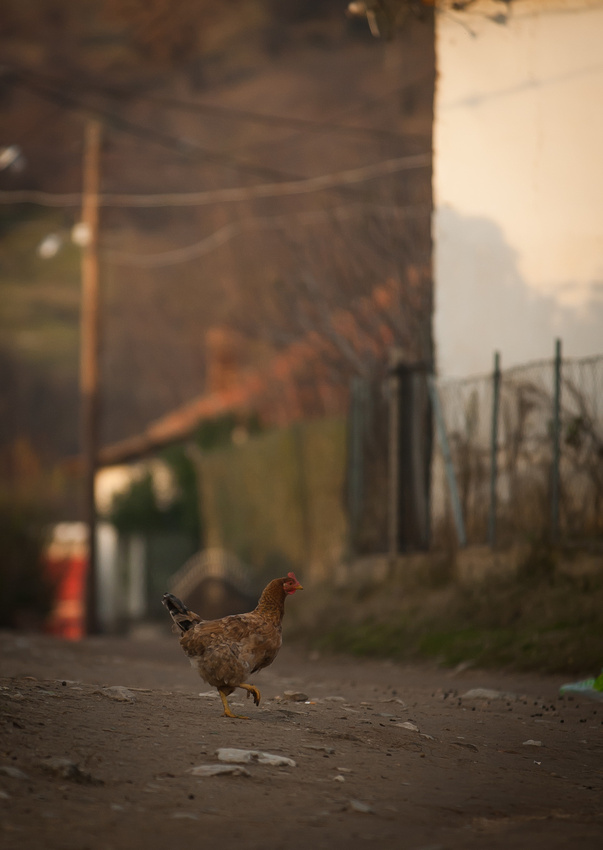
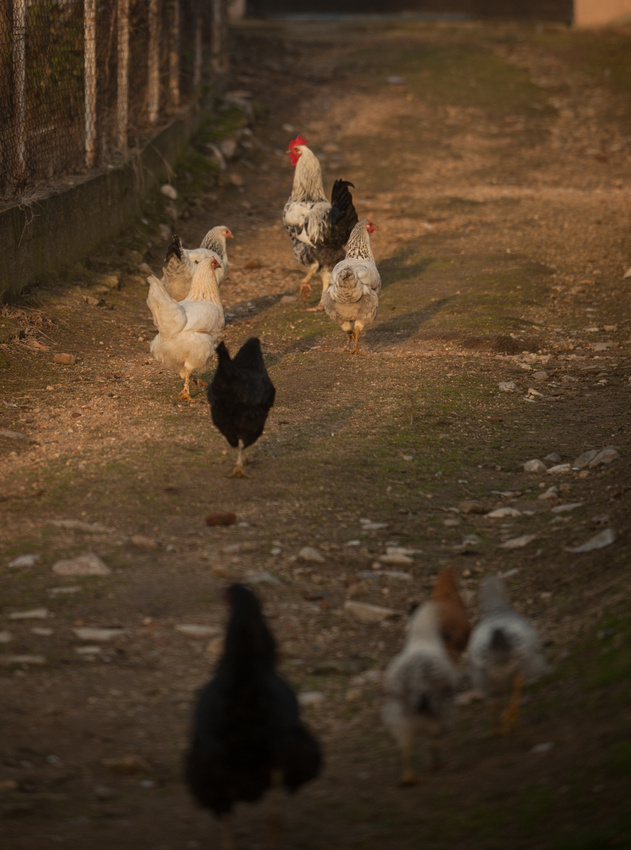


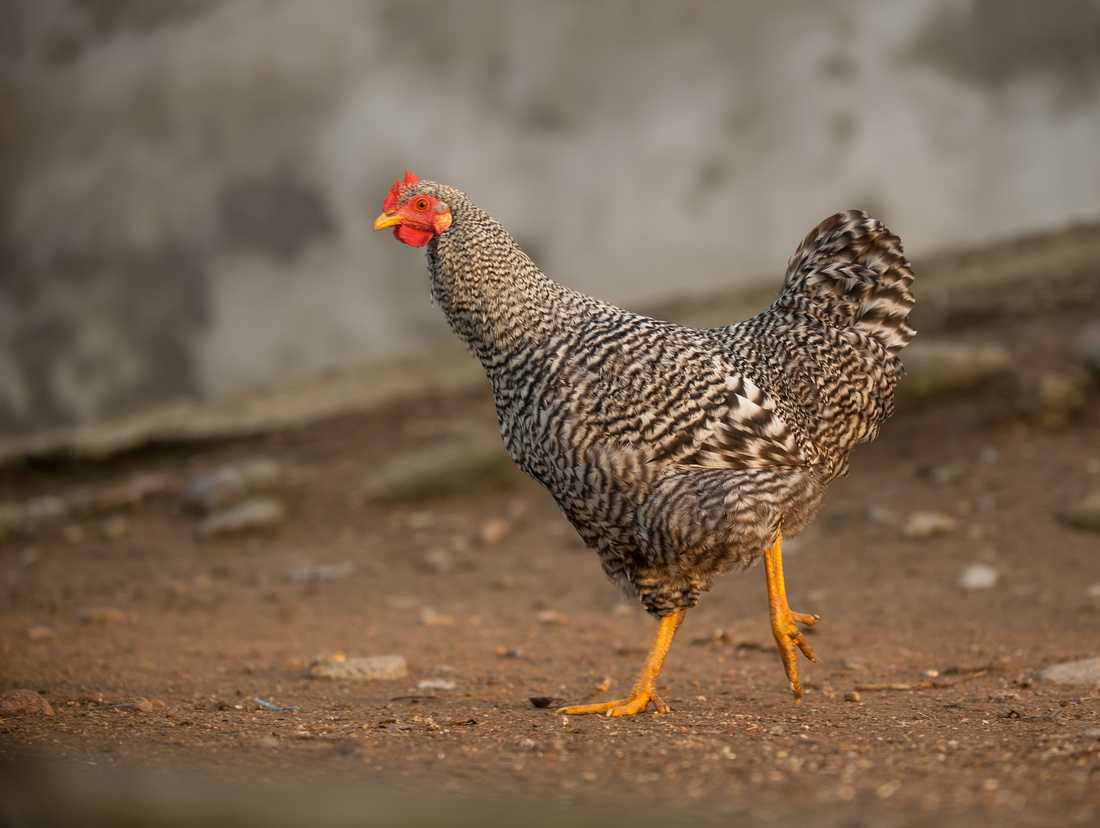
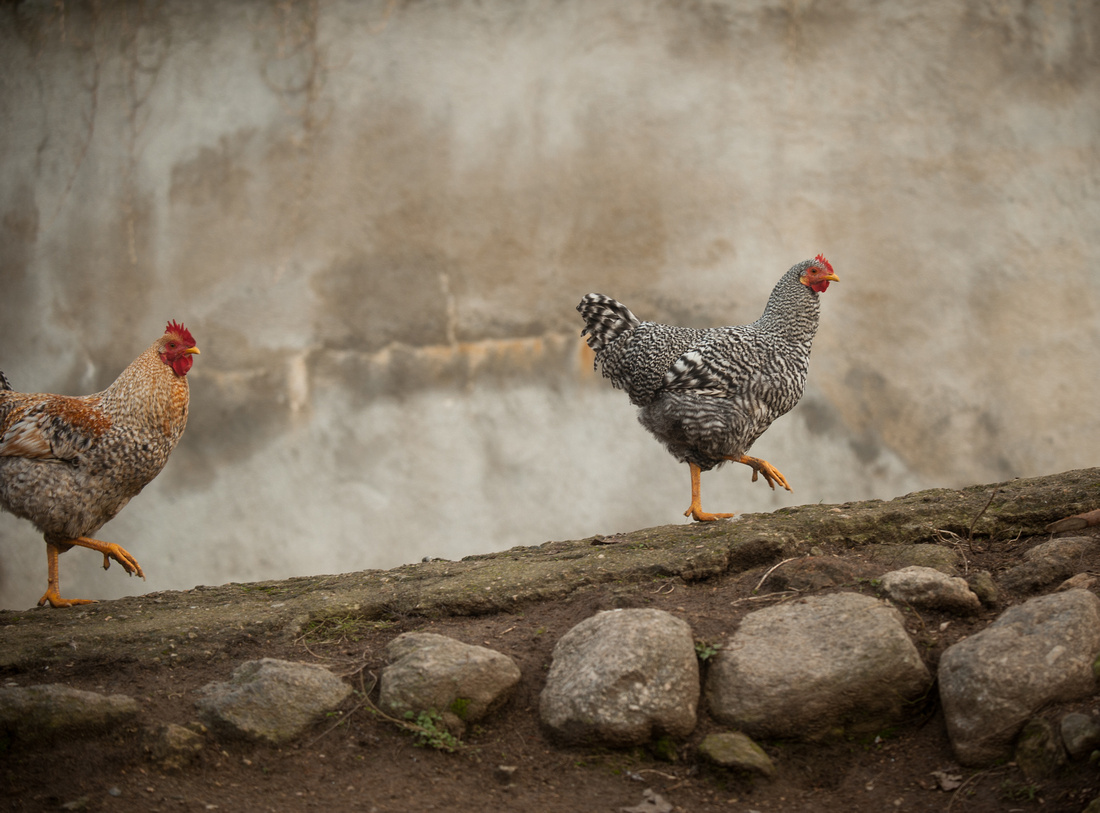
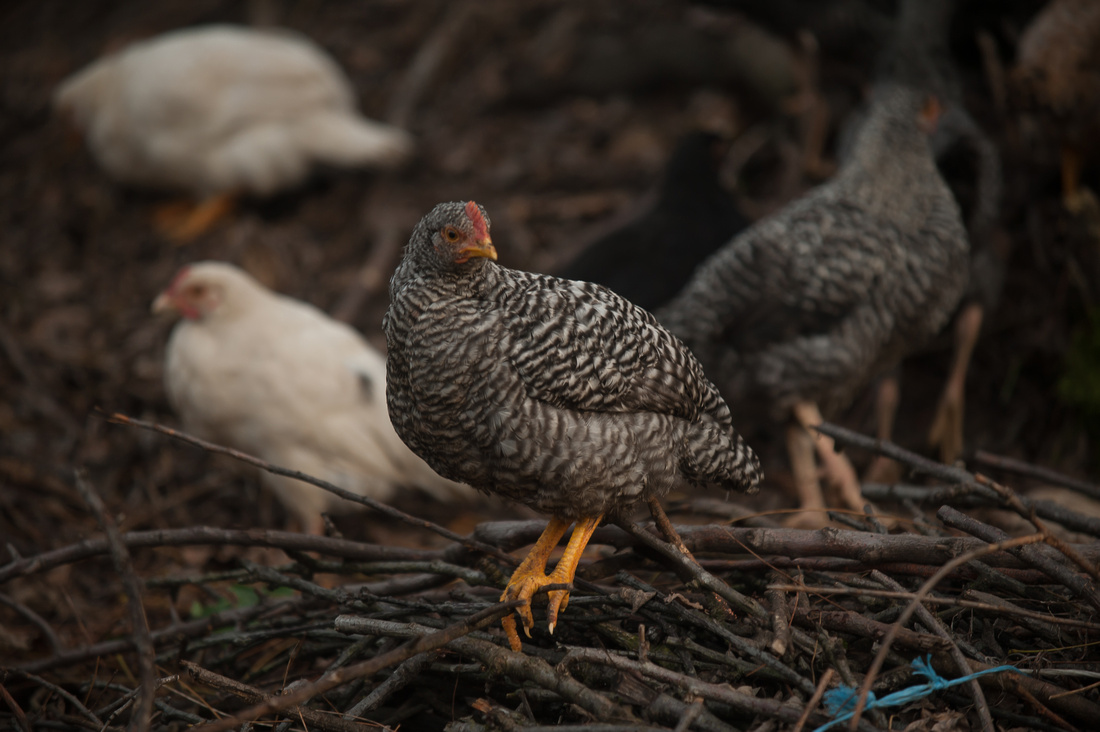
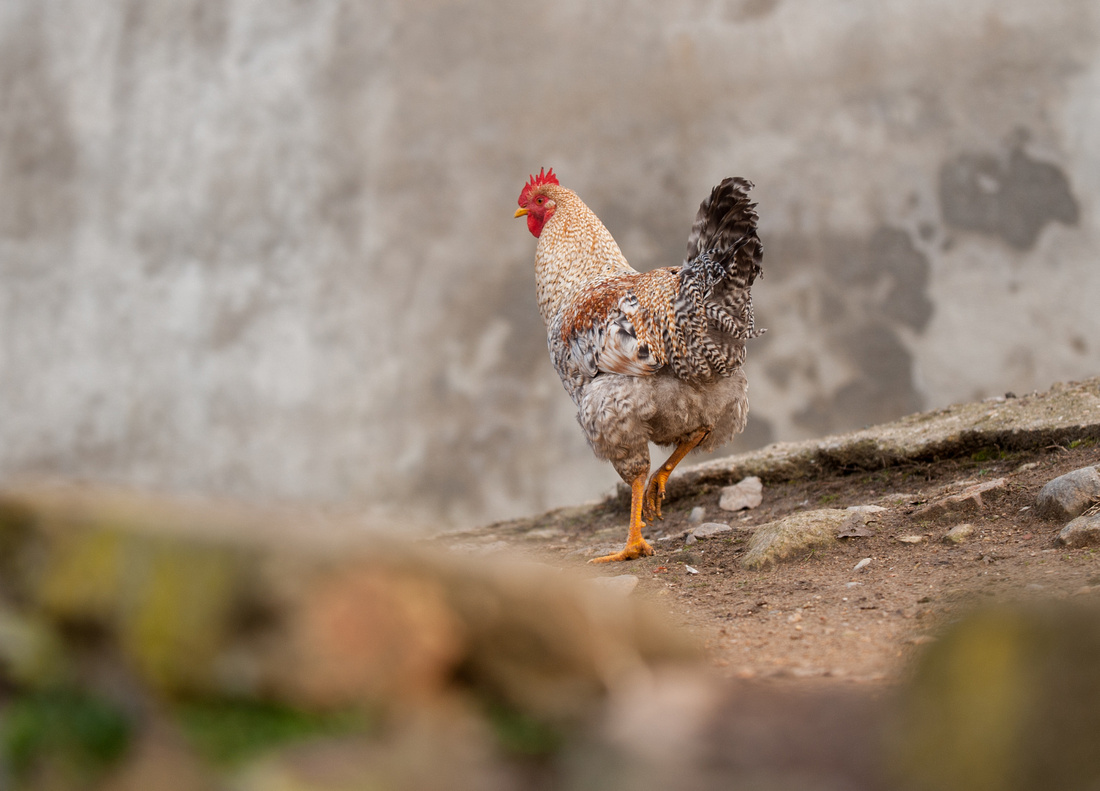
Pictures from a MAcedonian village, in november 2014.
]]>
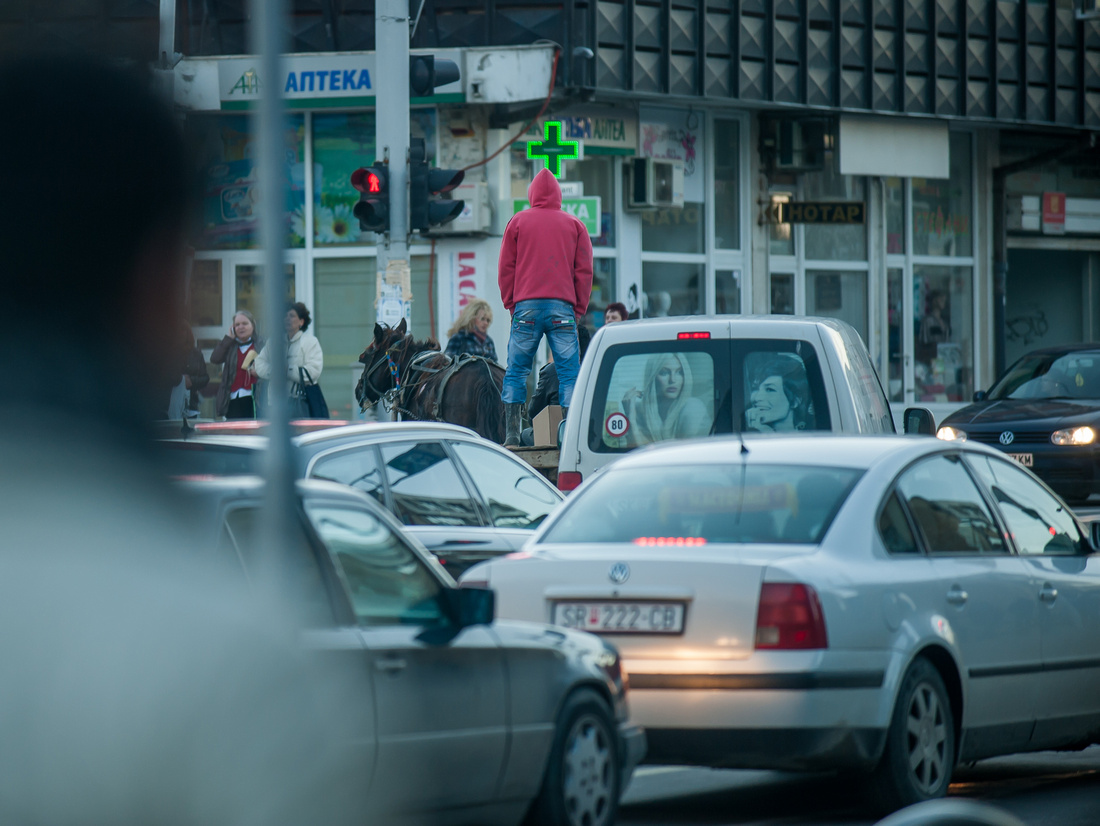

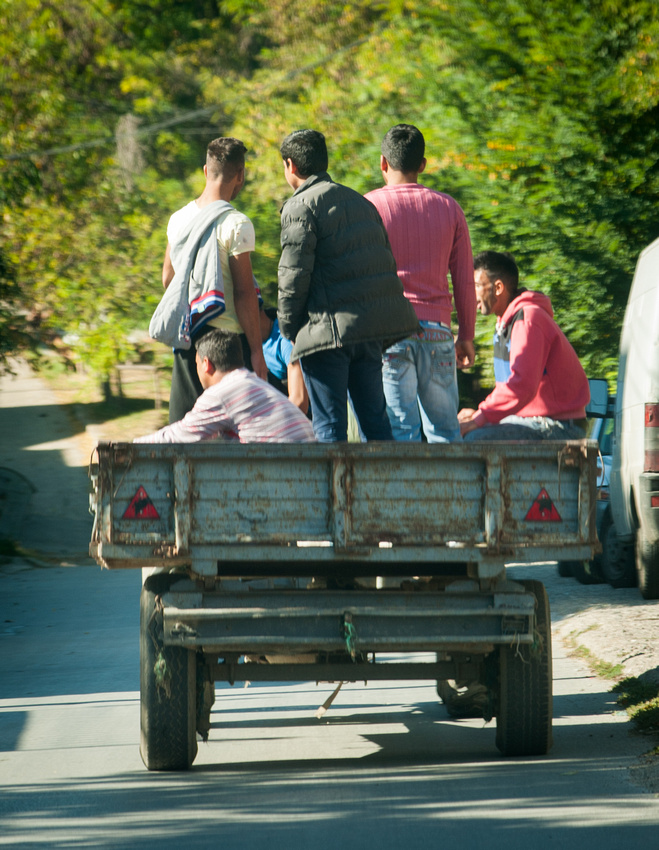 '
'
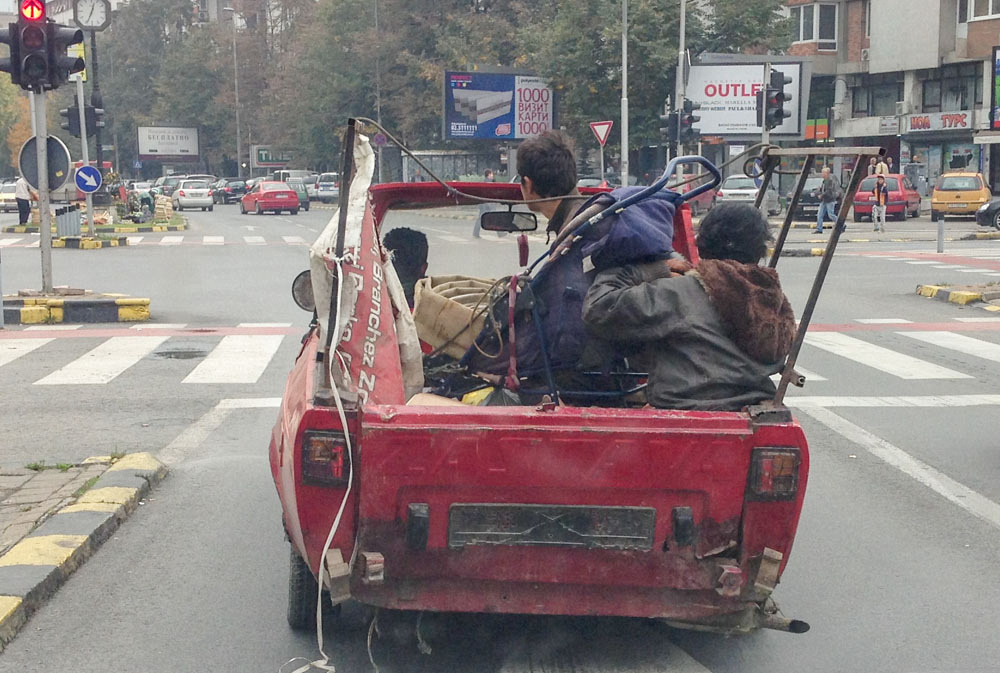
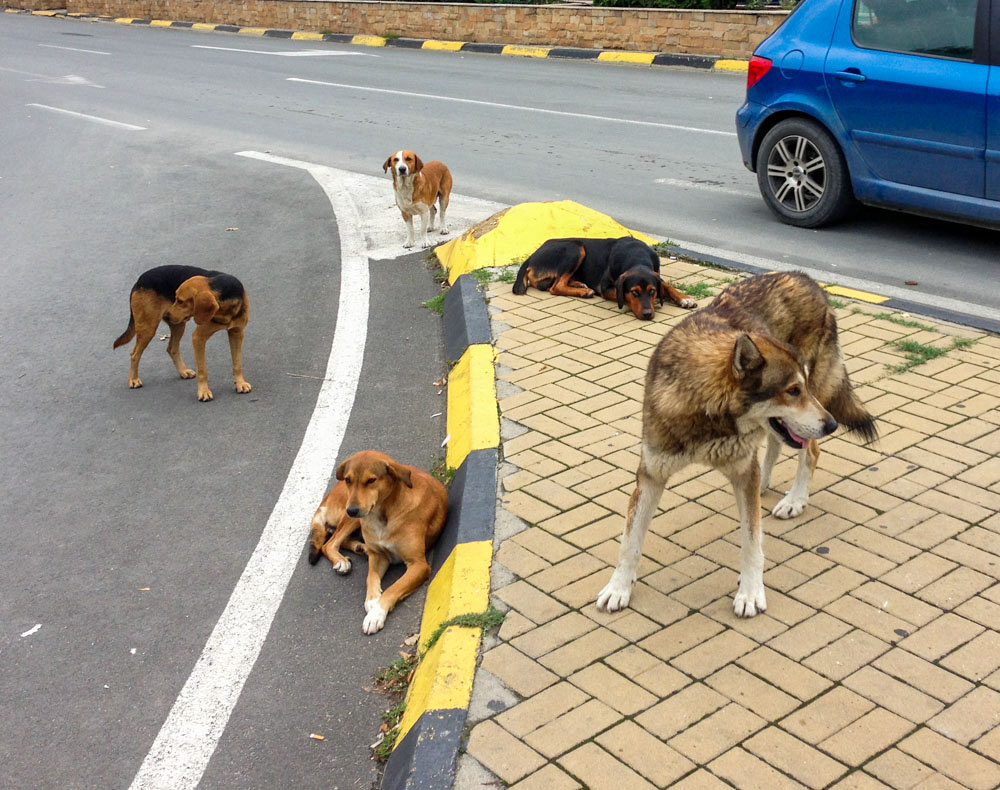
Svenska
Ta en tupplur och känn kraften återvända! Forskning har visat på massor med fördelar med att ta en tupplur dagligen. För kreativiteten, för minnet för hjärtat, och för mycket annat. Och visst känner man sig fräschare efter tuppluren, om den inte blir för lång, så att uppvaknandet blir för tungt. Begränsa till max en timme - en halvtimme säger somliga experter- också för att inte störa nattsömnen. Någonstans mellan klockan 13-16, sägs vara effektivast. Även en s.k powernap (ca 20 minuter) kan göra underverk. Det här gänget, som jag träffade på förra våren, vid de gamla stadsmurarna i Thessalonike, höll definitivt med.. (Hundarna "nappade" dock i centrum )

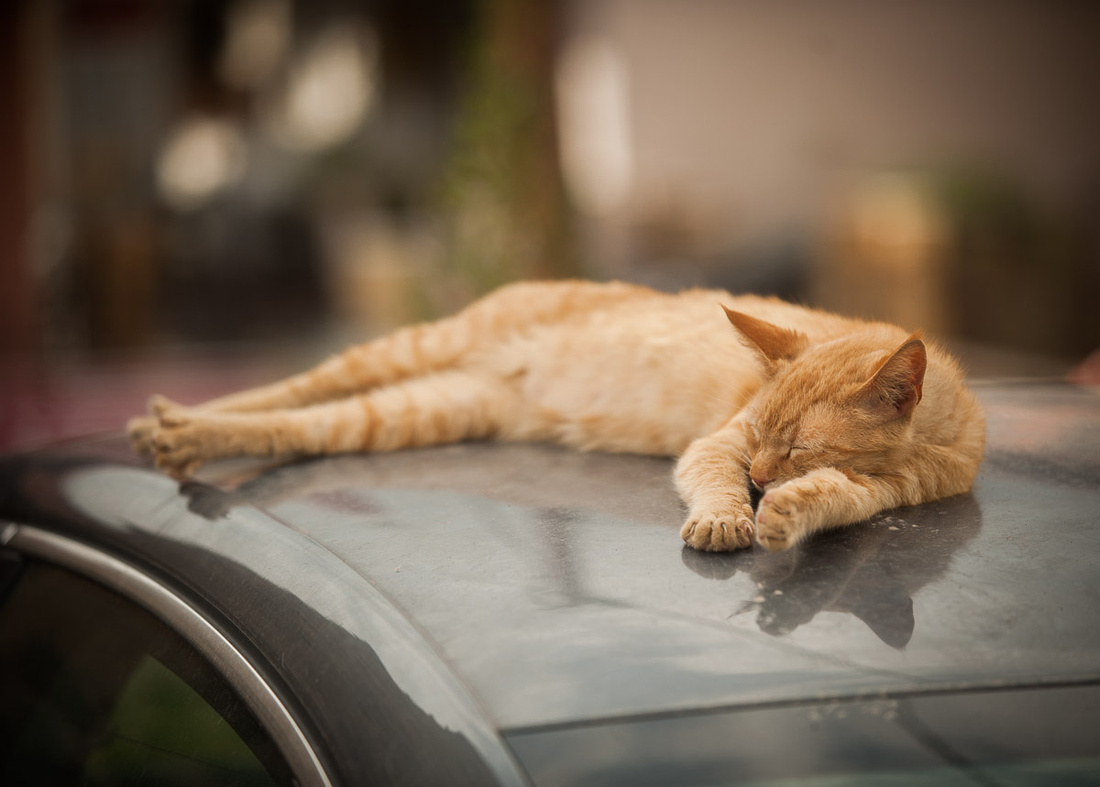


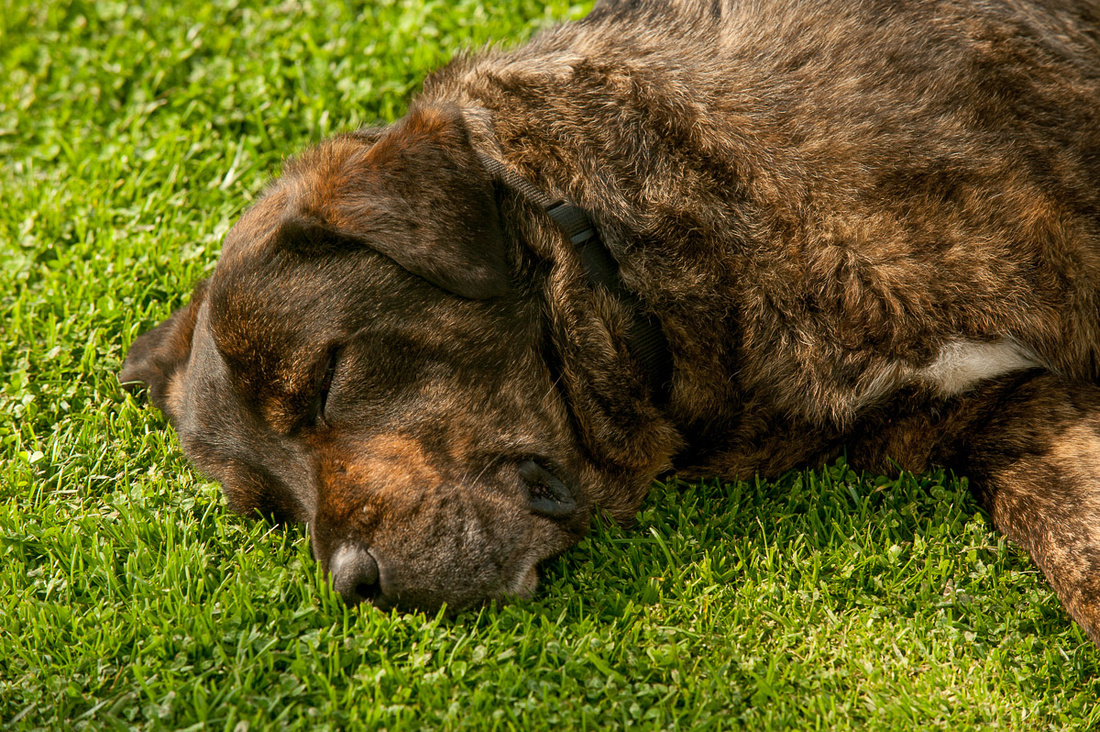
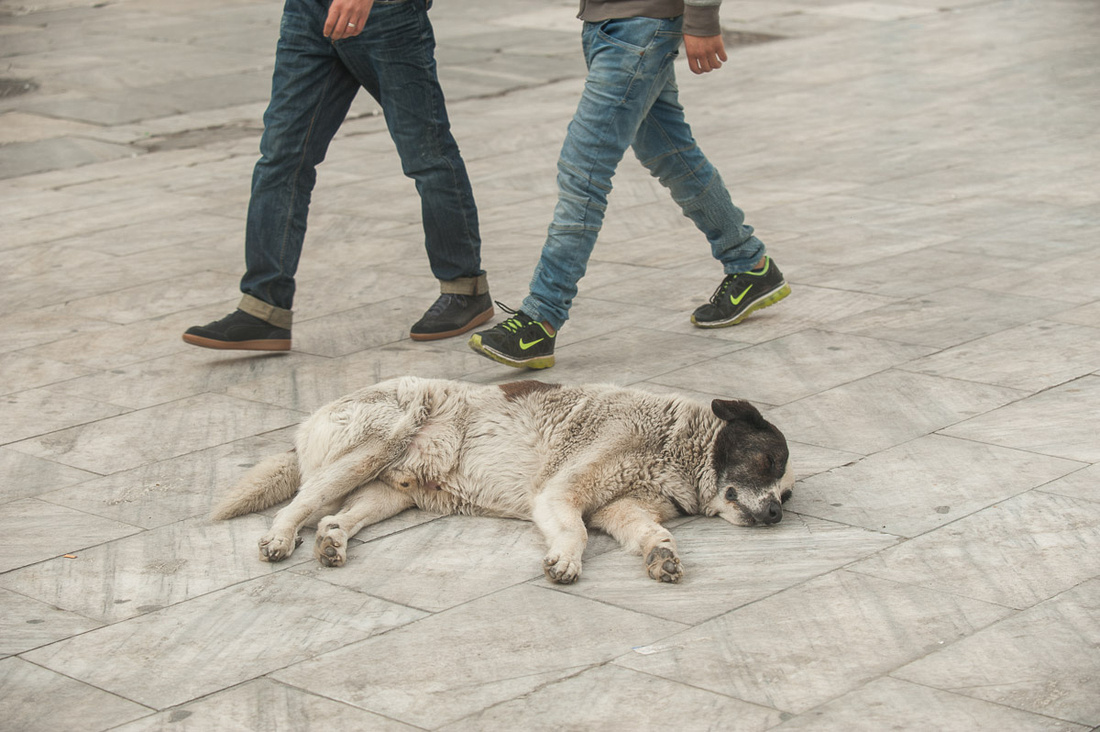




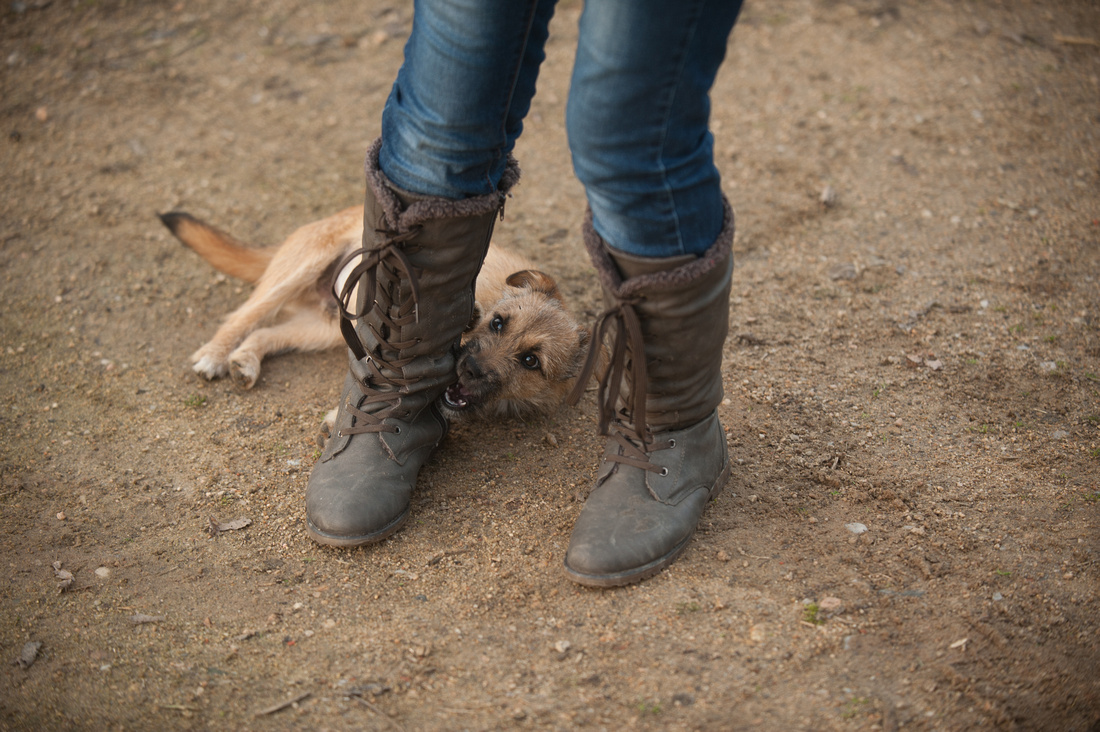

Long and mournful glances was thrown after us, as we continued walking through the village of Novo Selo.
]]>
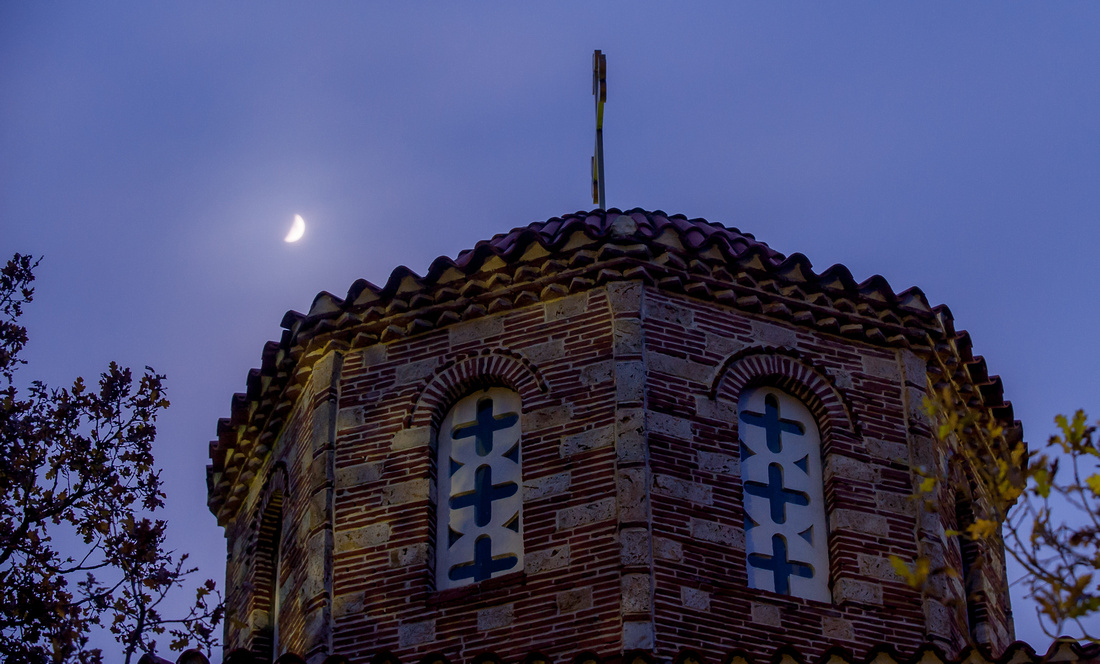

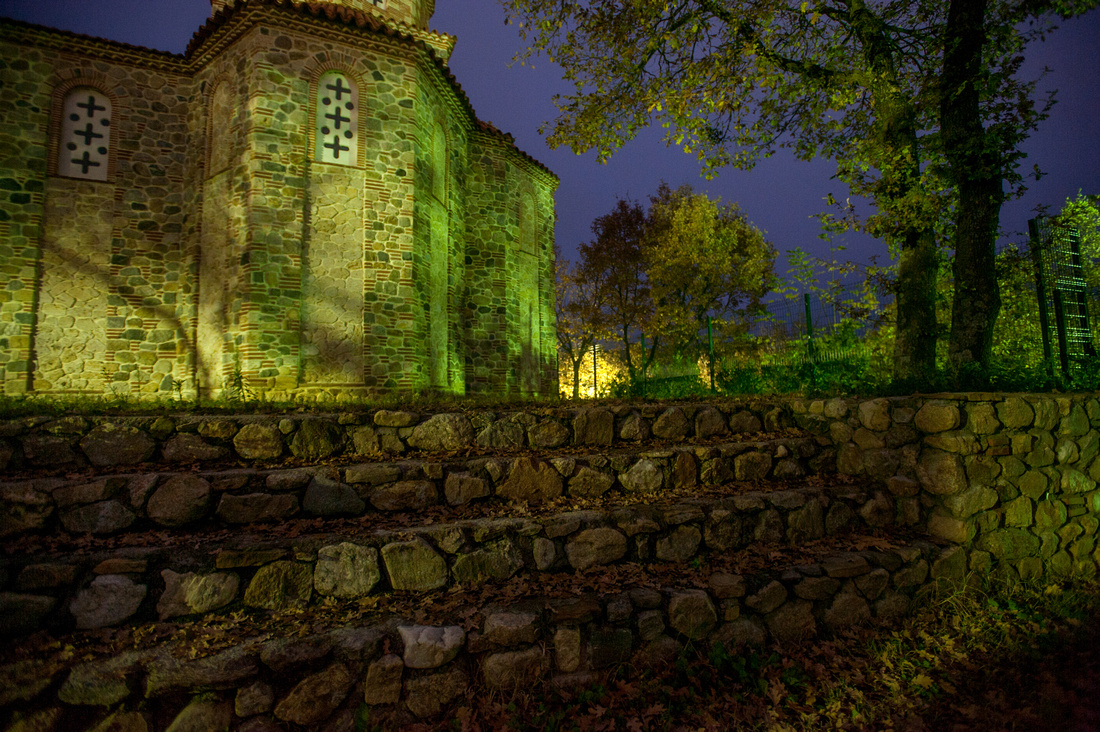
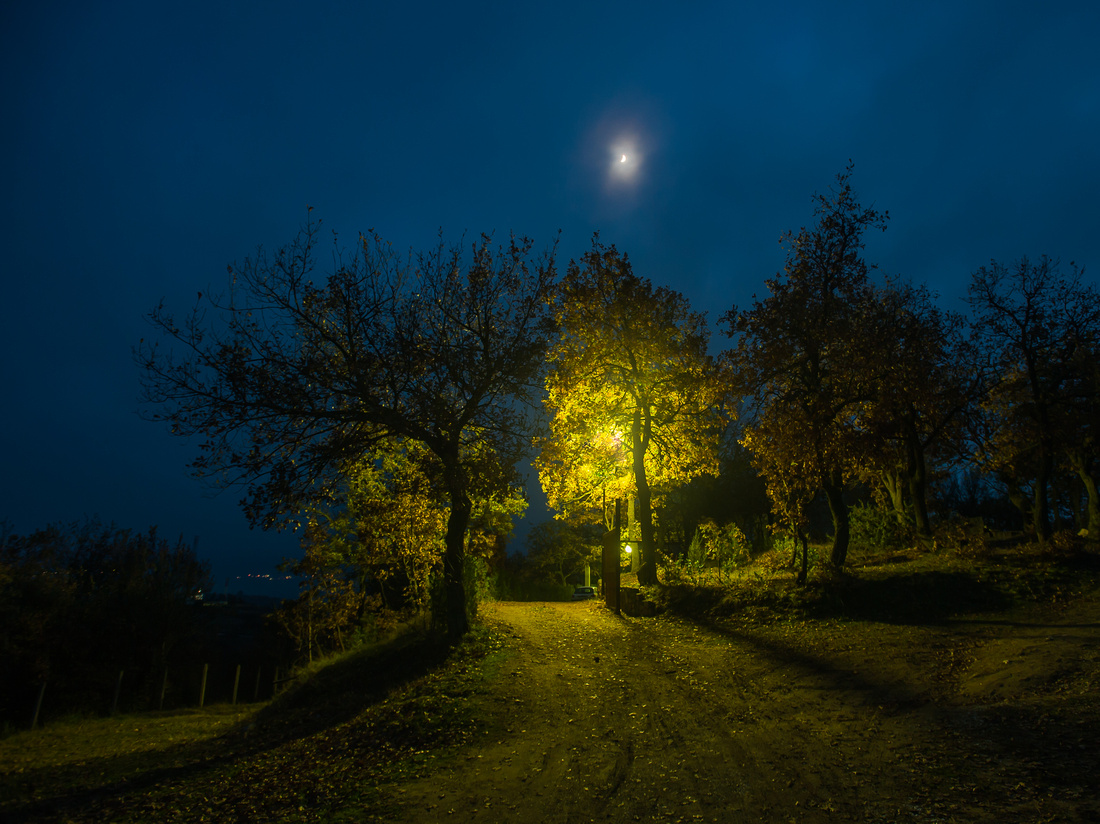
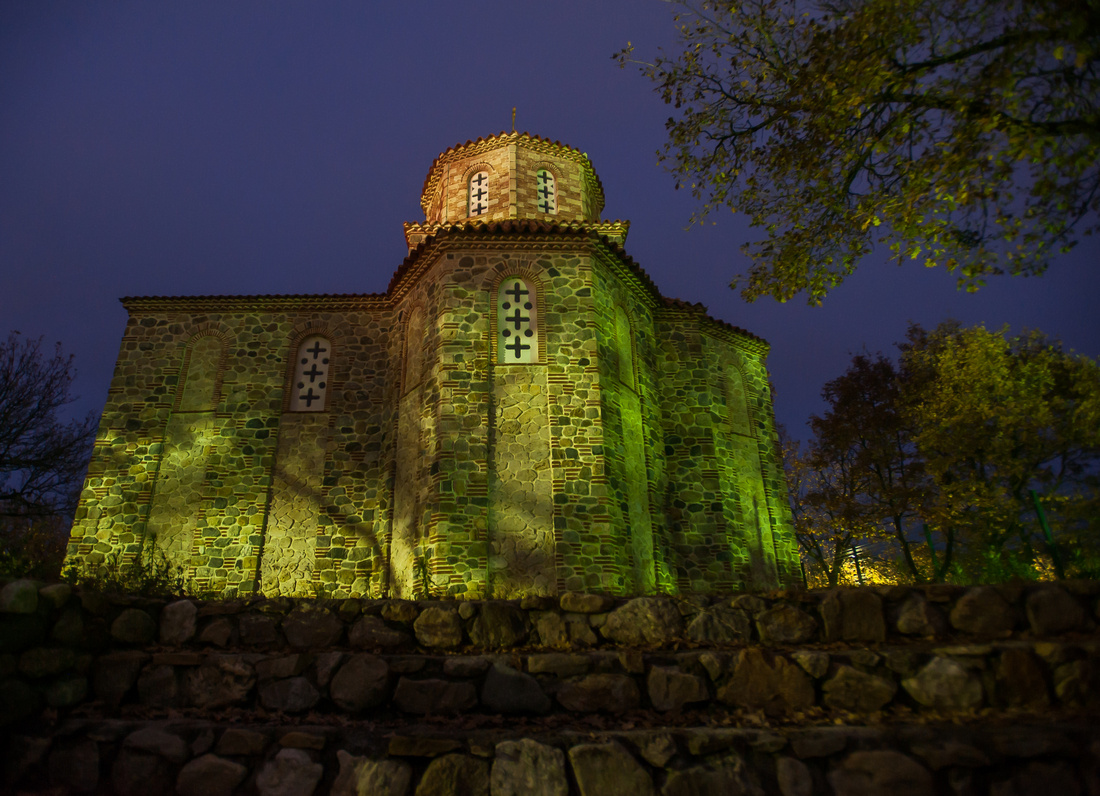
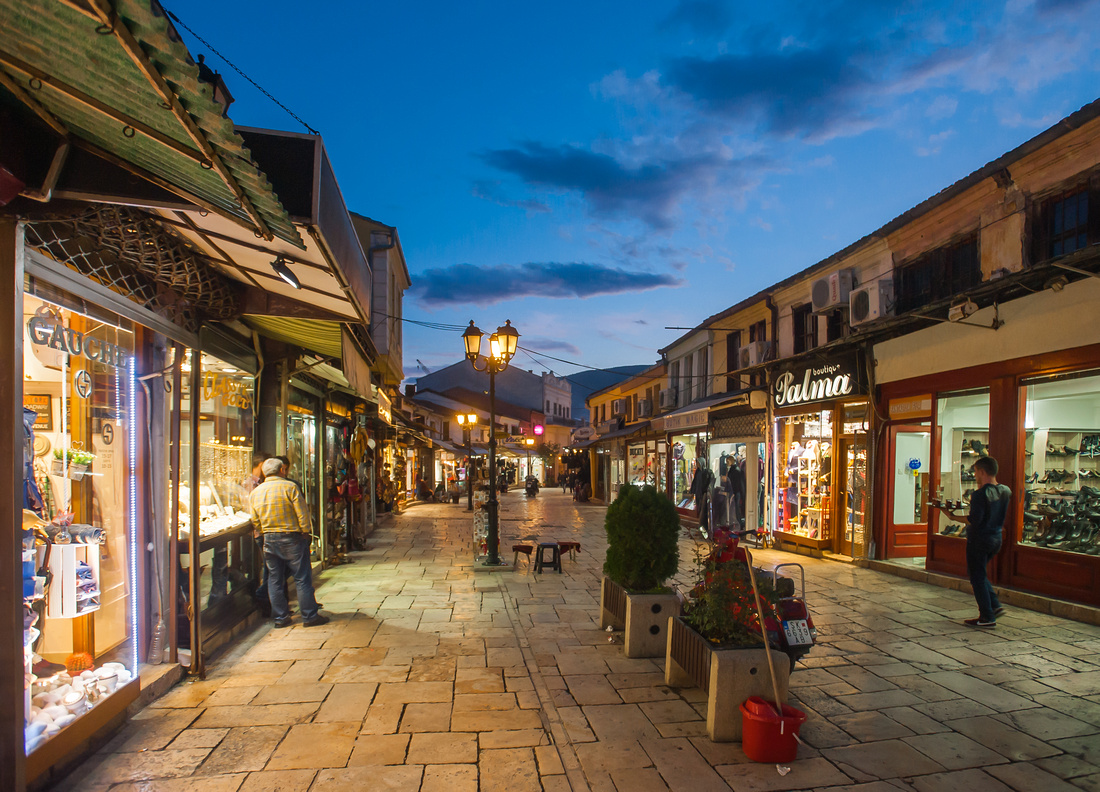
]]>
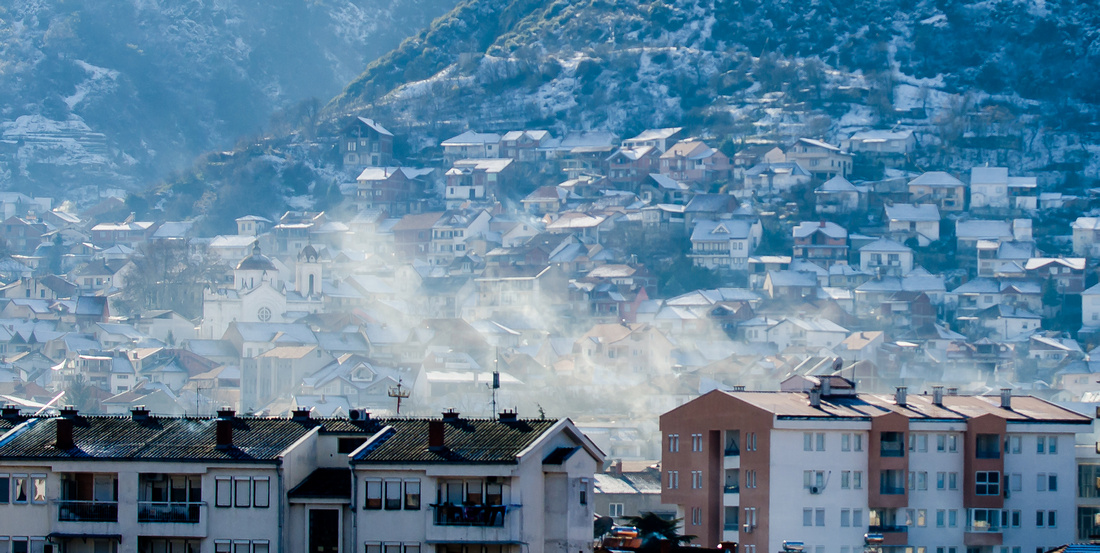
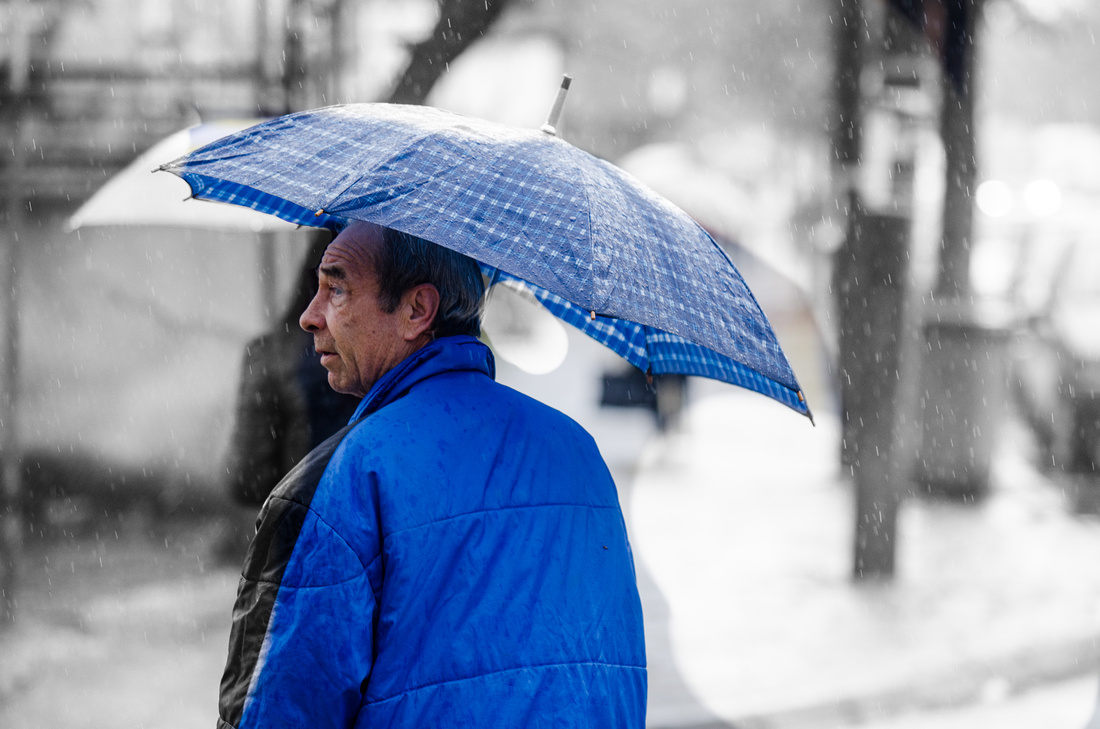
Det nya året har börjat med minusgrader och sol. Alltid något. I övrigt har vintern lyst med sin frånvaro, förutom en snö-blixtvisit i slutet av december, som syns på bilden. Den utan tvekan värsta årstiden här nere i Sydeuropa, liksom ofta i södra Sverige, är vintern. Det tror jag många här också tycker, men av en helt annan anledning, än för mig personligen. Här verkar man i allmänhet ha samma negativa inställning till snö och kallt, som jag ofta sett i södra Sverige. Anledningarna till den inställningen 1) Snöfall följs ofta av plusgrader och regn, vilket skapar den eländiga blöta sörjan på gatorna. 2) Man verkar tas på sängen varje gång - både vad gäller sin klädsel och sina bildäck - inte ens en mössa. Resultatet blir att man till varje pris vill komma in så fort som möjligt, att vara utomhus blir till något negativt i sig självt. Vintern blir till en kall (relativt sett till andra årstider), mörk, avskalad, kal, blöt, tråkig, avslöjande, ful, smutsig, lång väntan på vår. Men å andra sidan kommer våren tidigt här, i februari, och något senare i södra Sverige. Så kämpa! Alla ni som inte välsignats med ett inbäddande, moderligt, upplysande, vackert, mjukt, gnistrande, snötäcke som knastrar under era midvintersteg. Snart blommar det.
English
The new year has started with freezing temperatures and sunny. Always something. Otherwise, the winter conspicuous by their absence, apart from a fast snow visit at the end of december, as seen in the picture. It is without a doubt the worst season down here in the South, as well as often in southern Sweden. I think many people here , but for a completely different reason than for me personally. They seems to generally have the same negative attitude to the snow and cold, as I have often seen in southern Sweden. The reasons are the same 1) Snowfall is often followed by plus degrees and rain, thus creating the miserable wet goo on the streets. 2) It appears to be surprised each time-both in terms of their dress and their car tires-not even a hat. The result is that they wants to enter inside the houses as soon as possible, being outdoors becomes something negative in itself. Winter turns into a cold (relatively to the other seasons), dark, stripped-down, bare, wet, dull, revealing, ugly, dirty, long waiting for the spring. But on the other hand, spring arrives early in February, and slightly later in the South of Sweden. So fight! All of you who are not blessed with an embedded, motherly, enlightening, beautiful, soft, sparkling, snow cover that crackles under your mid-winter steps. Soon it blooms!
]]>Jag sa ”Vi ses i Kiruna” och du sa ” Det har vi inte sett än”.
Jag drömde om dig, pappa, härom natten.
Exakt vad minns jag inte, bara att dina ögon var nöjda.
Som när du strosade i småbåtshamnarna, eller på stranden i ”Melljåkk”.
Som när du skruvade i din gamla Citroën.
Som när du försökte bygga en evighetsmaskin.
Som när du sa ”nog ordnar det sig, skall du se”.
Som innan ditt otåliga men unika och äkta hjärta slutade slå, för 9 år sedan.
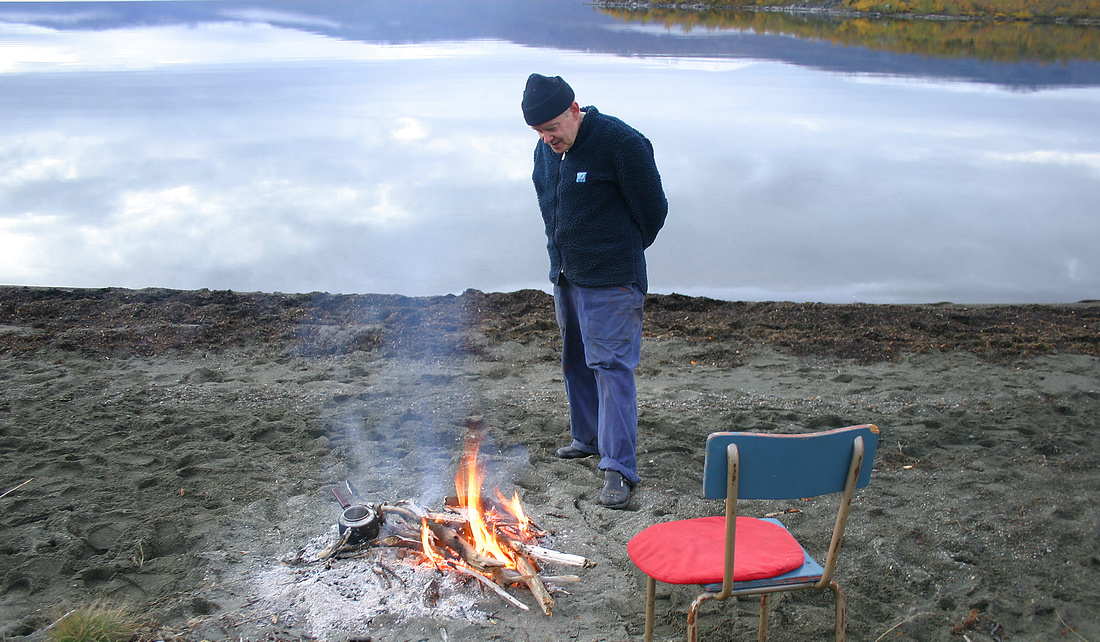
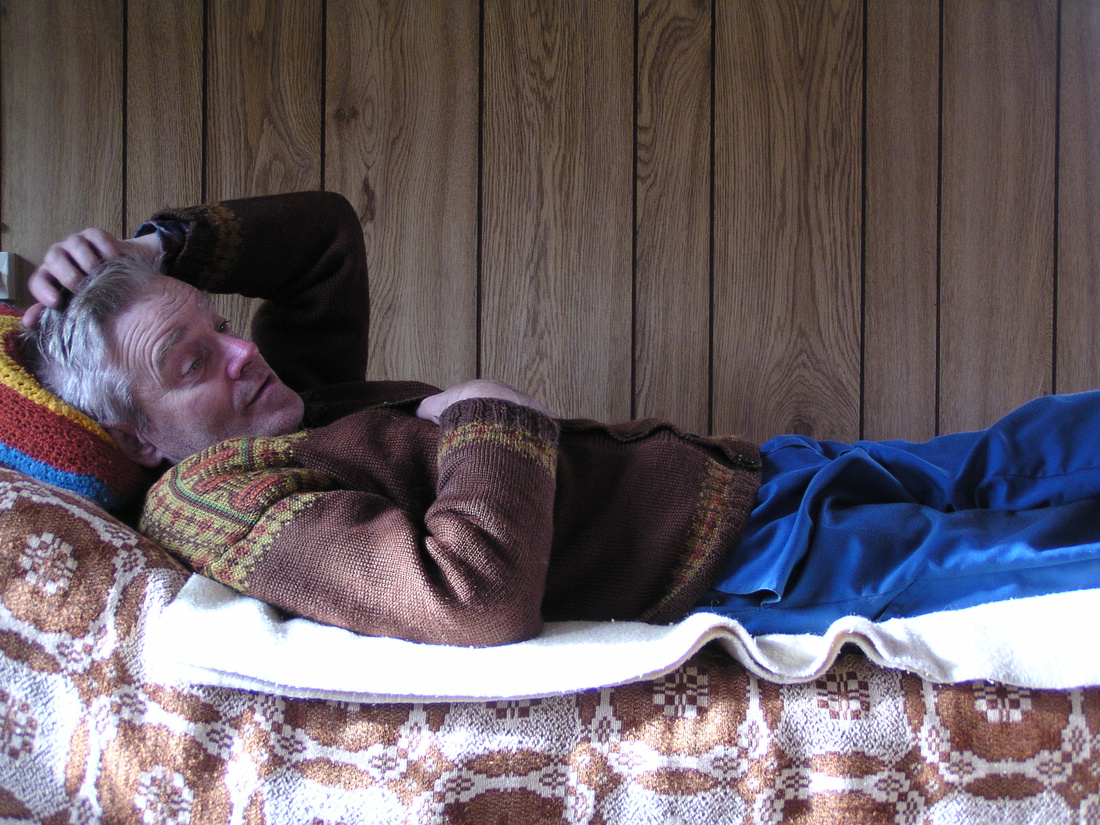
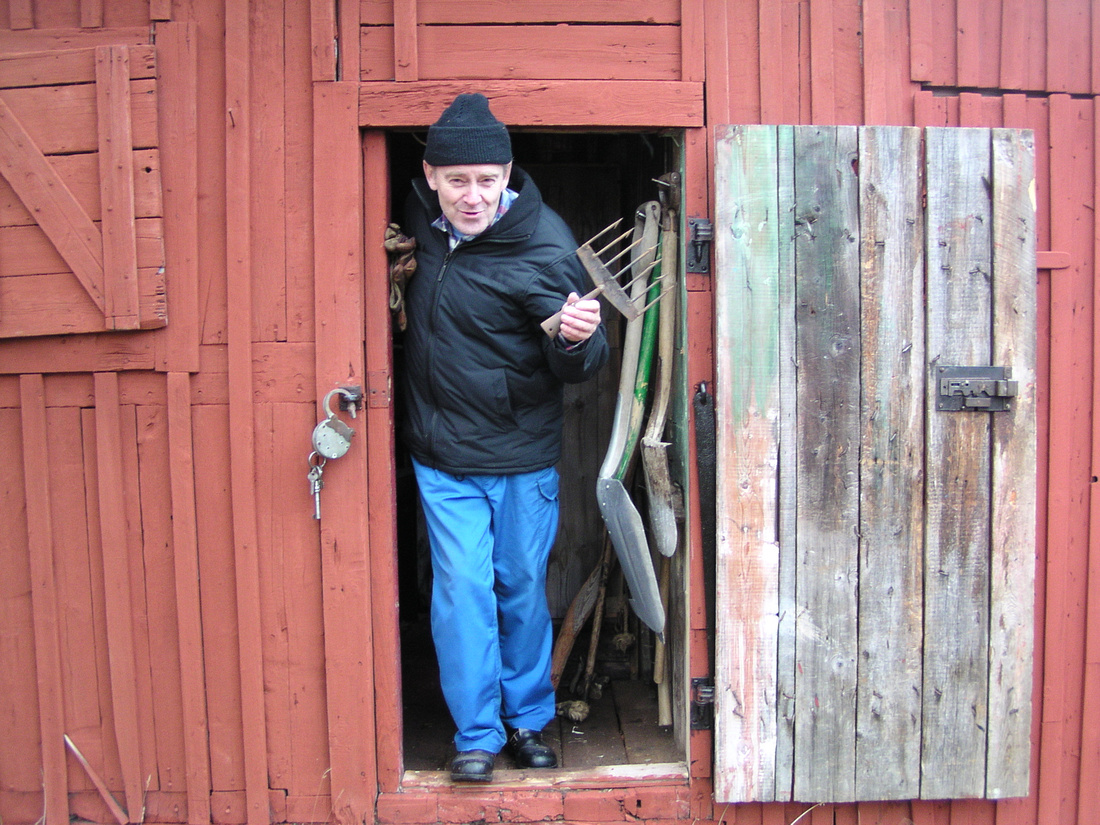
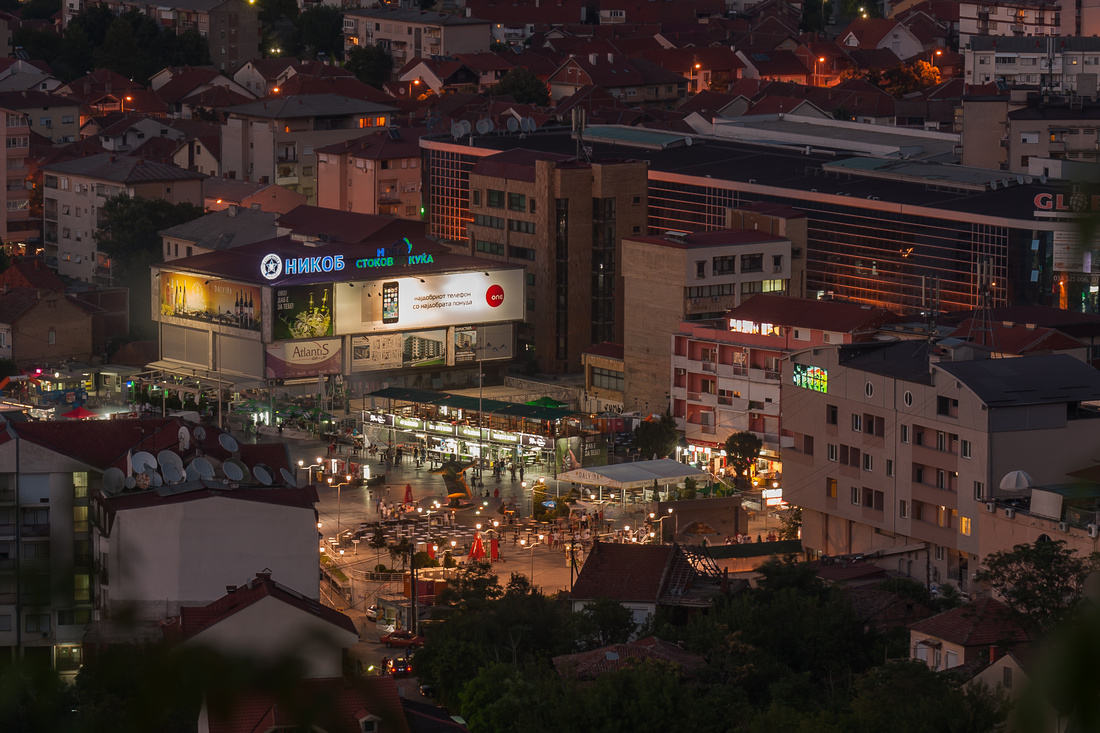
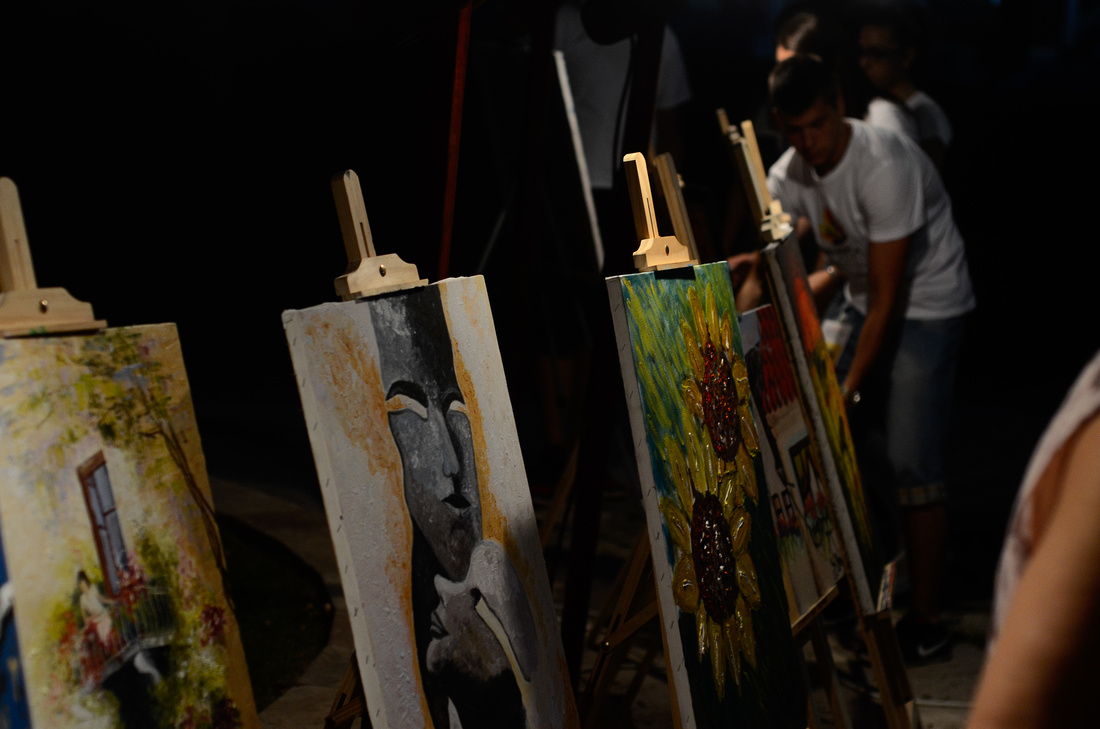

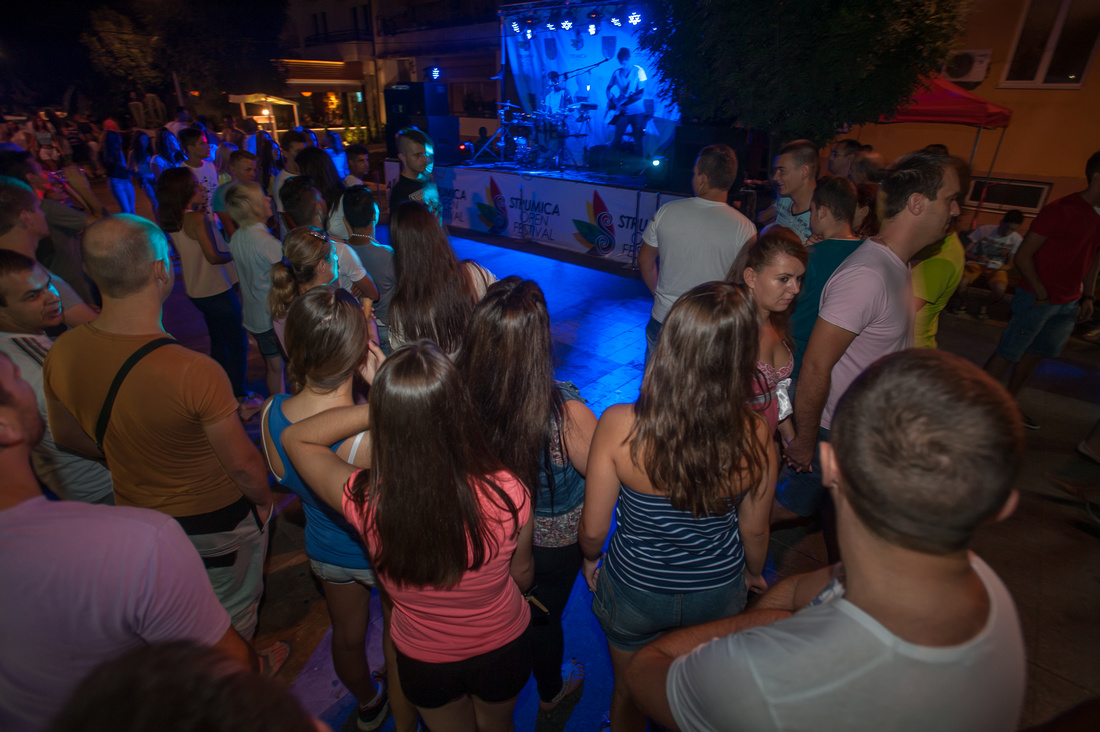
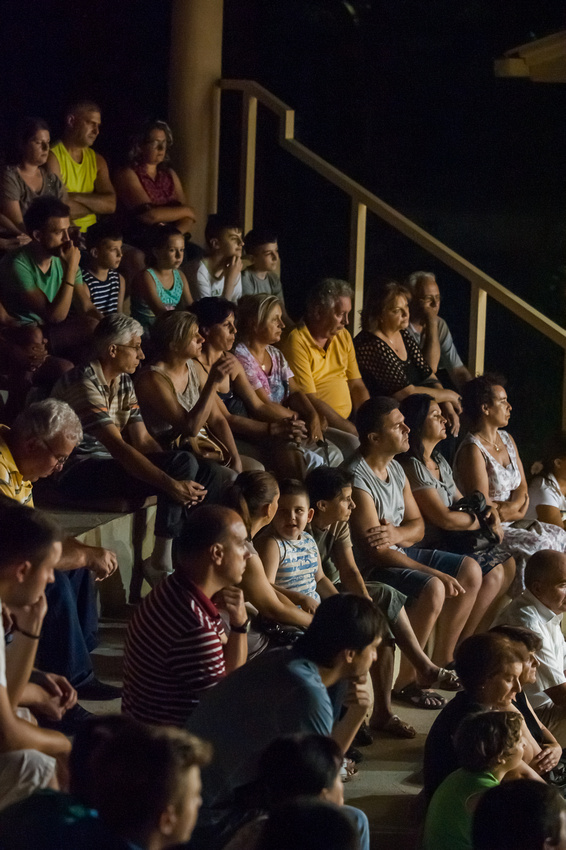

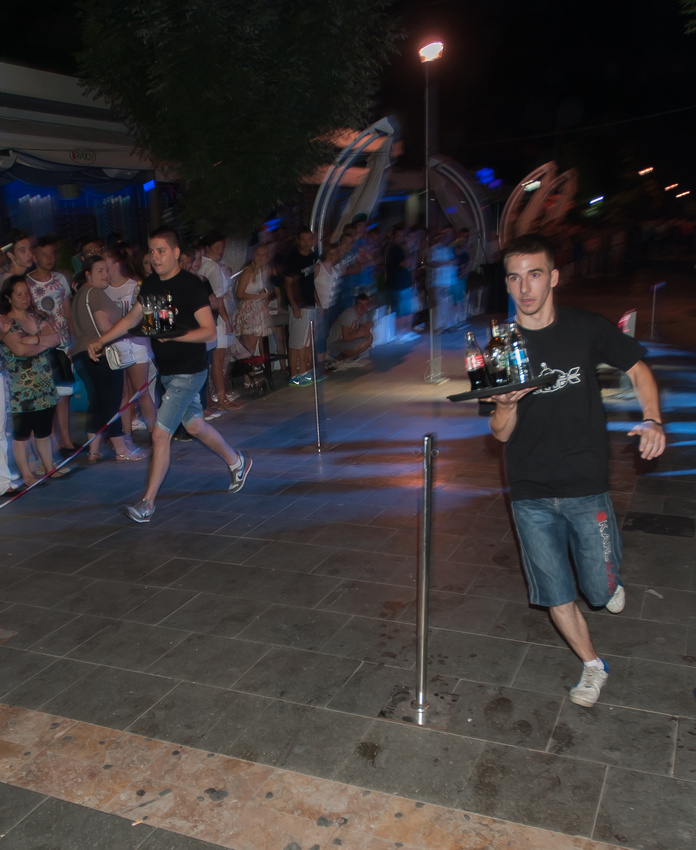
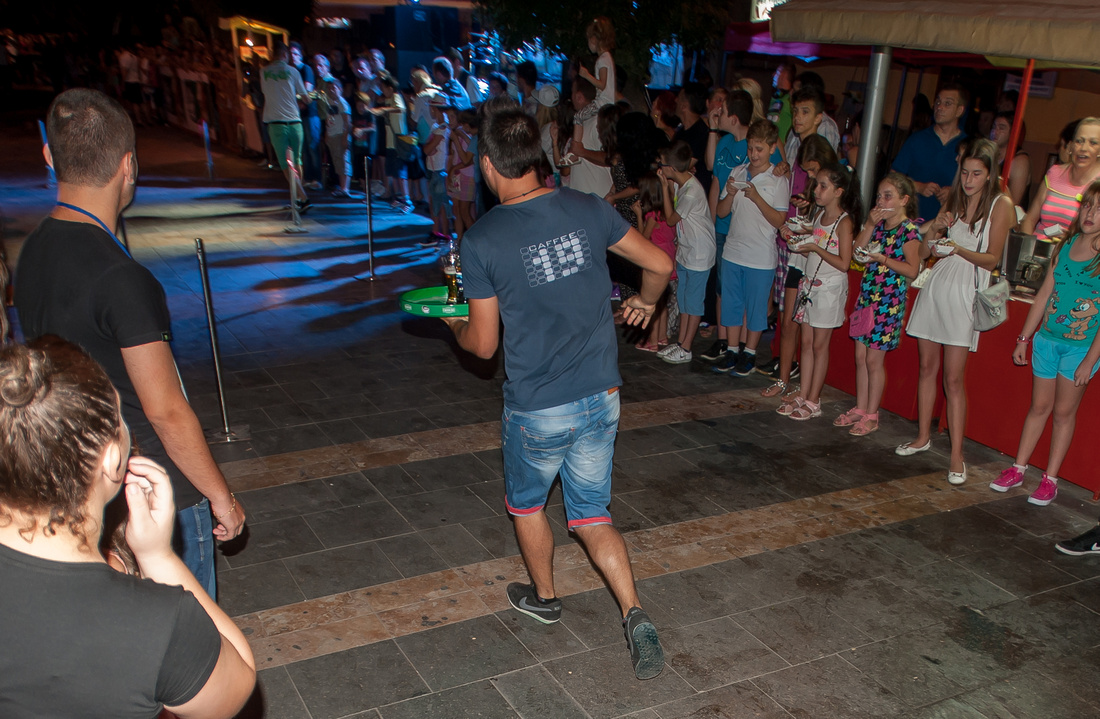
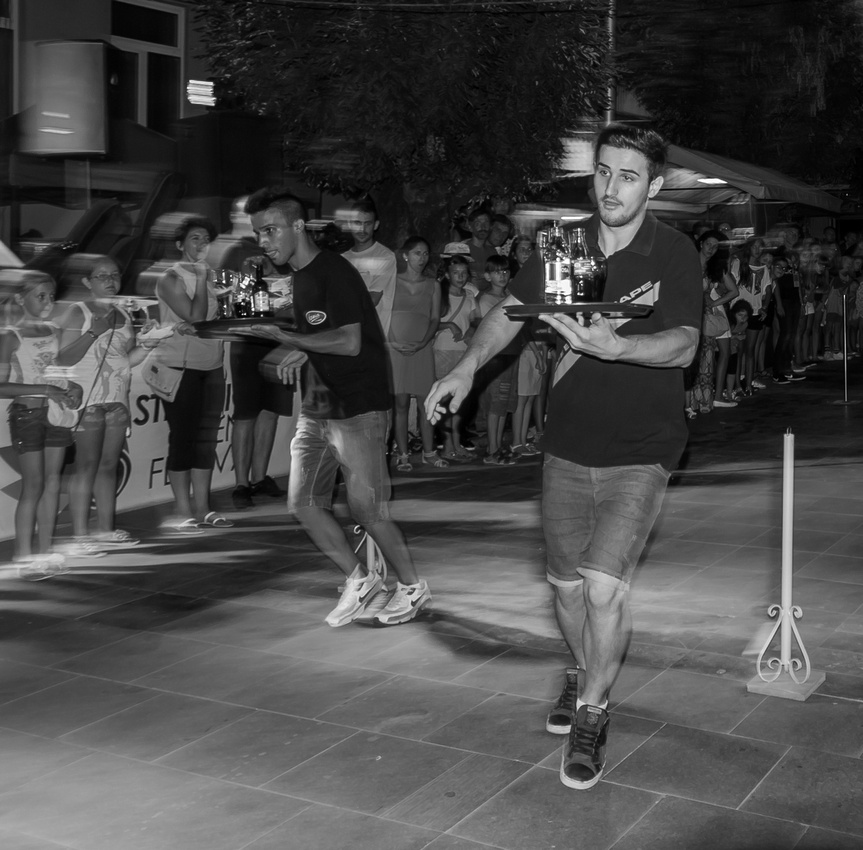 ]]>
]]>Usually you need a tripod because the shutter speed will be long. But if you shoot early in the blue hour, you can sometimes manage without. Especially if you have a camera that performs well at high iso, at for an example iso 1200. Another advantage to shoot early in the blue hour (or late if it is in the morning) is that electric light will not be too bright in the image (because of the shorter exposurtime) But are you looking for the intense dark blue color, you must be out later (or vice versa earlier in the morning). Sometimes people think even that one must have enhanced the color, in photoshop. But then they have probably never noticed how intensely blue it really is during this period. Finally: Bring warm orange or red light, such as from windows, to contrast blue color, in the composition - it often looks very good together.
Svenska
Fototips 9. Fota stadslandskap i "den blå timmen".
I skymningen blir det inte bara mörkare utan också även blåare. I gryningen är denna blå-process förstås den omvända, fram till soluppgången. I båda fallen talar vi om "den blå timmen" För att citera wikipedia: "Den blå timmen är perioden med dunkelt ljus varje morgon och varje kväll, då det varken är fullt dagsljus eller totalt mörker. Tidpunkten anses som speciell på grund av ljusets kvalité" (översatt från engelska wikipedia)
Vanligtvis behöver du ett stativ eftersom slutartiderna blir långa. Men om du fotar tidigt i den blå timmen kan du ibland klara dig utan. Särskilt om du har en kamera som presterar bra på höga iso. En annan fördel med att fota tidigt (eller sent om det är på morgonen) är att elektriska ljus inte blir för ljusa i bilden.(p.g.a kortare slutartider) Men är du ute efter den intensiva mörkblåa färgen måste du vara ute senare (eller omvänt tidigare på morgonen). Ibland tror folk till och med att man måste ha förstärkt färgen i photoshop. Men då har de troligen aldrig lagt märke till hur intensivt blått det verkligen är under den här perioden. Slutligen: Ta gärna med varma orange eller rött ljus från tex fönster, för att kontrastera blå färgen - fungerar ofta mycket bra.
The 4 pictures above - Late blue hour in Strumica aug 2014.

Early Early blue hour in Strumica - sept 2014.
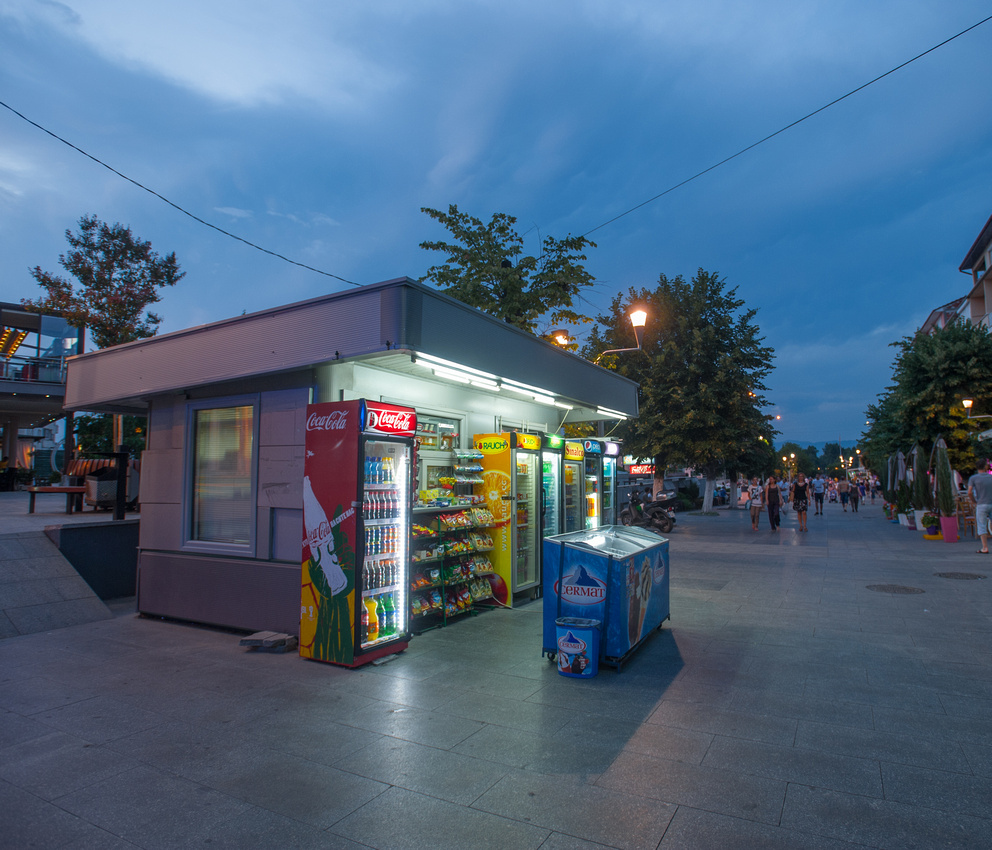
Early blue hour in Strumica - sept 2014.
]]>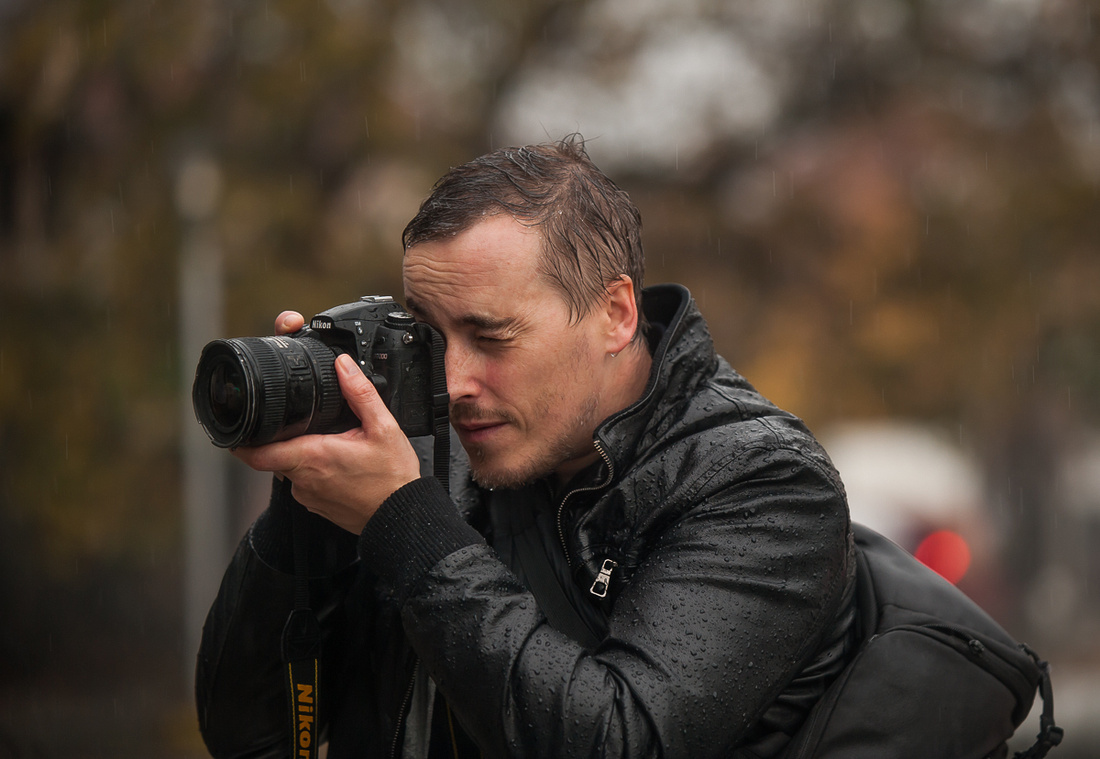
Photo: Violeta Sundberg
This text, below, that I previously had on my start page, but right now don't have room for, sums up in a good way why professional photography is not a dying art, although so many people and companies own their own advanced cameras today. Something that I, in my job often try to explain to small business owners and private persons.
Light moves incessantly and fast, and when it passed, it is too late no matter what the motives are. Like life itself, with its moments and years that never goes in the replay. Meanwhile, it is one of the photographic image's strengths in order to "preserve the small pieces of time" - even to future generations. But to deliver qualitative image that communicates the right things, for example during an assignment, requires practice. The fleeing moment shows no mercy for the fumbling "photographer", and the light waits for no one. The "photo nerd" refined a mix of: eye, narration, good ideas, the right equipment, technique and timing, with the years. That is why it is a good idea to sit back and let him/her, fill in the holes in the data, or create entirely new. In the private context rather: store for tomorrow or decorate. The dense, storytelling small bits of time made in a professional way - for yourselves, and the great-great-grandchildren - before the light and time passes.
Dear reader? Please, repost or show this to someone who might need a photojob from Light Never Waits, Thanks in advance!
Take a look at my professional services here
]]>
But back on the street Neretva, a guy almost backing in to me with his car, where I have set up the camera on the tripod. But it goes good and he is stepping out and wondering what country I come from. When I reply: Sweden, he says: I have friends from Sweden - Marcus Rosenberg and Jonas Olsson - "They played in my team in West Bromwisch, in the English Premier League. It is the Macedonian football player Goran Popov, who is at home in Strumica during the holidays. He becomes a suitable ending to the "adventure", and by finally looking in the rear-view mirrors he avoided a tragic end of the story.



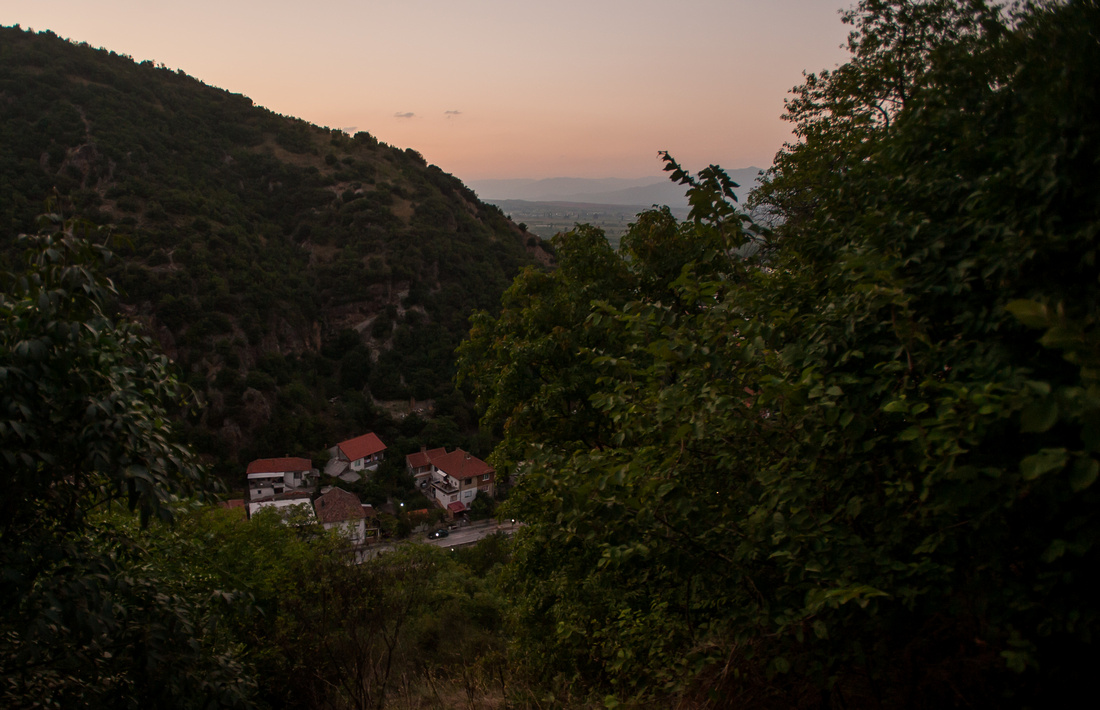
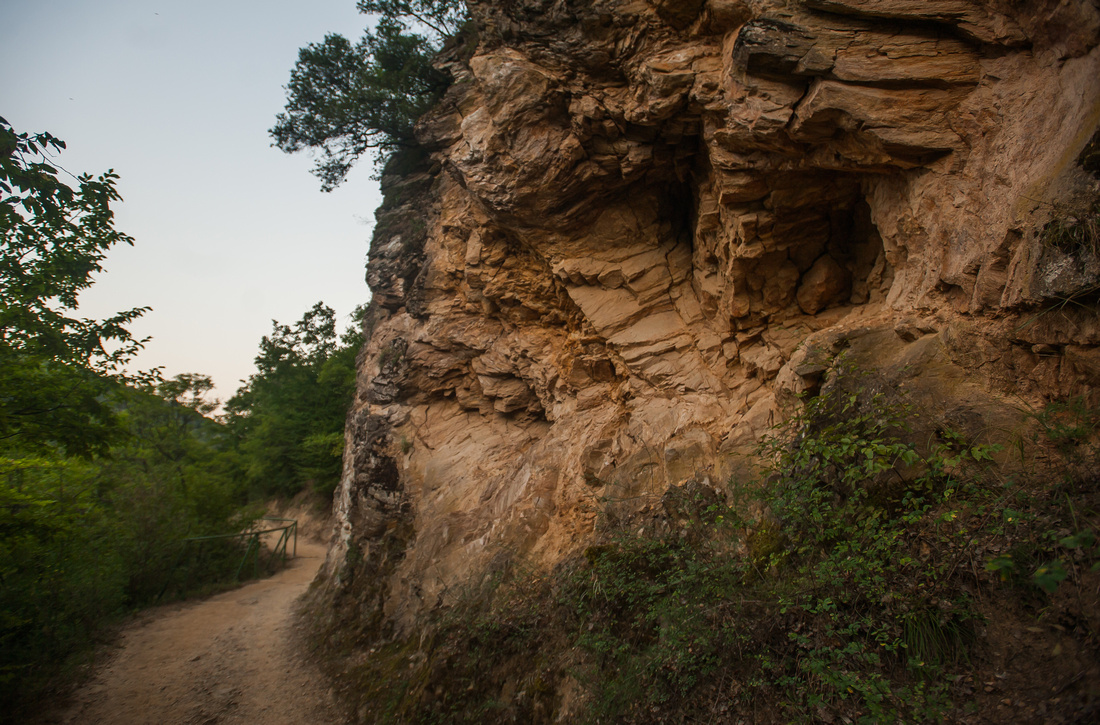
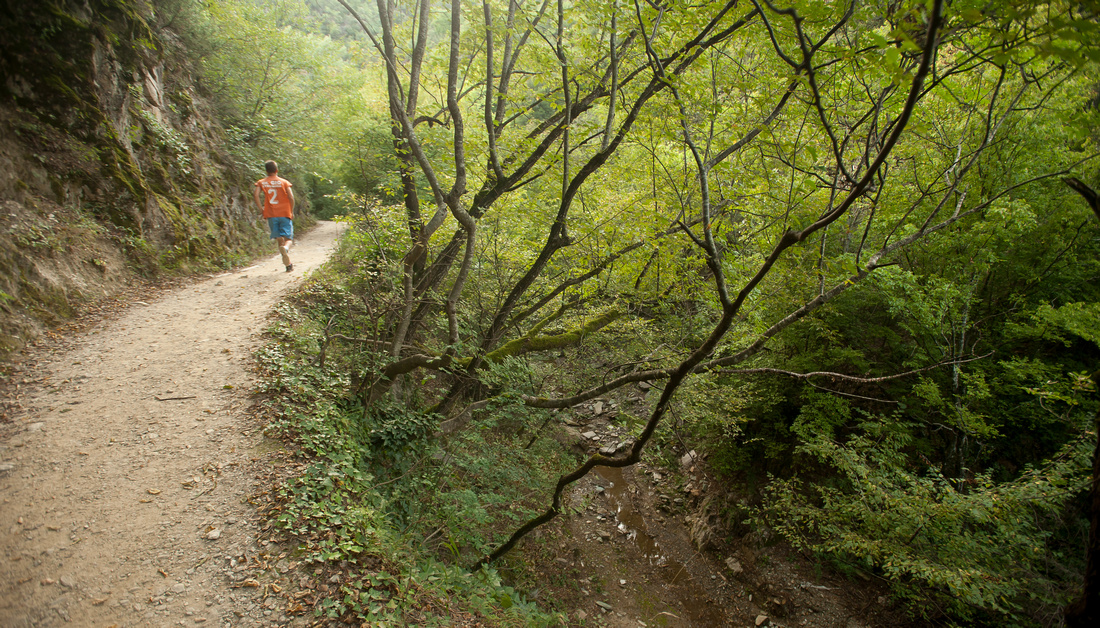

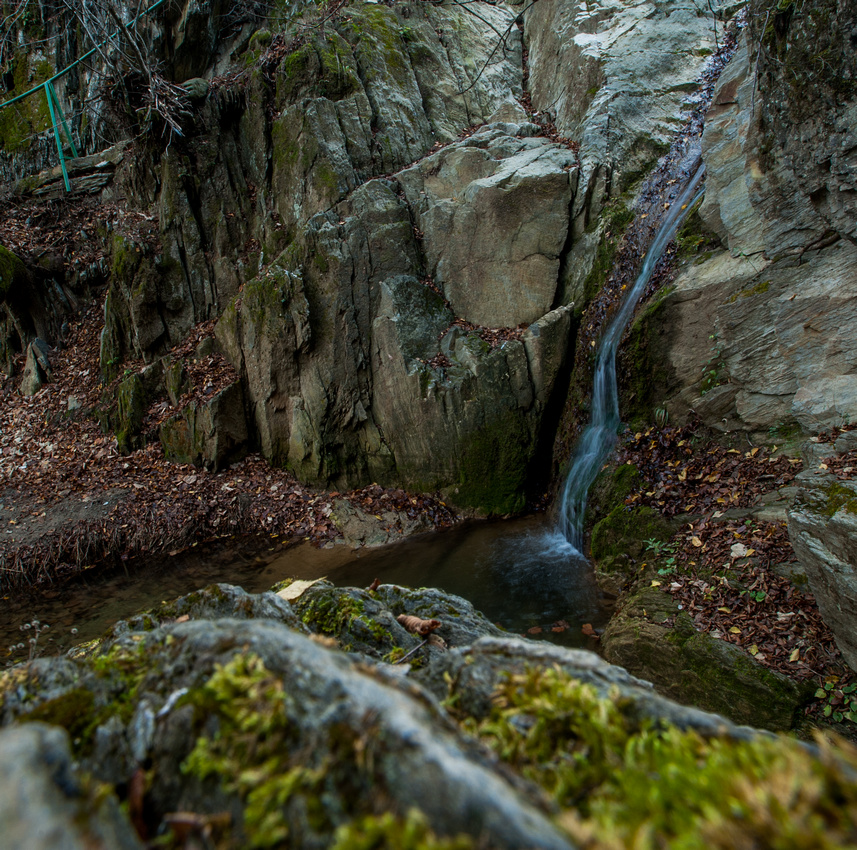
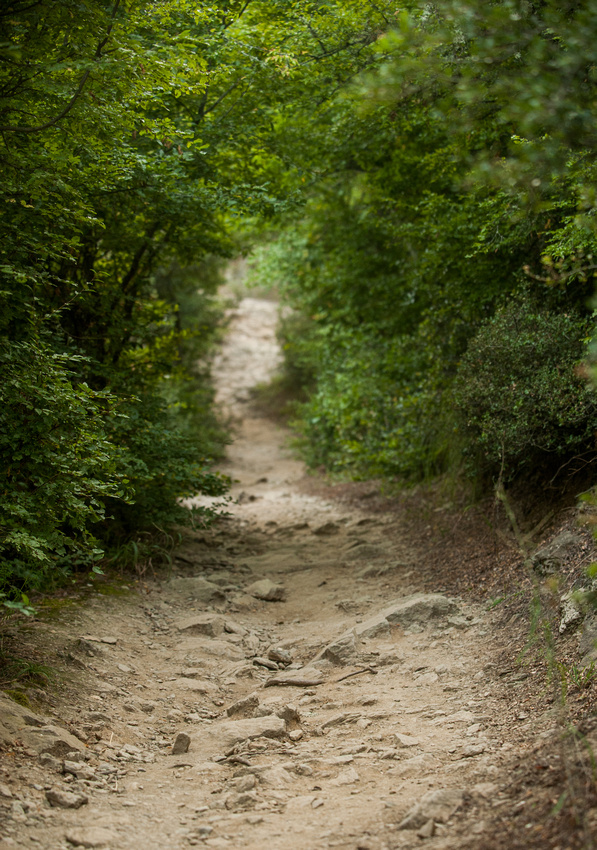
It will not take long until you catch sight of the fortress Carevi Kuli, "The Tsar's tower", on looking up, with 90 degree head angle. Once upon a time, Strumica was only a small, small town positioned around this high hill of 445 meters, with a protective fortress of walls and towers at the top. Today there are still quite a few ruins of the fortress which name refers to Tsar Samuil, who built it in the 1000's. The same king who lost his most important battle against the Byzantine Empire, and whose 14,000 captured soldiers then had their eyes put out - and who himself, shortly thereafter, died in the aftermath of the incident. But he was not the first "king on the hill", he built atop of the remains of older fortifications. It has also, on the spot, been found artifacts that are thousands of years old. The fort is believed to have been decommissioned in the 1600s, during the Ottoman Empire domination of the Balkans.
I would like to take a closer look at the remains of the Tsar Samuil's creation, and thus turn off the trail into a mini ravine whose bottom, like a staircase takes me up the mountain side. It bears clear traces of water that once flowed here, as well as the thousands of feet that trod it. Sometimes closes the foliage like a roof, forming a tunnel together with ravine. Sun and tree paints a dynamic patterns of light and shadow in "the tunnel". Every now and then bigger spots of strong sunlight find it's way down to the path. It may become the "tunnel to the treasure", but the drama might slow down a little, when halfway up coming to a rest area and a tap with drinking water. But the thirsty one can not complain about the timing, this hot day.
Ravine road ends eventually, and the last bit up to the fortress runs along a small car road. In the adventure film the bad guys always pops up right on time with a gun, triumphant thanking the hero for finding the treasure. Here in front of the Tsar's tower, I can only see some intense stare construction workers stopped their work, when I come walking by the small road. They will have to be the "bad guys" in this film. Though they are the type who simply says: "too late, we were here first!". Back in the reality, their is obviously some sort of restoration work going on up here, and the workers will probably not let me enter. It is said that the whole castle to be restored to original condition. When both I and they has finished the staring, me at the view and they at me, I take myself the same way back, down to the trail towards Sveti Ilia.
To be continued. Don't miss the next episode ;)
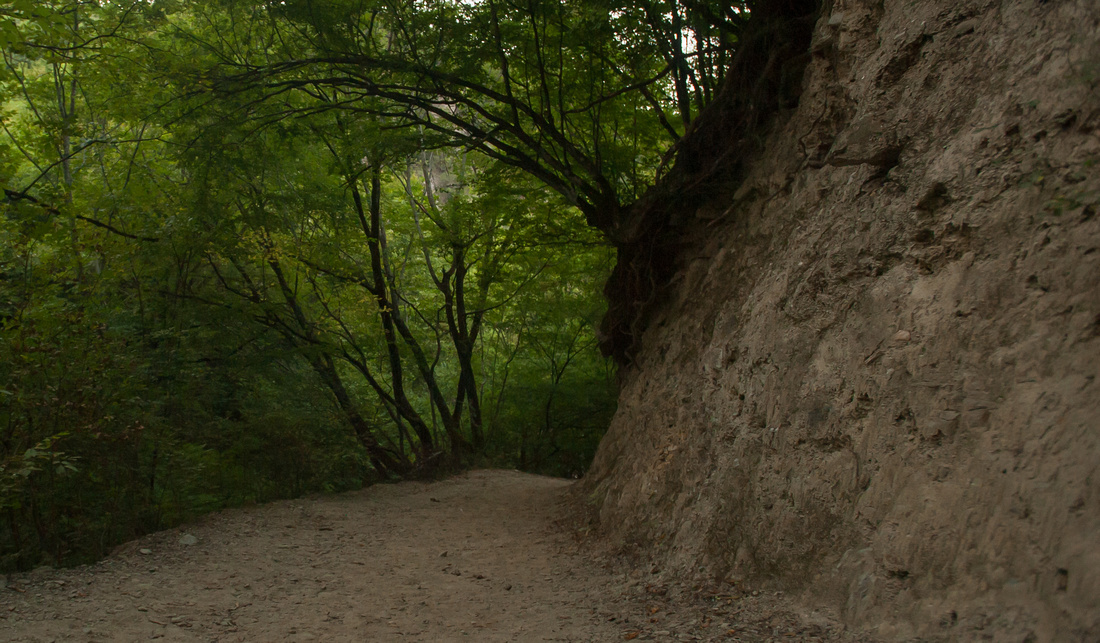
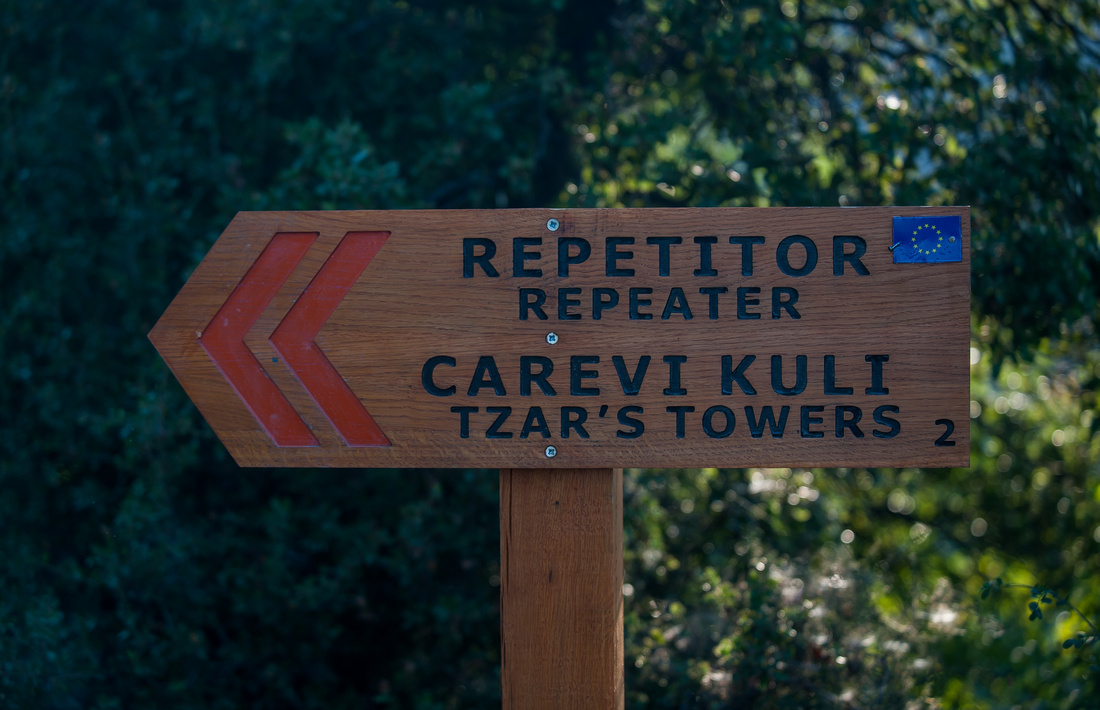
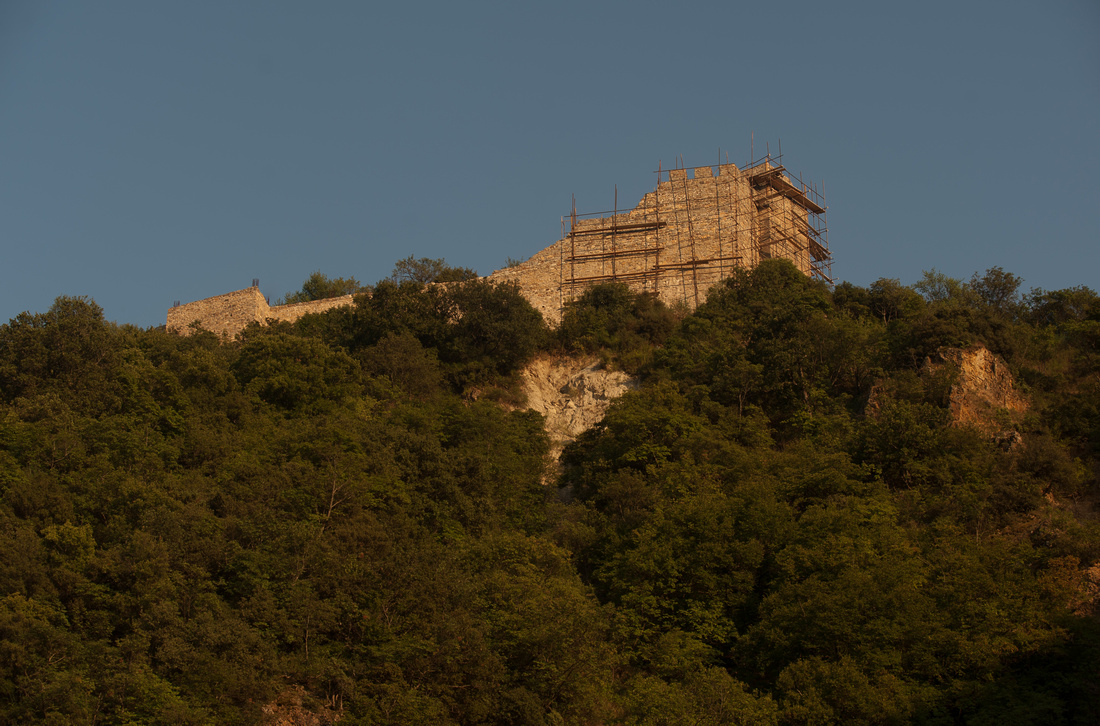
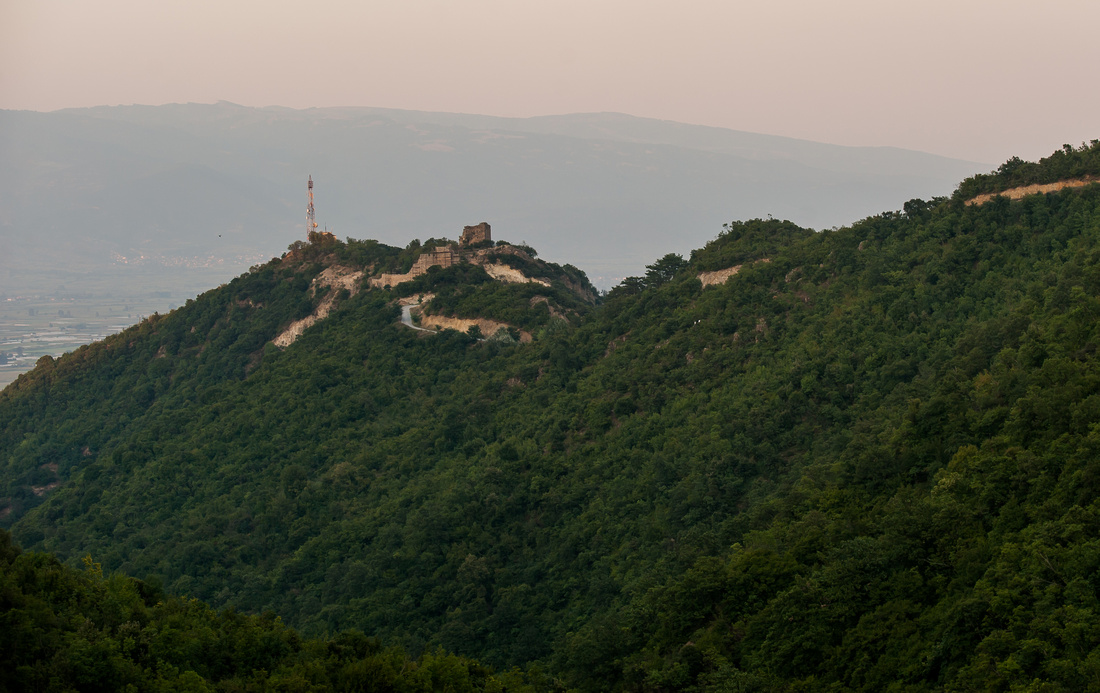
]]>
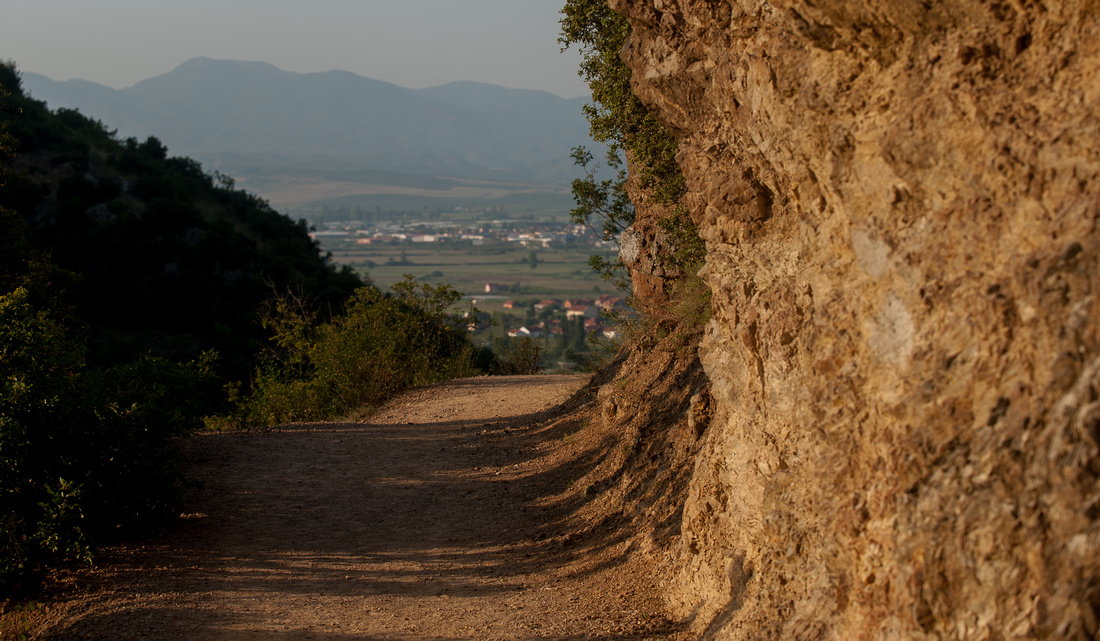
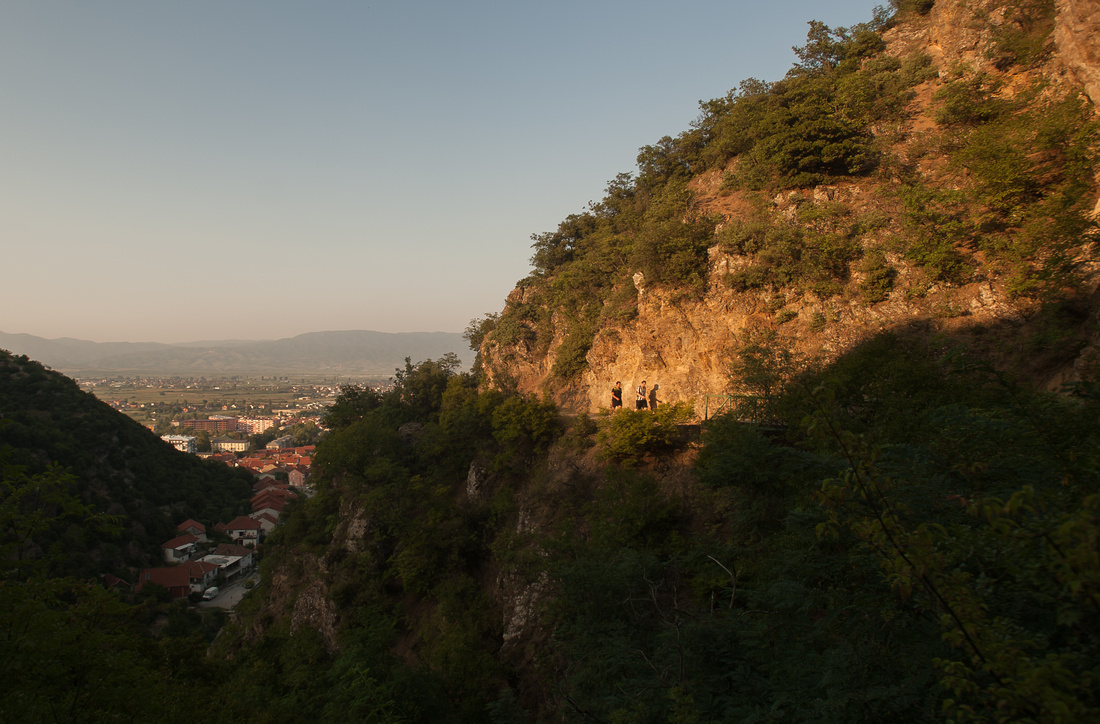
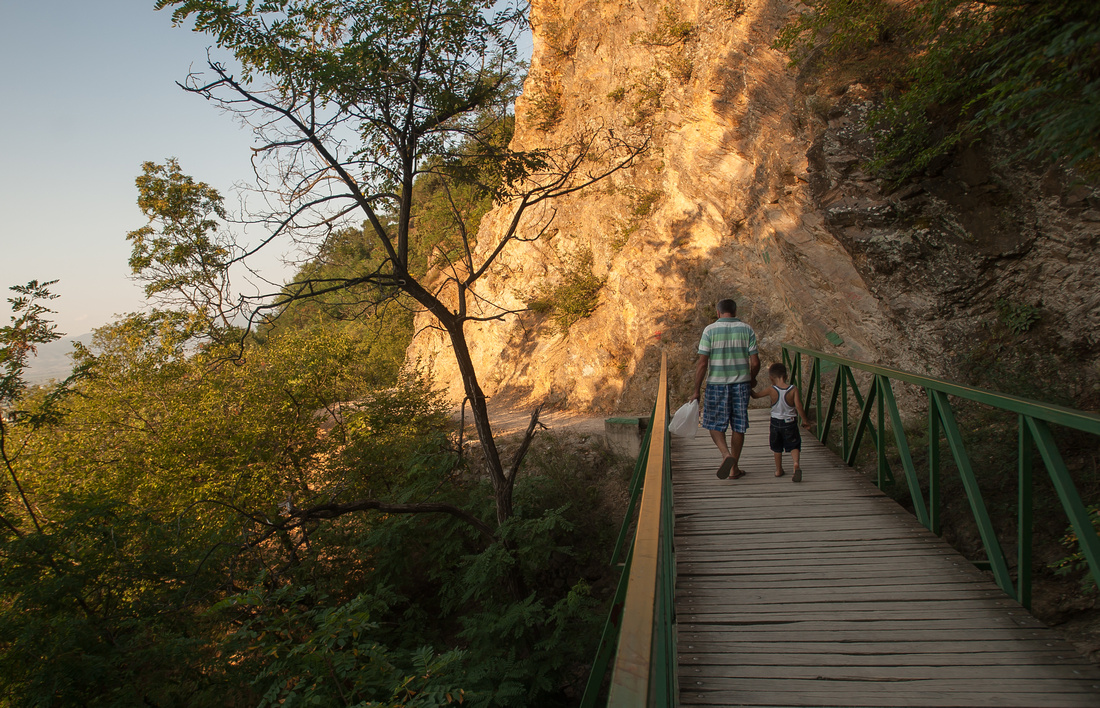

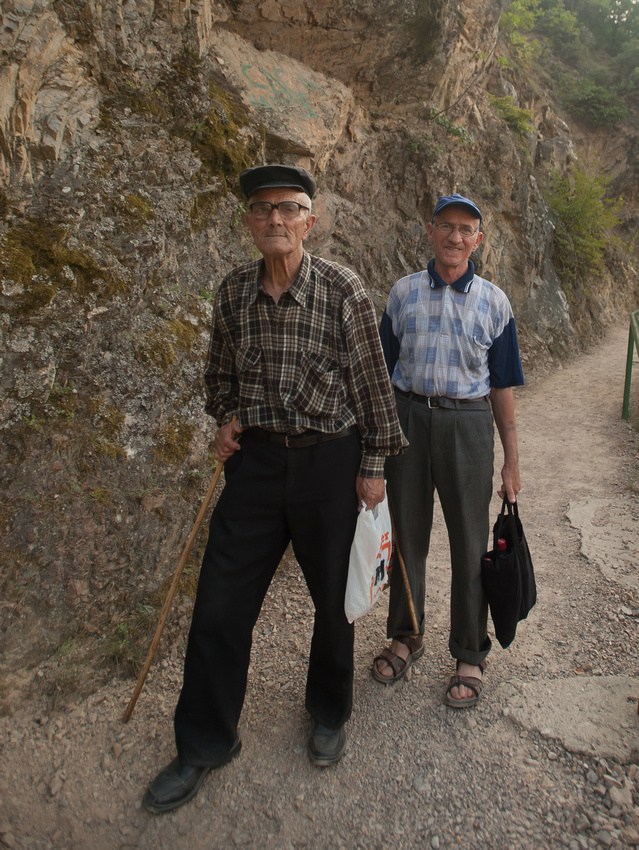

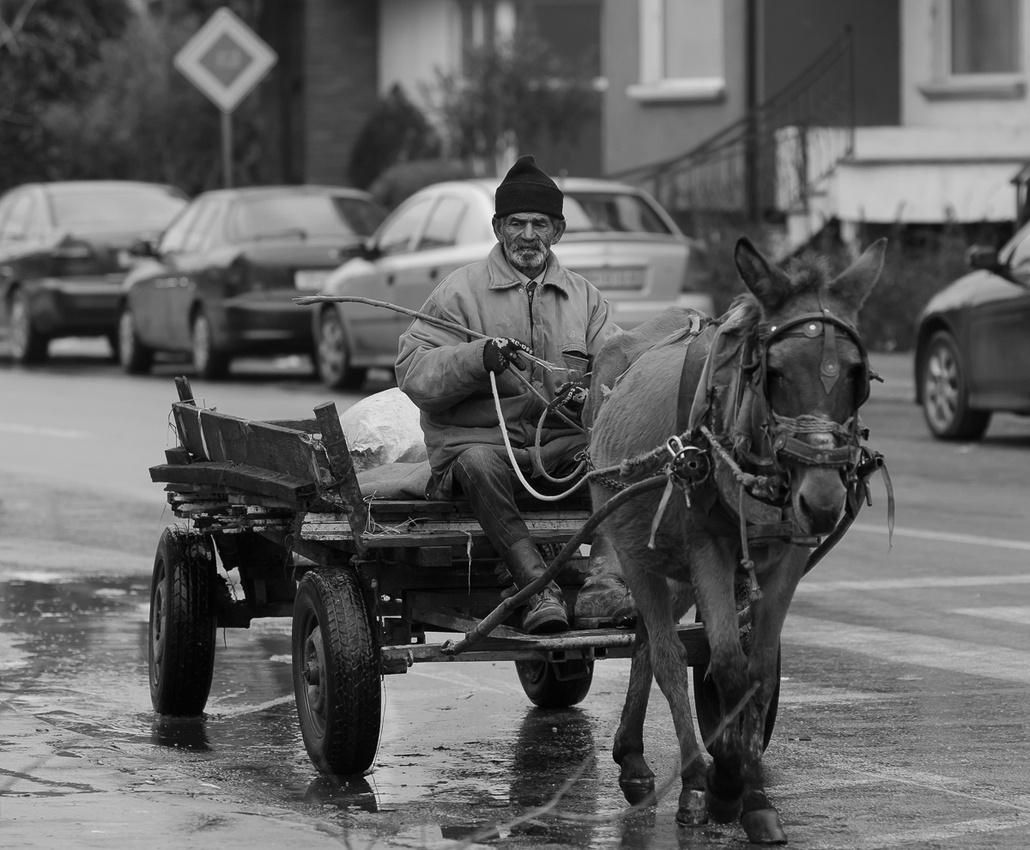

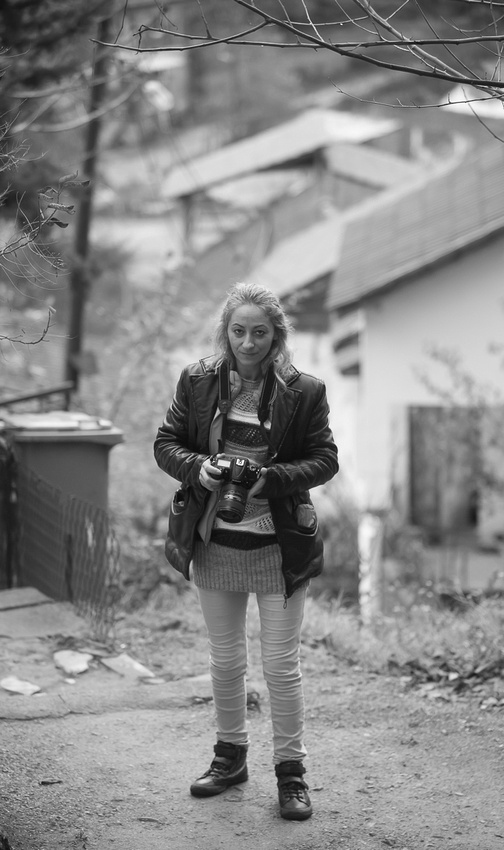 ]]>
]]>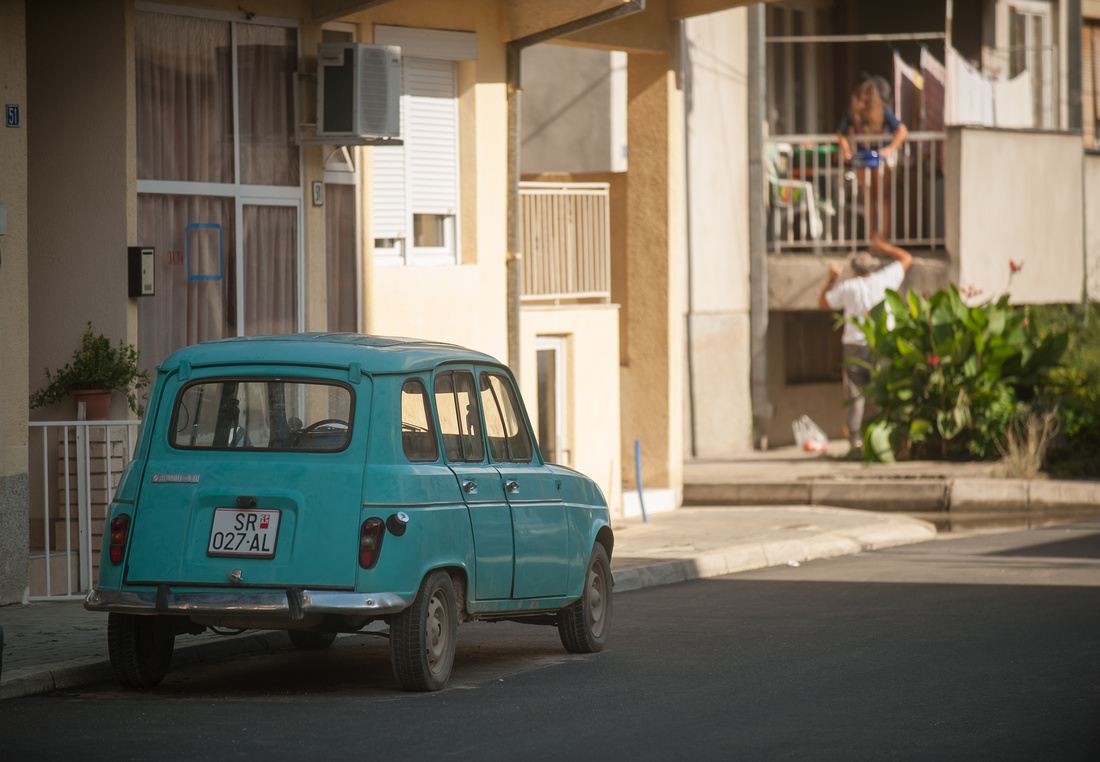

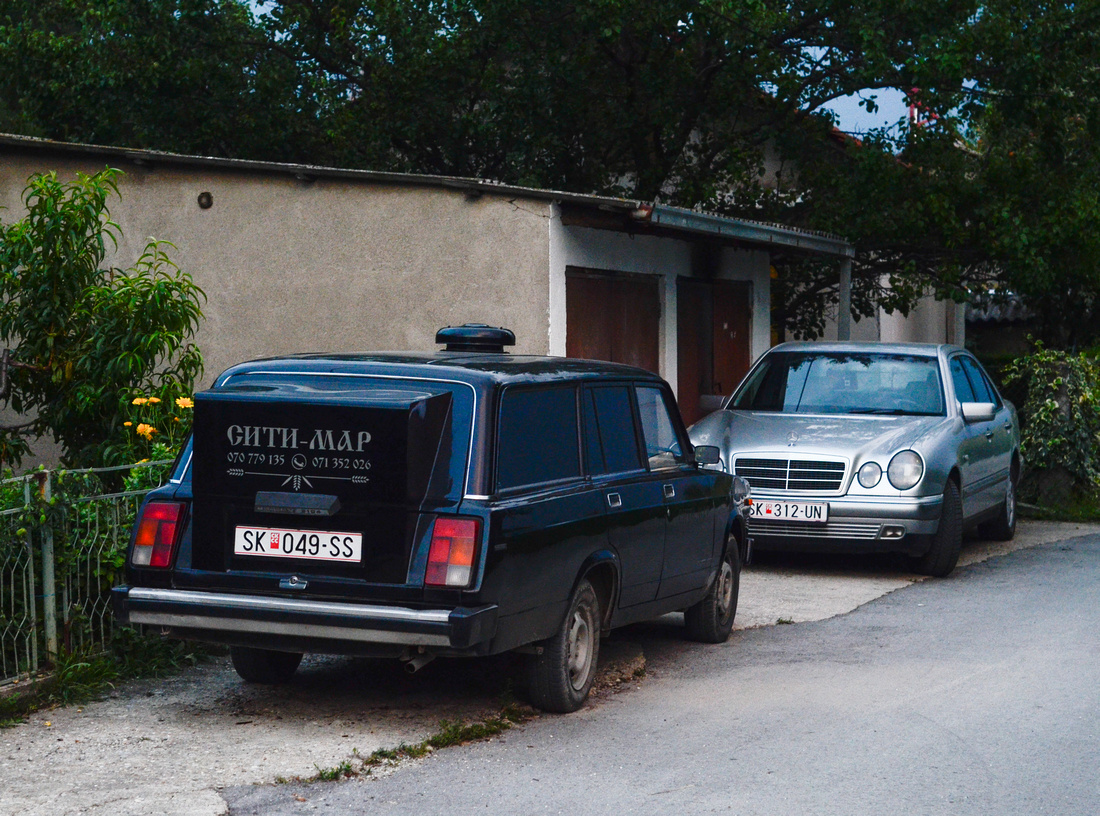

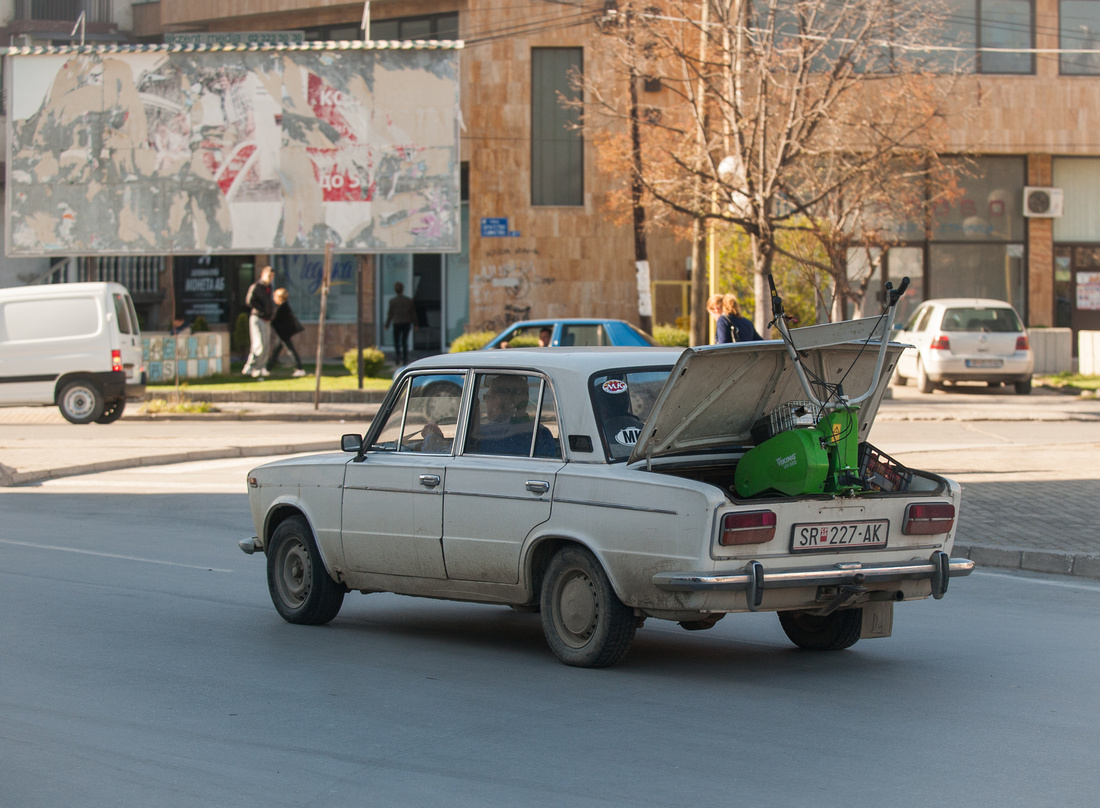
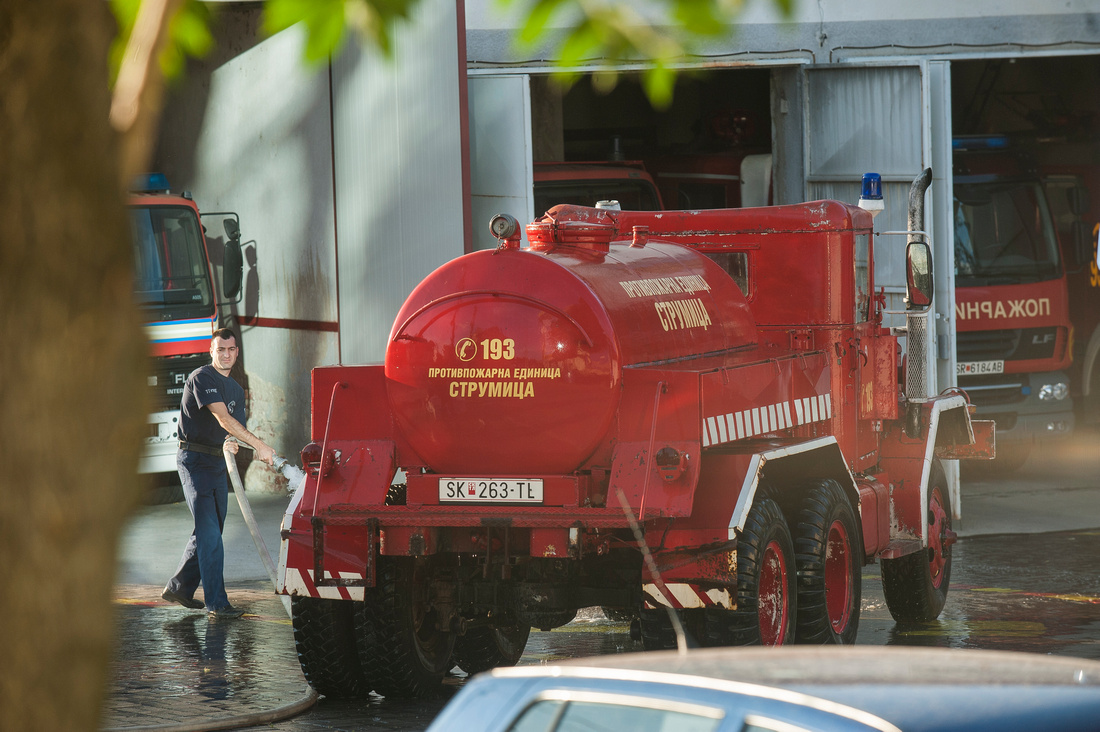
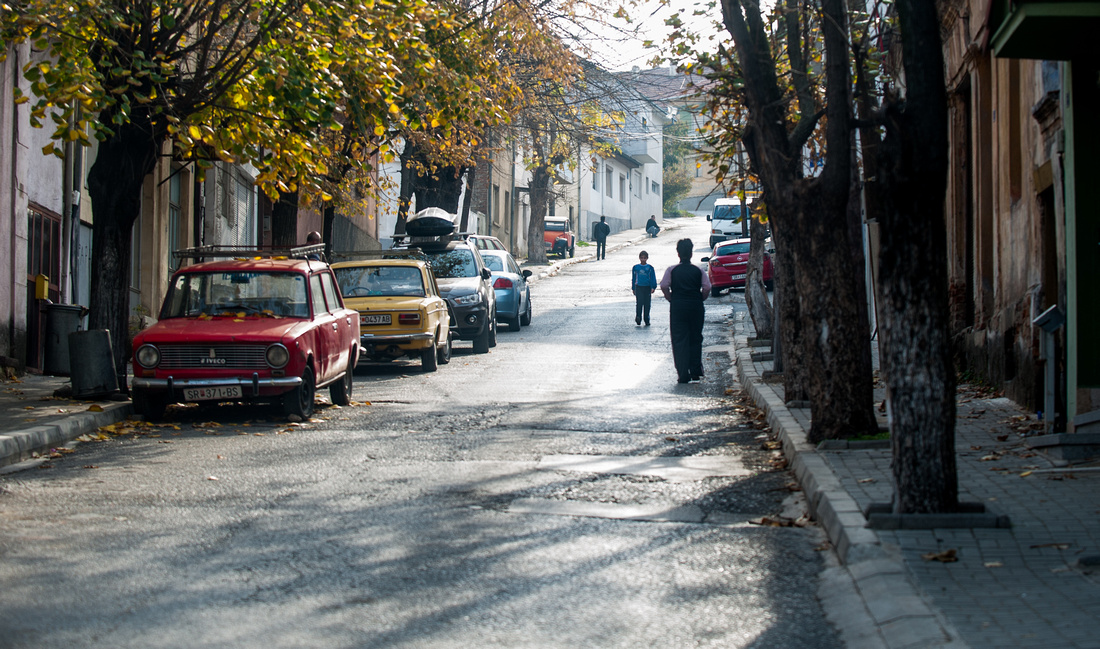
6. More RAM-memory

Att arbeta med bilderna framför datorn kan visserligen vara roligt och kreativt men om du liksom jag vill minska det stillasittande datorarbetet och öka fotograferingstiden, följer här 10 tips.
...gör att du undviker för ljusa eller mörka, detaljlösa partier, i bilden. Granska dina exponeringar på skärmen och anpassa inställningarna allt eftersom, så slipper du jobba så mycket med dem framför datorn. Histogram är ett hjälpmedel på kameraskärmen som med hjälp av staplar hjälper dig att kontrollera tonerna. Lär dig använda det om du tycker om det - men själv använder jag oftast bara "högdagerblinket". Det är en funktion som varnar dig på kameraskärmen, genom att blinka, om du har för ljusa partier i bilden.
5. Rengör sensorn
Har du ibland små mörka prickar i t.ex. himlen på bilderna? De är damm på kamerans sensor och är mycket tidskrävande att sitta och ta bort från varje bild. Rengör istället sensorn, det går mycket snabbare. Själv använder jag en bälg, en sådan som man rengör öronen med, för att blåsa bort dammet med. Också rengöringsset med duk och spatlar som man köper på fotoaffären. Men det kan bli kostsamt om du inte vet vad du gör, det är fort gjort att råka repa sensorn. Ibland behöver man lämna in den till ett serviceställe för att verkligen få den ren. Har du ingen möjlighet att rengöra sensorn, för stunden, så kan du tills vidare, tona ner eller helt dölja prickarna genom att fota med större bländare. På min kamera, med fullformatssensor håller jag mig då på max f5.6 - för med större bländare, t.ex f16 kommer de helt säkert att synas. Du kan också planera bilden så att prickarna inte hamnar mot en jämn yta i bilden som himlen, utan inne bland detaljrika delar som gräs grus, grenar mm - tills du får möjlighet att rengöra den.
That's all folk's
]]>
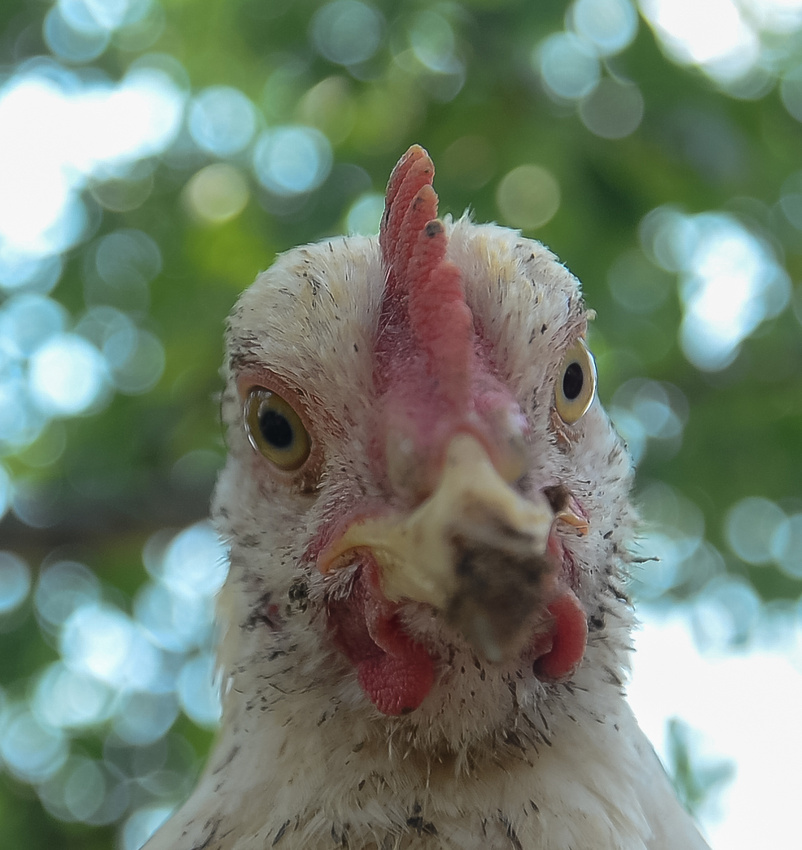
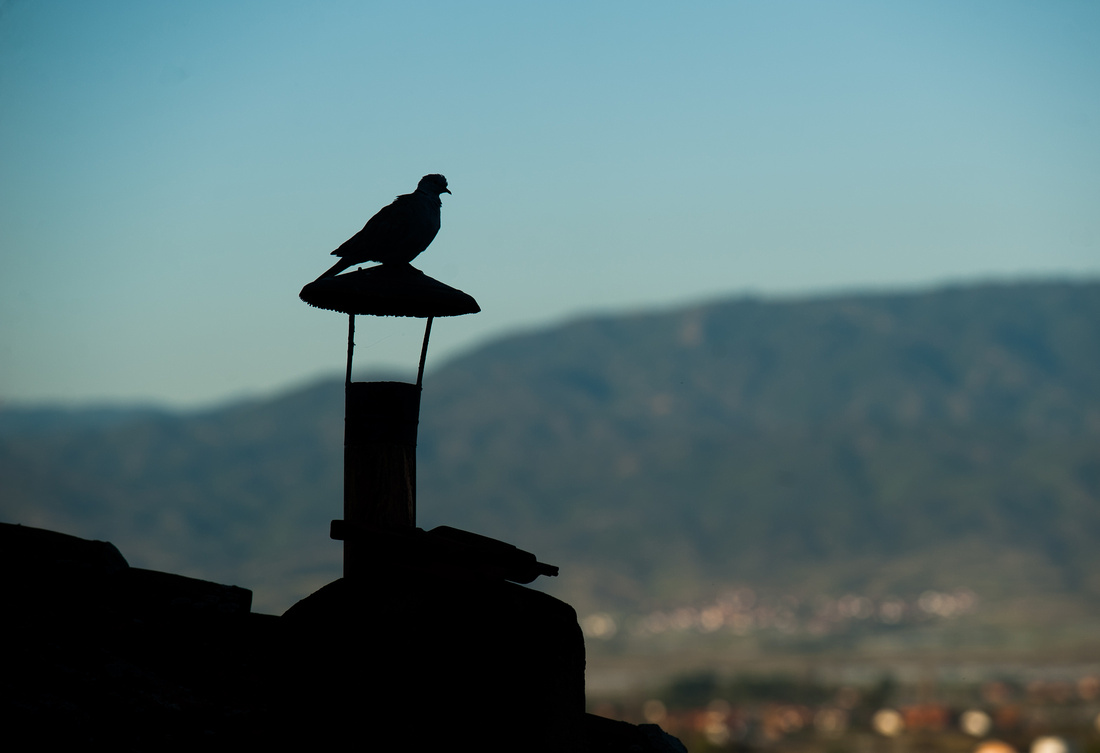

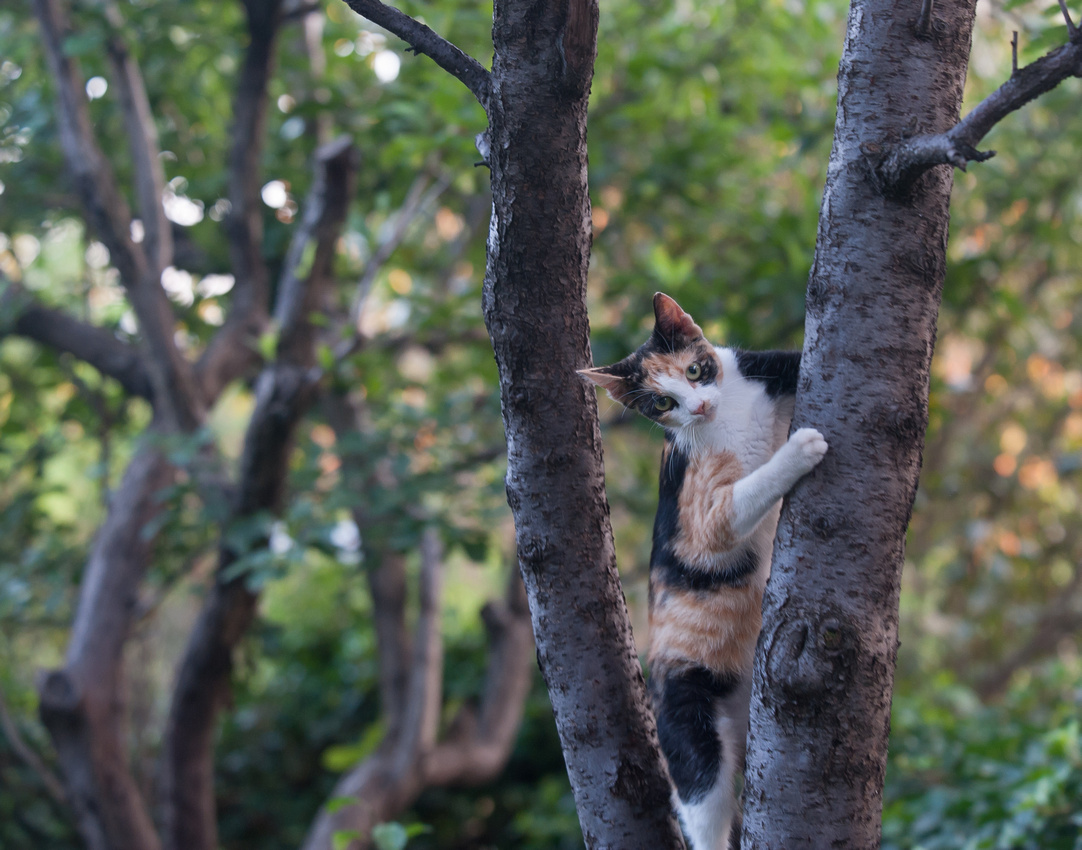
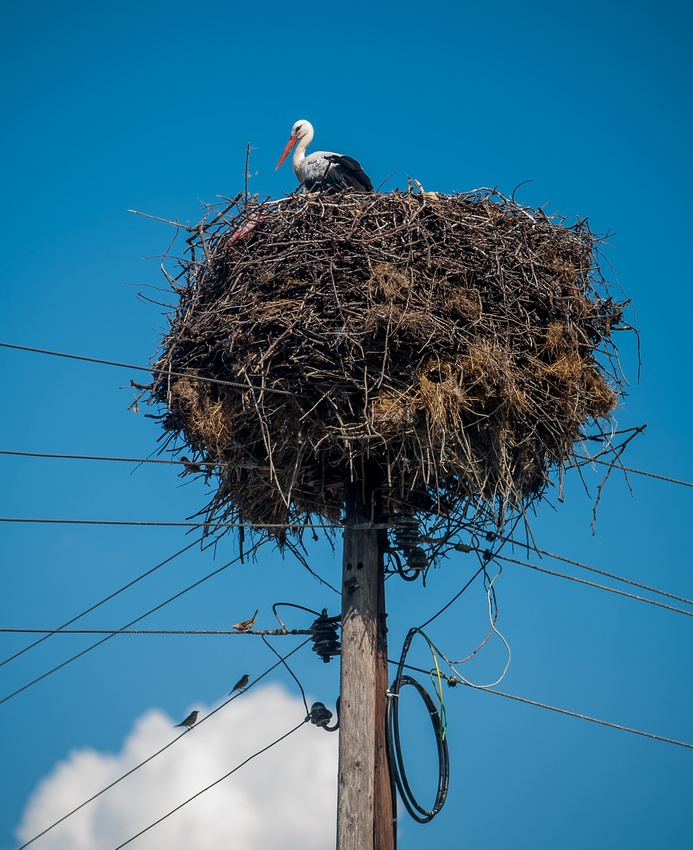
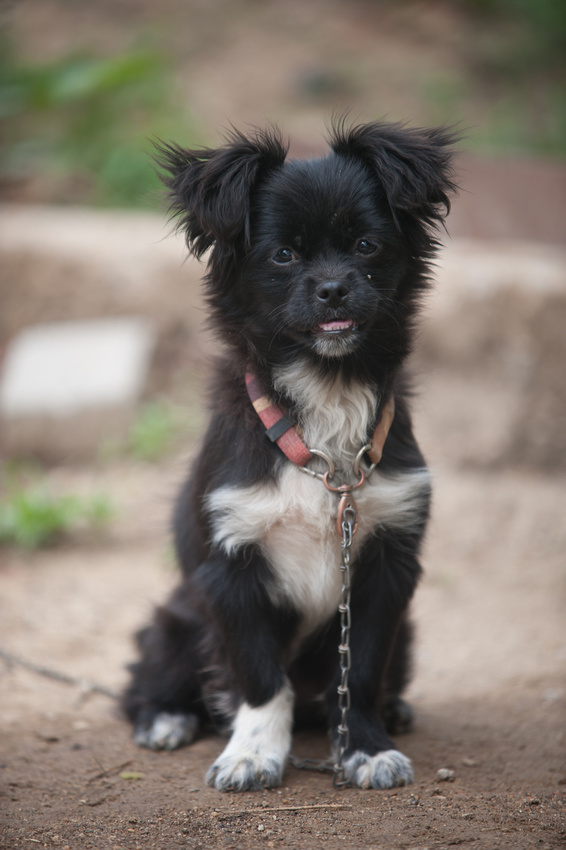
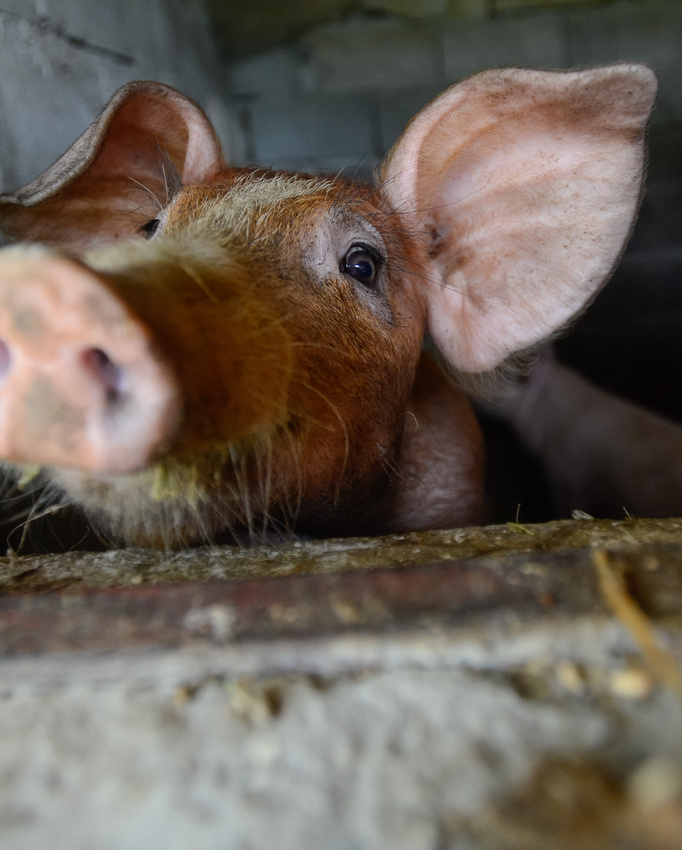
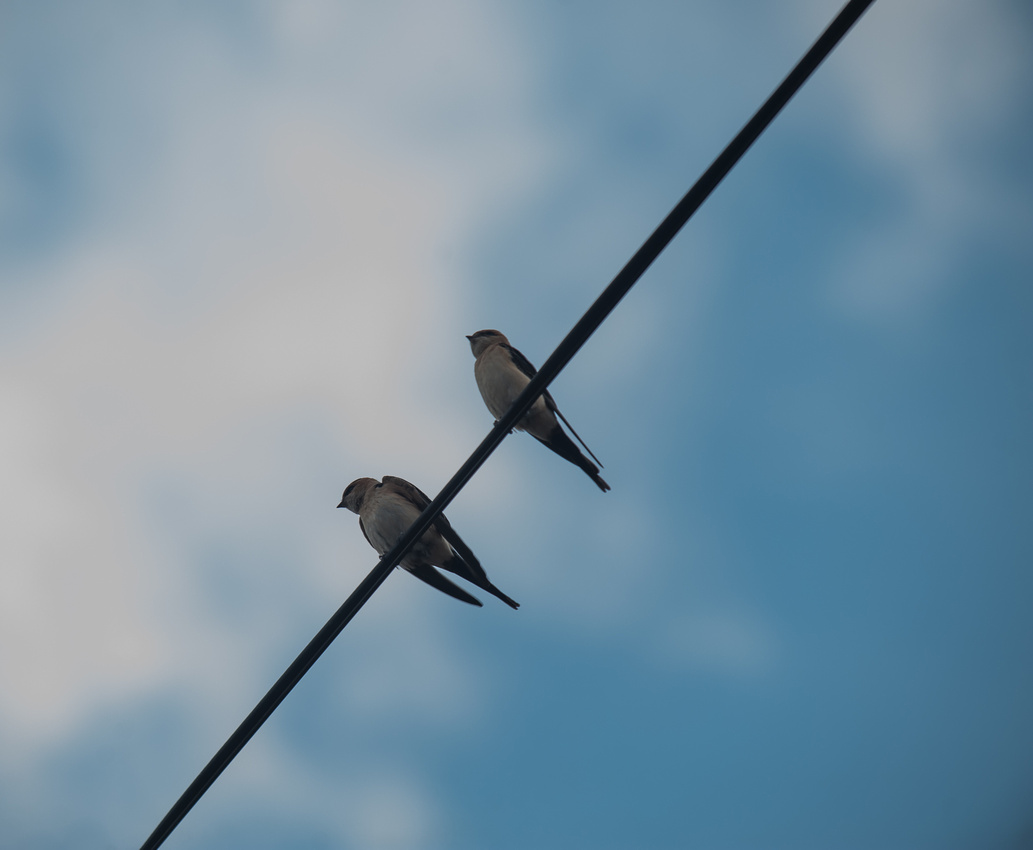
Unfortunately it's very hard to catch a view of it without wires in the pictures, but finally I did it, in the last picture in this post. From a position high up on the hill in Old Strumica, which is highly recommended for the Strumica visitor, because it gives a good perspective for almost the whole town and many of the surrounding villages. Orta mosque is just five minutes walk from the main square and the higher position, I mentioned is another 10 min away.

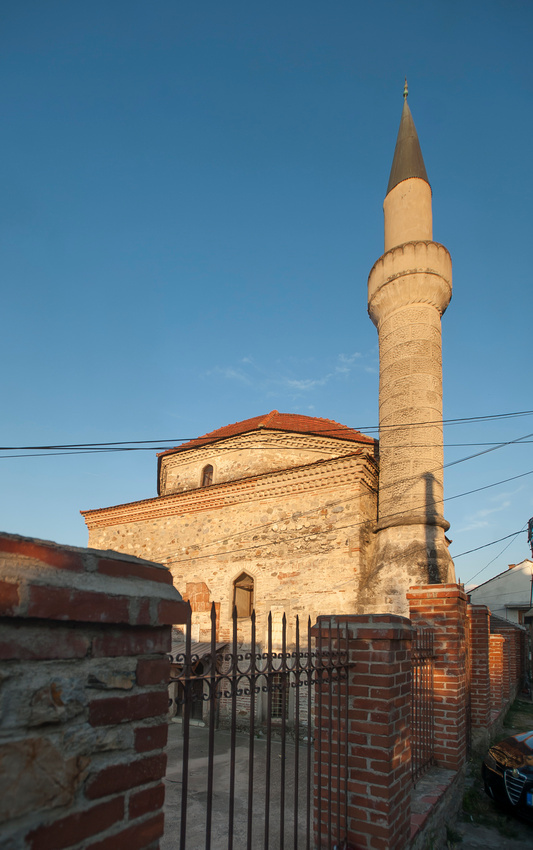
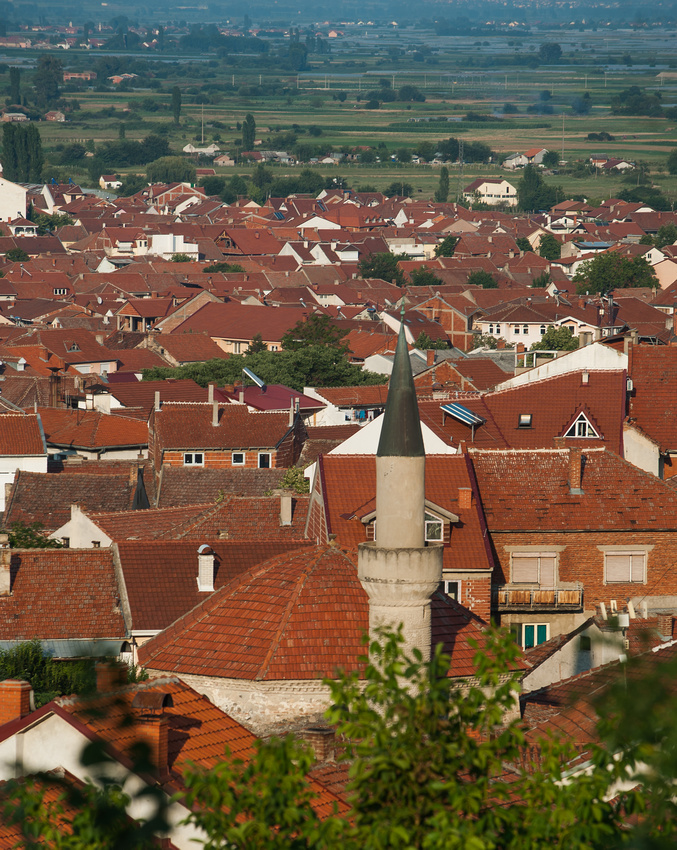
If you want more information about the mosque go to an external page by clicking here
]]>
 The Vardar river is floating quietly past Gjorces concrete tone.
The Vardar river is floating quietly past Gjorces concrete tone.
 The vip lane.
The vip lane.
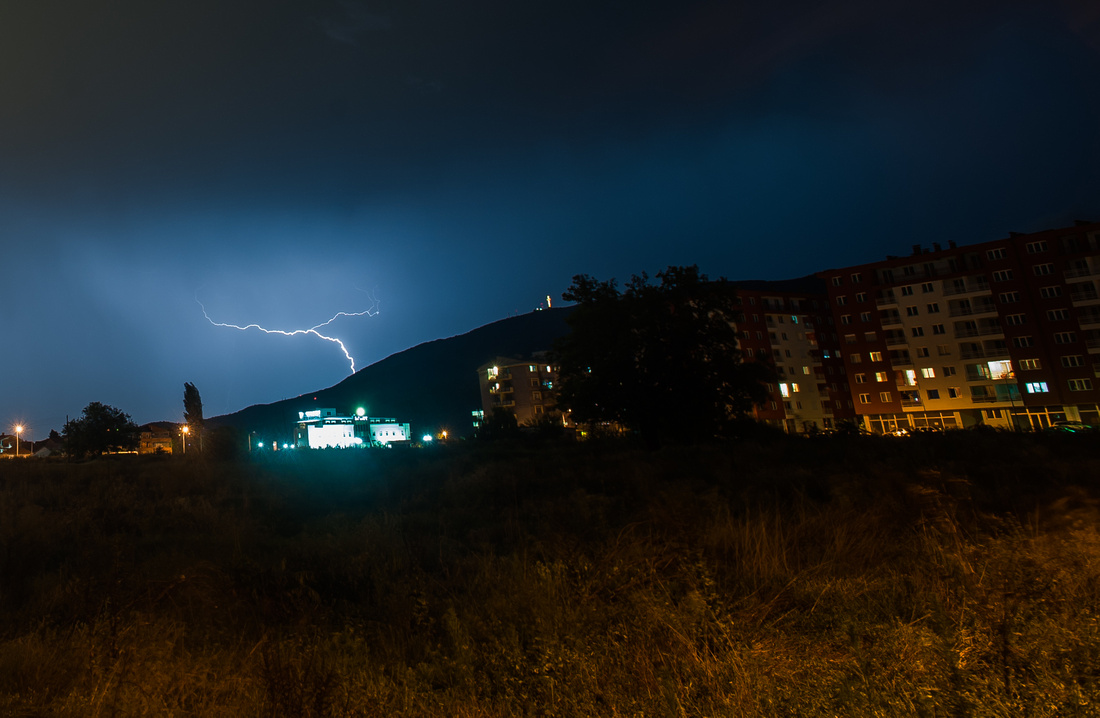
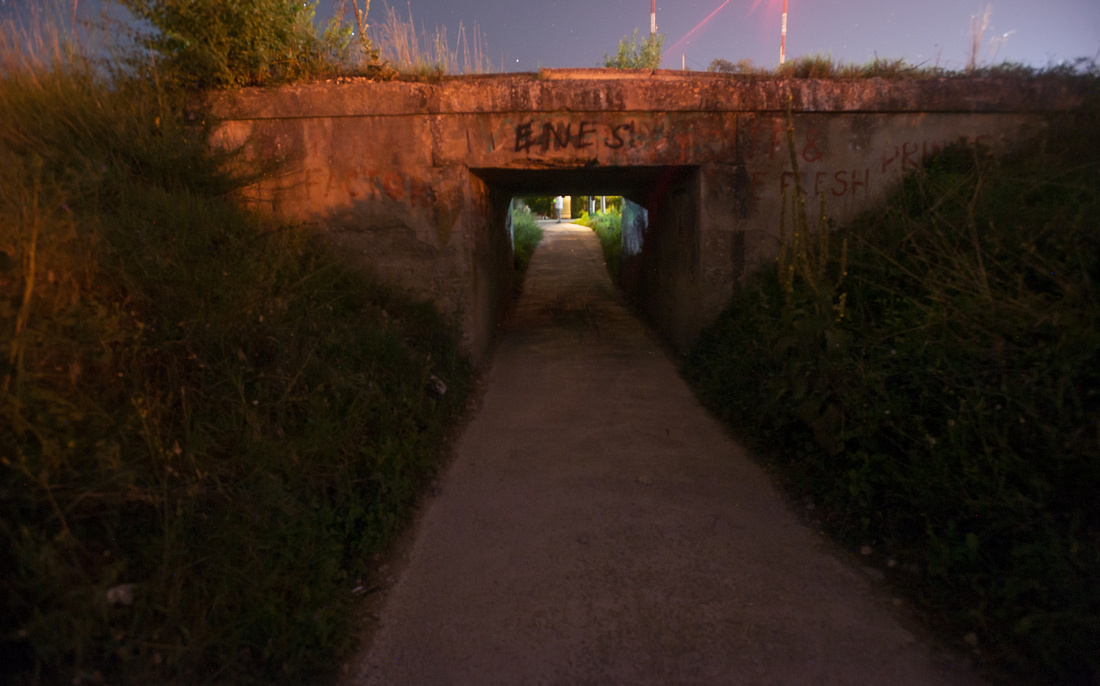


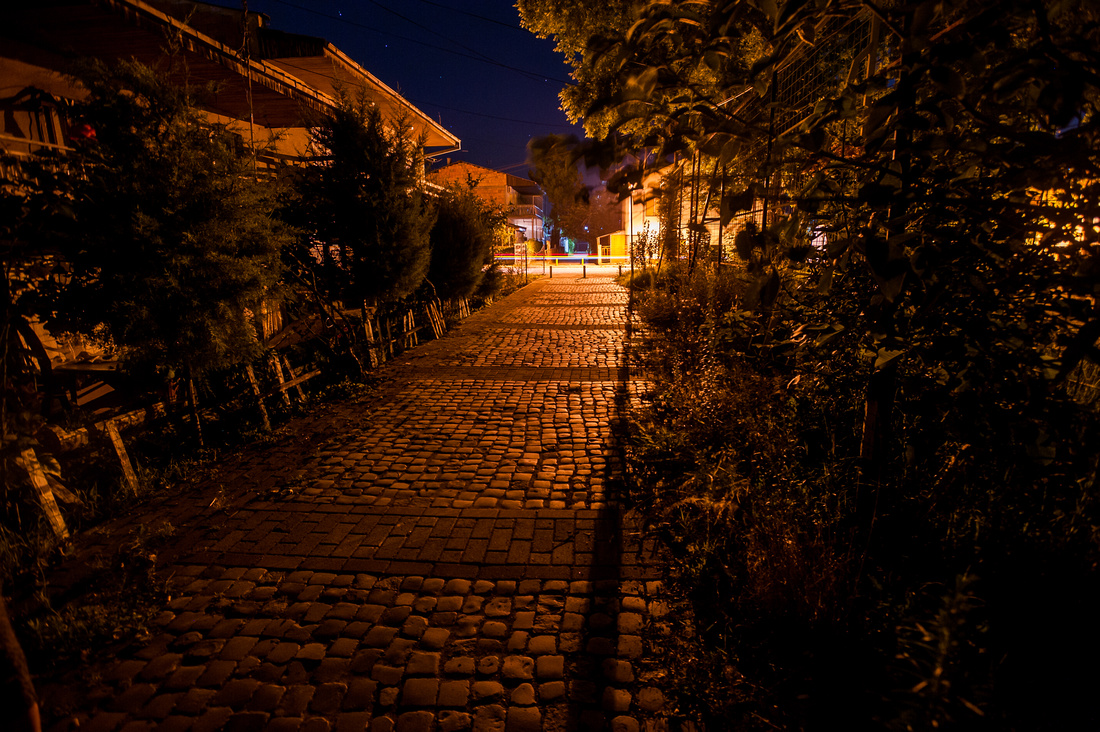
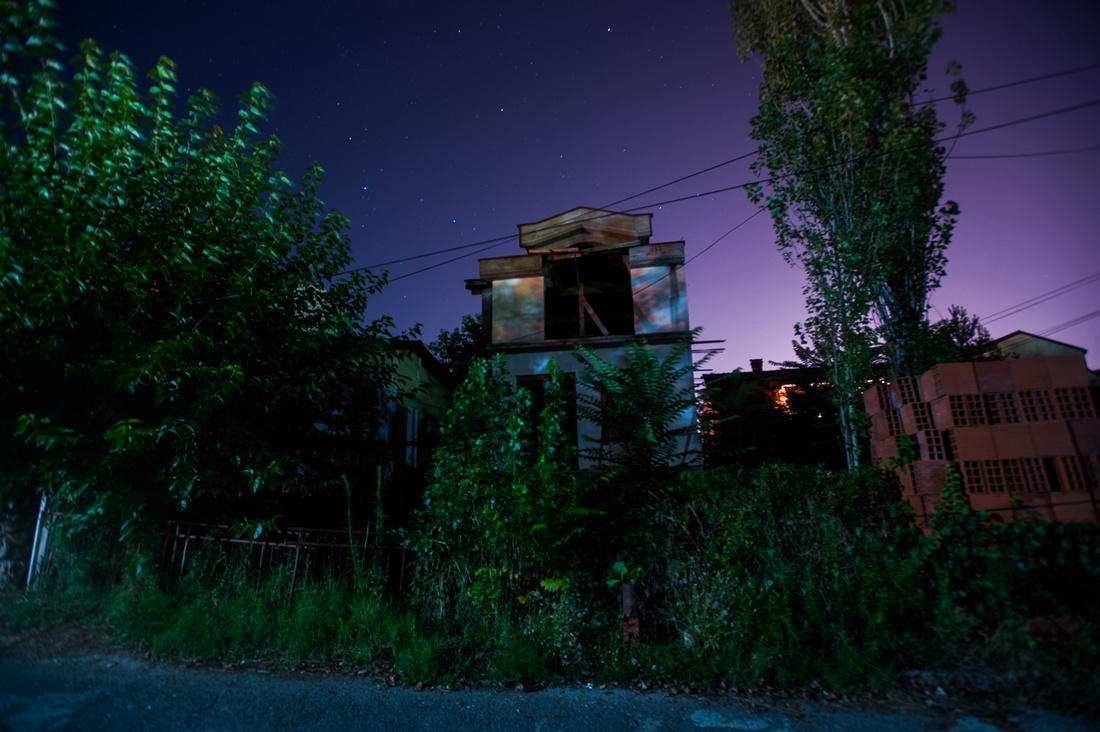
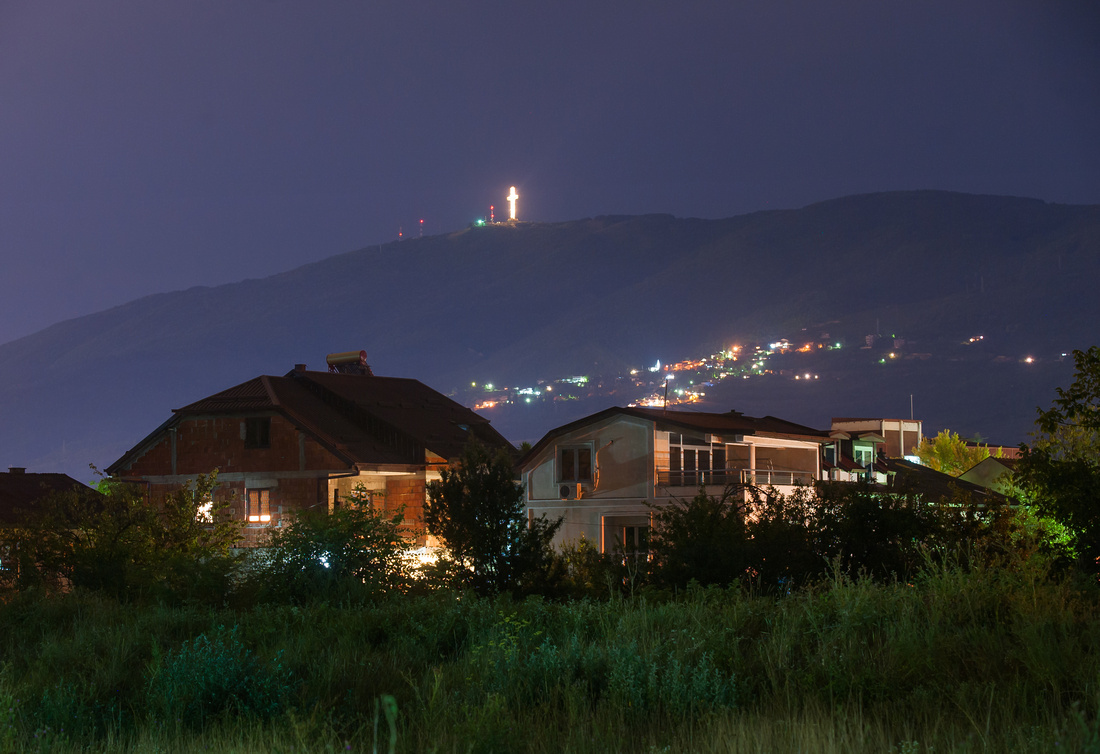
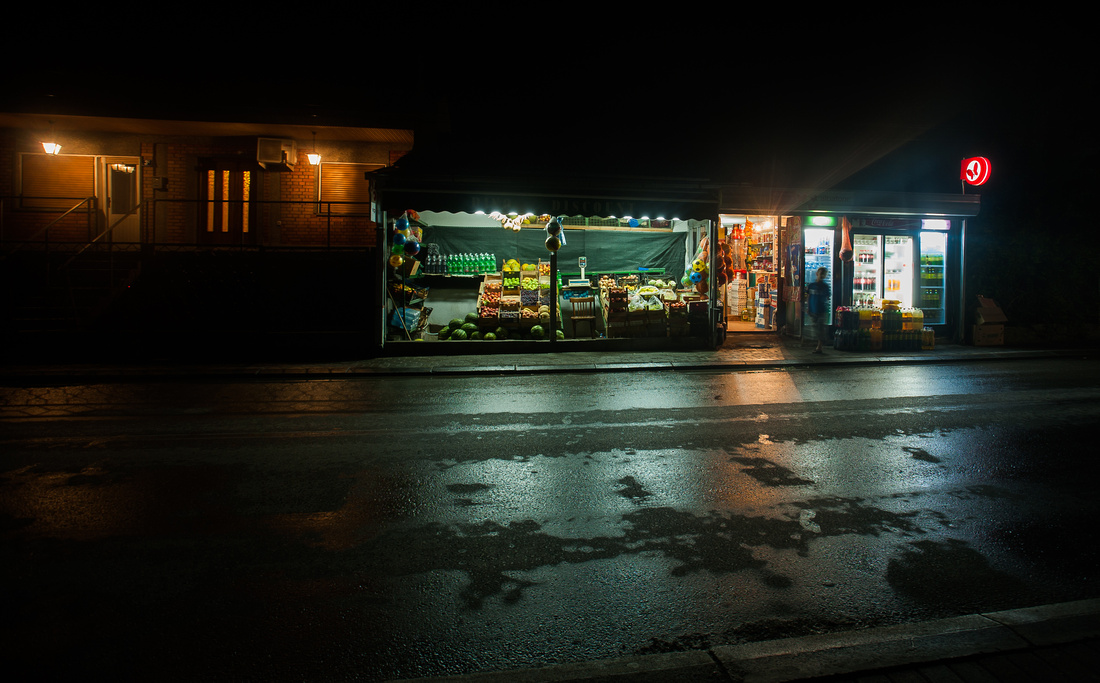

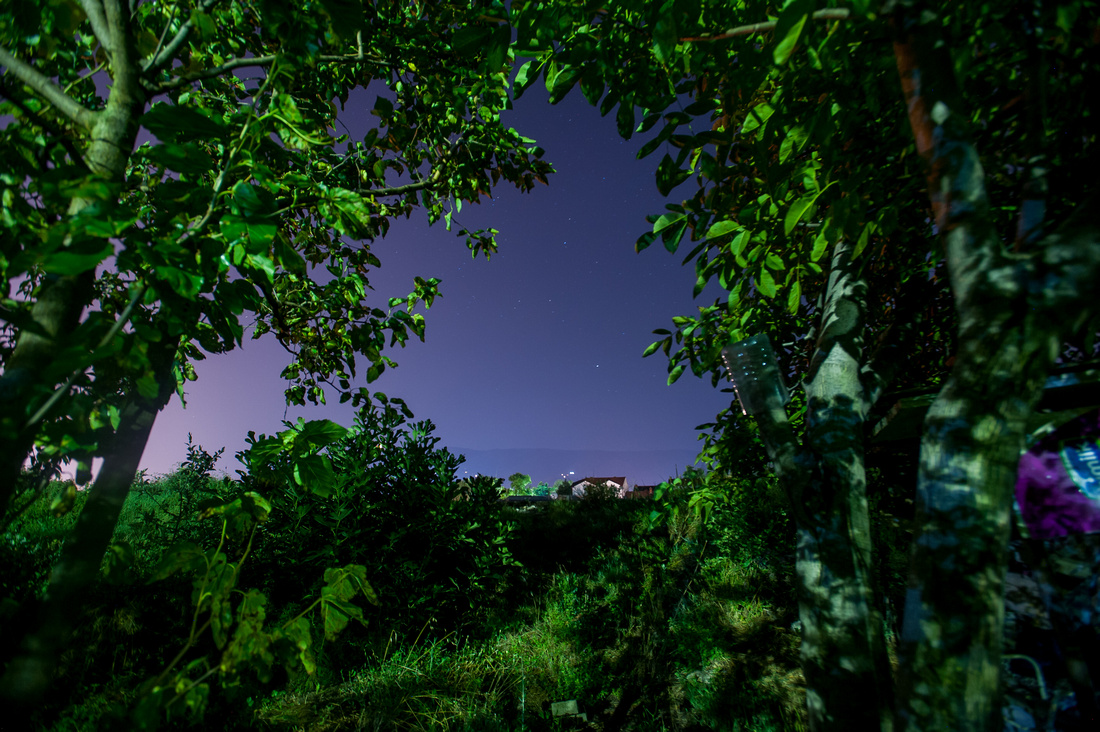
See also the earlier post: "Visiting a very nice family in the Skopje suburb of Gjorce". Thanks Zoki for showing my around!
]]>

The long pedestrian street Shirok Sokak has a lots of old buildings, cafes and an European atmosphere.
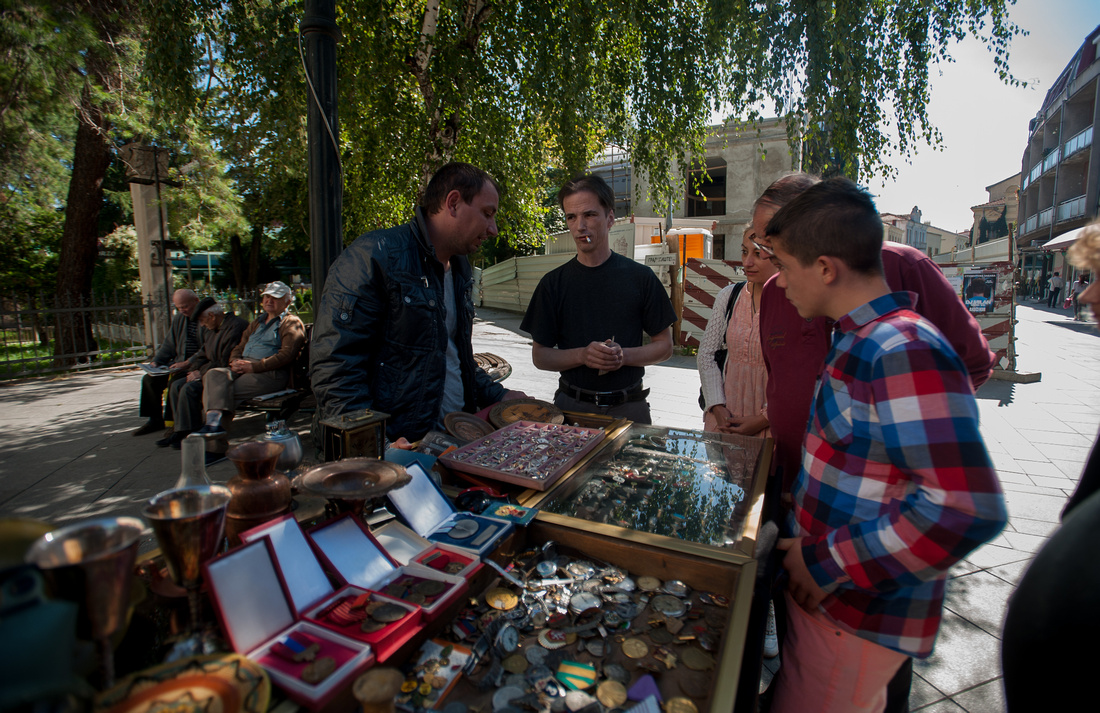
My brother is busy dealing with an antiques dealer at the pedestrian street.
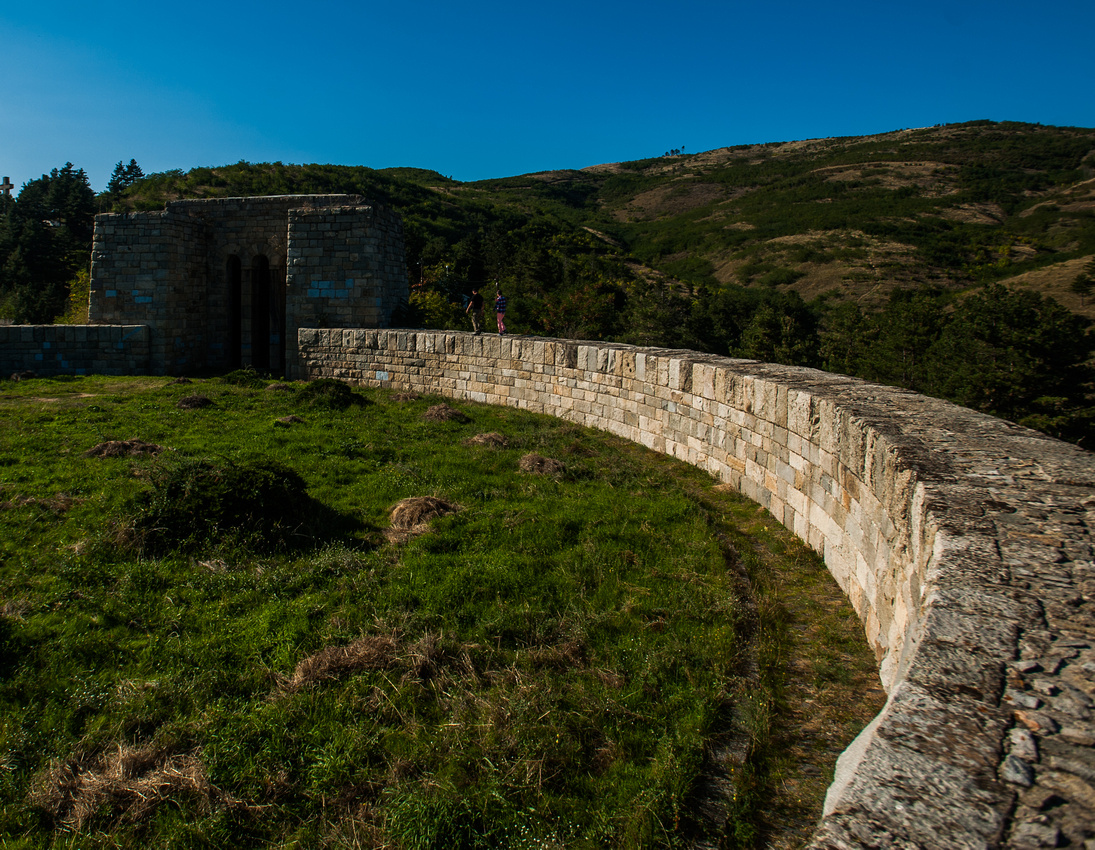
German honorary monument in Bitola.After world war 1, the Germans where allowed to build it, to honor their fallen soldiers.
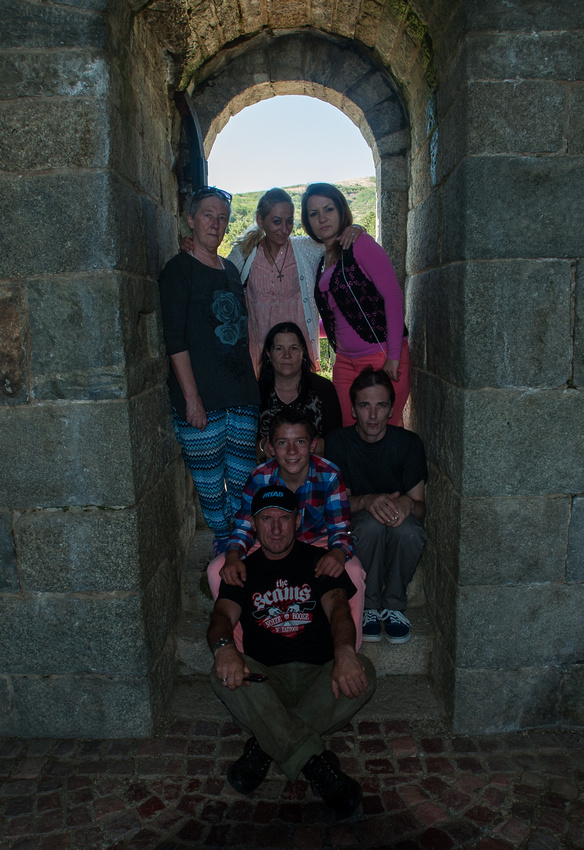
Parts of my family, my wife, mother and brother, together with the family we visited here.


We had no complaints about the view, from the site, or about the town, and we will of course come back to "The city of consuls"
]]>
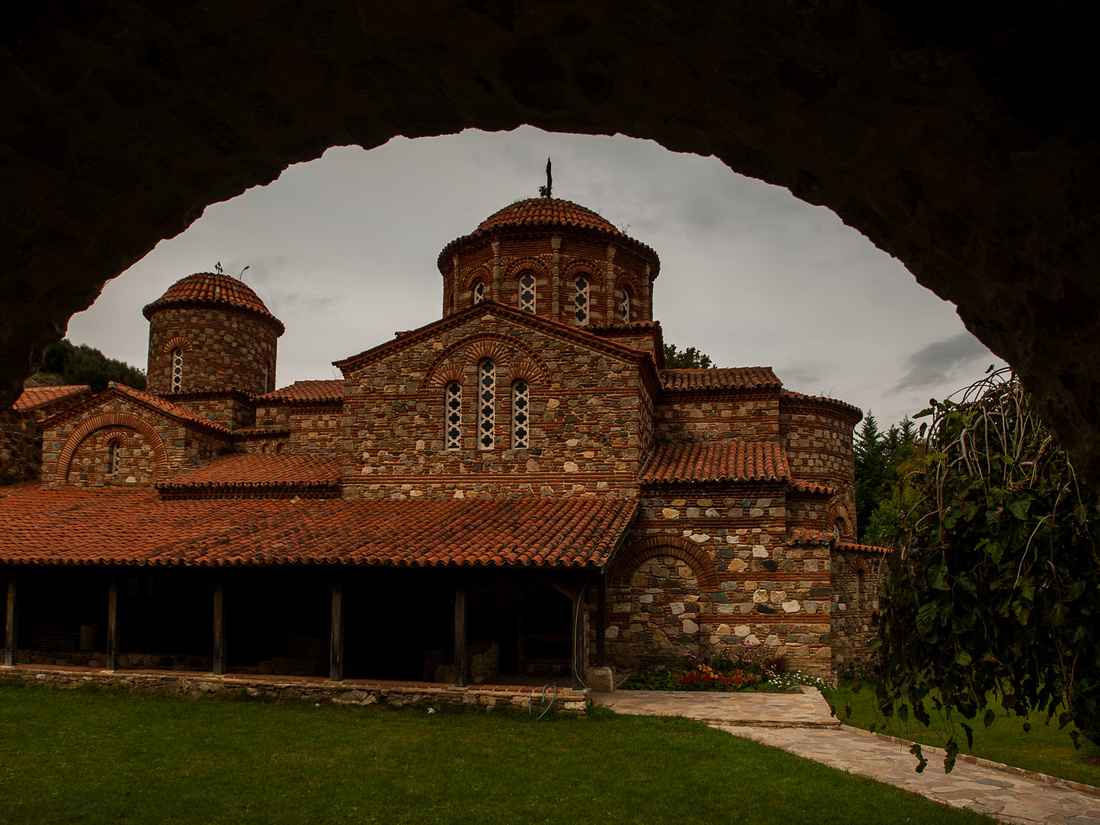

The altar space which has some parts of the oldest church.
 The big renovated ceiling dome
The big renovated ceiling dome
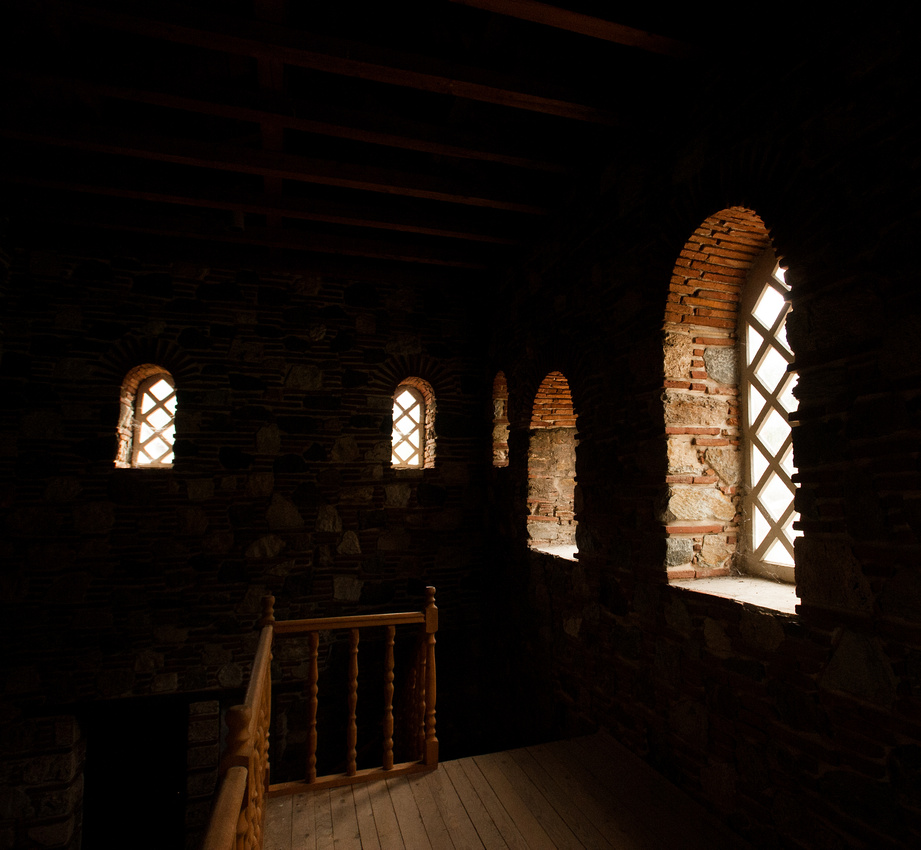
The church windows let in light with a very interesting character.
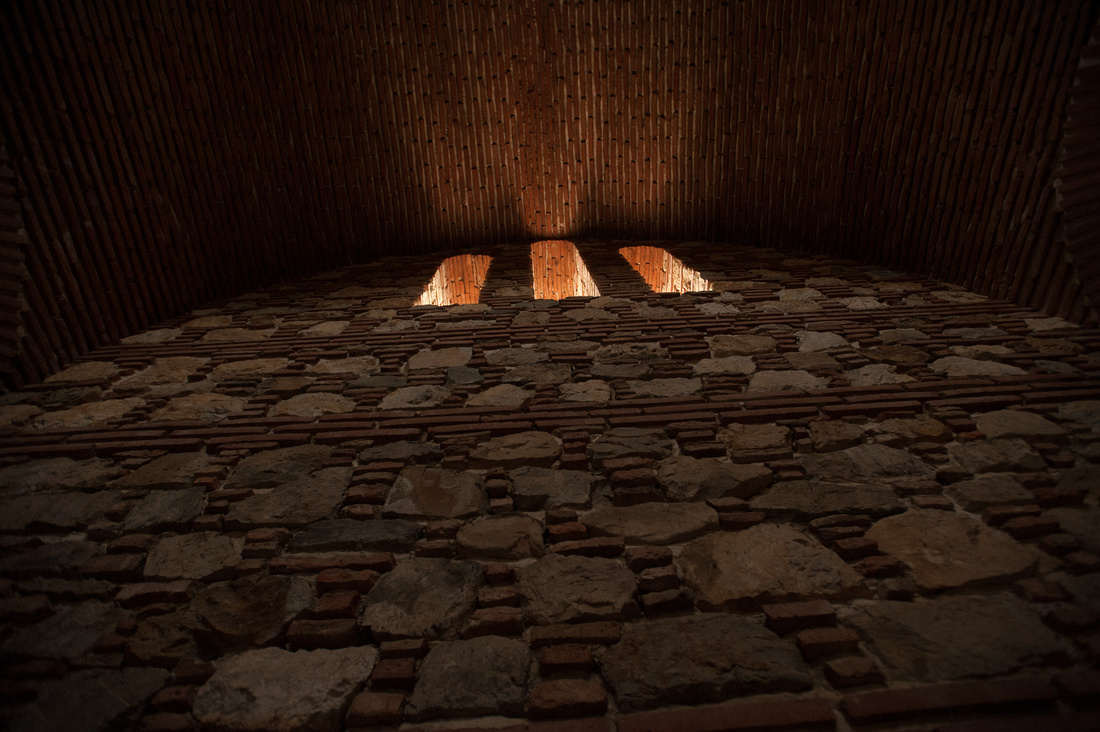
K

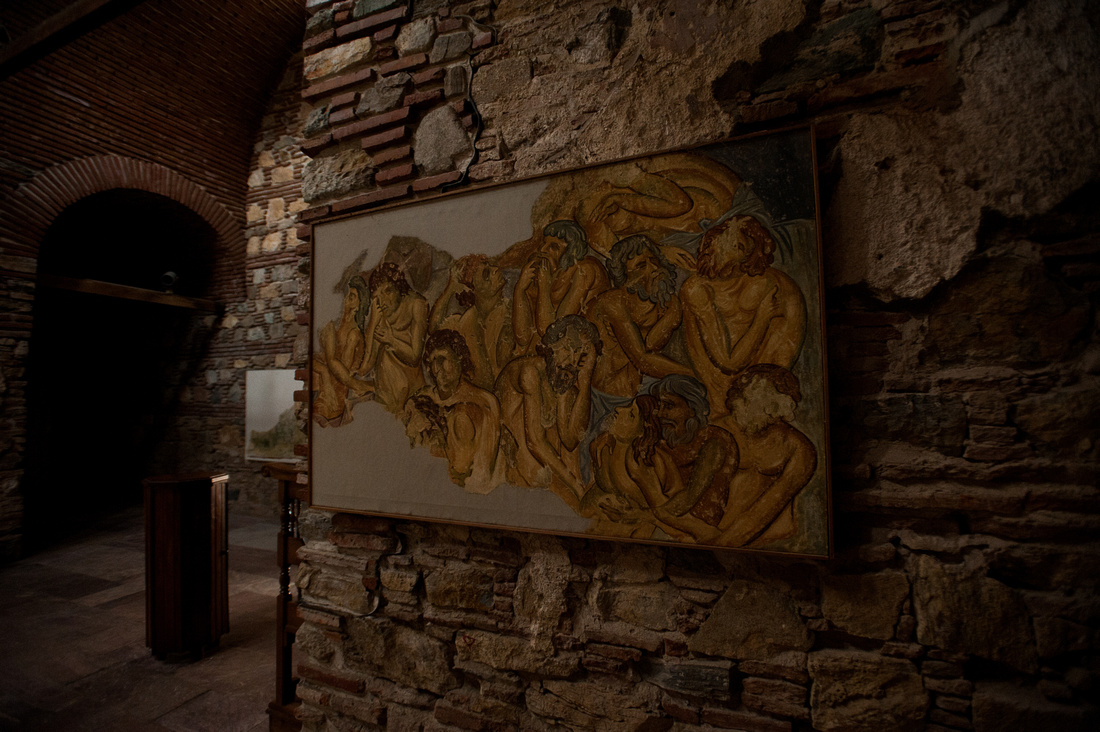 Frescoes and other paintings from the 1100s and 1400s.
Frescoes and other paintings from the 1100s and 1400s.
The sight is of course a "must see place" for the Strumica visitor, religious or not. Travel the 5 km with taxi for around 1,5 euro and you will also pass the vibrant village Banica. The monastery area here in Vodoca also has a archaeological site, a smaller newer church, gardens and monastic parts with residential quarters.
]]>
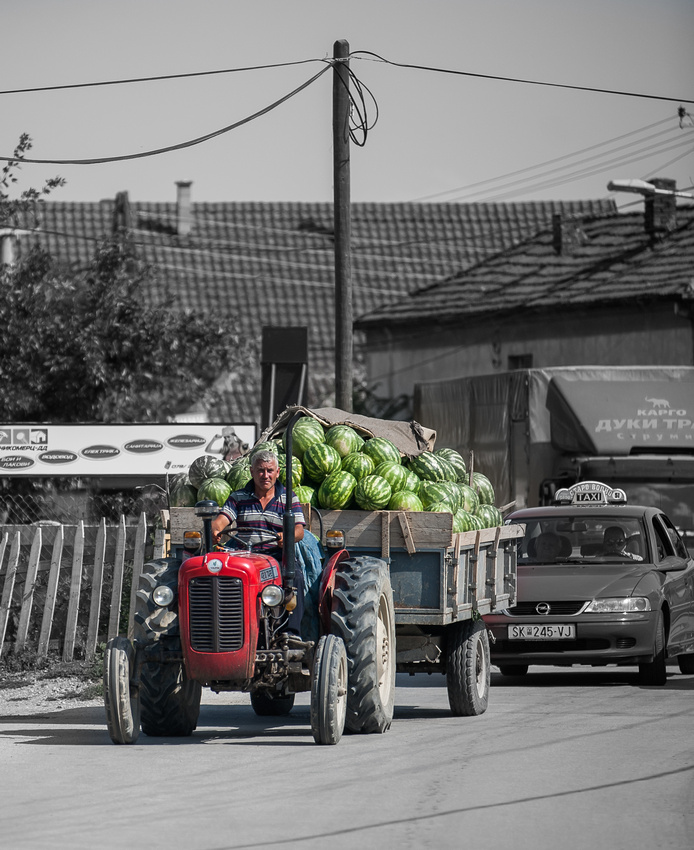
When in season, in August, they are everywhere. They are tractor, car, or horse-borne, they are on the roads, the hilly residential streets, in major intersections, in public places and outside your window several times a day. Interrupting your nap or afternoon coffee with his shouting: "AJDE BOSTAN!!" (kom on, buy watermelon). Sometimes it works like the Swedish icecream car's signal - it make you snatch a few cents, and runs out, for shortly thereafter, satisfied and 50 cent poorer, come dragging on a mega melon, which you can not possibly eat before it spoils. The beginner, like me, of course has no idea how to quality check it by tapping on the shell, and therefore risks to come home with one with white and tasteless flesh. While the salesman contented chugging down the street with his battle cry.
Here: Skopje suburban Lisice.
]]>
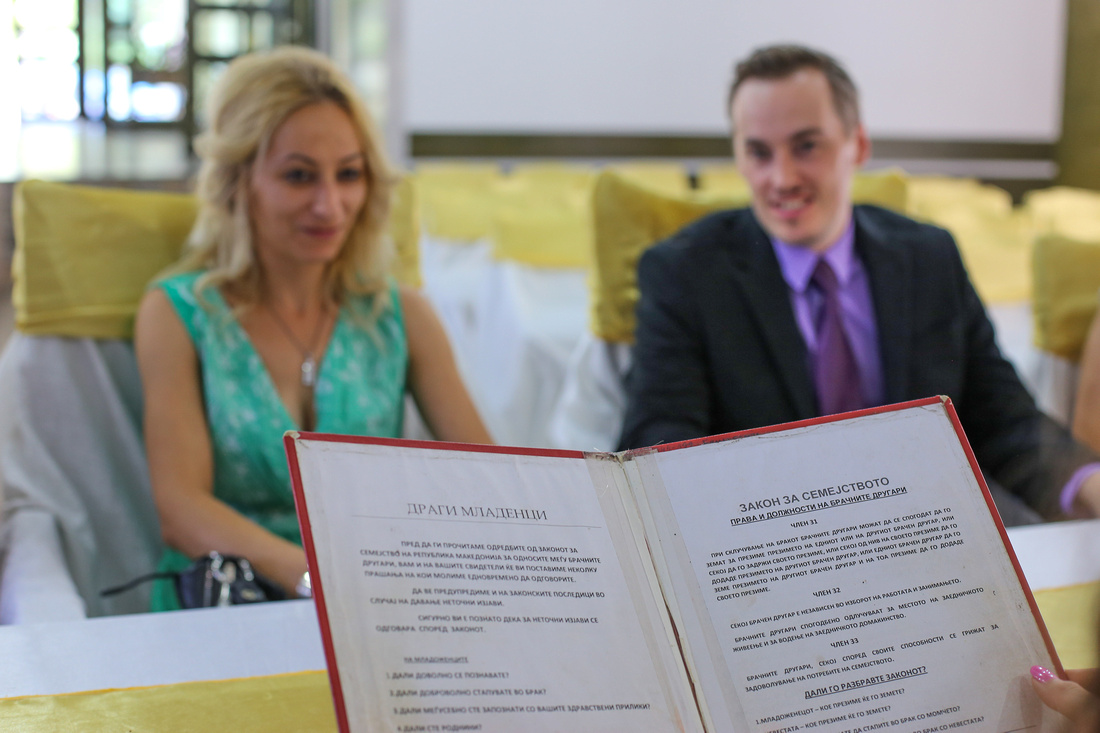
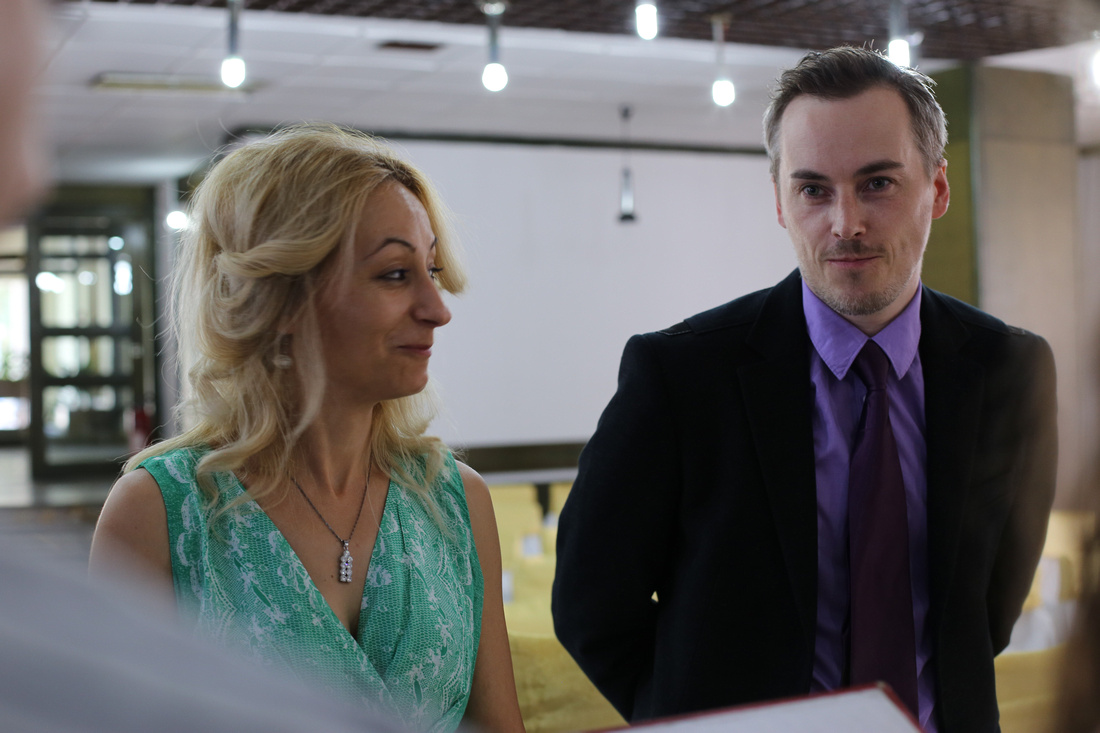

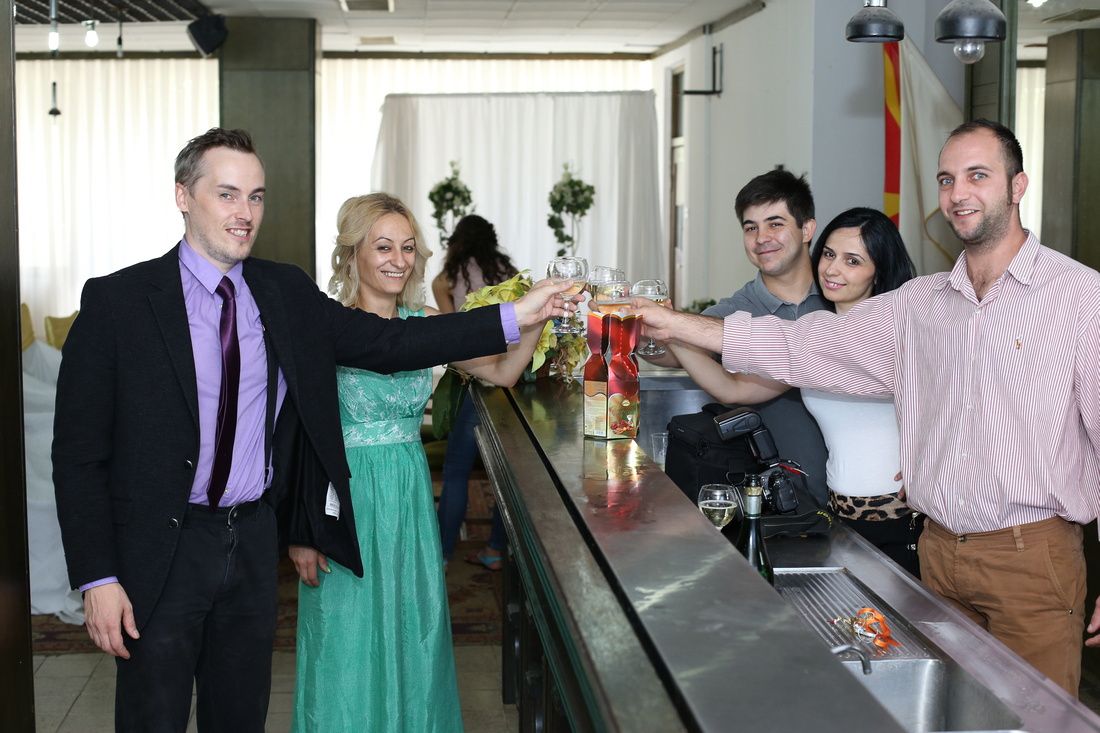
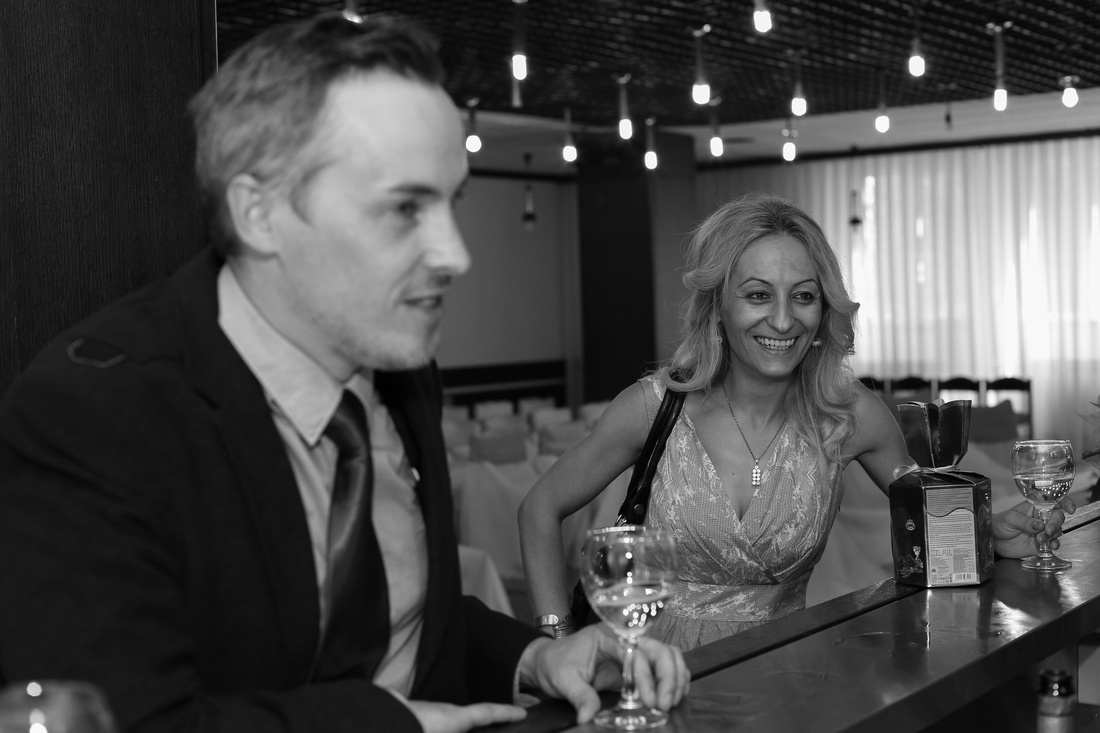
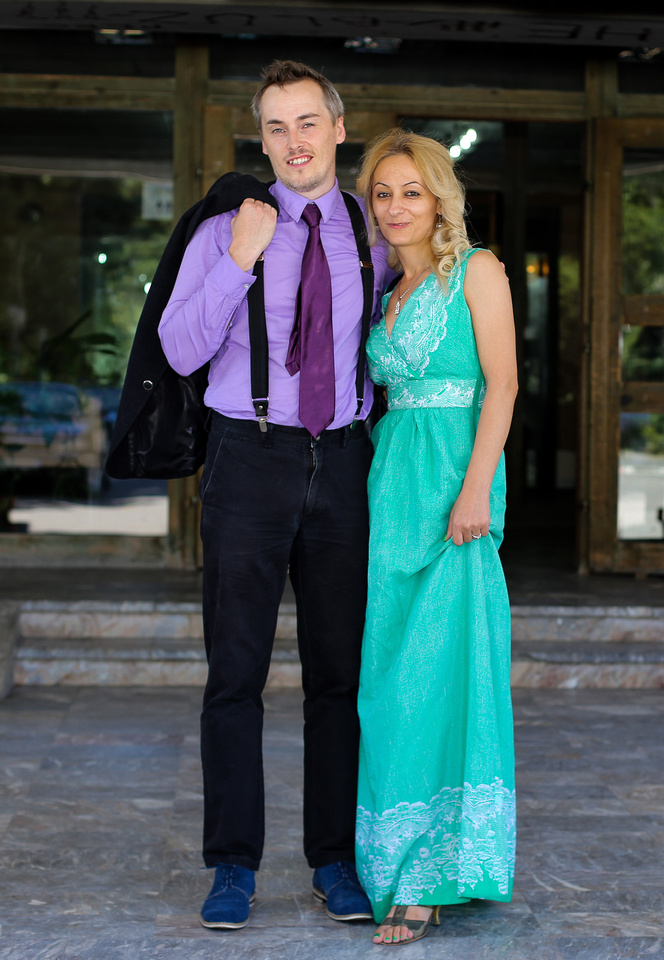
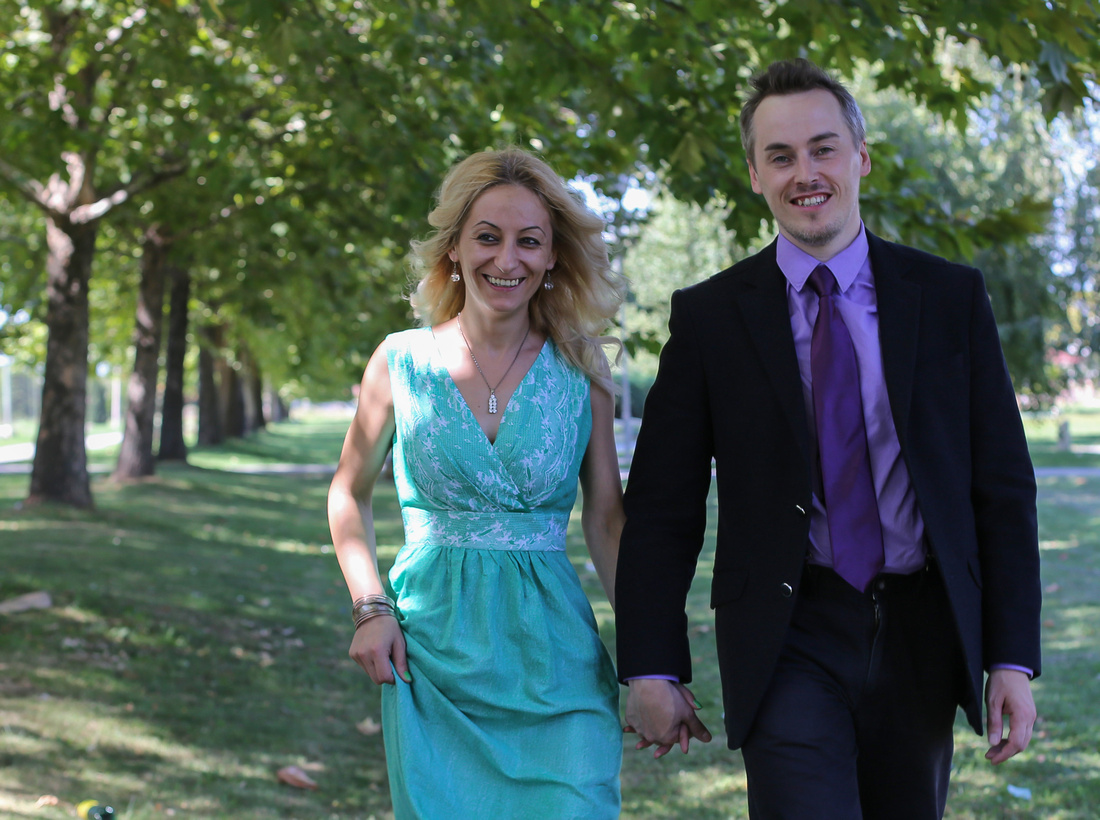
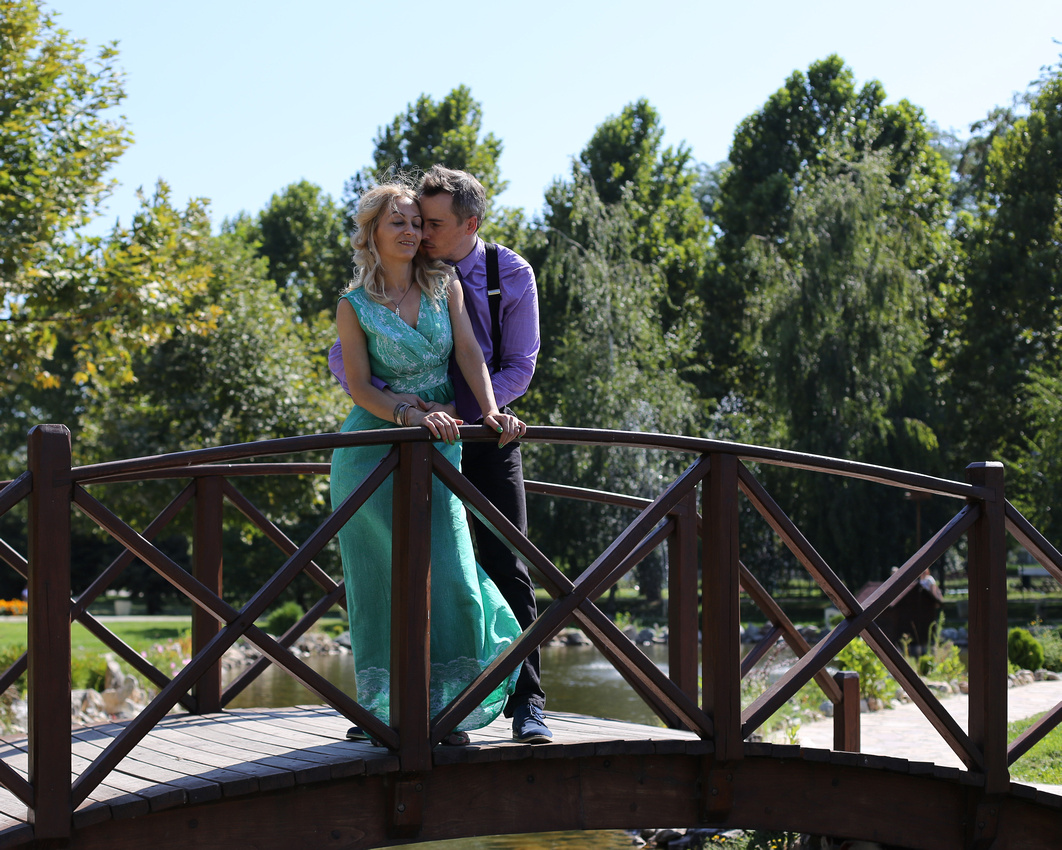
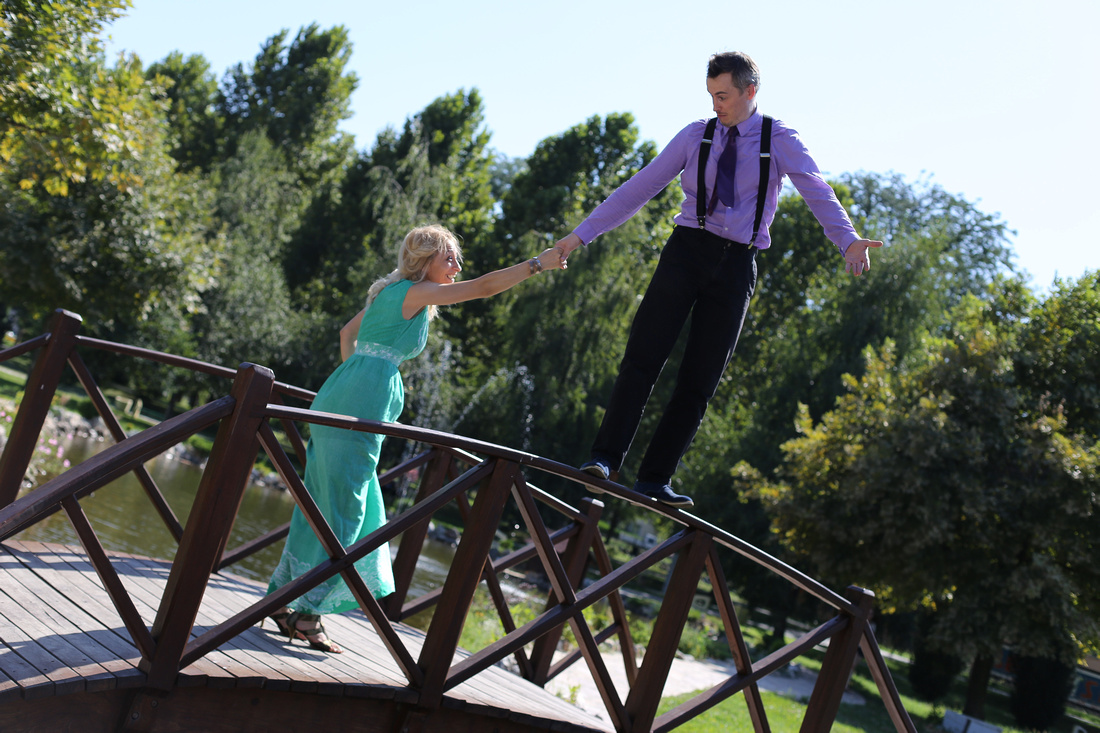
All photos in this post: Stole Angelov
]]>
To take on Gjorce: approx 25 min from Skopje's Centre, with "London bus".
 Weather canceled a sightseeing trip.
Weather canceled a sightseeing trip.
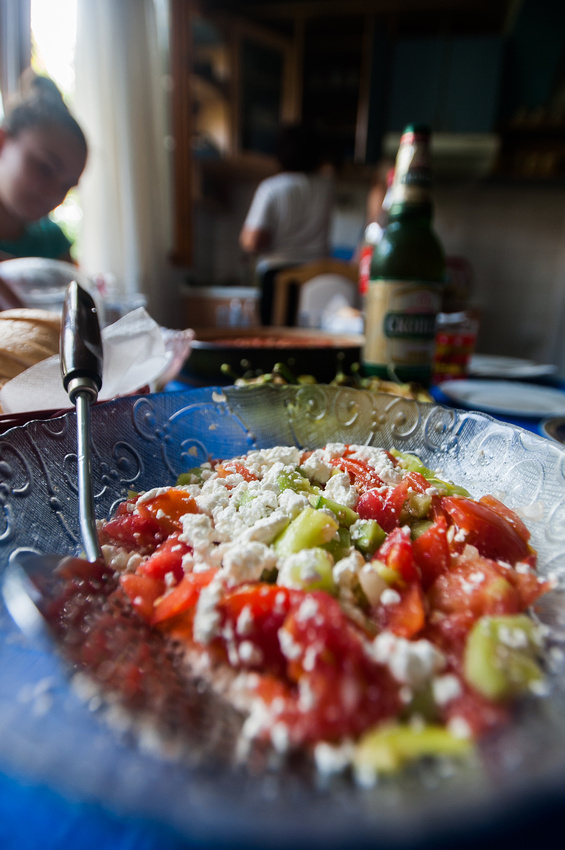
But good food can always bring up the mood, particularly home-made traditional specialties. Often begin meals in Macedonia with salad and a dash of Rakija (strong spirits).
Here: guaranteed fresh produce Šopska salata.

... with raw materials harvested directly from the family's Garden.
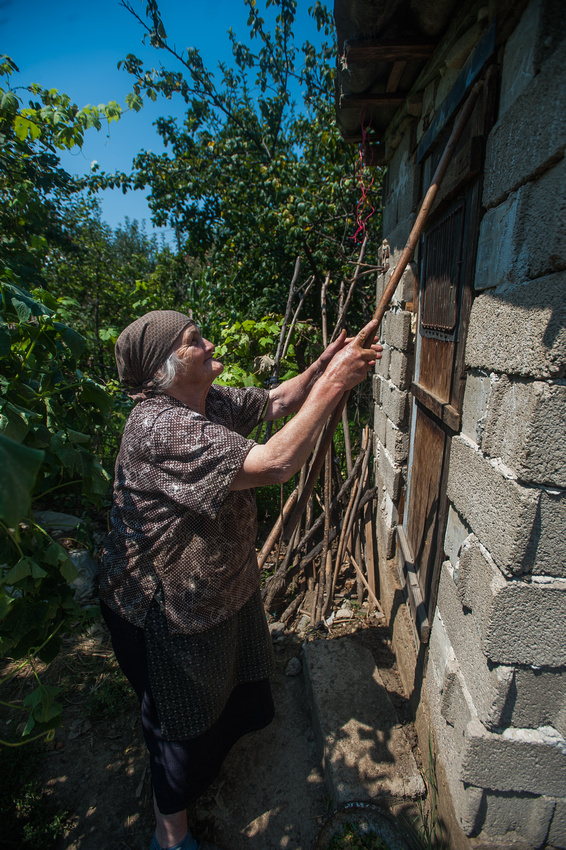
The family's oldest member enjoy work on plantations and have full control on them …as well as on chicken coop.
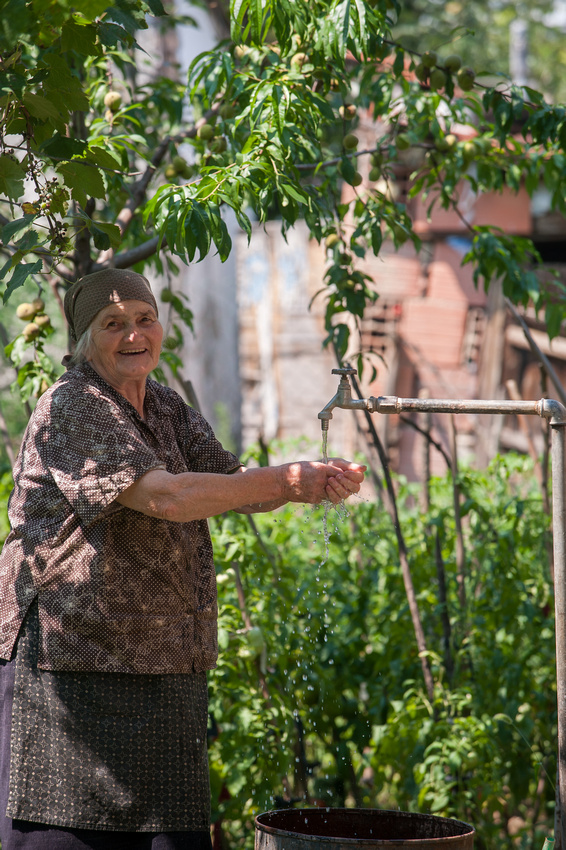
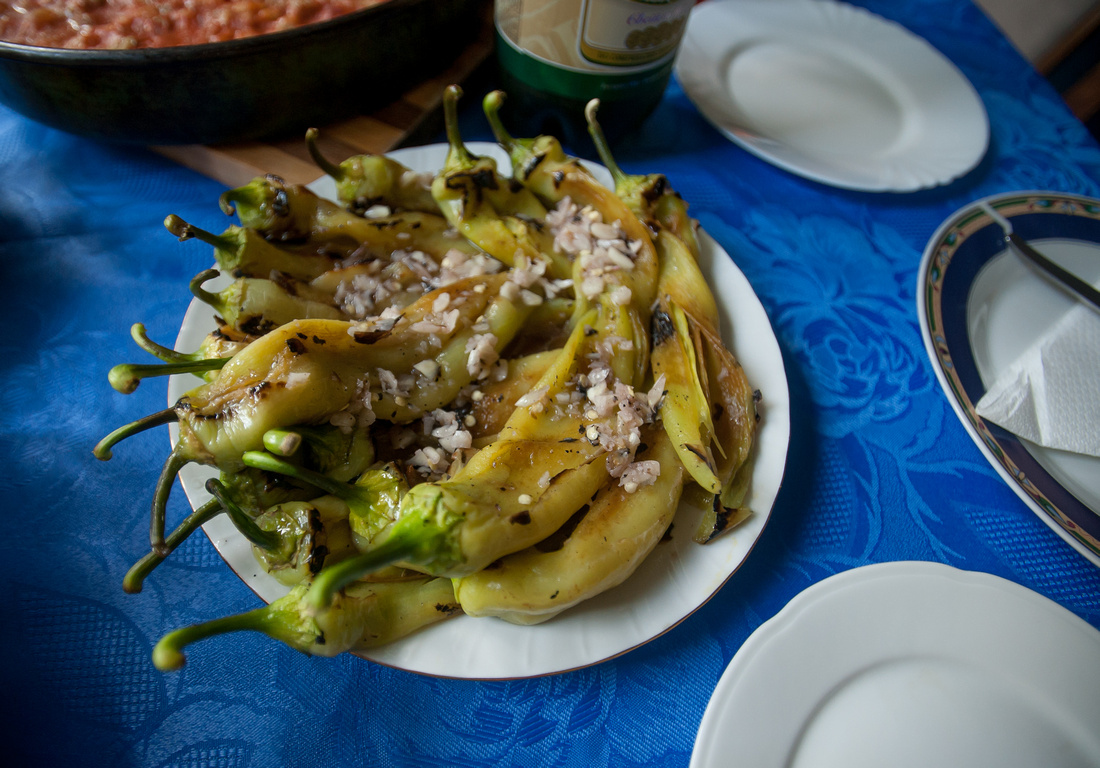
Another starter - "Podluceni piperki" – pepper fruits with garlic - in oil, vinegar,salt and parsley.
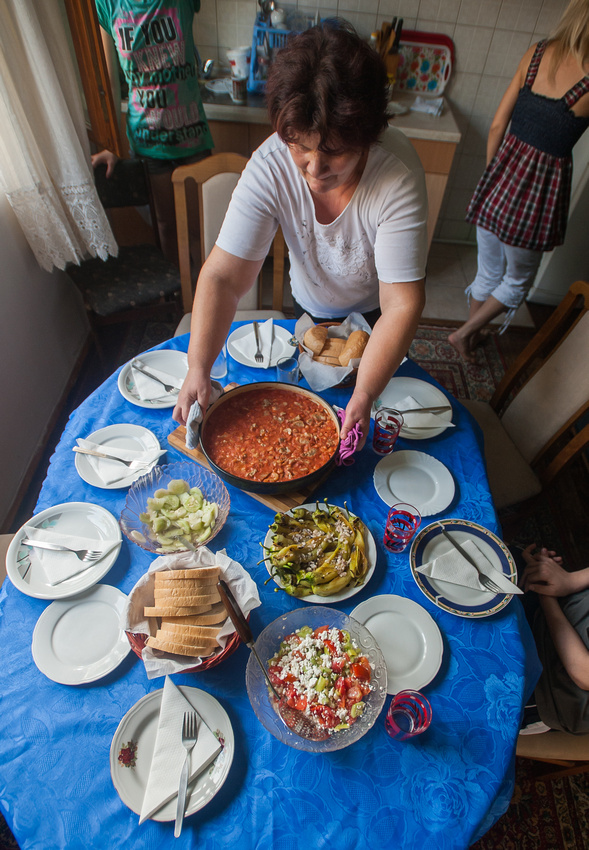
Time for the parade number: Dada Katas homemade ”Tavcé gravce”, a kind of baked beans that often are served with sausages – but this time with meat. Fantastically flavorful. White bread is also a must on the Macedonian dining table.

Evening of Gjorce.
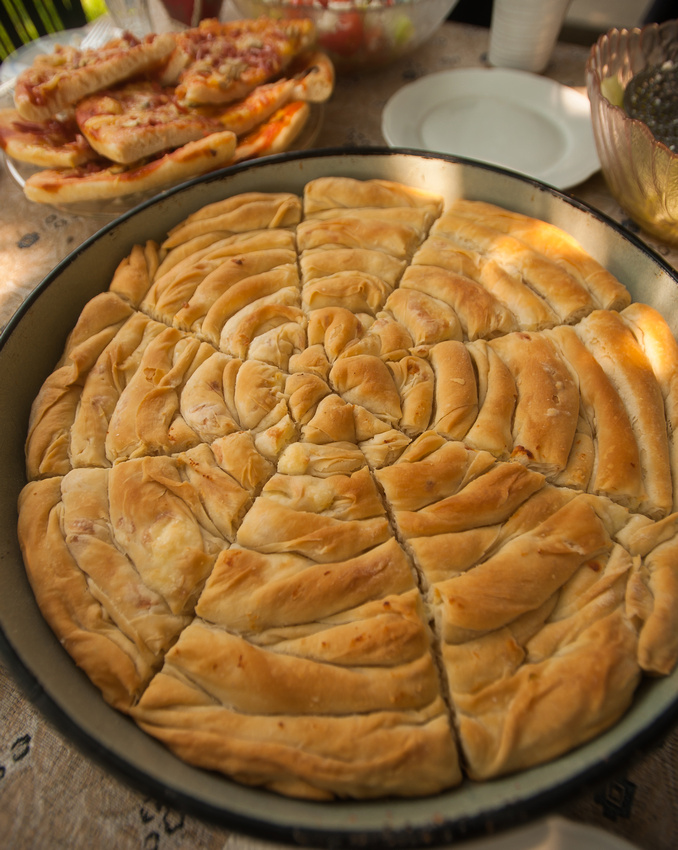
Next day: much work was laid down by the host people to make this specialty "Pita so sirenje" – a sort of pie made of rolled thin dough filled with white cottage cheese.
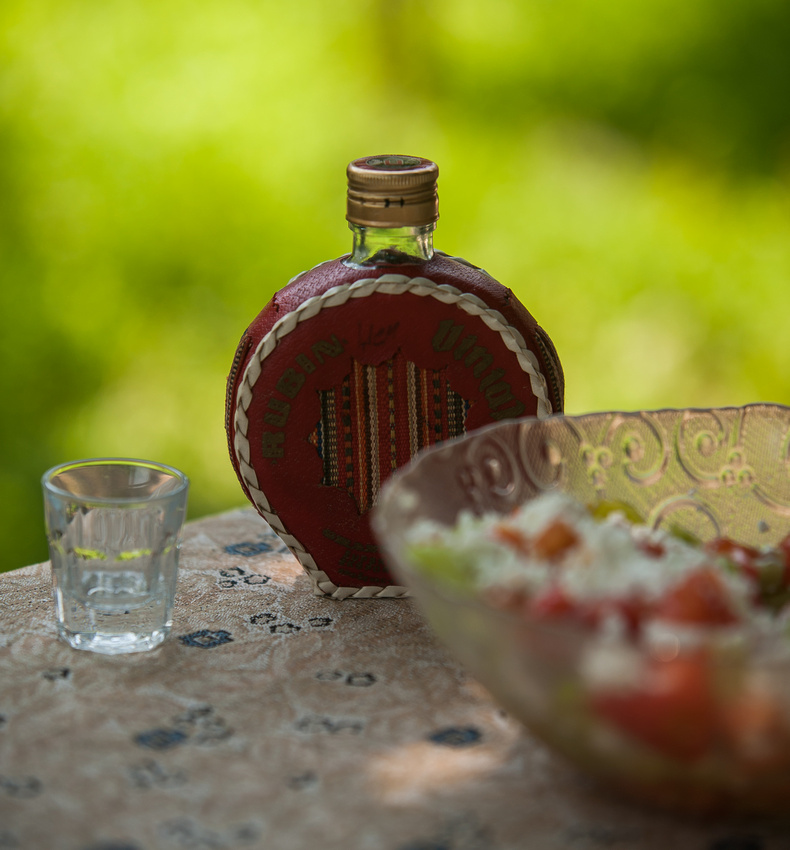
That was preceded by šopska salata and a dash rakija.
Mnogu vi Blagodaram, for these days!
]]>
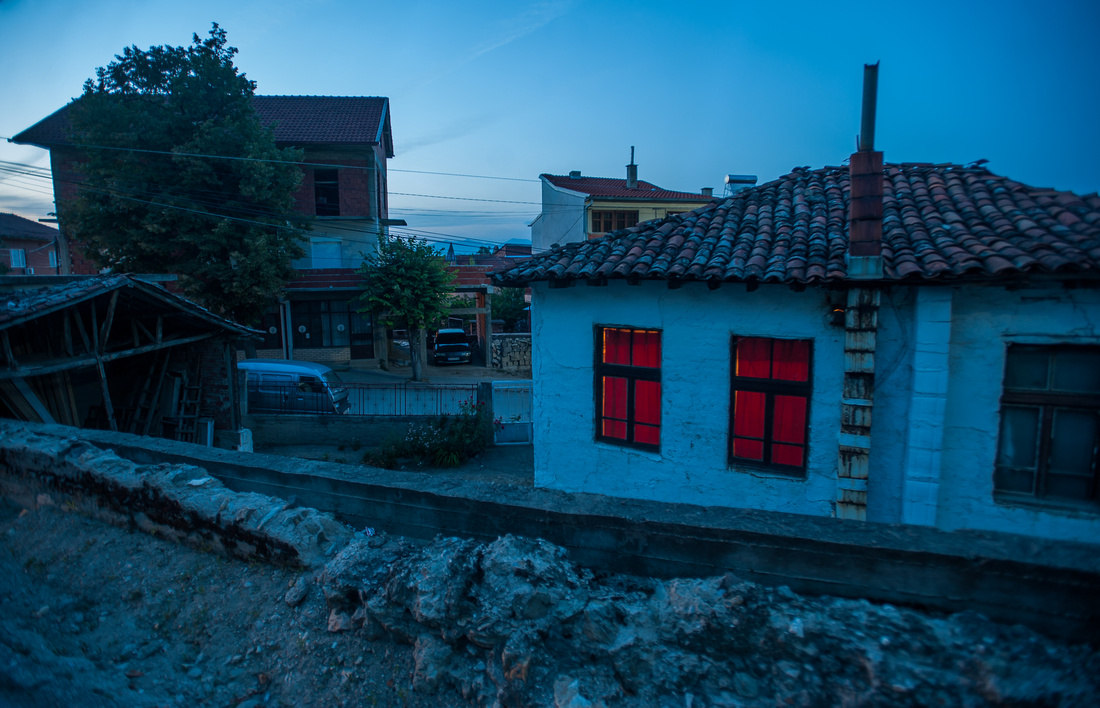 When the first lights come on in the evening, somewhere in the Old Strumica.
When the first lights come on in the evening, somewhere in the Old Strumica.
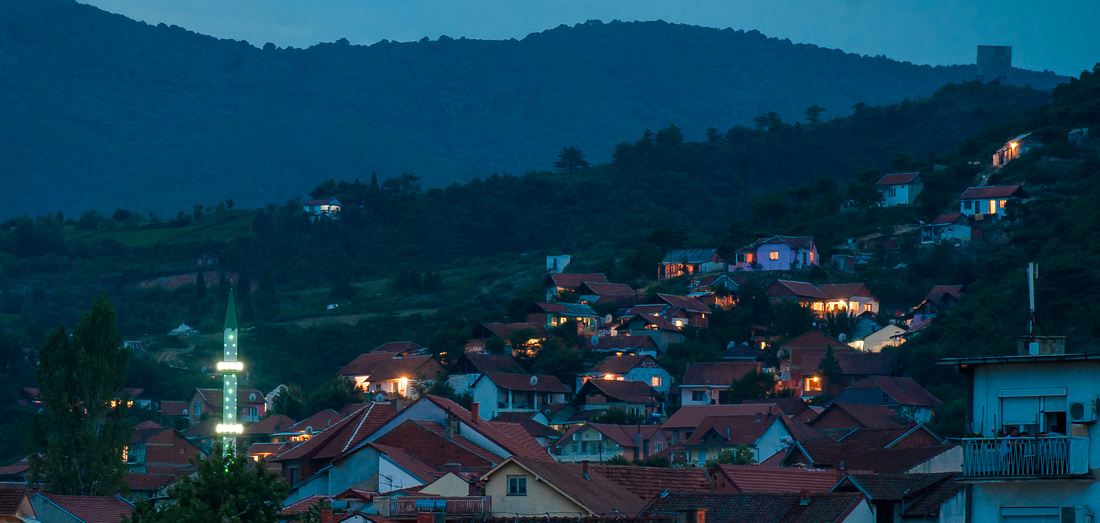 With views of the Roman town and its mosque and minaret.
With views of the Roman town and its mosque and minaret.
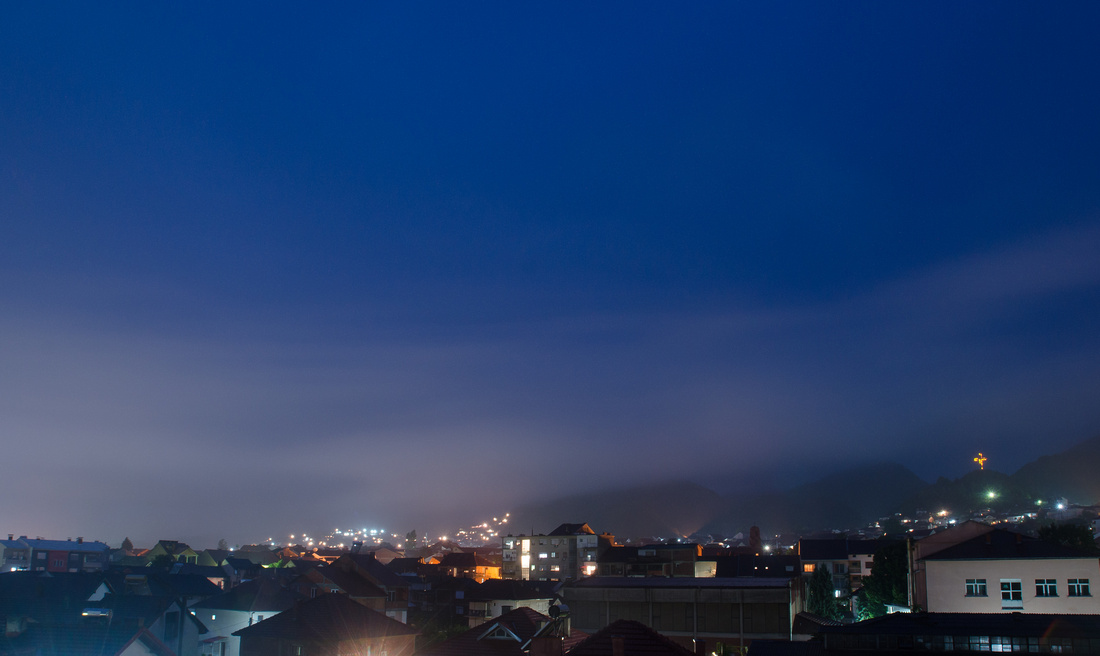 Strumicas characteristic hills are half enveloped in clouds, just after a rain storm.
Strumicas characteristic hills are half enveloped in clouds, just after a rain storm.
 Dive Shops are almost on every corner in the town, as well as conversational people.
Dive Shops are almost on every corner in the town, as well as conversational people.
 Empty of people at 22 dekemvri, outside the tobacco factory.
Empty of people at 22 dekemvri, outside the tobacco factory.
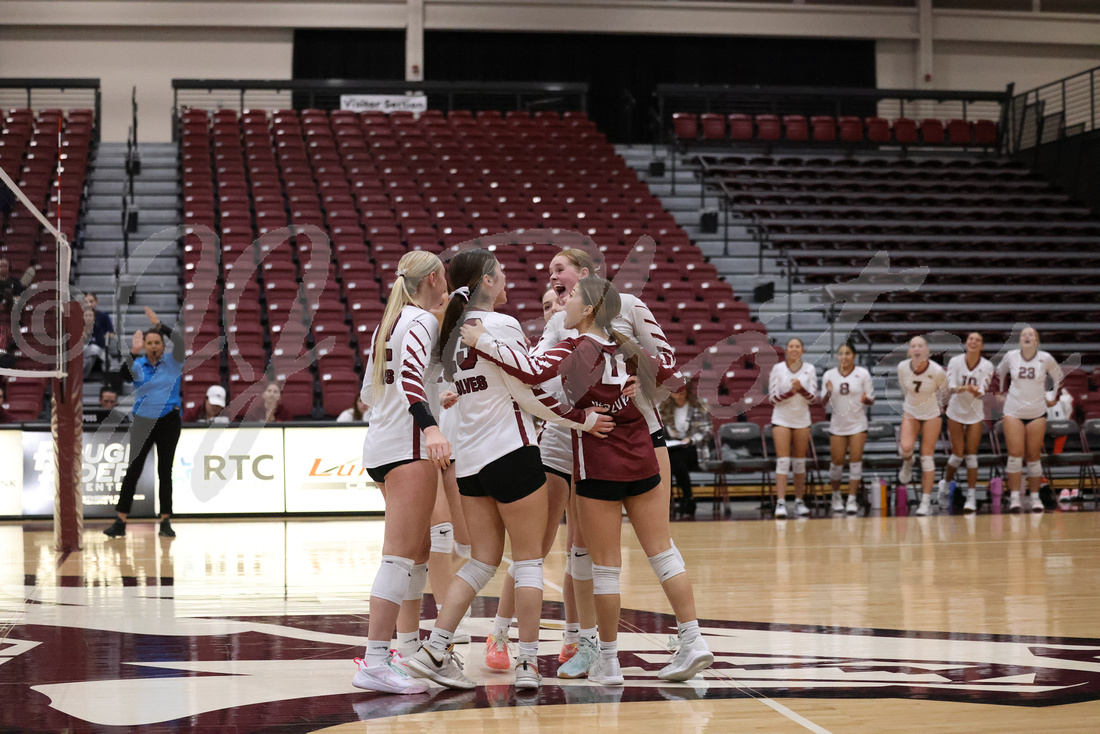 Evening traffic on the mainroad Bulevar Marsal Tito
Evening traffic on the mainroad Bulevar Marsal Tito
 Step on it!!
Step on it!!
]]>
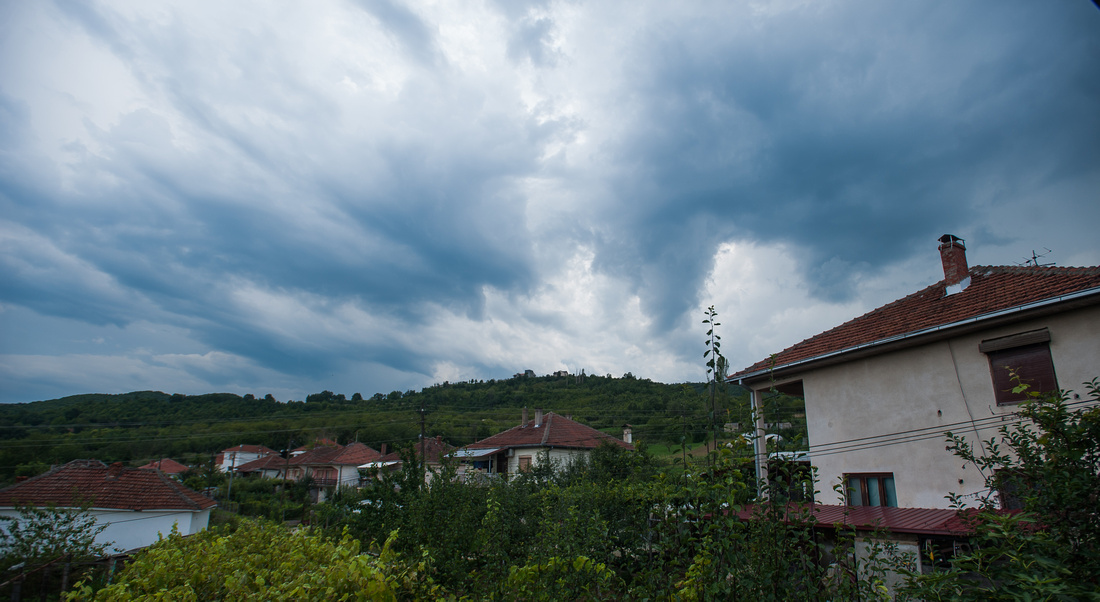 The houses are spread across a hilly, green landscape with many farms in the village Zelenikovo. The villiage is also the seat for the municipality, with the same name, with more than 4000 inhabitants. To the village, which is located just south of Skopje one easily travel with Skopjes local buses..
The houses are spread across a hilly, green landscape with many farms in the village Zelenikovo. The villiage is also the seat for the municipality, with the same name, with more than 4000 inhabitants. To the village, which is located just south of Skopje one easily travel with Skopjes local buses..
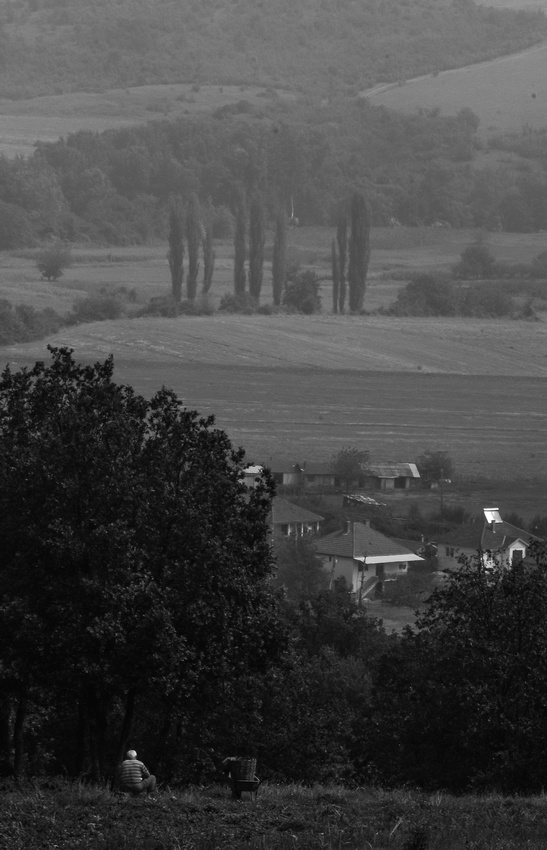
Meditation, work or pause?
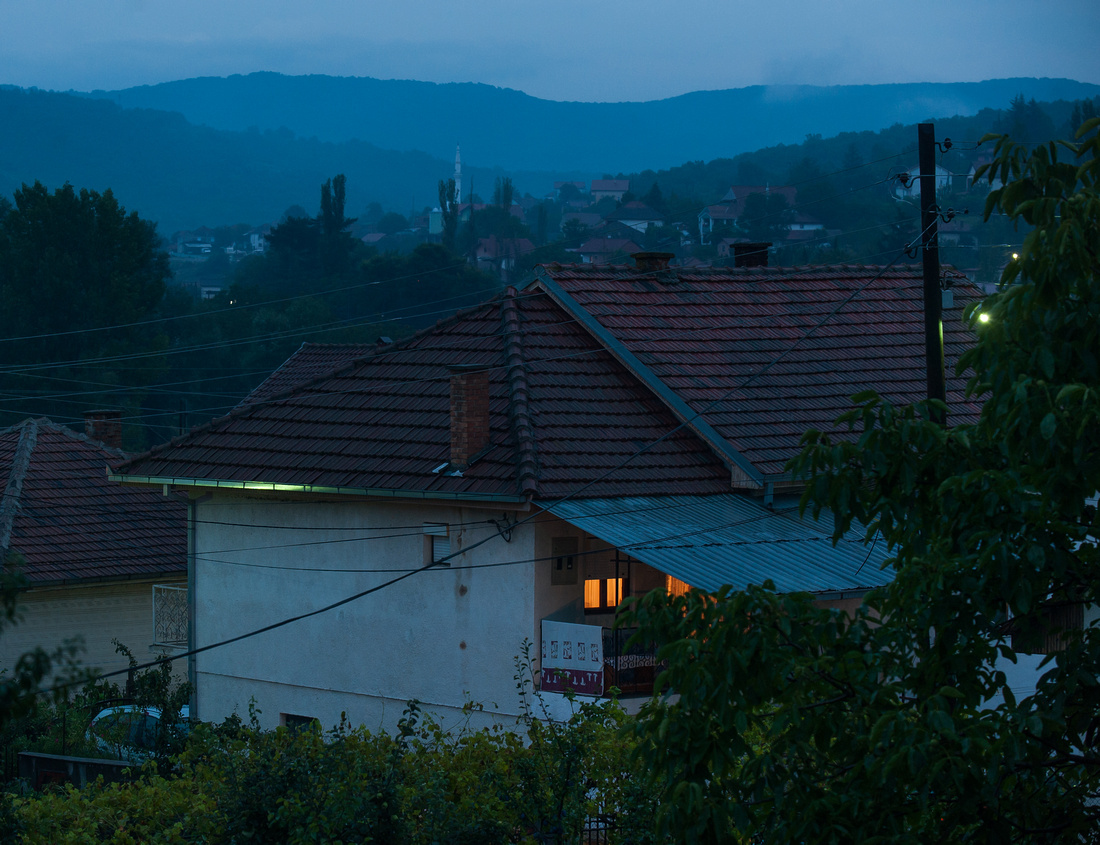 As in many other Macedonian villages and cities, Zelenikovo has both Christians and Muslims, and prayers from a minaret (in the background) are spread out over the evening landscape.
As in many other Macedonian villages and cities, Zelenikovo has both Christians and Muslims, and prayers from a minaret (in the background) are spread out over the evening landscape.
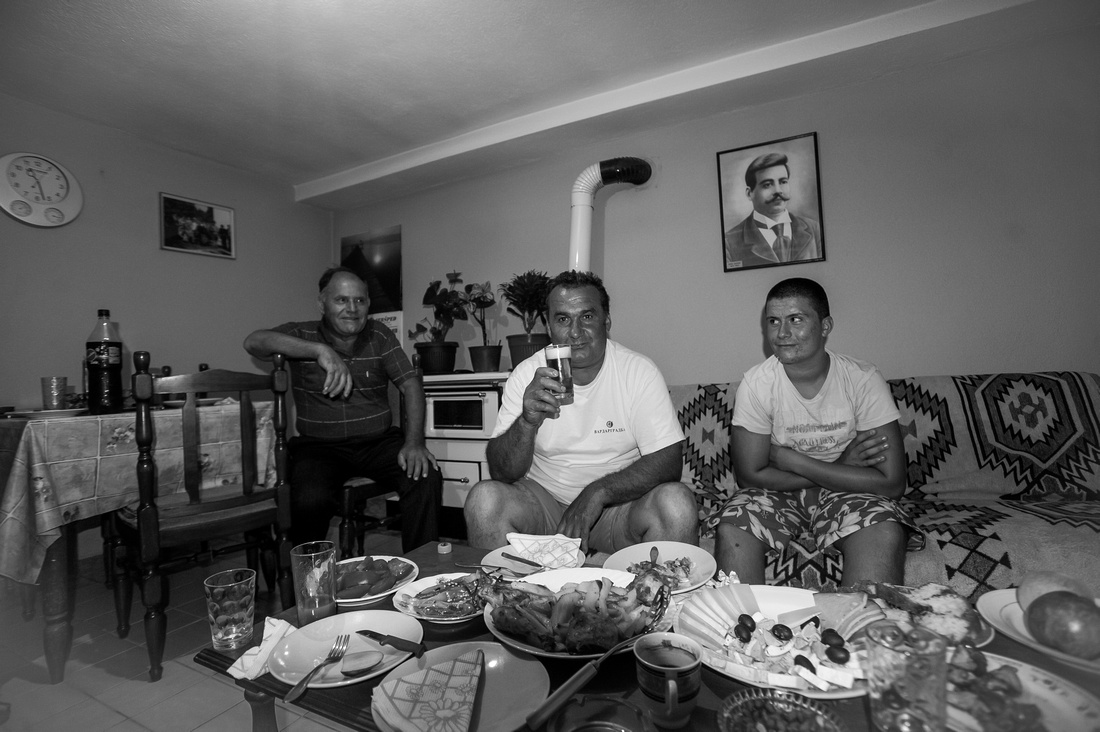 Something good in the glass and various mezes (small diches) on the table, and in the company of friends and relatives is a given thing. National hero GoceDelcev, of course, is also present.
Something good in the glass and various mezes (small diches) on the table, and in the company of friends and relatives is a given thing. National hero GoceDelcev, of course, is also present.
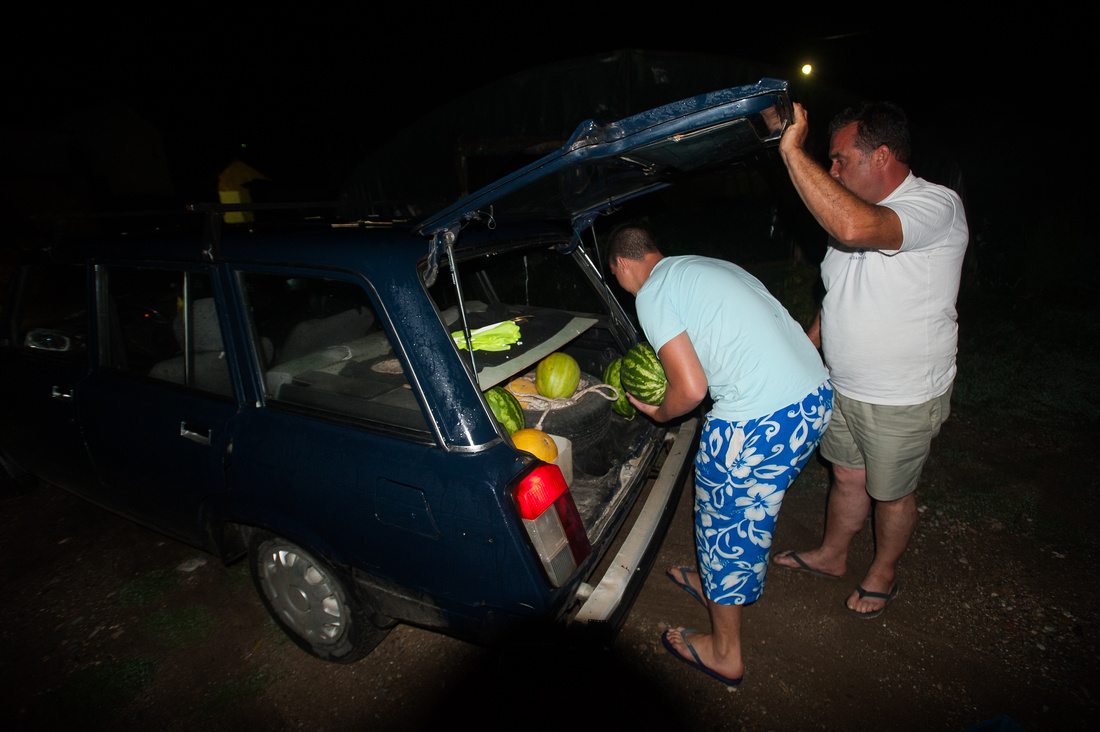 It is the season for watermelon.
It is the season for watermelon.
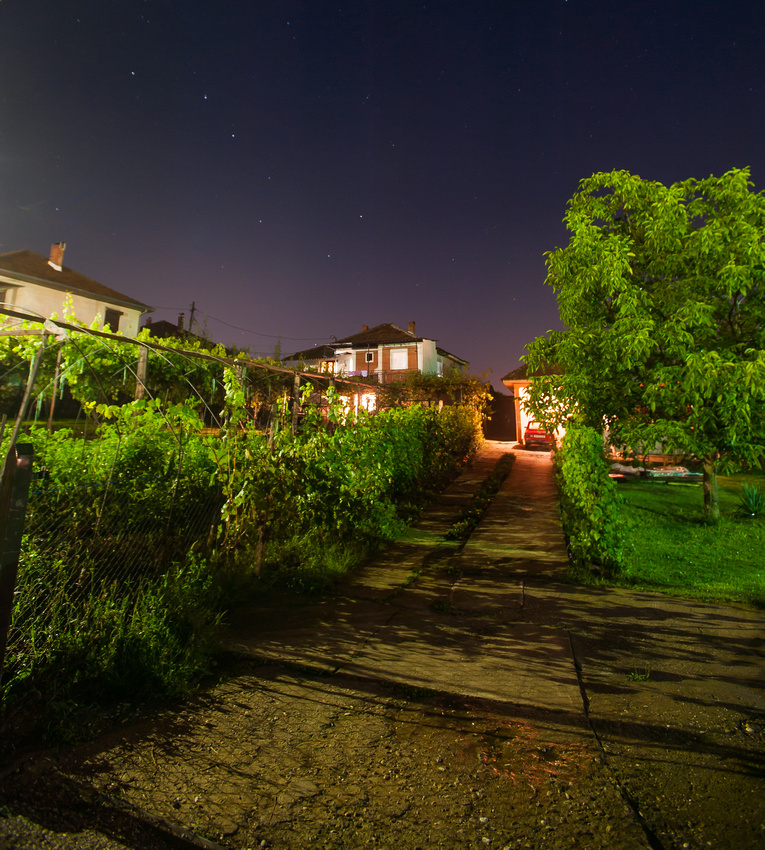
The Big dipper above Zelenikovos houses, yards and vines plants this night
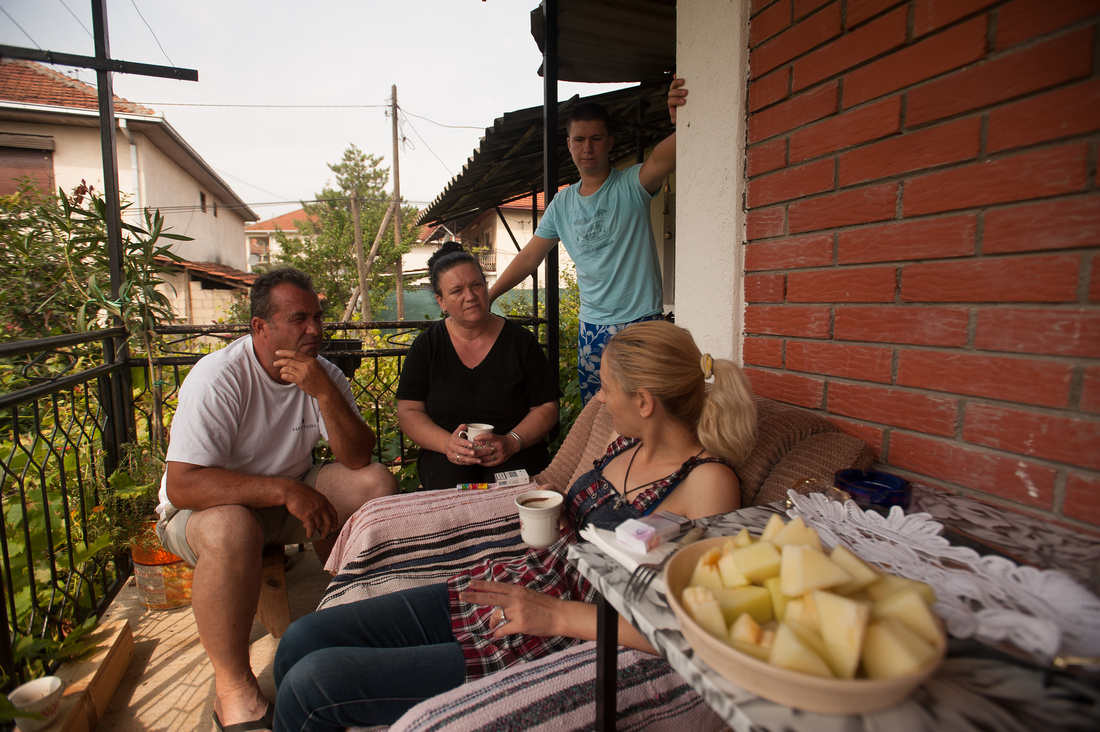
The terrace is an important place in many Macedonian homes, also here in this hospitable Zelenikovo family.
]]>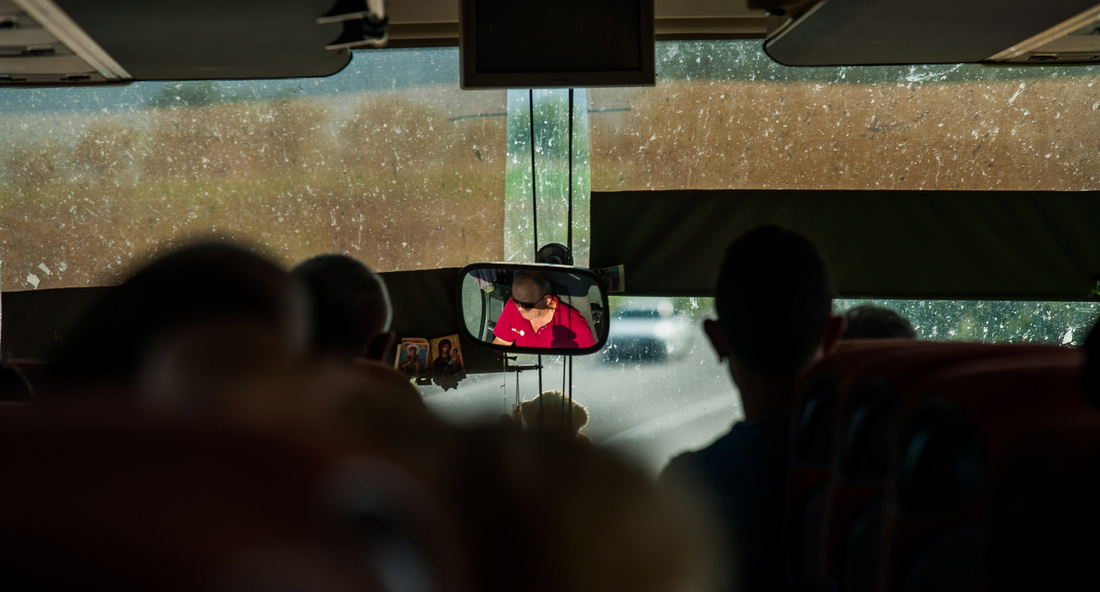 Drivers and others who rely on religious images more than safety regulations, such as wearing a seat belt, or to avoid stressful overtaking, is unfortunately all too common, in many places in southern Europe. This driver however drove good.
Drivers and others who rely on religious images more than safety regulations, such as wearing a seat belt, or to avoid stressful overtaking, is unfortunately all too common, in many places in southern Europe. This driver however drove good.
 Children playing in the town of Stip in the eastern part of the country, or is it a burglary? :)
Children playing in the town of Stip in the eastern part of the country, or is it a burglary? :)
 Fellow traveller relaxes but miss perhaps the occasional sight outside the window.
Fellow traveller relaxes but miss perhaps the occasional sight outside the window.

Lines, shapes and colors outside a road restaurant.
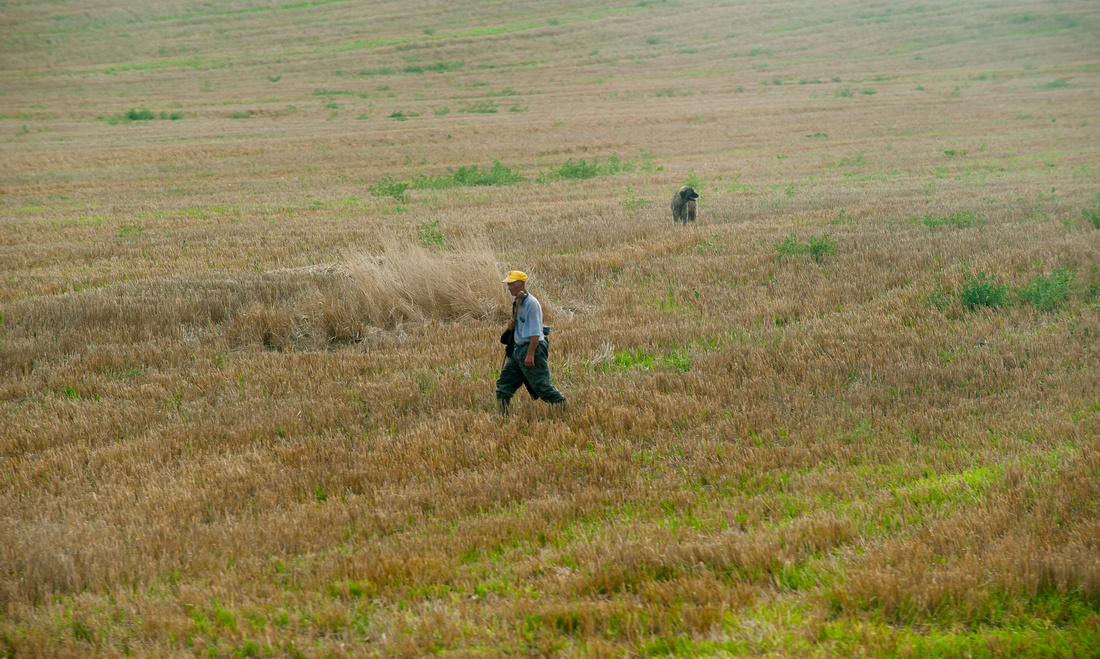
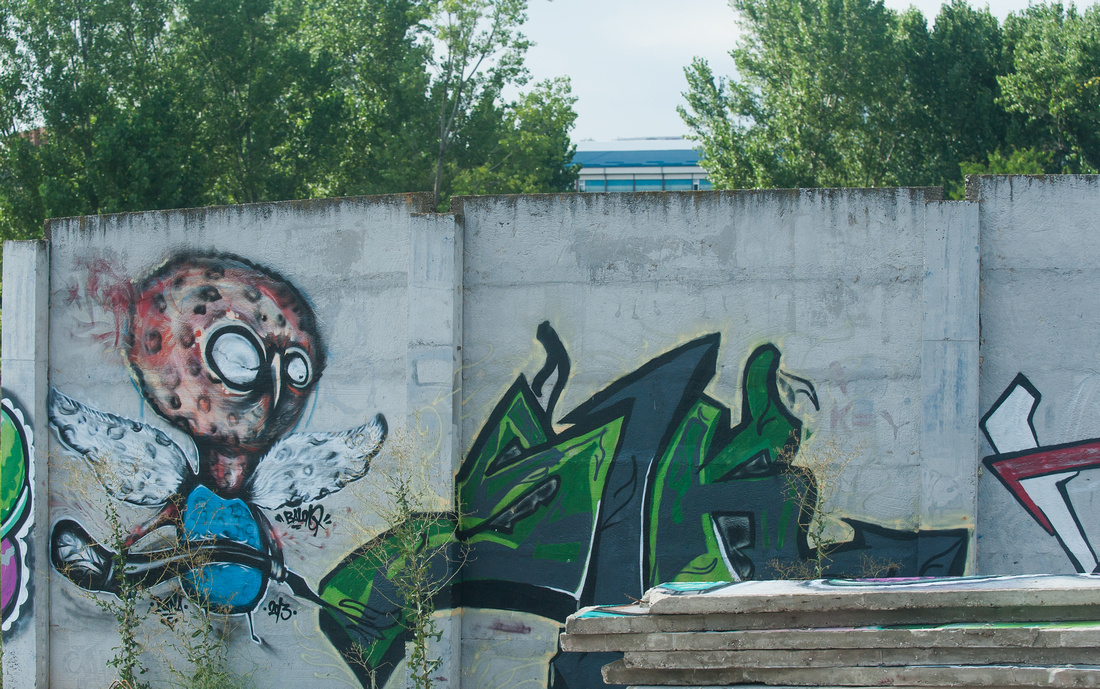 A work by an artist or a vandal, judge for yourself.
A work by an artist or a vandal, judge for yourself.

Large crosses in metal, mounted on high cliffs is a very common sight in the country.
 Children playing on the street. They jump up, run ten meters, throw themselves down on the slopes, jumps up again and repeats.
Children playing on the street. They jump up, run ten meters, throw themselves down on the slopes, jumps up again and repeats.
It's still raining here in Strumica and the temperature has dropped down towards 20-22, after the last days thunderstorm. Yesterday the storm was waiting behind the town's hills, for hours. Then suddenly, she climbed over the barrier and threw herself across town with thunderous voice and lightning in all directions - and gave me a chance to catch a few glimpses of her.
]]>
 Strumica seen from above in the evening
Strumica seen from above in the evening
]]>
English
There have been many voices, for and against, Skopje's new town centre, filled with new momuments and buildings. Some of the voices against the project, called"Skopje 2014" says: Kitsch at a high level, eyesore, improperly used money, excessively nationalism or even historical falsification. Developing for the country, the city and the hospitality industry and a major facelift of the city says some other. I have with these fresh pics from Skopje no intention to take a position on these issues, but just want to note that from a photographic perspective it is a great source, bailing out. I just stand for the quality of my own photographic works, and finds that I, as a visitor and a professional photographer thrives with the camera in hand - in the new Skopje.
]]>
A picture - from Strumica, last week. In this kind of picture is the trick to make the exposure for the highlight. Afterward you may have to lift the shadows a little if they are to massive black.
]]>
People moves across Strumicas main square, still worn winter jackets this late march day. While the afternoon sun highlights the oversized advertising boards and in the background, and two homeless dogs are searching for food.
Photo: Violeta Andonova
]]>The Macedonian flag flies in the light breeze and many people are out for a walk, fill the cafe chairs and thrive in the sunny weather, a day in early spring 2014. The trees are still bare and In the background, boasts one of all the high mountains that surround the Strumica valley.
Svenska
Ögonblicket är: 2014-03-12 klockan 15:20. Den Makedonska flaggan vajar i den lätta brisen och folk är ute på gatorna, fyller caféstolarna och trivs i det soliga vädret, den tidiga våren 2014. Träden är fortfarande kala, och i bakgrunden ståtar ett av alla de höga berg, som omger strumicadalen.
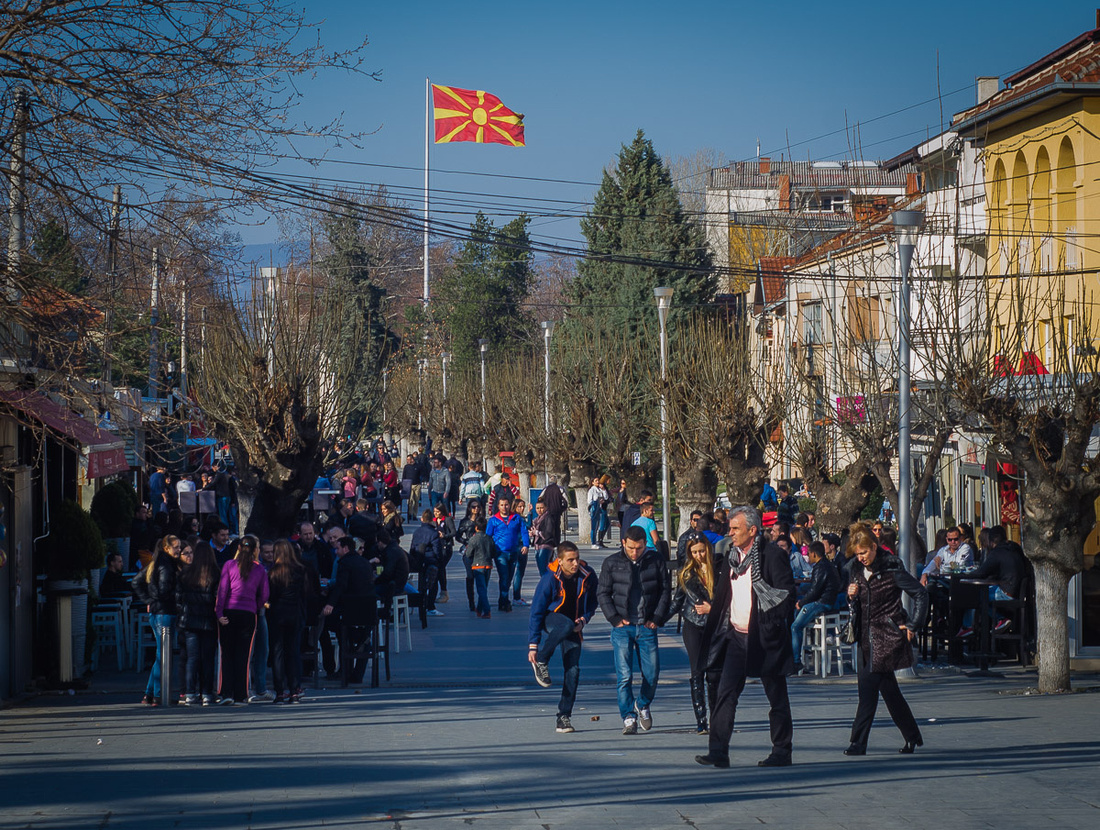
|
Share? If you liked the post, feel free to comment it here, or share it, using buttons above. Buy this/theese pictures? [email protected] Print around A4 - 50 Euro. Or choose from the archive. Put the searchbox to a test. Hire me for a job? 11 years in the business, more than 100 (satisfied) customers. Wedding- corporation, report photography and more. |
I write in Swedish, translate with Google and correct manually, to the best of ability, but it happened that I missed some English lessons, back in the school days. Please, ignore my mistakes, but please tell me if you find a large error.
]]>
Svenska
I Sverige köper man öl i enda sorts butik – Systembolaget. Där finns ofta ett brett utbud. Man hittar tjeckiska delikatesser som Zlatopramen, Starobrno, Breznak eller Krusovice. Belgiska ale som Chimay, Leffe och kungen: Duvel. Prova något ovanligt? Thailändska, karibiska mm – inga problem. Flaskor från engelska, irländska eller svenska småbryggerier trängs i hyllorna och då och då tas det in nya sorter. Så är man, som jag, bortskämd med detta och kommer till Republiken Makedonien, måste man tänka om en smula och vara nöjd med mindre. Jag beundrar egenskapen förnöjsamhet men samtidigt, antar jag att, det inte skulle skada om de kom med önskemål till handlarna, för att få upp utbudet. Som jag skrev i det förra inlägget är utbudet i barer och butiker mycket magert (i alla fall där jag varit hittills). Det är ingen idé att gå runt och leta i olika butiker nästan alla går runt på i stort sett samma sortiment. Där finns 3-4 importerade alldagliga ljusa lager som Amstel, Heineken eller Tuborg. Där finns kanske en importerad vattnig bulgarisk och 2-3 vattniga Makedonska. Men som tur är finns överallt en riktigt bra inhemsk ljus lager: Skopsko. (Jag får inte betalt för det här ☺) På en bar kostar en liten Skopsko runt en euro och i butiken hälften. ”Med Skopsko är allting möjligt” lyder deras slogan. Men nja.. det är i alla fall möjligt att slippa vattniga tråkiga ljusa lager utan smak. Nazdravje!!
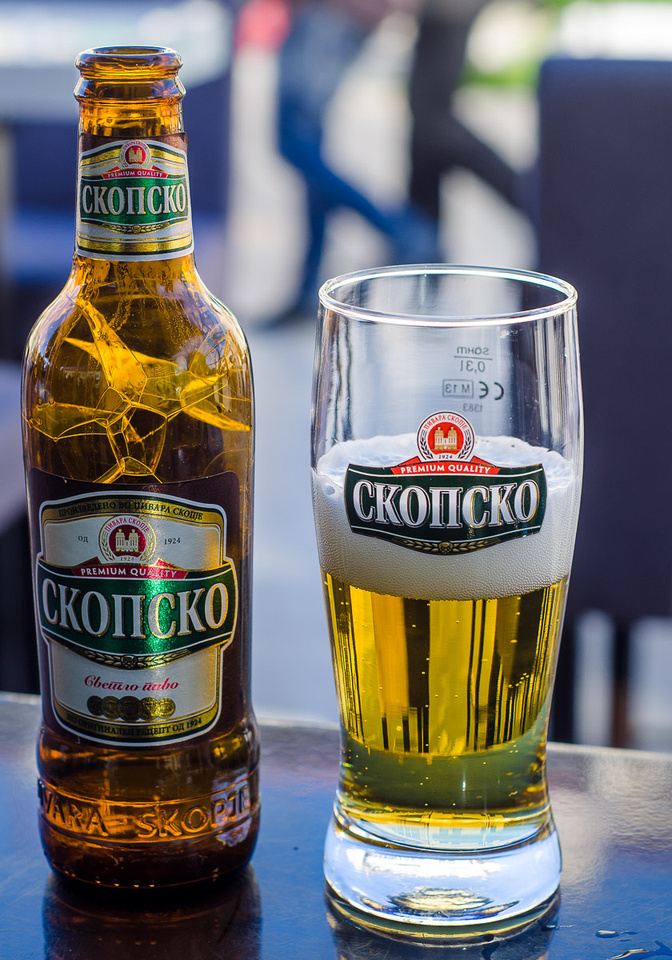
|
Share? If you liked the post, feel free to comment it here, or share it, using buttons above. Buy this/theese pictures? [email protected] Print around A4 - 50 Euro. Or choose from the archive. Put the searchbox to a test. Hire me for a job? 11 years in the business, more than 100 (satisfied) customers. Wedding- corporation, report photography and more. |
I write in Swedish, translate with Google and correct manually, to the best of ability, but it happened that I missed some English lessons, back in the school days. Please, ignore my mistakes, but please tell me if you find a large error.
]]>
In the Republic of Macedonia, where I spent almost 3 months, so far in 2014, the average price level is very, very low. Prices are low - for a Swede for an example. I have not done an exact price comparison, only compare broadly, and give examples. Some approximations, others precise. Many items in a typical grocery store in The Republic of Macedonia, is slightly below half price compared to Sweden. Or maybe I shall say in the town Strumica, compared to Kiruna in Sweden - "my places". Food prices can vary greatly in different Swedish regions, maybe in Macedonia too. Since the 200 euro is a common payment in The Republic of Macedonia, is understood that half the price compared to Sweden (where the payment are many times higher) is expensive for residents. Some examples of it is: minced beef meet (which unfortunately has no taste in Macedonia), Beer (their best), toilet paper, chocolate of acceptable quality, nuts, milk, cold cuts. But then there are goods and services that have an amazing, incredible low price, which people I talked to in Strumica, do not seem to understand. A few examples are:
- Men's haircuts . Strumica : 1.5 to 3 Eu - Kiruna 25 - 50 Eu
- Inserting a new tooth. Strumica 50 Eu - Kiruna 2200 Eu ( at my dentist )
- Bread (sliced large loaf). Strumica : 0.5 Eu - Kiruna 3 Eu
- Pastry and confectionery (but hard to find quality and taste in Strumica ) 0.15 Eu - 0.45 Eu - Kiruna 3-5 Eu
- Dinner in a good restaurant, two dishes with drink 3-4 Eu - Kiruna from 25 Eu
- Lunch 1 dish + salad and drink 3-4 eu - Kiruna 9 euros ( a common price )
- Taxi fixed price within the town of Strumica 0.8 Eu - Kiruna from 10-12 euro
- Cheeseburger with bread (100 g) Strumica 0.8 Eu - Kiruna ( 90 g ) from 3.2 Eu
Svenska
I republiken Makedonien, var jag hittills tillbringat nästan 3 månader under 2014, är den genomsnittsliga lönenivån väldigt, väldigt låg. Priserna är också låga - för t.ex. en svensk. Jag har inte gjort en exakt prisjämförelse utan tänker bara helt kort jämföra i stora drag, samt ge några exempel, vissa ungefärliga, andra exakta. Många varor i en vanlig matvarubutik i Republiken Makedonien, ligger något under halva priset mot Sverige. Eller kanske ska jag säga Strumica i Makedonien jämfört med Kiruna i Sverige - "mina orter"- eftersom matpriser kan variera mycket i olika svenska orter, förmodligen i Makedonien också. Eftersom 200 euro är en vanlig lön i Republiken Makedonien förstår man att halva priset mot Sverige är dyrt för invånarna. Några exempel på det är köttfärs (som i och för sig inte har någon smak i Makedonien), Öl (deras bästa), toalettpapper, choklad av acceptabel kvalité, nötter, mjölk, pålägg. Men sedan finns som sagt också varor och tjänster som har ett fantastiskt, otroligt lågt pris, vilket folk jag pratat med i Strumica, inte tycks förstå. Några exempel:
- Vanlig herr-hårklippning. Strumica: 1,5 - 3 eu Euro - Kiruna 25- 50 eu
- Sätta in en helt ny tand Strumica 50 Eu - Kiruna 2200 Eu (hos min tandläkare)
- Limpa (skivad stor) Strumica: 0,5 Eu - Kiruna 3 Eu
- Bakelse på konditori (dock svårt att hitta kvalité och smak i Strumica) 0,15 EU - 0,45 Eu - Kiruna 3-5 Eu
- Middag på bra restaurang, två rätter med dryck 3-4 Eu - Kiruna från 25 Eu
- Lunch 1 rätt + sallad och dryck 3-4 eu - Kiruna 9 euro (vanligt pris)
- Taxi fast pris inom staden Strumica 0,8 Eu - Kiruna från 10-12 Eu
- Ostburgare med bröd (100 gram) Strumica 0,8 Eu - Kiruna (90 gram) från 3,2 Eu
Jag har endast hittat en sorts produkt som är dyrare än i Sverige - kosttillskott för tränande, t.ex. protein, gainer och liknande. Uppskattningsvis 20 % dyrare.
En följd av de låga inkomsterna är att Makedonierna är mycket duktiga på att klara sig på litet, de är förresten också ofta generösa. En dålig konsekvens är att sortimentet oftast är väldigt magert och i vissa fall även kvalitén. Jag tror att det beror på att eftersom få människor har det gott ställt, vågar inte handlarna ta in något exklusivt och dyrt, som t.ex. en fin singelmalt whiskey, utan alla tar in samma beprövade kort - dvs ett fåtal billliga blended whiskey (som fortfarande är rätt dyra för folk här). På så sätt vänjer sig konsumenterna vid samma varor, och ingen frågar till slut efter något annat och handlarna får inget tryck på sig att hitta en egen nisch. Det är min teori i alla fall. Nästan alla affärer har nästan exakt samma sortiment, så det är ingen idé att ta sig till en annan del av stan till någon butik som verkar orginell - det är den inte. Vet du mer om utbud och efterfrågan i fattiga ekonomier, eller bara har en tanke? Vore intressant med en kommentar.
|
Share? If you liked the post, feel free to comment it here, or share it, using buttons above. Buy this/theese pictures? [email protected] Print around A4 - 50 Euro. Or choose from the archive. Put the searchbox to a test. Hire me for a job? 11 years in the business, more than 100 (satisfied) customers. Wedding- corporation, report photography and more. |
I write in Swedish, translate with Google and correct manually, to the best of ability, but it happened that I missed some English lessons in school. Please, ignore my mistakes, but please tell me if you find a large error.
]]>
By setting the aperture at the lowest number, here f2:8, only what you put focus on will be sharp. The term for this is, short depth of field. The effect will be even stronger if you are zooming. By setting the aperture at the biggest number, you will get the opposite result - every pigeon will be sharp. Try it, its easy and in the small photo dictionary, that you will find in the category list, you can look up unfamiliar terms.

|
Share? If you liked the post, feel free to comment it here, or share it, using buttons above. Buy this/theese pictures? [email protected] Print around A4 - 50 Euro. Or choose from the archive. Put the searchbox to a test. Hire me for a job? 11 years in the business, more than 100 (satisfied) customers. Wedding- corporation, report photography and more. |
I write in Swedish, translate with Google and correct manually, to the best of ability, but it happened that I missed some English lessons, back in the school days. Please, ignore my mistakes, but please tell me if you find a large error.
]]>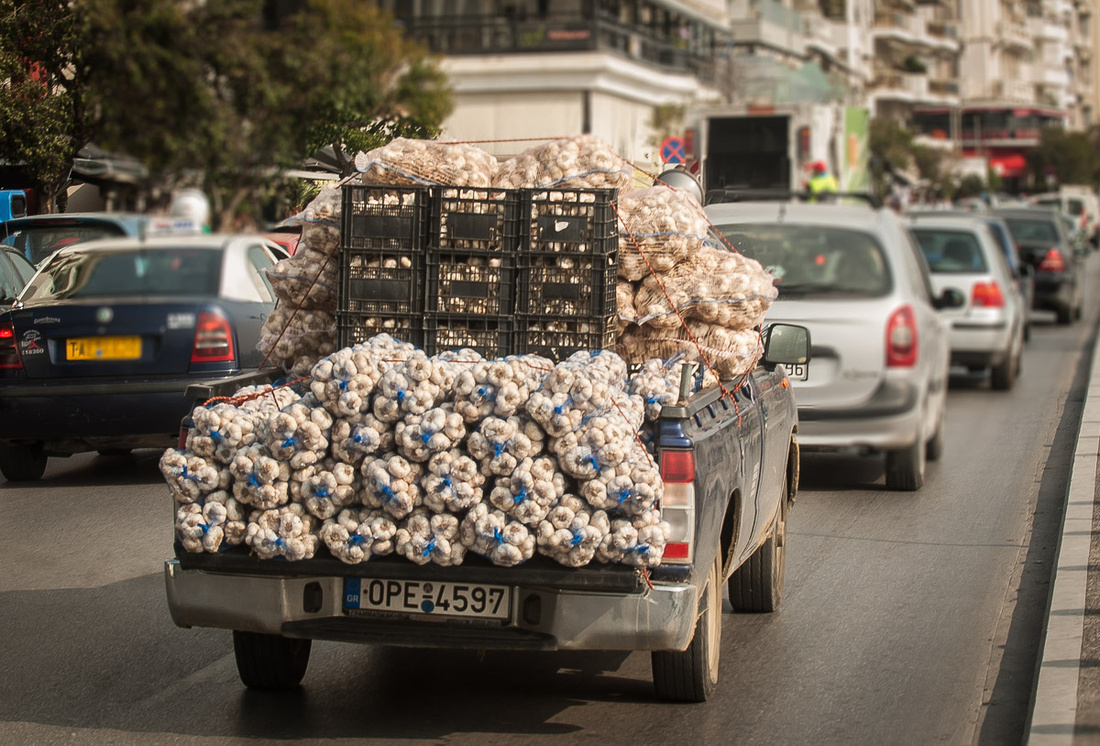
1) The guy who intend to destroy the entire city's breath.


3) "If we are going to hire you, you must be mentally prepared to go all the way up in the job and the products."

4) Missunderstanding of the rule: Largest first.
|
Share? If you liked the post, feel free to comment it here, or share it, using buttons above. Buy this/theese pictures? [email protected] Print around A4 - 50 Euro. Or choose from the archive. Put the searchbox to a test. Hire me for a job? 11 years in the business, more than 100 (satisfied) customers. Wedding- corporation, report photography and more. |
<a href="http://www.bloglovin.com/blog/12099767/?claim=umg4d32z4wd">Följ min blogg med Bloglovin</a>
]]>Yet another work of art from Thessaloniki, by one to me, unknown painter. Pointing the camera upwards are not always giving undesirable results, no matter what anyone old rule says. By pointing the camera either up or down, you get lines to tilt. Houses seem to fall backward or severe lean, which is not as successful at the official house portrait or real estate photograph, where you need to get everything to look straight and tidy. Other times, you can use the effect to create a breathtaking and interesting perspective. All while you point the camera up or down, keep an eye on what happens with the lines, to determine if it is doing good for your image or not.
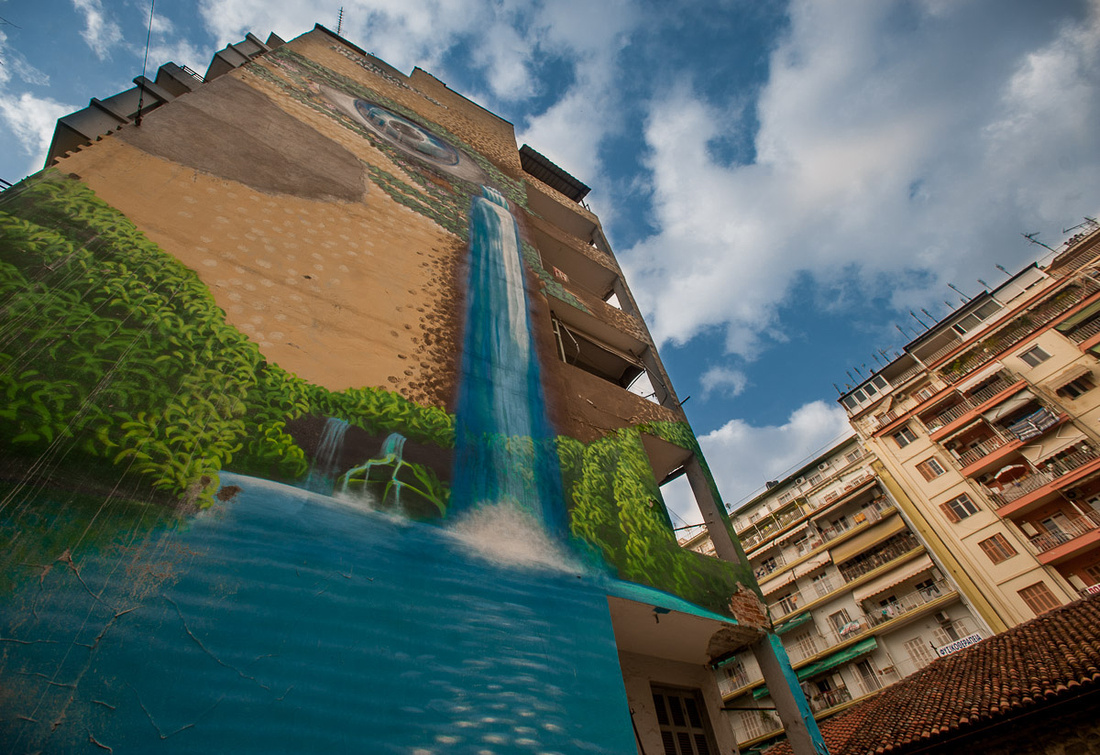
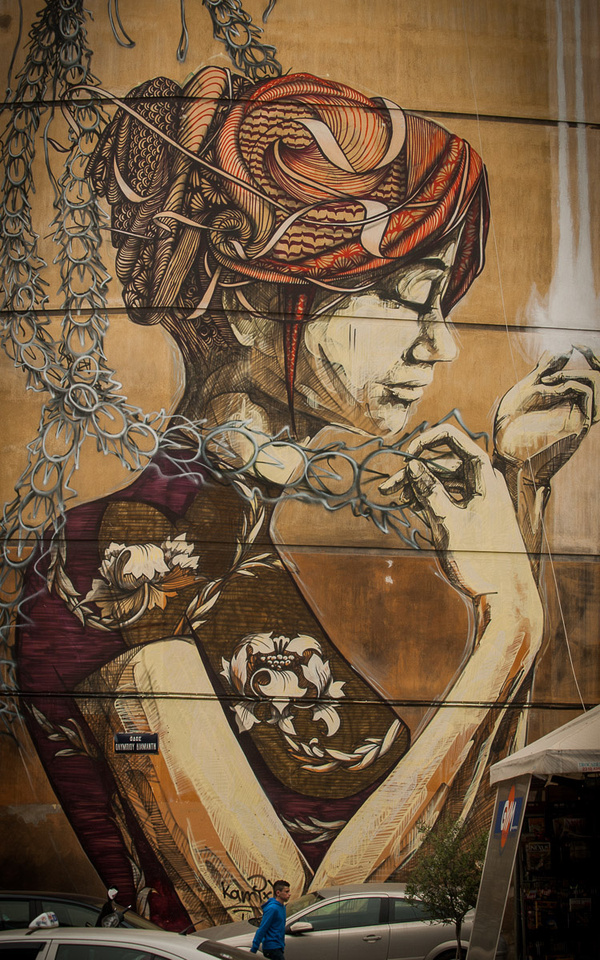
Unfortunately I do not know the names of the artists, but will mention them if I find out. I think this one is signed "Campix" or "Camix". But what a marvelous way to use a boring wall of this type, which I saw in several places during my visit in Thessaloniki last week. I will use a couple of them in my little "photography school" here.
Phototip 6 of 100 - Show the size ratio
When you want to show how large or powerful something is, you should always remember to bring a small detail along with the larger object. A classic example is to bring a box of matches in an image of things on a table, such as freshly caught fish or craft items. You can use the same principle when you eg composes a view image. A person, as here, is often effective. So: look for something of known size to bring to the viewer of your images to understand the size ratio. And when it comes to people, you just need to anticipate a little where someone goes, and wait until the person is in the right place in the image.
]]>
Traffic roars day and night along the Egnatia, Thessaloniki's main artery. The worst noise polluters are the motorcycles and the broken / misplaced fan belts - and emergency vehicle, of course. But I am not gonna complain too much, in this self-selected position in Greece's second city (about a million in the entire metropolitan area). Along with the high noise level exists also, thankfully, a high service mind level and almost all employees in cafes, shops, bars and similar answers a definite "Yes!" to the question "Do you speak English" and conversing then unhindered and helpful.
Continuing on the theme of high/low, prices have briskly approached the Swedish. A cappucino at "Starbucks" for example is on the loose in 2 to 4 euros depending on size and strength, which unlike the Republic of Macedonia, where one usually pays under 1 euro. This Starbucks, near the hotel is almost always nearly empty, while a much cheaper coffee / sandwich hangout, wall to wall, rarely have free tables. Most likely a manifestation of the economic crisis. I did however like Starbucks restful concept, with comfortable sofas and soft music, such as jazz on a low volume, paired with a qualitative range, and well-functioning wifi. So I contribute with buying expensive coffe and to fill one of the empty spots in the week - after first eaten a cheap sandwich at the neighboring place, of course.
When during a walk slew of down from Egnatia in the area I live, it's not long until the salty sea presents itself. Then you can follow the avenue Leoforos Niki's along the water, with its stylish 4/5 storey and a "coffee shop every few meters." The road takes one to the "White Tower", from the beginning part of the Byzantine fortress, but later Ottoman prison and place of executions. Today, landmark, museum and with magnificent views in all directions.
Already in Roman times, the city was large and important, and during the early Christian period, there was a congregation here, to which the Apostle Paul wrote two letters, which later became a part of the Bible. As in Rome haunt the history of the attention and strollers "stumble over" excavation sites, ruins, triumphal arches, town walls and churches from different eras - from eg Roman, and Byzantine and Ottoman-mentioned time. Normally, I would propably bored you out with a lots of such information - but thank the fever that you don´t have to see it.
For my stay here was right immobile due problem with a tooth and associated fever. Until the end, however, I awoke and took me around a bit, with camera in hand and can show you some glimpses from the "Little Istanbul", which some people called the city because its mix of eras, and of the East and West. And more pictures and also phototips from Thessaloniki will be up in the following posts.
The text is originally written in Swedish, translated with Google and manually checked best of my ability - but is not perfect.
Svenska
Några intryck från mitt första besök i grekiska Thessaloniki, under förra veckan.
Trafiken vrålar dag som natt längs Egnatia, Thessalonikis huvudpulsåder. De värsta ljudförorenarna är motorcyklarna och de trasiga/felmonterade fläktremmarna - och uttryckningsfordonen såklart. Men jag ska väl inte klaga allt för mycket, i denna självvalda position, i Greklands andra stad (ca miljonen, hela storstadsområdet räknat). Tillsammans med den höga ljudnivån existerar också, tack och lov, en hög servicemindnivå och så gott som alla anställda i kaféer, butiker, barer och liknande svarar ett bestämt "Yes!", på frågan "Do you speak English", och konverserar sedan obehindrat och hjälpsamt.
Fortsättningsvis på temat högt/lågt, har priserna med raska kliv närmat sig de svenska. En cappucino på ”Starbucks” till exempel går lös på 2 till 4 euro beroende på storlek och styrka, vilken skillnad mot Republiken Makedonien, där man oftast betalar under euron. Det är talande att Starbucks, nära hotellet nästan alltid är så gott som tomt, medan ett betydligt billigare kaffe/smörgåshak, vägg i vägg, sällan har lediga bord. Högst sannolikt en yttring av den ekonomiska krisen. Jag gillar dock Starbucks vilsamma koncept med sköna soffor och lugn musik, t.ex. jazz, på låg volym, parat med ett kvalitativt utbud, och väl fungerande wifi. Så jag bidrar genom att köpa dyrt kaffe och fylla en av de tomma platserna under veckan - efter att först ätit en billig macka på grannhaket, förstås.
När man under en promenad svänger av, nedåt, från Egnatia i område jag bor, dröjer det inte länge förrän havets salta bränningar presenterar sig. Sedan kan man följa hamngatan Leoforos Nikis, med dess eleganta 4/5 våningshus och ”ett kafé varannan meter”. Vägen tar en till ”Vita tornet”, från början del av Bysantinskt befästningsverk men senare Ottomanskt fängelse och avrättningsplats. Idag landmärke, museum och med magnifik utsikt åt alla väderstreck.
Redan på romartiden var staden stor och betydelsefull och under den första kristna tiden fanns en församling här, till vilken Aposteln Paulus skrev två brev, som senare blev en del av Bibeln. Liksom i Rom pockar historien på uppmärksamheten och flanören ”snubblar över” utgrävningsplatser, ruiner, triumfbågar, och stadsmurar och kyrkor från olika tidsepoker – från bl.a. romersk, och nämnda Bysantinsk och Ottomansk tid. I normala fall skulle jag säkert tråkat ur er med att frossa i dessa historiska detaljer – men tacka febern att ni slapp.
För min vistelse här blev rätt orörlig p.g.a. problem med en tand och tillhörande feber. Fram åt slutet kvicknade jag dock till och tog mig runt lite, med kameran i hand och kan därför visa er några glimtar från ”Lilla Istanbul”, som somliga kallat staden p.g.a. dess blandning av epoker och av öst och väst. Fler bilder och även fototips från Thessaloniki kommer upp i de närmaste inläggen.


The main avenue Egnatia.

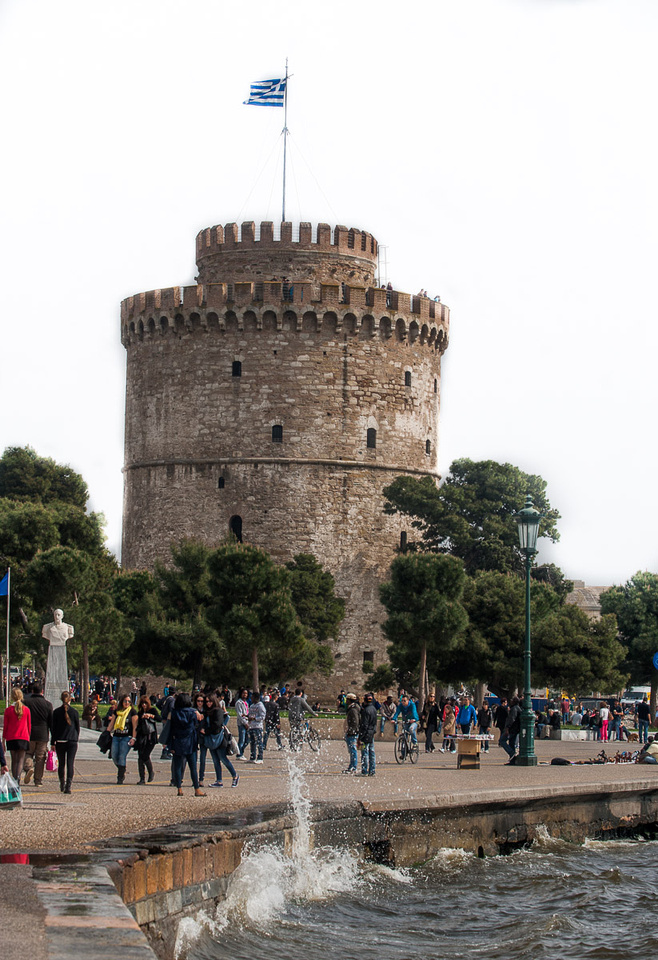
|
Share? If you liked the post, feel free to comment it here, or share it, using buttons above. Buy this/theese pictures? [email protected] Print A4 (or the closest) 50 Euro. Or choose from the archive. Put the searchbox to a test. Hire me for a job? 11 years in the business, more than 100 (satisfied) customers. Wedding- corporation, report photography and more. |
]]>
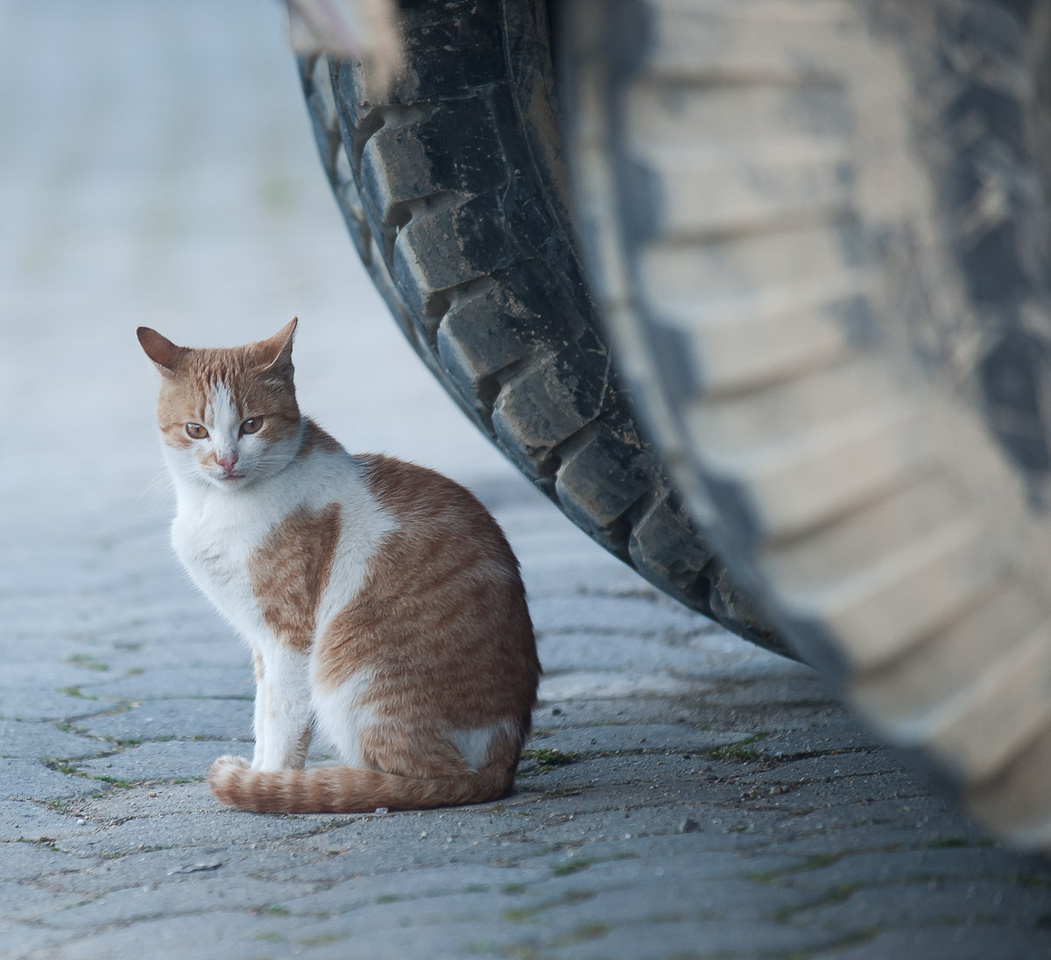
The sense of an imminent threat
But this little cat had simply sat in front of the wheel of a parked car, outside the fire station in Strumica, some week ago. (So no cats were harmed during shooting :-)
Photo Tips 5 of a 100. Composition - go down to the subject's level.
It is said that 90% of all photos taken, are from an upright and straight forward angle. In many cases, with a boring outcome. Try different angles and forget all that old controllers: "You can not shoot downwards, upwards" - or you cant do this or that. This image got the whole story and drama because of the angle. Sometimes it works the one, sometimes the other. Sometimes it even works to shoot standing up and straight forward. But with small motifs like pets and children, or even smaller like flowers or small animals/insects, it is a good idea to go down with the camera, while observing what happens to the background. Move the camera with small movements until the background looks good, without distracting elements. As for motives that risk move, it may be helpful to press the button several times, while you are getting in position for that perfect angle, then you will at least have some picture - if the subject would have the bad manner to run away, before you are done.
]]>
By looking for natural frames, you can sometimes make a commonplace motif more expressive and interesting. In this case it was easy but a framework could include furniture, trees, houses, people, you name it. Try to see through and between objects in the foreground. Take your time.

...is a village in southeastern Macedonia with about 1700 inhabitants. It is the seat of the municipality Bosilovo, which has about 14,000 residents and is located near the Bulgarian border. I took some pictures there, last Saturday that I share with you, along with some photography tips.
Phototip 3 of 100. Long exposure for movements in smoke.
Yesterday I posted a picture from Bosilovo along with a tip about using the shadows in a creative way. This one is apparently a variant of the motif, but with this composition is focuset away from the yard and give more attention to the stars and the smoke from the house. I will talk more about the composition of several tips later, but let us concentrate on the effect of chimney smoke. The principle is the same as I wrote about in the post from Kolesino waterfall the other day. For this picture, I put the camera on a tripod, using a 30 second shutter speed, aperture 9, wide angle lens, and used the self-timer. Apparently gives 30 seconds a quite good motion effect for the smoke, and at the same time appeared the stars more of the picture.
]]>
Friendly Macedonian people passed along the village streets, yesterday and wondered what on earth I was shooting in this darkness. And like so many times at home, when I approach a group of people with the camera, they start joking with each other. An elderly man cried aloud, teasingly to a friend: "come here and be photographed". A group of men, outside a pub were watching the photo shoot and informed an arriving companion, that now it is his turn to be photographed. The answer: Go and drown your self in the river. Raw but hearty. Anyway, it was a small series of evening photos of the village's streets and backyards. My favorite thought I use in this post for a photo tips on the use of shadows.
Photo tip 2 of 100. Let the shadows talk!
The yard on this picture had, apparently many interesting shapes. Not least the raging monster shadow on the wall. How to take a picture like this? Sharp shadows is many times something undesirable in a photo, but they can also be used knowingly. Like when shadows offers interesting shapes and details. So the tip is simple: Look for talking, pleasing shadows and try to frame them in the picture. This picture was taken with the camera on the tripod, wide angle lens, slow shutter speed and iso 800. But imaginative shadow images can of course also be hand held, eg at midday when the sun is high and when formed extra numerous and black shadows. Try it and let the shadows come a live!
]]>

If so: here is my instructions to the best picture from yesterdays trip to Kolesino waterfalls (see the previous post for more pictures from the occation)
]]>
In the next post i will give a phototip from the occation, using my best picture from the session. The first post in a serie of maybe 50, that I am planning to share here.
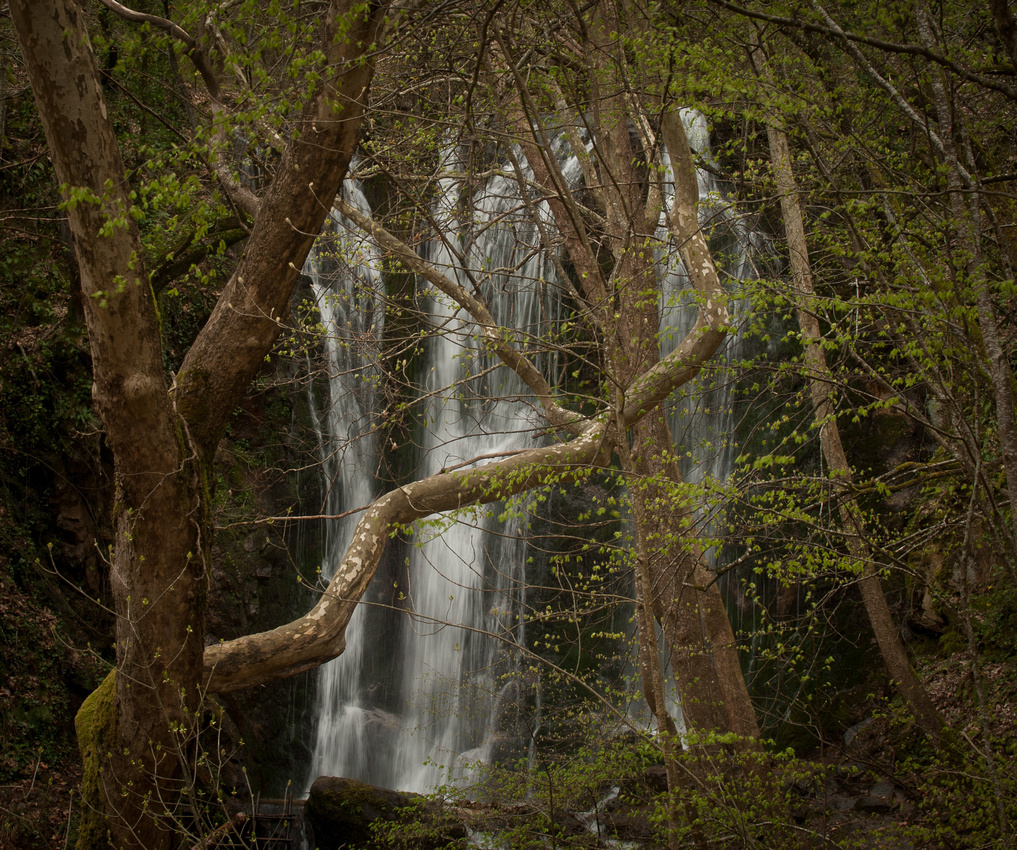


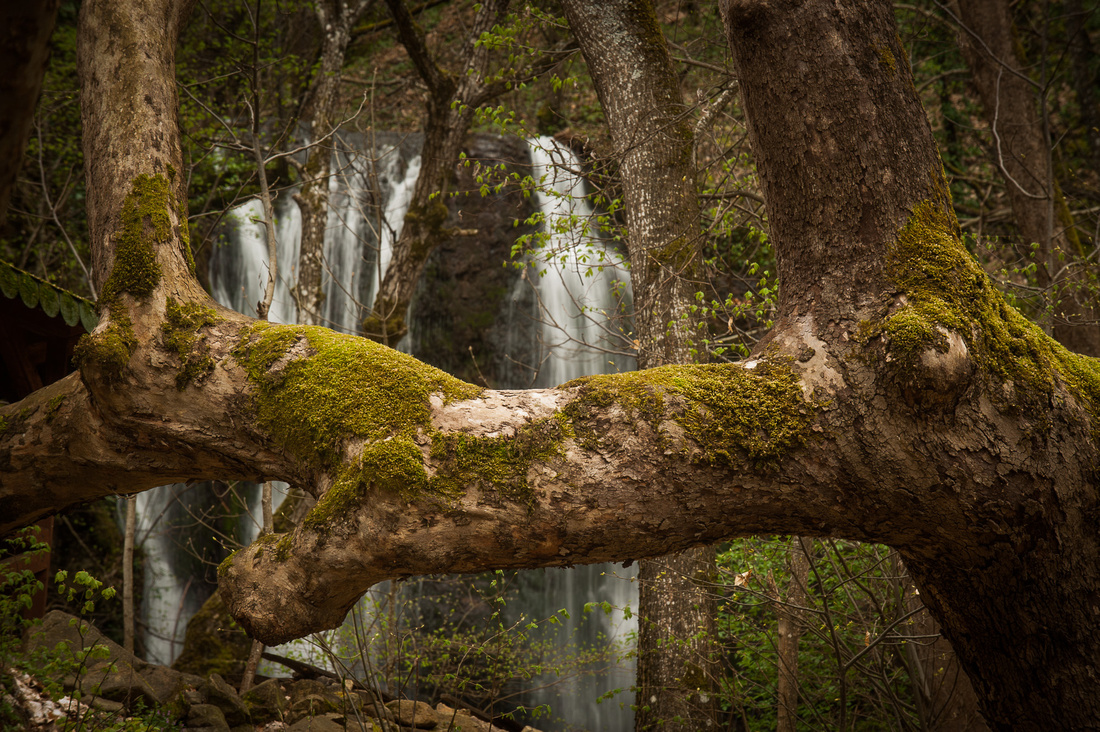
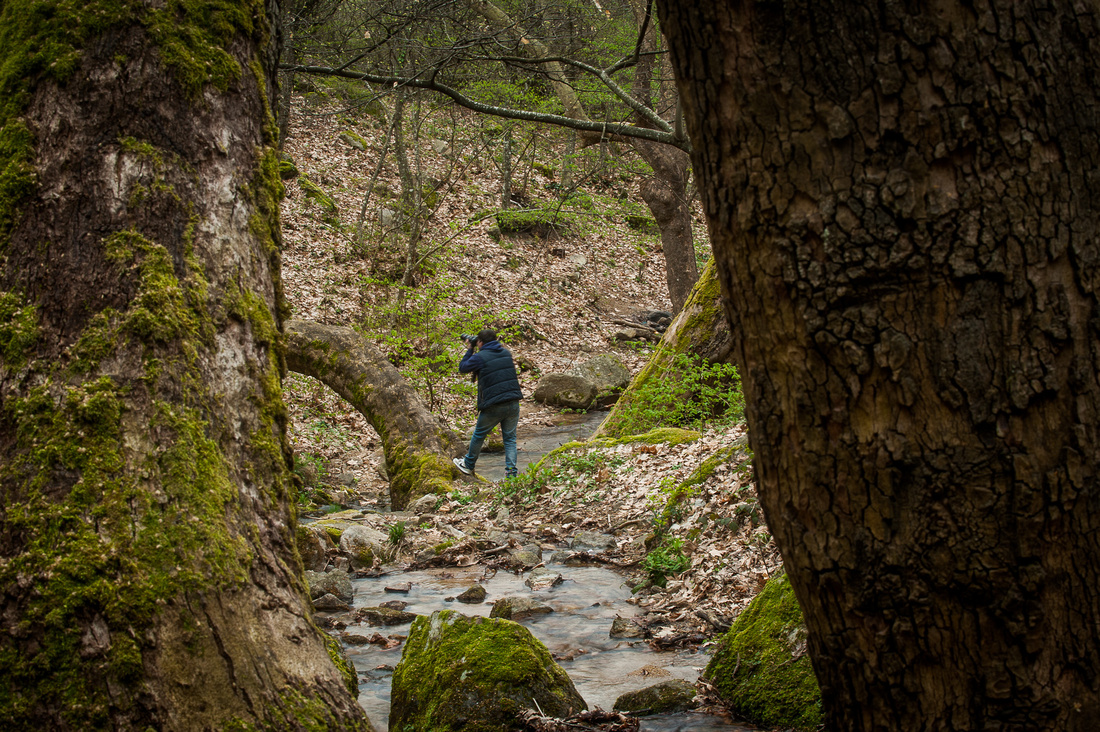
| If the post was rewarding, feel free to share it on any social media. |
|
For buying pictures from the blog or the archive: Contact me at [email protected] Or you may want to hire me for a job? Take a look at my portfolios for corporate, press or wedding job and use the e-mail address above to contact me. I have supported myself as a photographer for over 10 years and has a large selection of archival photographs from northern Sweden and travel. Put the search box to the test! |
]]>
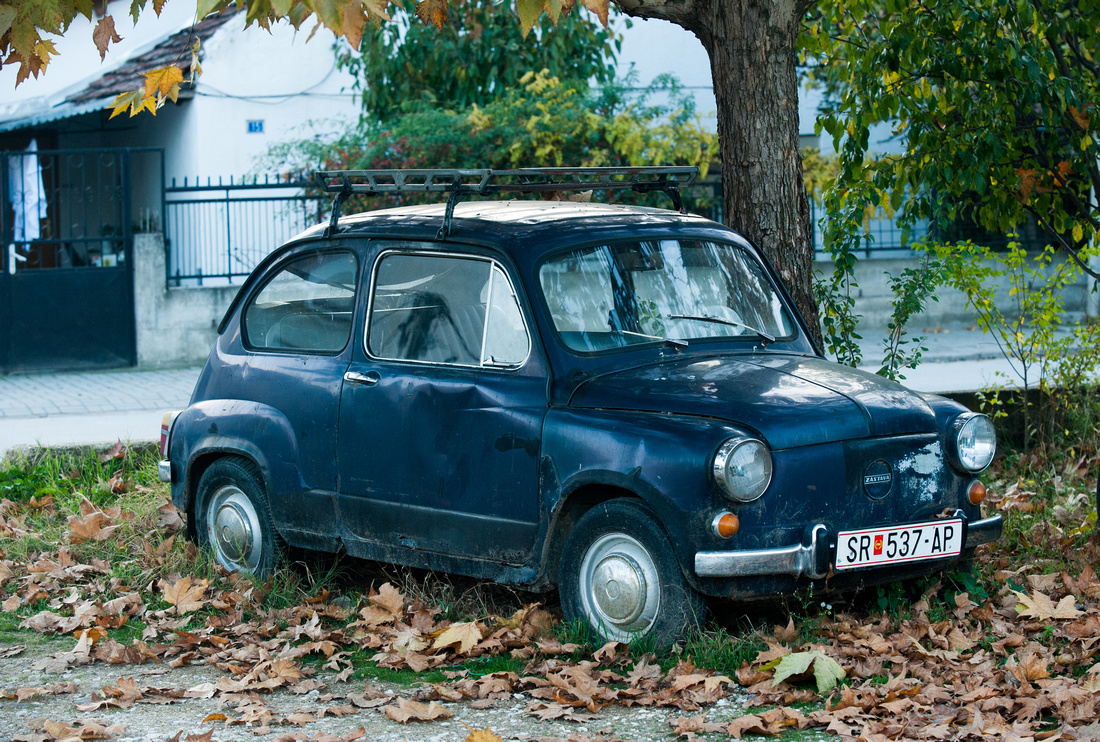
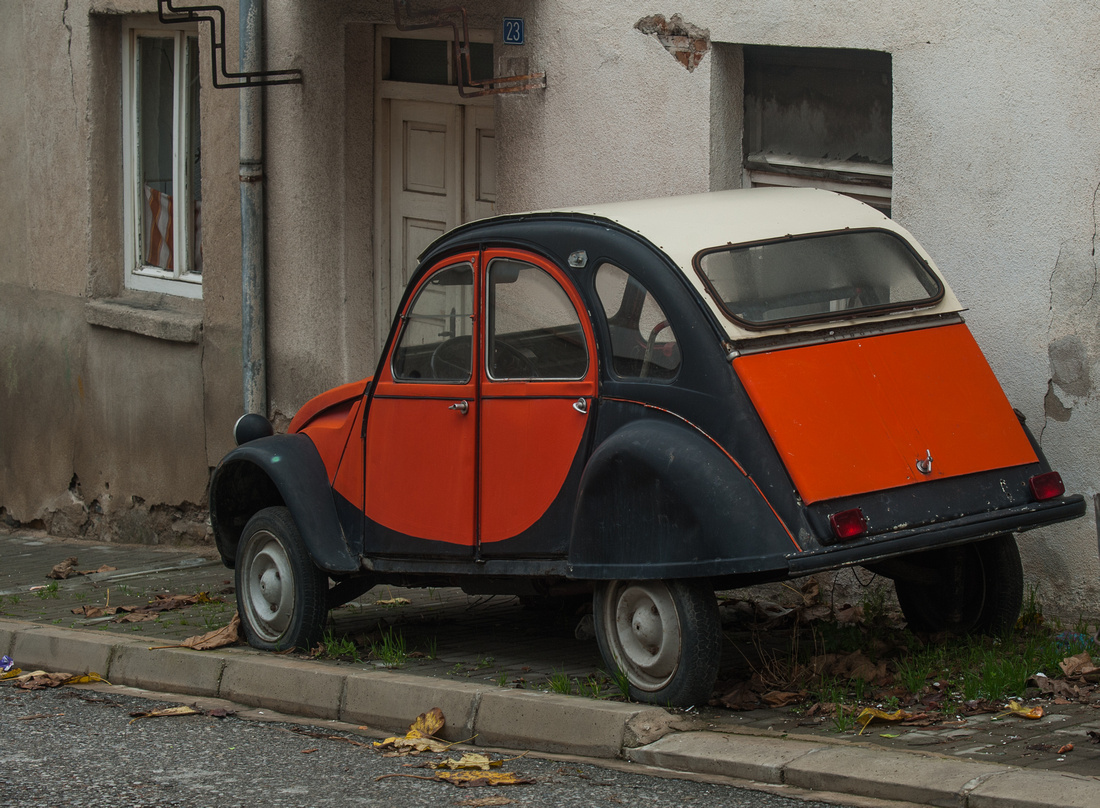
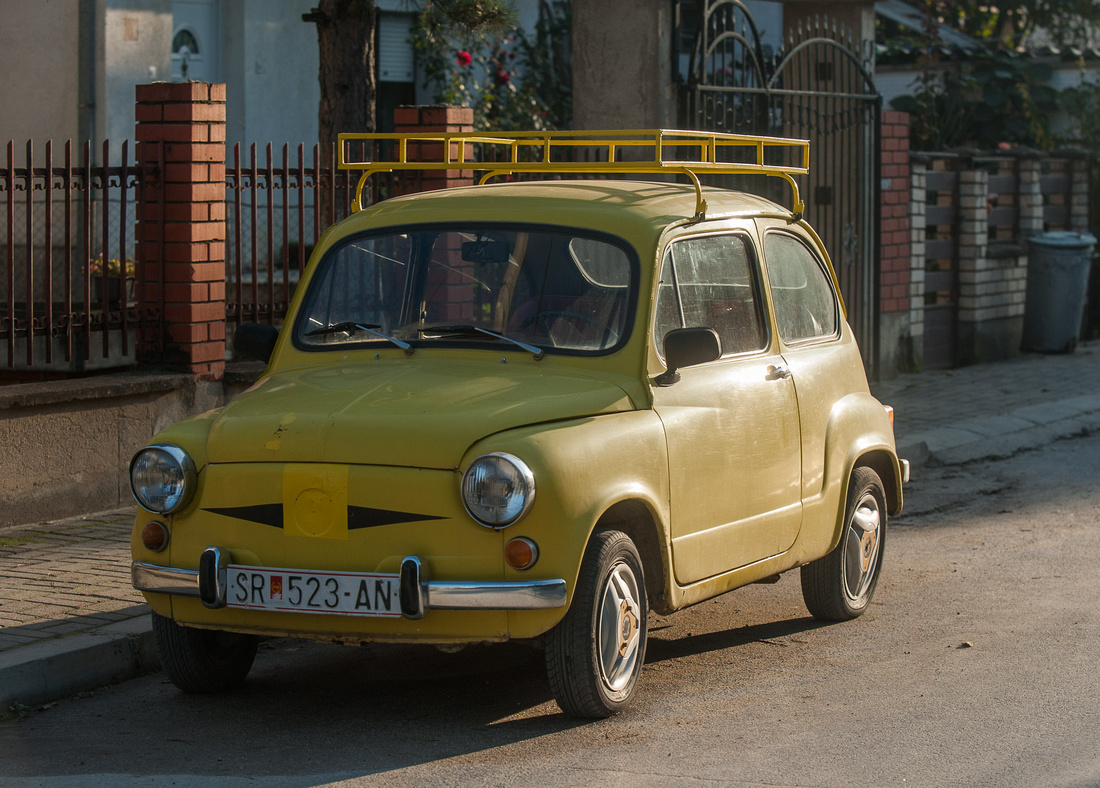
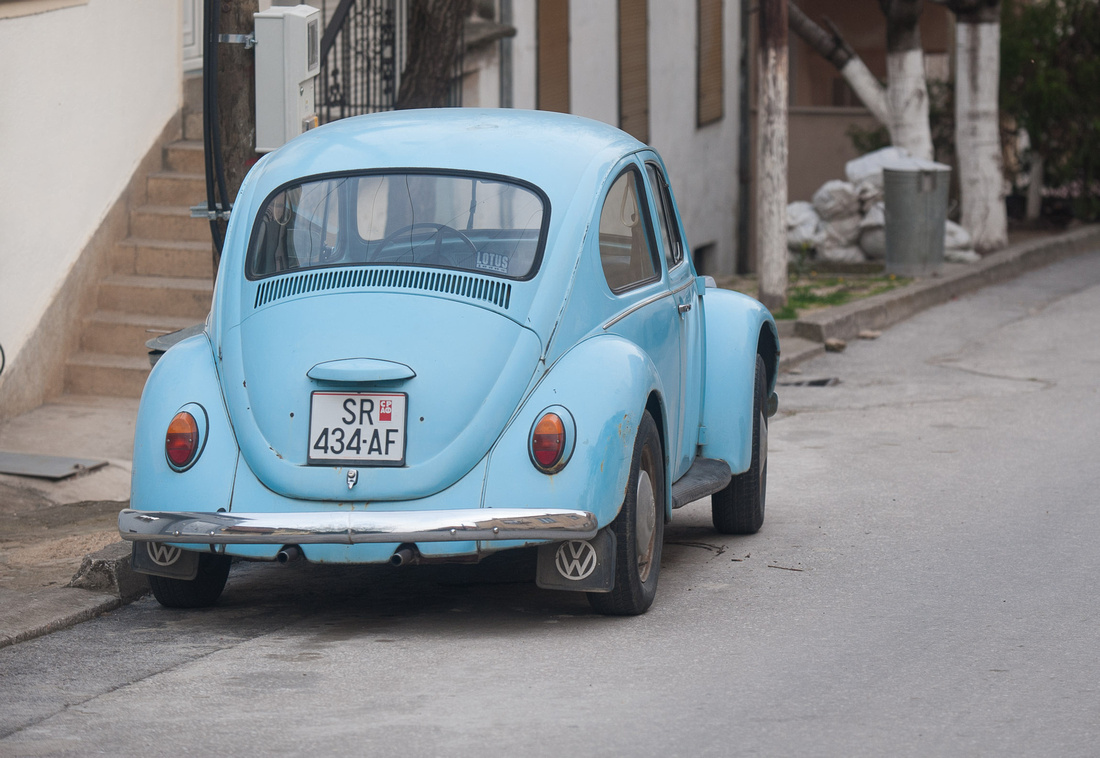
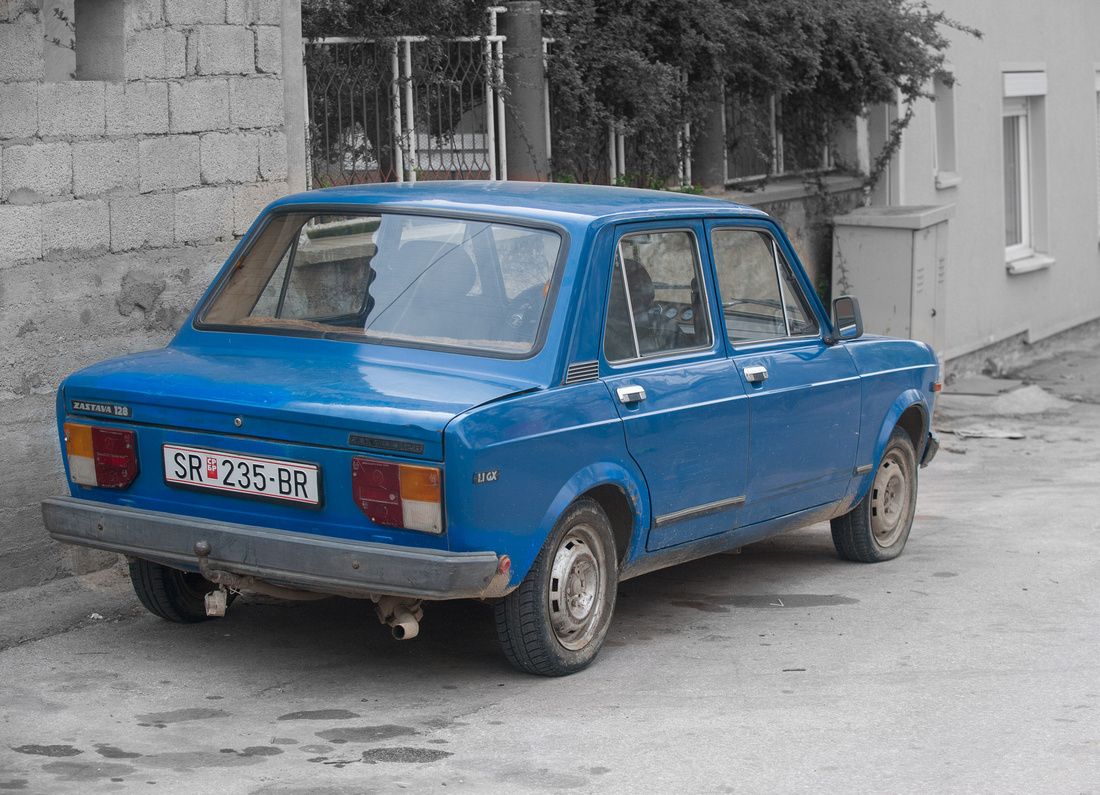
]]>


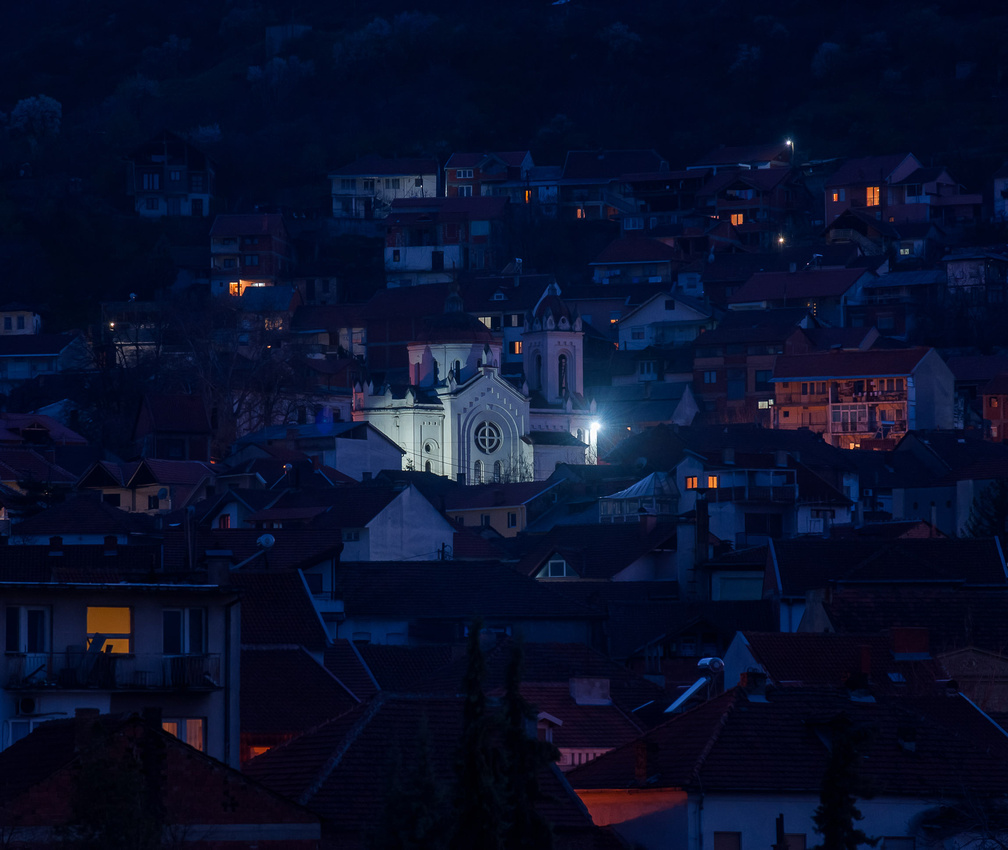
The market place in Strumica teems with life on Saturdays. Clothing/textiles and fruit/veg dominate supply and the prices are very low, propably the lowest in Europe.
I have visited the market quite a few times now, sometimes with camera in hand. But there was something in the air today, with more outreach and networking people than before. Maybe they start to recognize me, or they were just influenced by the fantastic spring weather that just goes on and on here in Strumica. Or was myself more outgoing today? Probably a combination of all three.
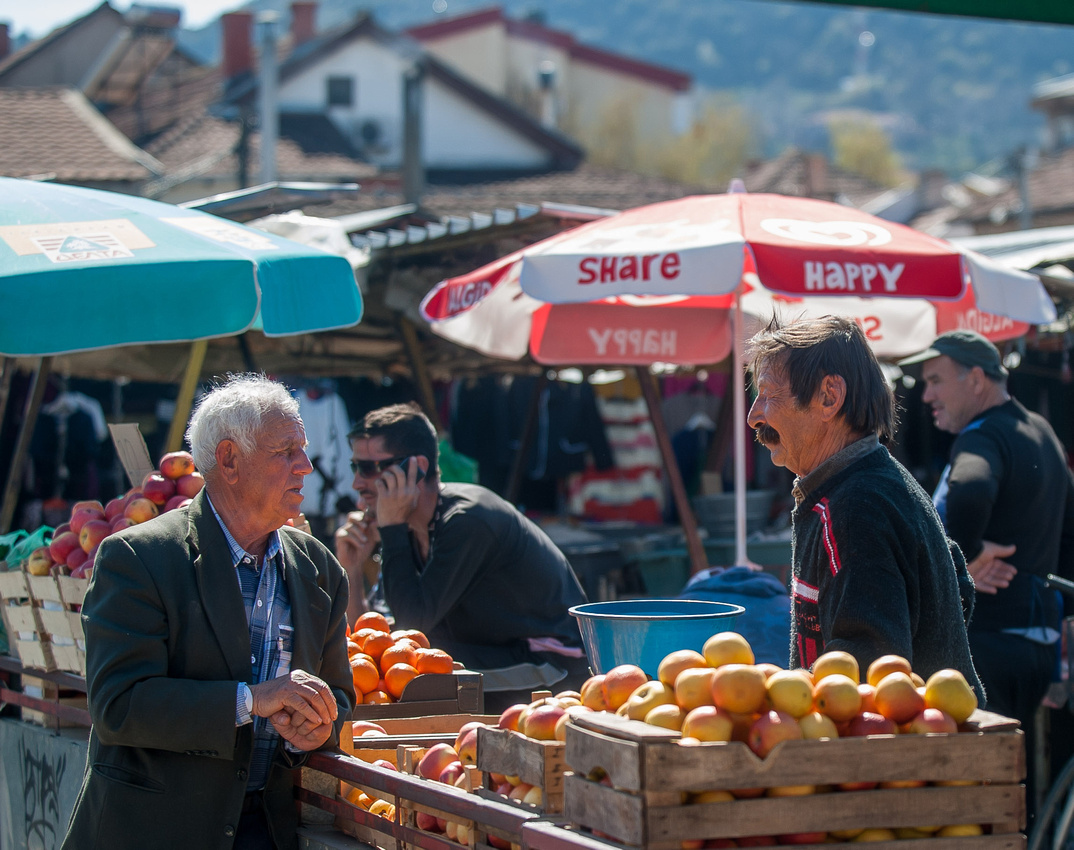

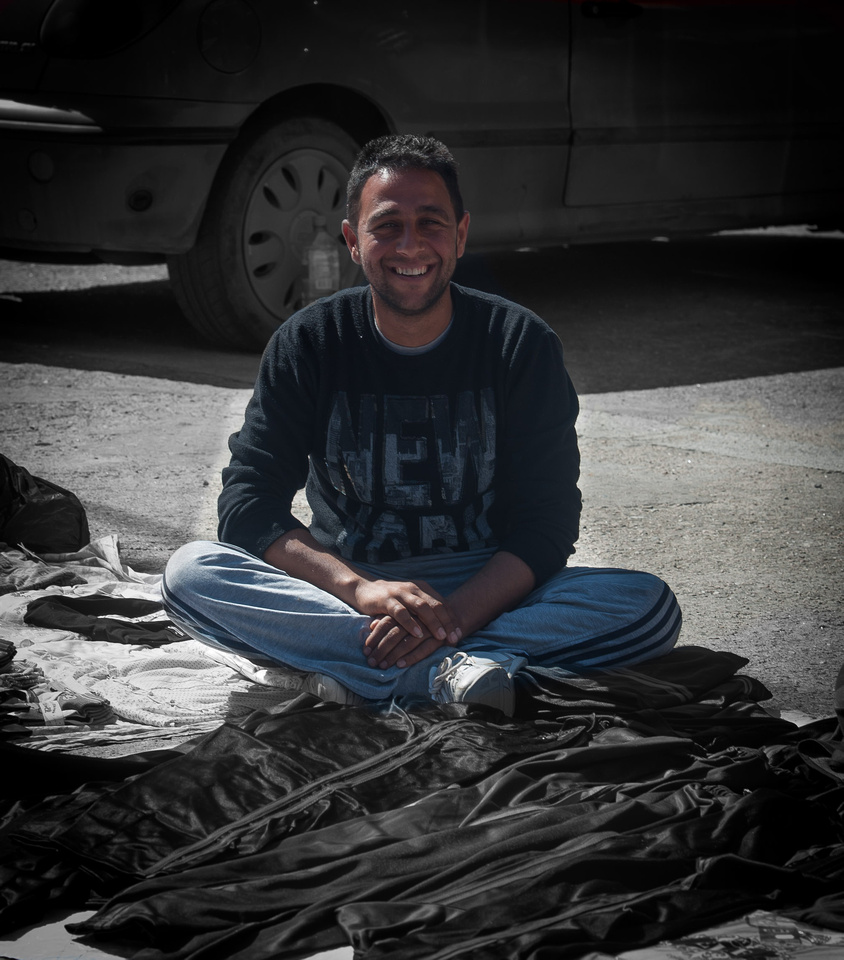


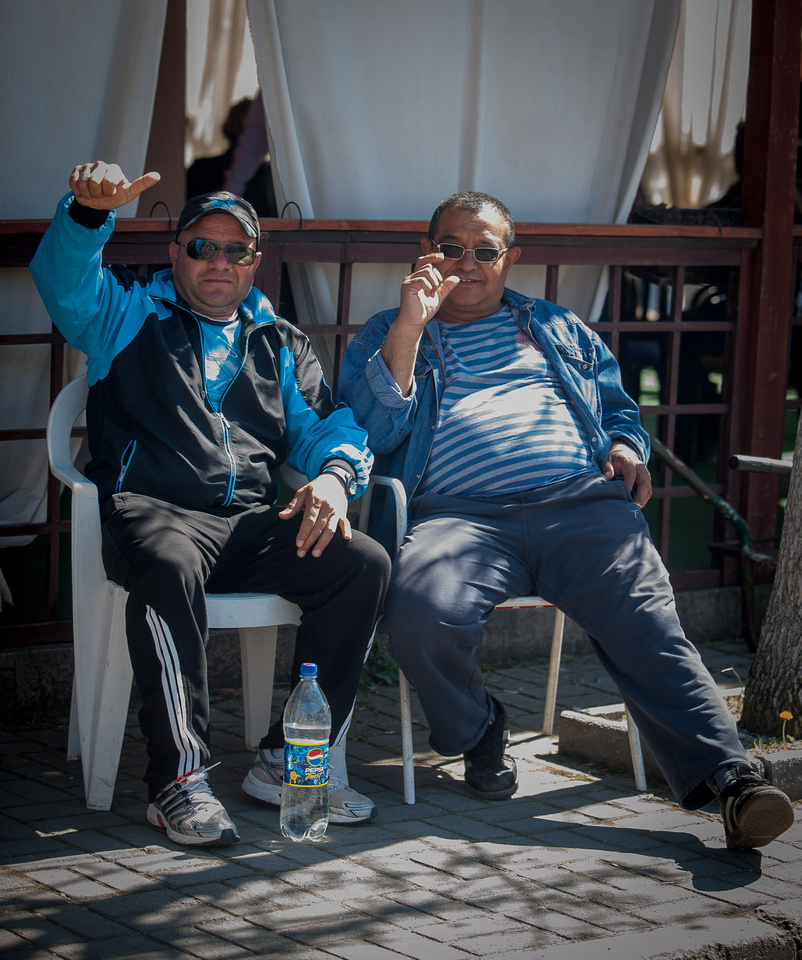
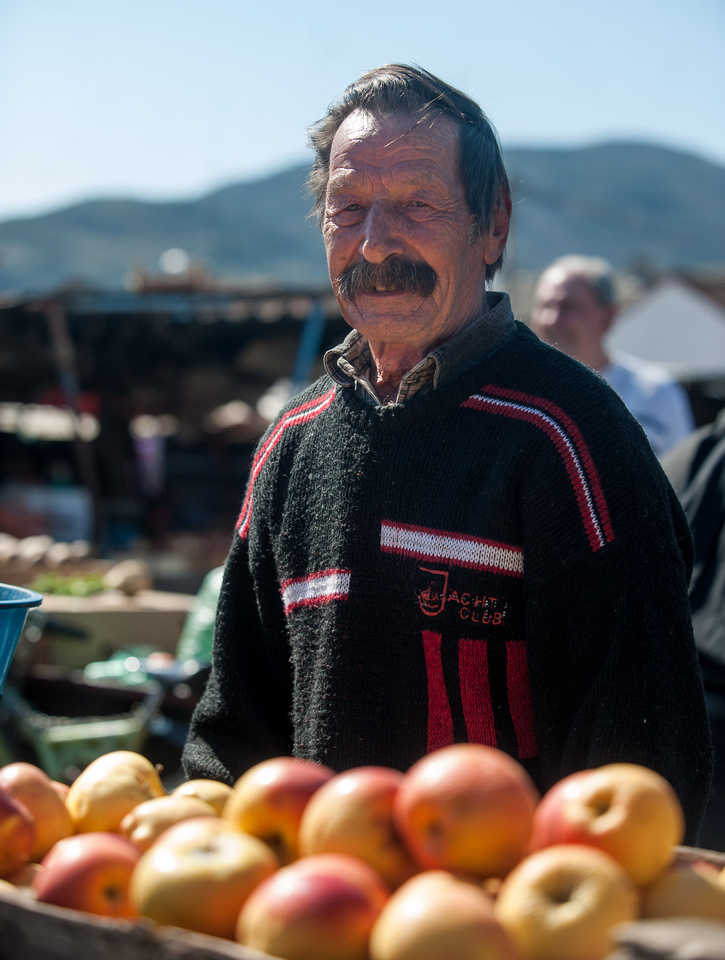
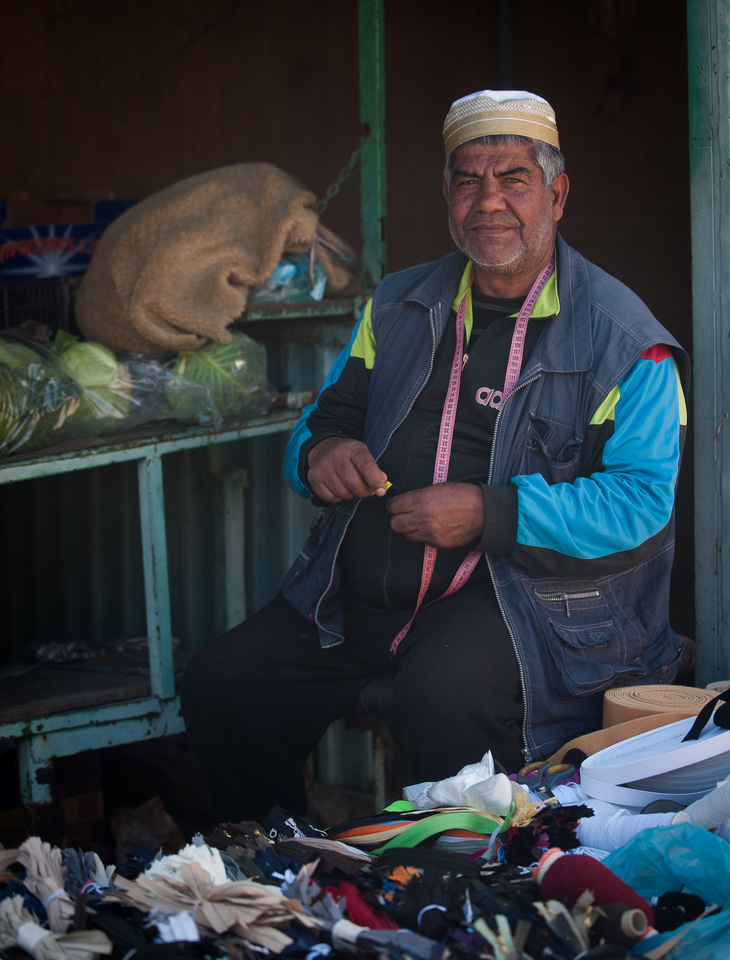
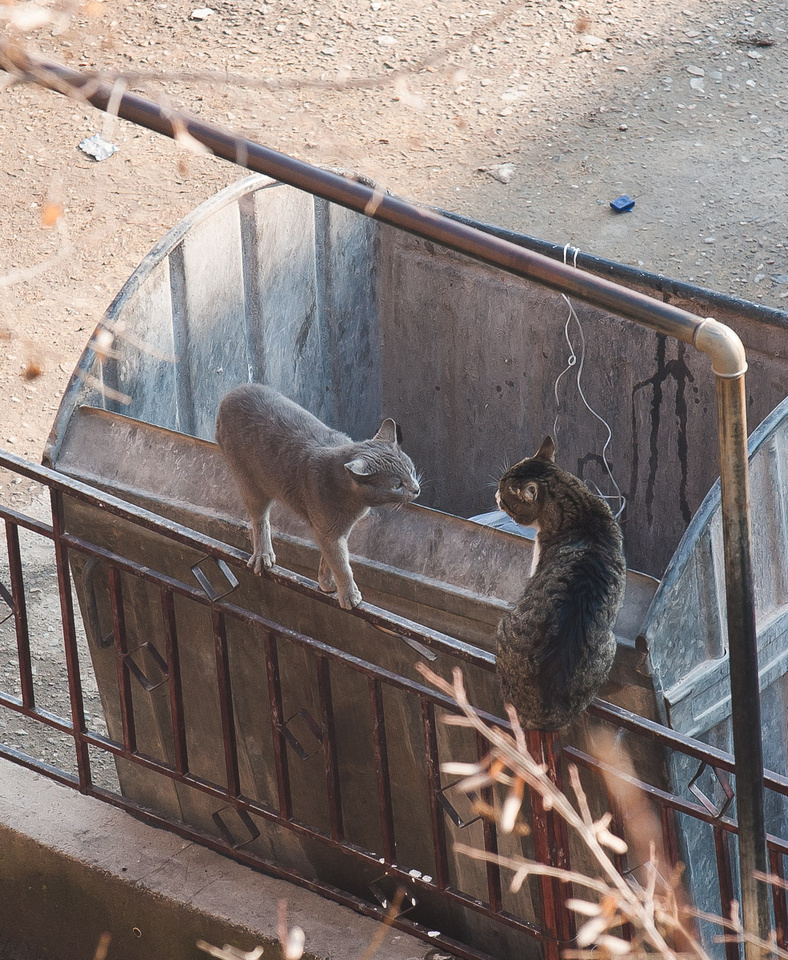
1. Breast piece up and scream the most fearsome chants at each other, for what seemed like an eternity. I had no choice but to wait out the angry ritual and that the conflict will escalate.

2. So finally: the inevitable confrontation is drawing closer, Radovan's already in a very precarious seat. He could hardly stay on the fence for much longer, but he knows it can be fatal to leave it, as the first man.
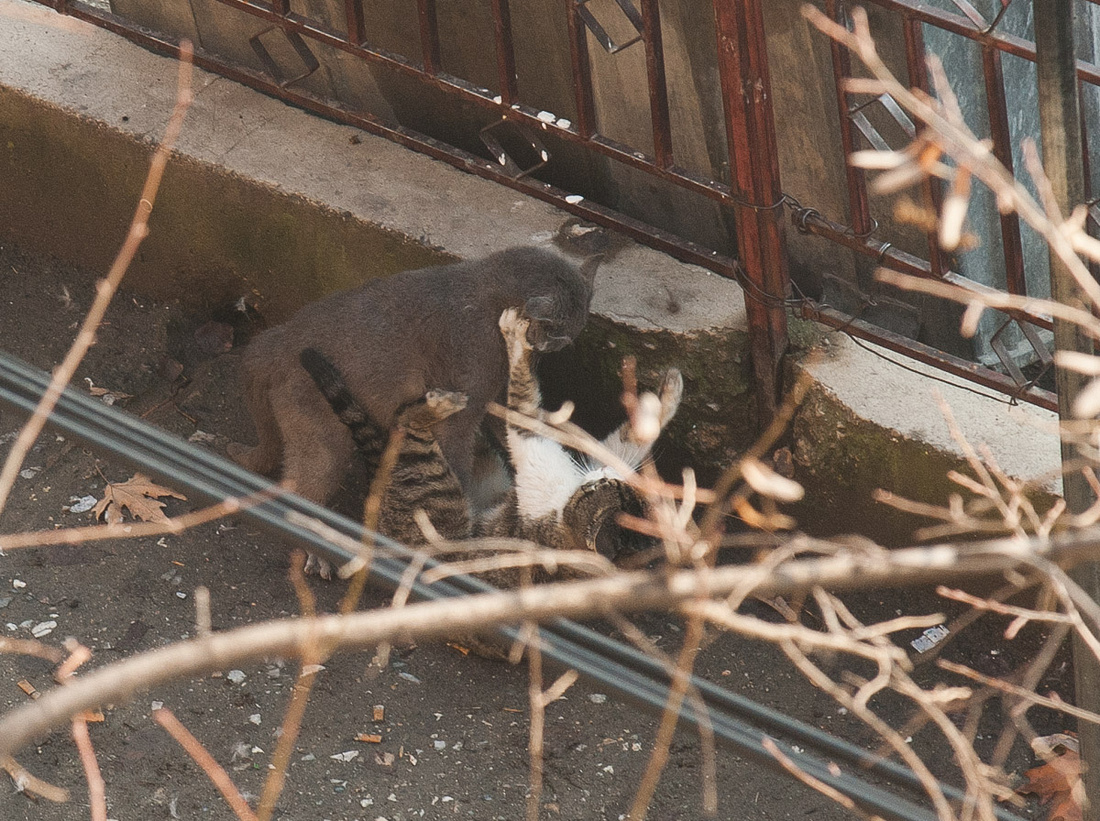
3. Gulev no longer has a choice - he has to get on the ground. Just as he constantly feared, he gets his adrenaline tinne enemy over him, like a hail storm in October.

4.The air is filled with horrific screams, when the " General" allows its sharp teeth and claws to cut through the enemys skin and tissues, he is both stronger, faster and smarter. No gongong can save Gulev.
 5. Wrestling lever, boxes blow,Thai boxing, you name it.
5. Wrestling lever, boxes blow,Thai boxing, you name it.
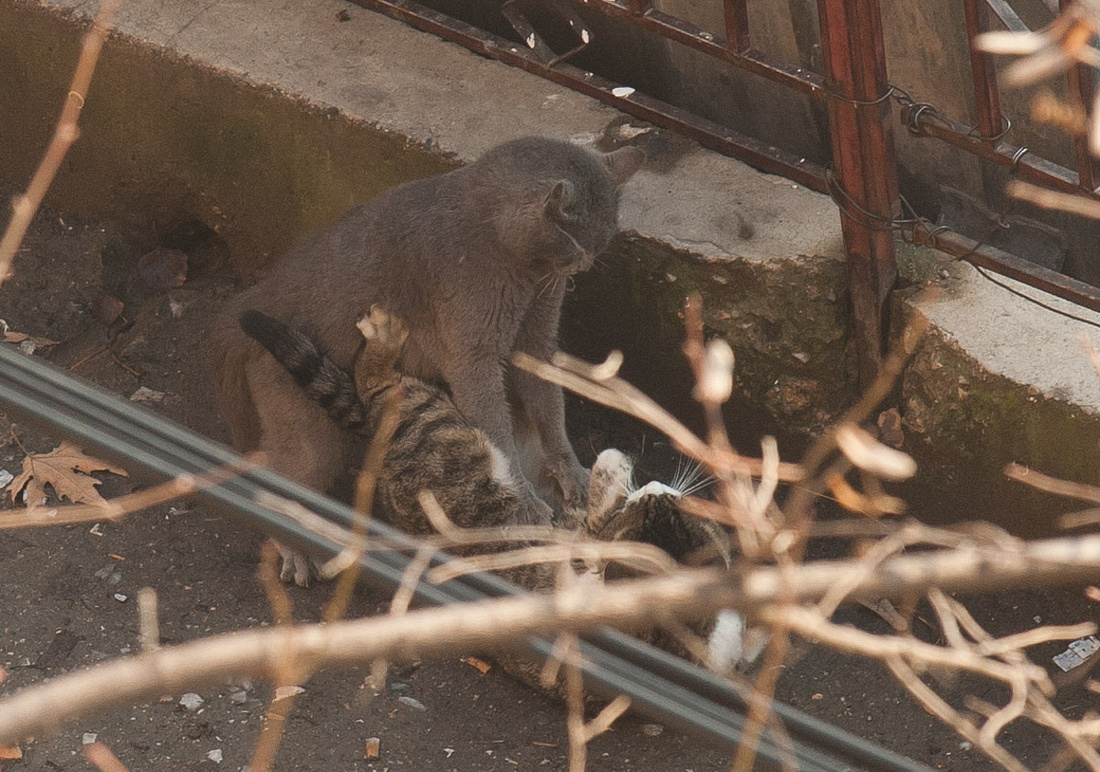
6. ...even throttling.
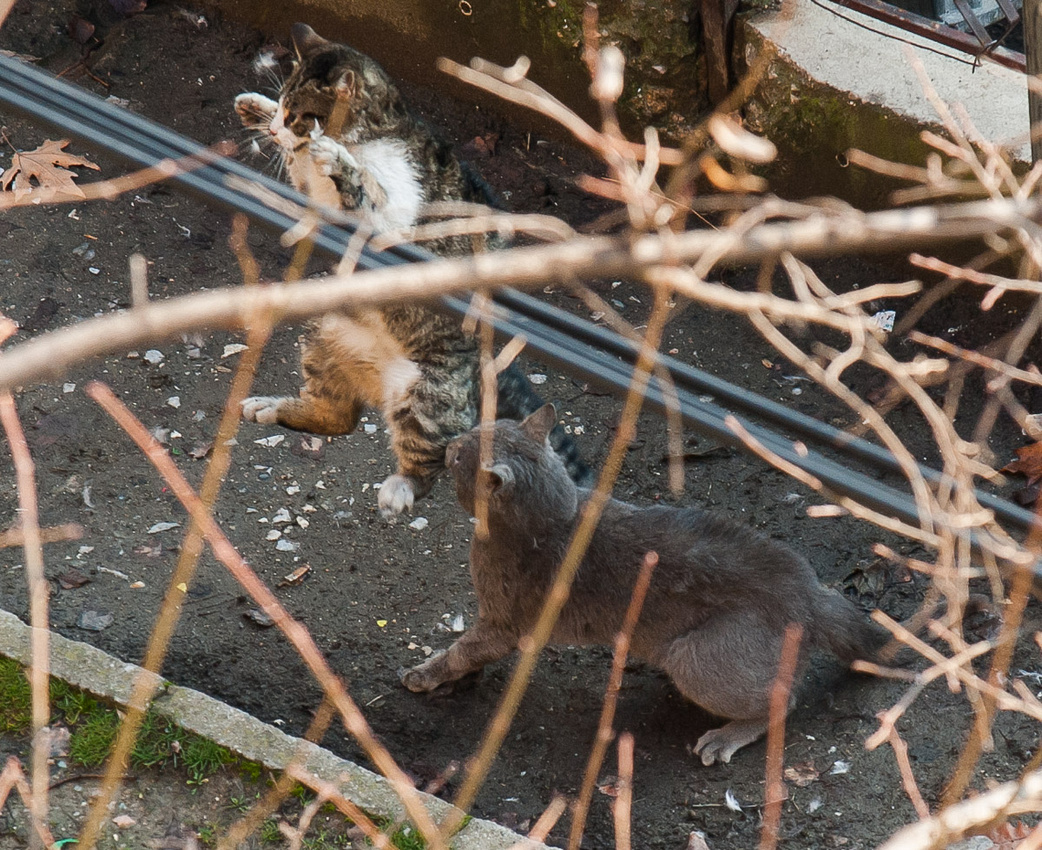
7. The frightened and wounded Gulev receives the bite that finally seal the outcome.
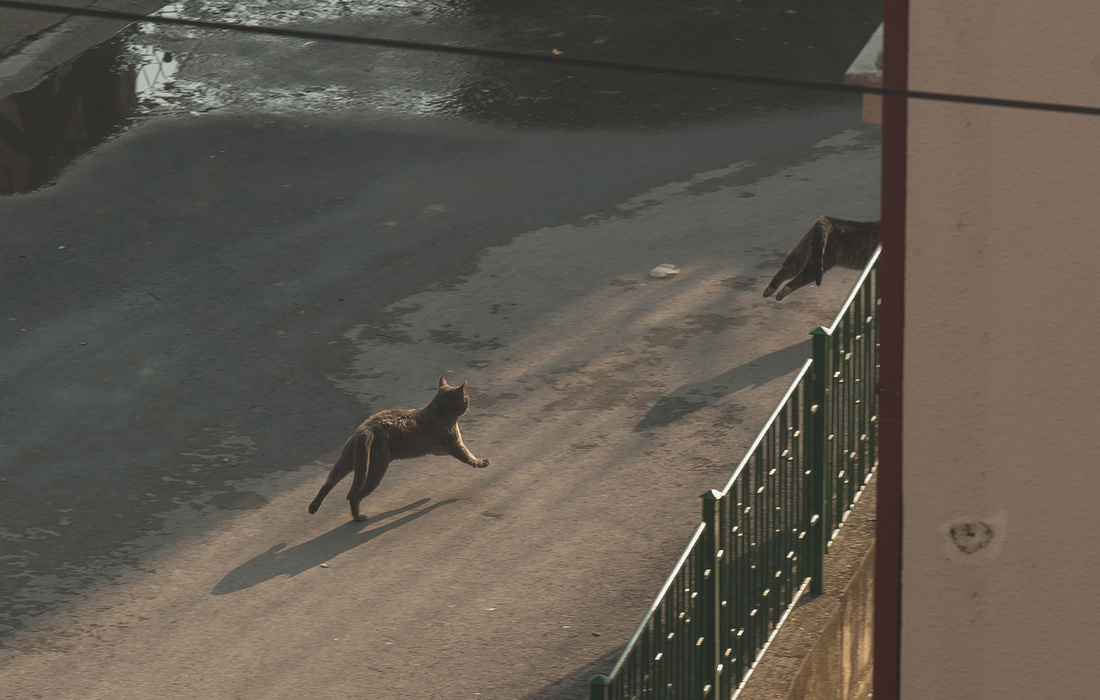
8. Gulevs reptile brain has taken control: run, run, survive!! The garbage can battle ends here, and so does the story.
]]>
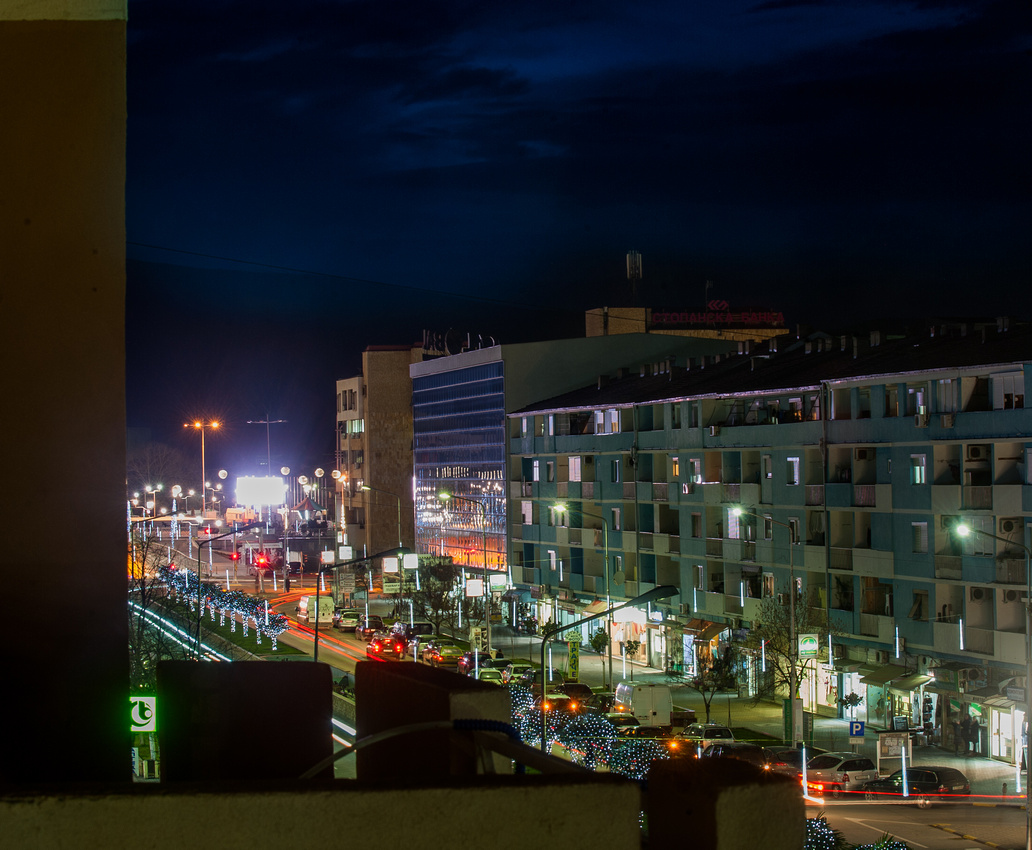
The main street Bulevar Marsal Tito, a winter evening 2014

One of the many streets that climb up along the town´s hill
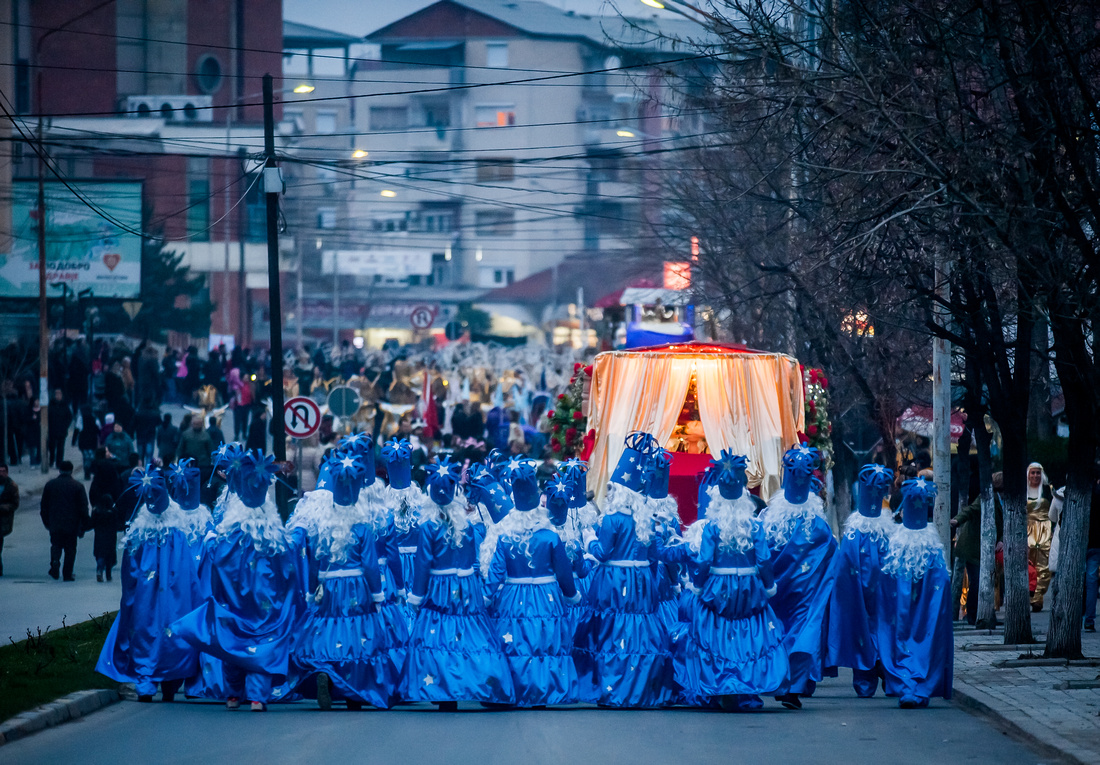
Carnival along the streets, one evening in early March
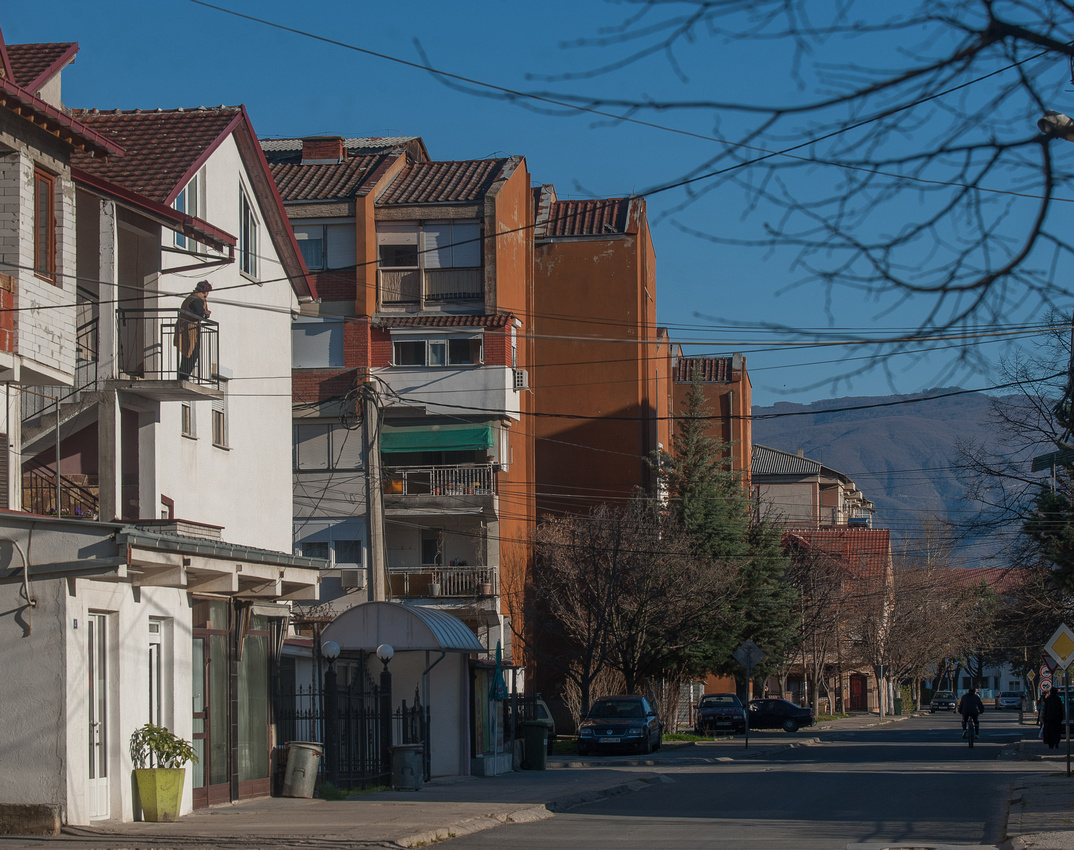
The town is surrounded by mountains and there are plenty of quiet streets, the traffic is usually not so intense.
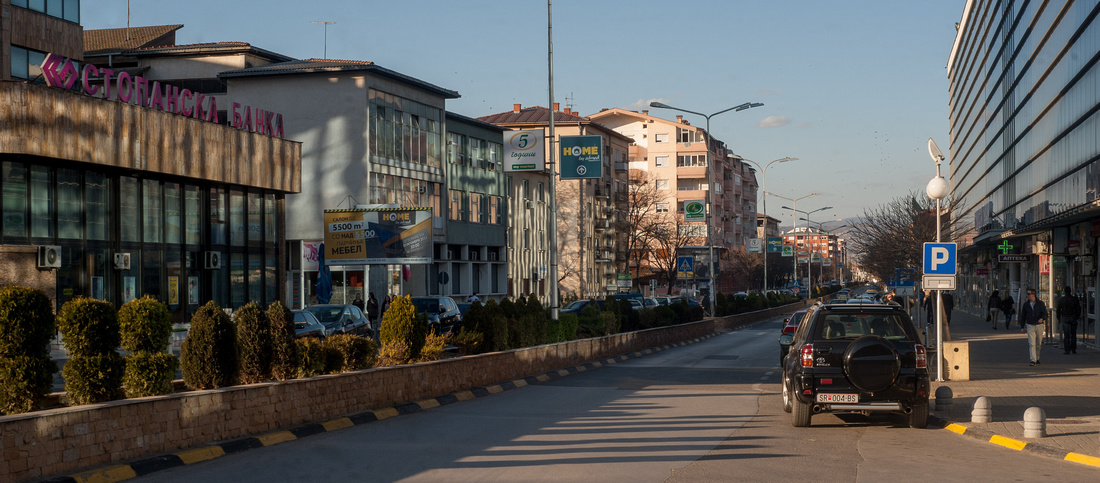
The large mall Globals glass facades, throwing millions of reflections on the buildings along "Leninova".
]]>
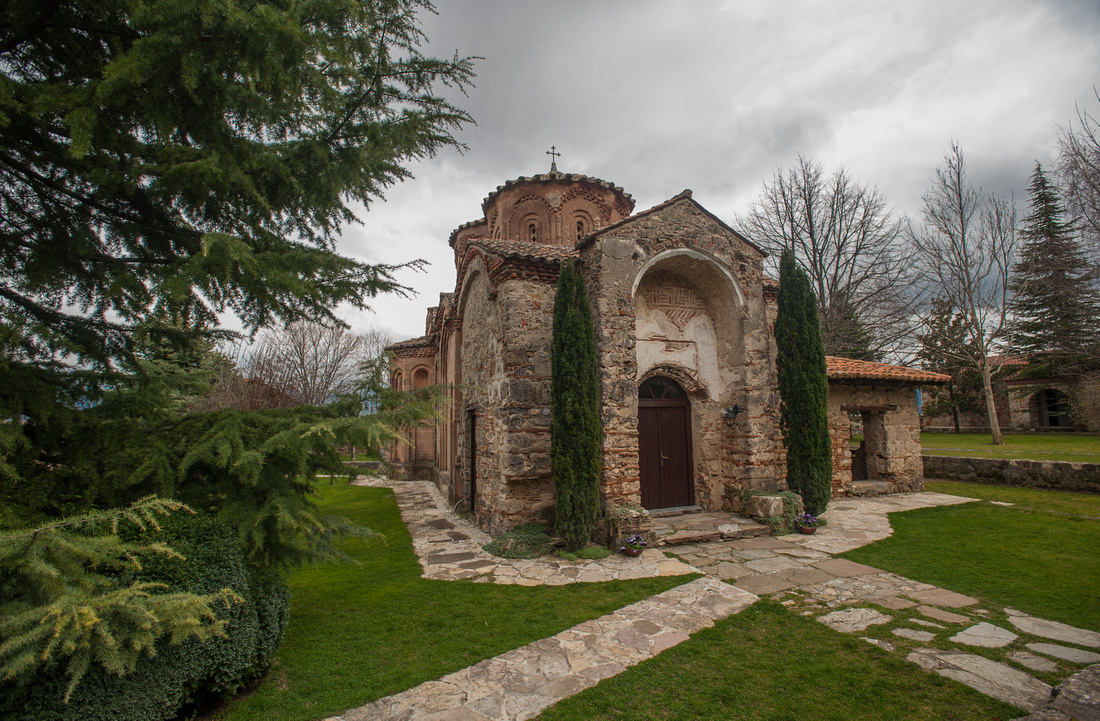
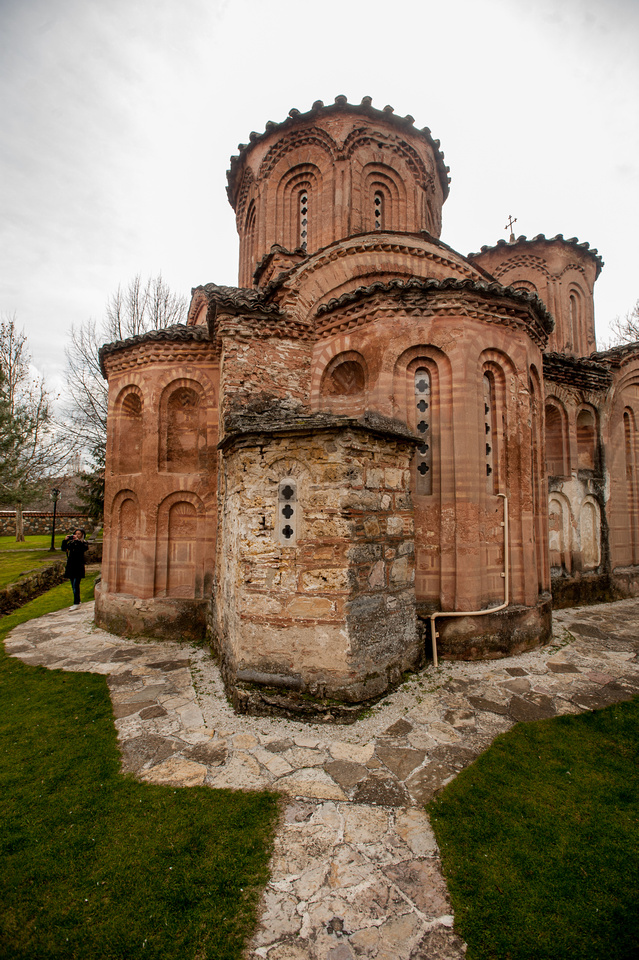
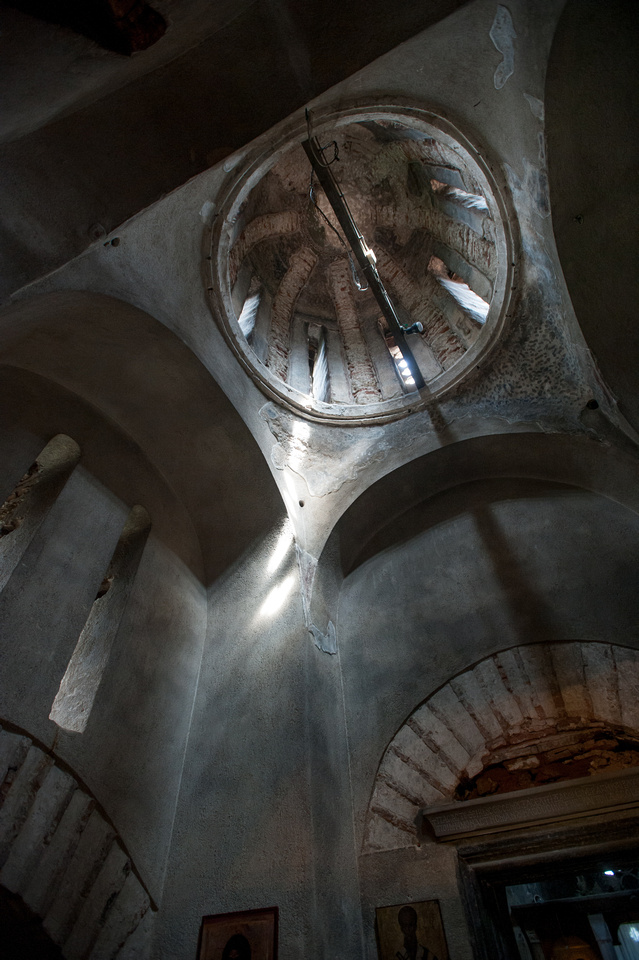
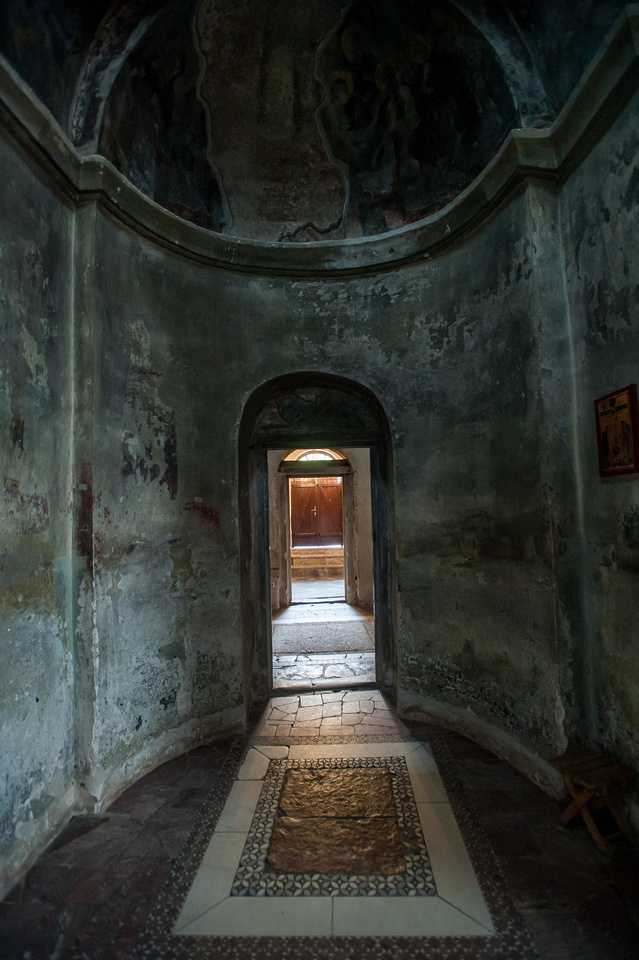
|
Share? If you liked the post, feel free to comment it here, or share it, using buttons above. Buying a picture? [email protected] From the blog or from the archive? Put the searchbox to a test, to find your picture! Hire me for a job? 11 years in the business. Wedding- corporation, report photography and more. |

This one is from the village Veljusa outside Strumica and the rest from the citypark in Strumica, this week.

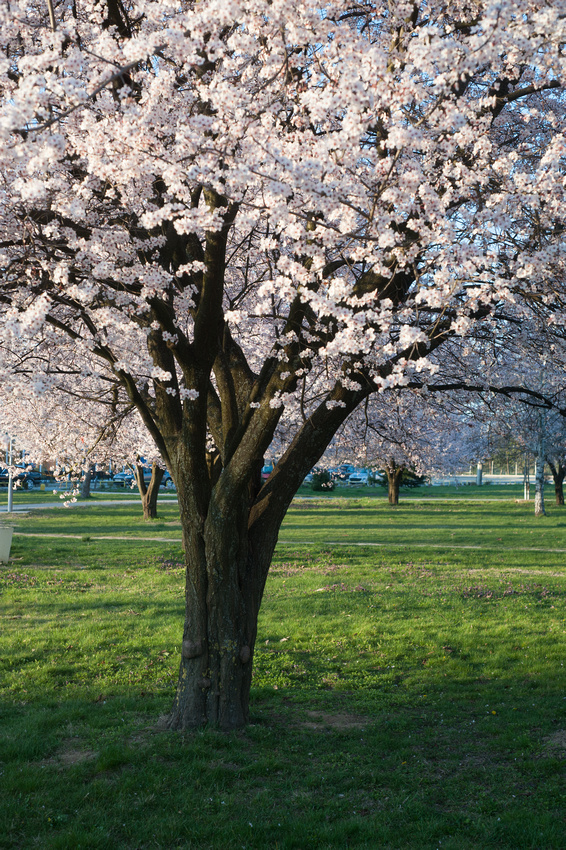

|
Share? If you liked the post, feel free to comment it here, or share it, using buttons above. Buying a picture? [email protected] From the blog or from the archive? Put the searchbox to a test, to find your picture! Hire me for a job? 11 years in the business. Wedding- corporation, report photography and more. |
]]>
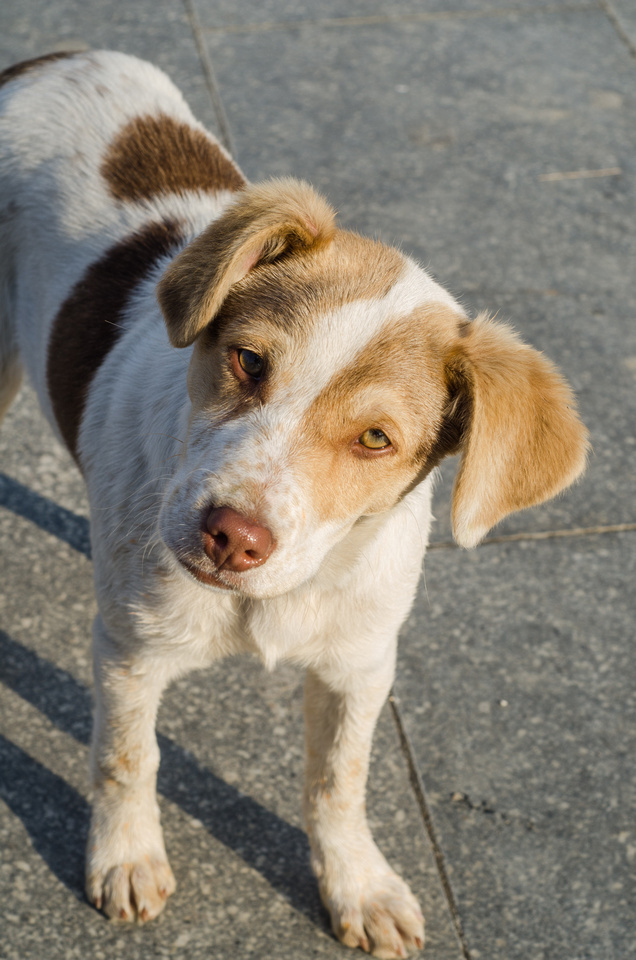
Do you hear me? No, no, no! This is my lunch, and I need it!

Stop looking at me like that!
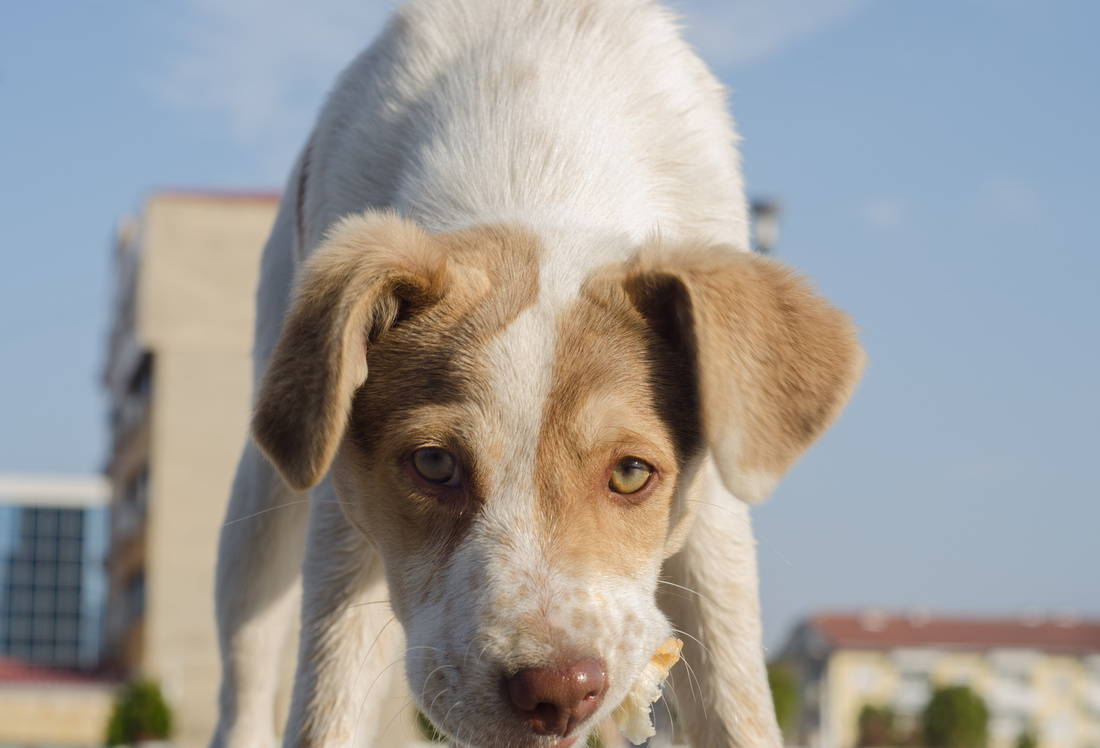
Alright, alright I can buy another one for me.
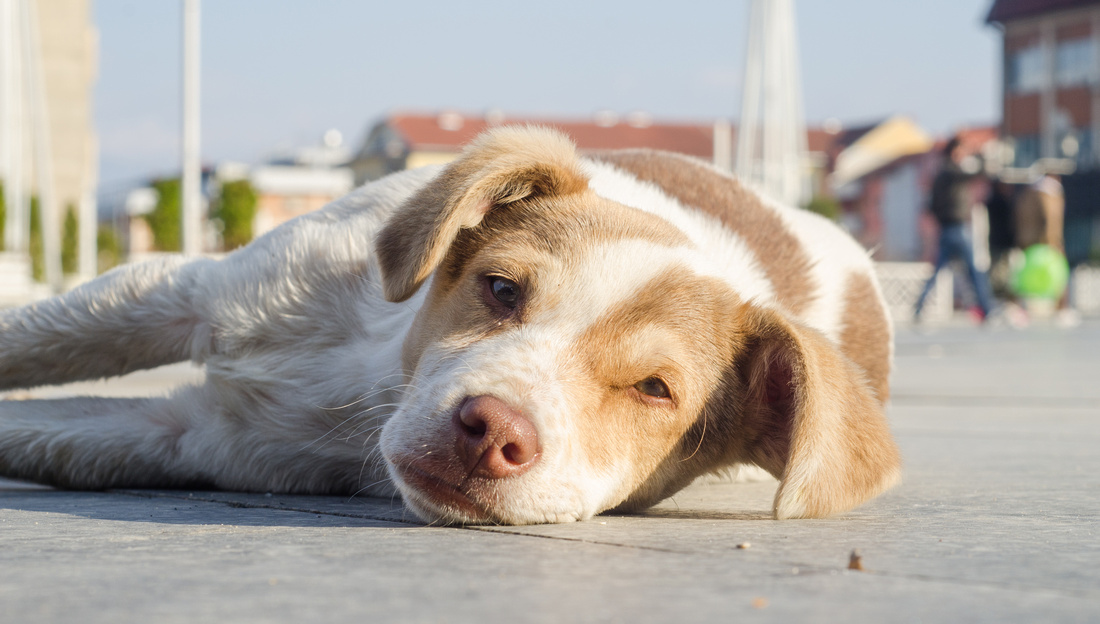
Full and satisfied, without shame.
]]>
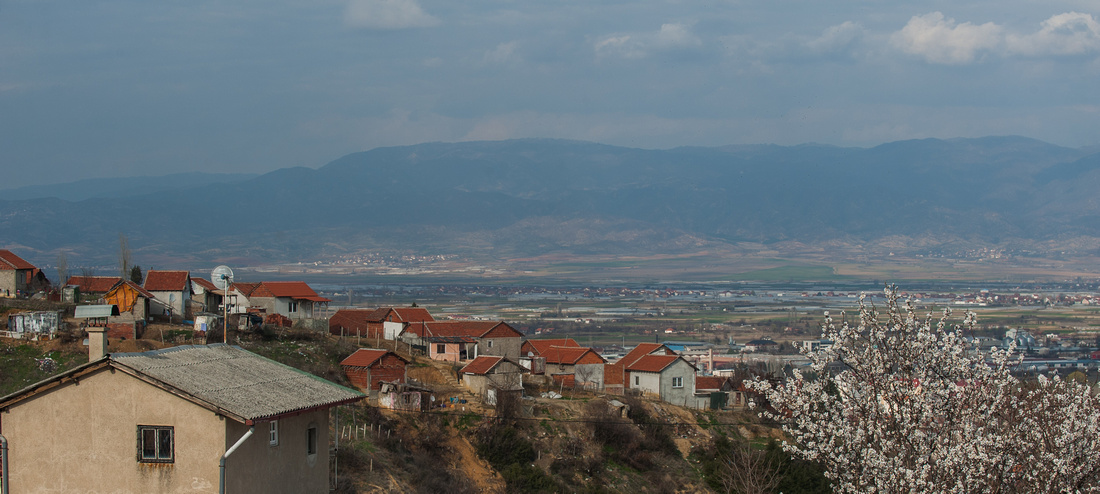
The residents I spoked to here in Strumica, has consistently in recent weeks, claimed that the spring has not yet begun. This image with the blossoming tree was, for an example, taken several weeks ago. The reason is that temperates, in their opinion, been too low (around 10 degrees). But then since yesterday, we have very warm spring air and sun, so warm that not only a person from north Sweden would call it spring. The temperatures is expected to remain so for several days. More spring pictures (and statements) coming up soon.
]]>
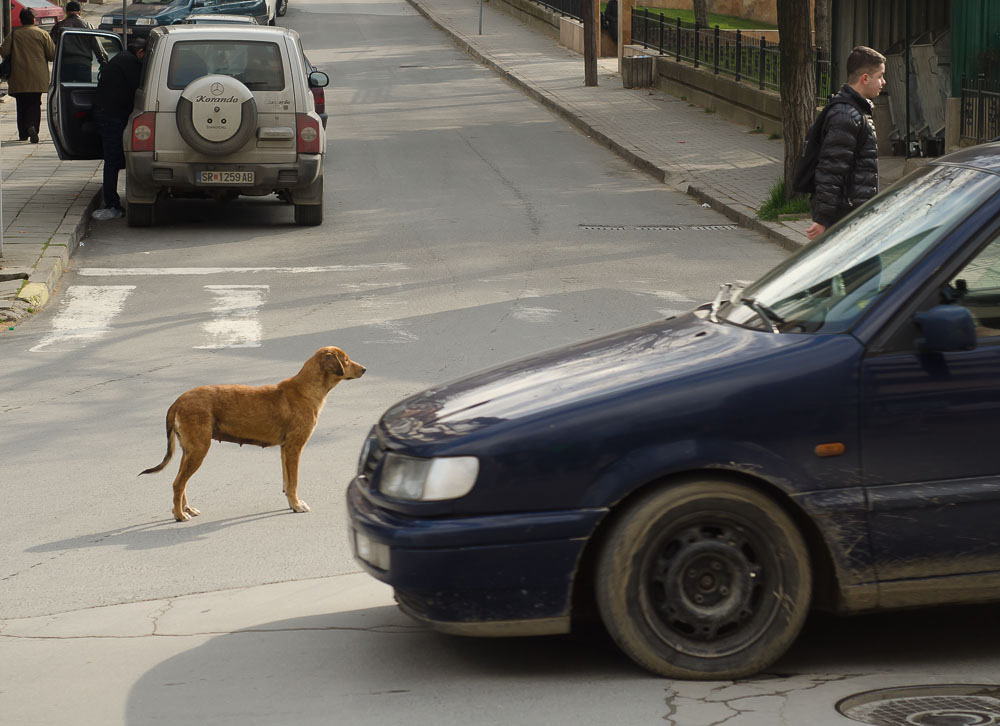
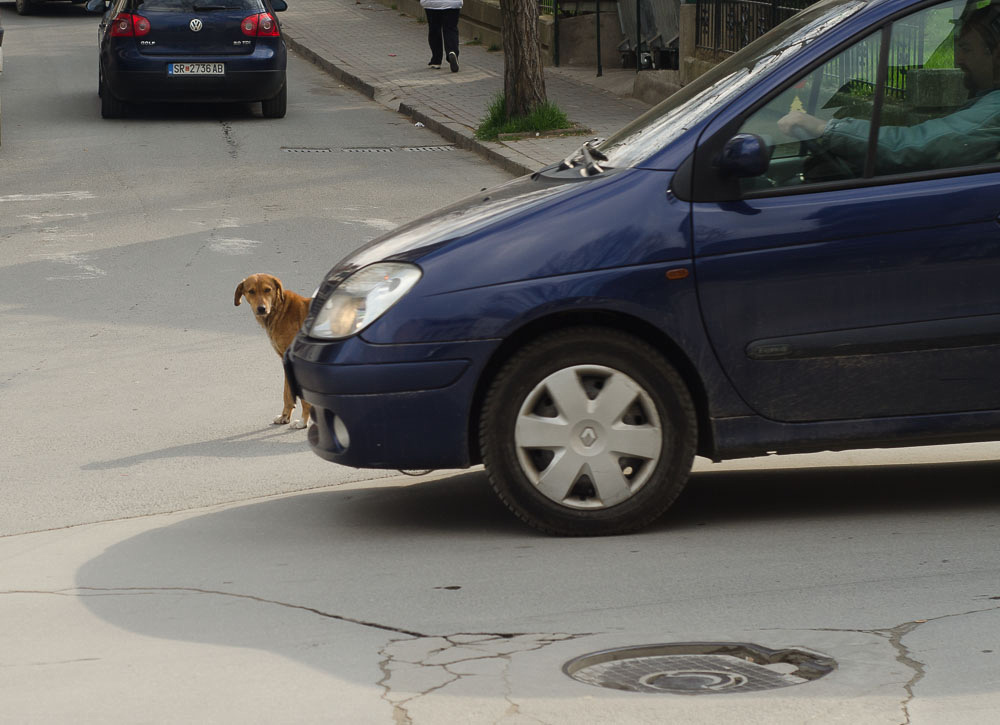
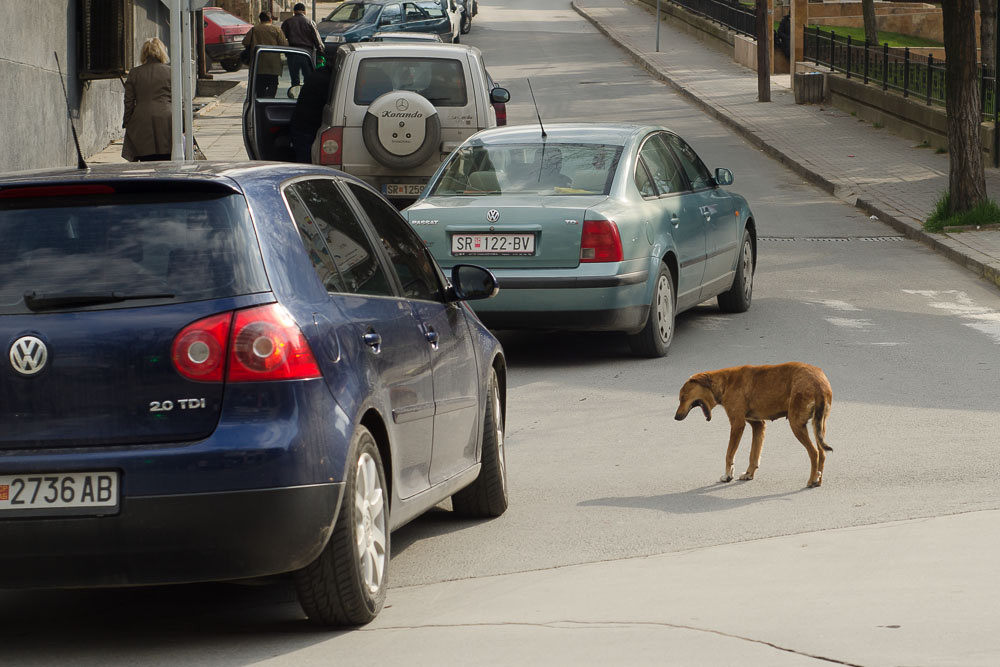
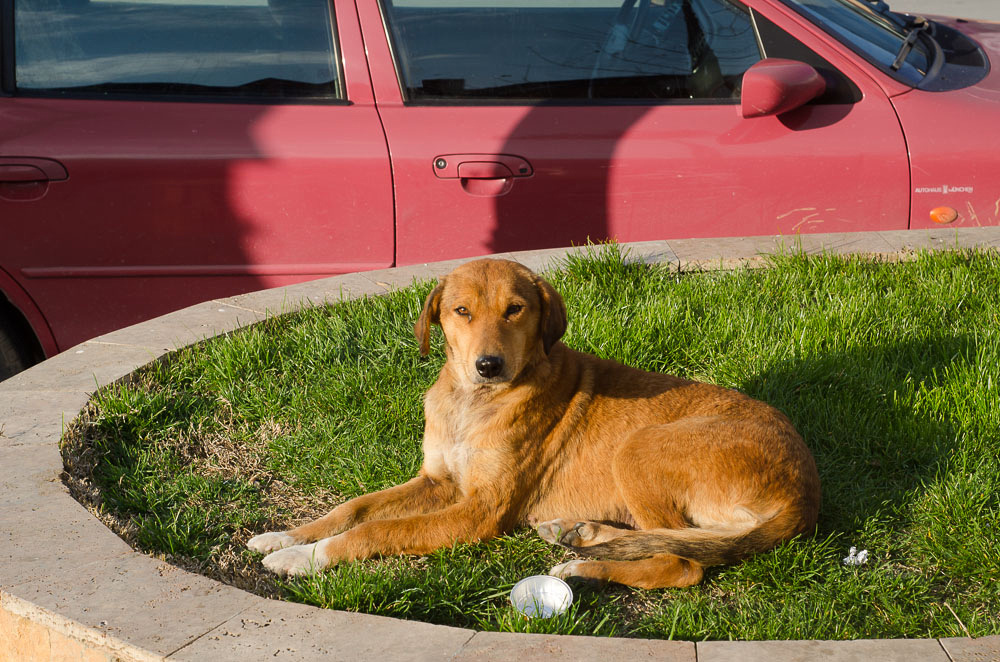
Later same day: I am happy she survived at least the day.
]]>
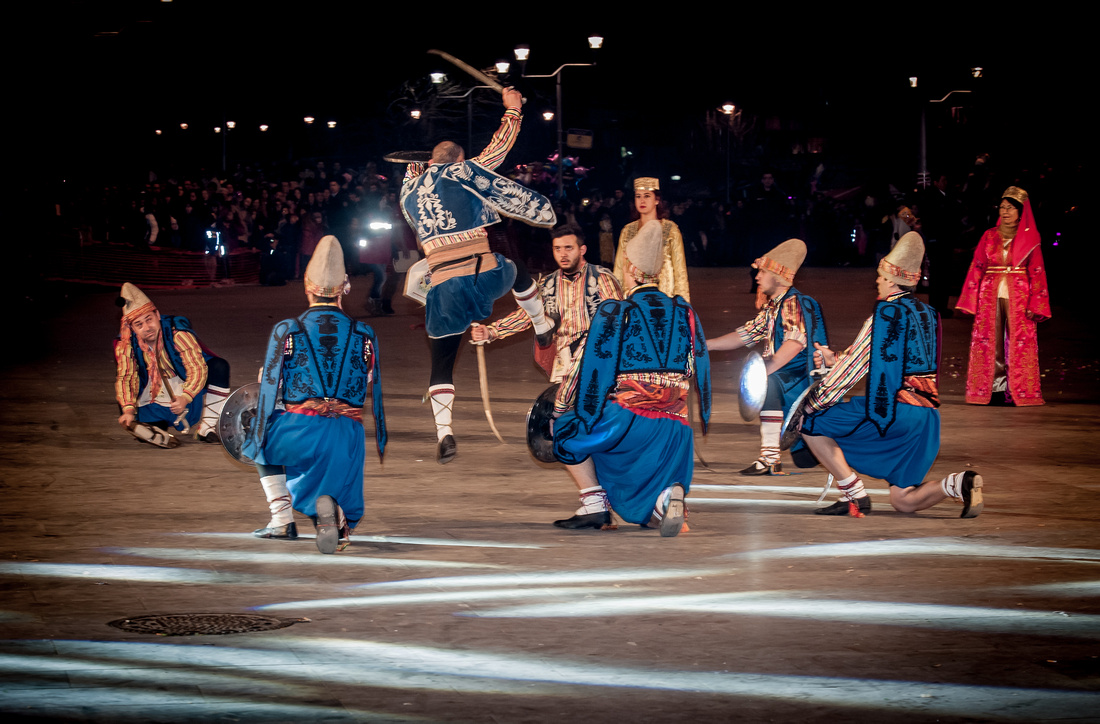
]]>
